

25 Road Trip Hacks when Traveling with Dogs in Cars
Road trips are one of the easiest and funnest ways to travel. Plus, they’re a great option for dog owners, since dogs of all shapes and sizes can ride in a car. Whether your trip is hours long or days long, there are things you can do to make life on the road a little bit easier for both you and your dog. Check out these 25 road trip hacks for when you’re riding with your dog.
Article Contents
1. Get Astroturf

If you’re traveling with dogs, and you want to protect your car from hair and dirt, consider Astroturf.
Astroturf is a synthetic material that looks like fake grass. It’s usually found on sports fields or walkways.
But it works great for dogs and cars too! Purchase a cheap roll of Astroturf at your local hardware store, measure your space, and cut it to fit.
The Astroturf provides your dogs with something to grip on, so they won’t slide around in the back. It’s great for traction, and it’s easy to put on and remove.
It’ll also catch all the debris – like dirt, fur or gravel – that your dog will inevitably track in. It’s just a matter of shaking it off to clean it, or giving it a quick spray of water. And remember, it’s a synthetic material, so it’ll dry super quick.
Get Astroturf here .
Bonus: if you’re into messy outdoor activities – hiking, camping, going to the beach, etc. – it’ll be great for you and your gear too!
2. Use a spill-proof bowl

You have to stay hydrated while on the road.
Ideally, you’ll want to stop for water breaks, and drink al fresco. But if you’re staying in the car, either due to time constraints, bad weather, or because it’s dark out, you’ll want to serve up that fresh H2O in a spill proof bowl.
Spill proof bowls ensure your dog won’t get water everywhere or drench your car in dog drool.
Keep one on hand for mess free feedings, so your dog stays hydrated while your car stays clean.
Get the no spill bowl here .
3. Keep all your dog’s important documents in a waterproof, sealable Ziploc bag
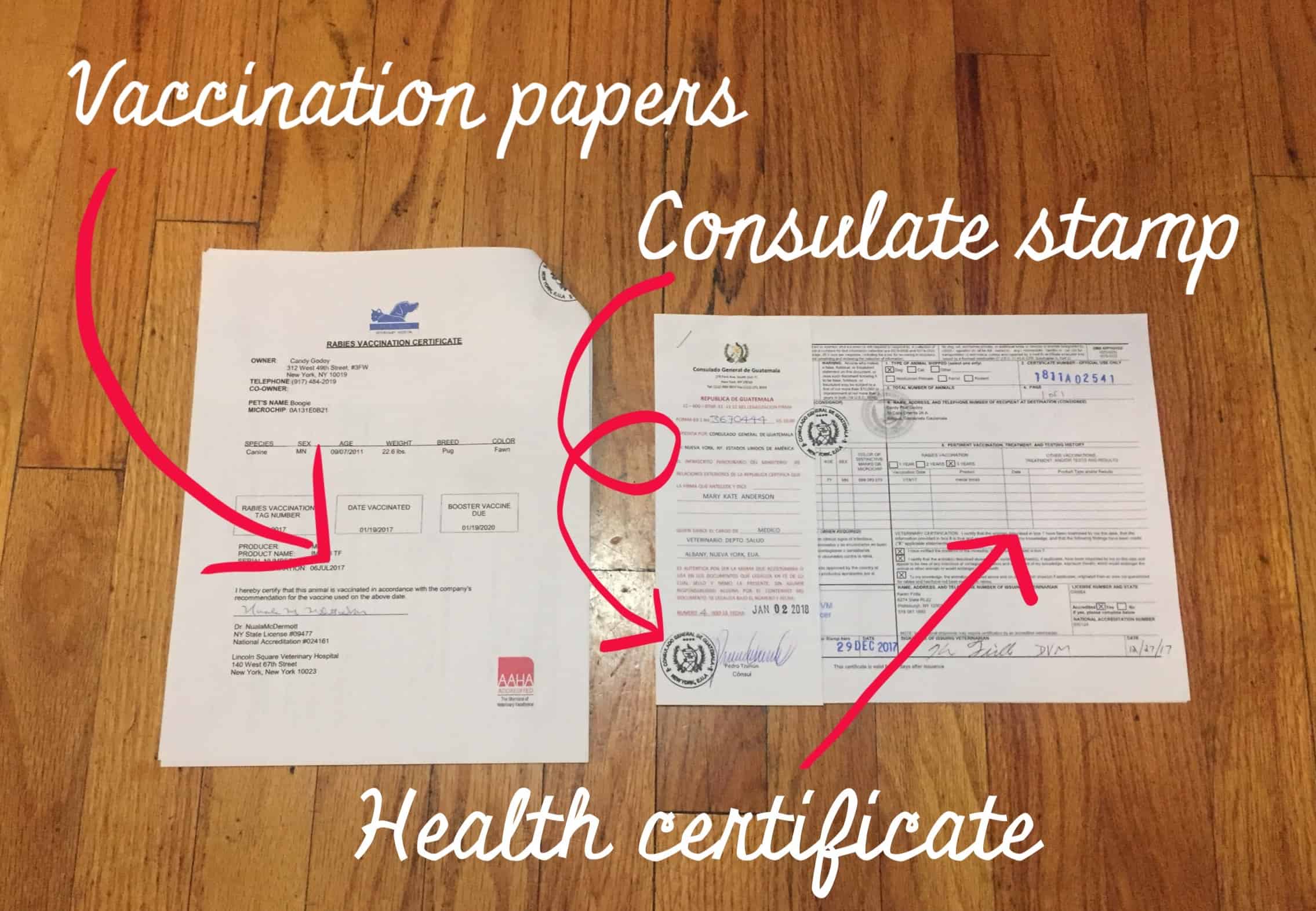
When you’re traveling with your dog, it’s important to keep vital documents, like medical records, extra copies, and ID information, on hand, especially if you’re crossing state lines.
And when there are muddy paws, dirty shoes, and the potential for spills, you’ll want to be sure these documents stay clean and dry.
Keep them safe in a waterproof and sealable ziplock bag. This is easy to throw it in a backpack or the glove compartment, and means you won’t have to worry about keeping them readable.
4. Use seat covers or a blanket
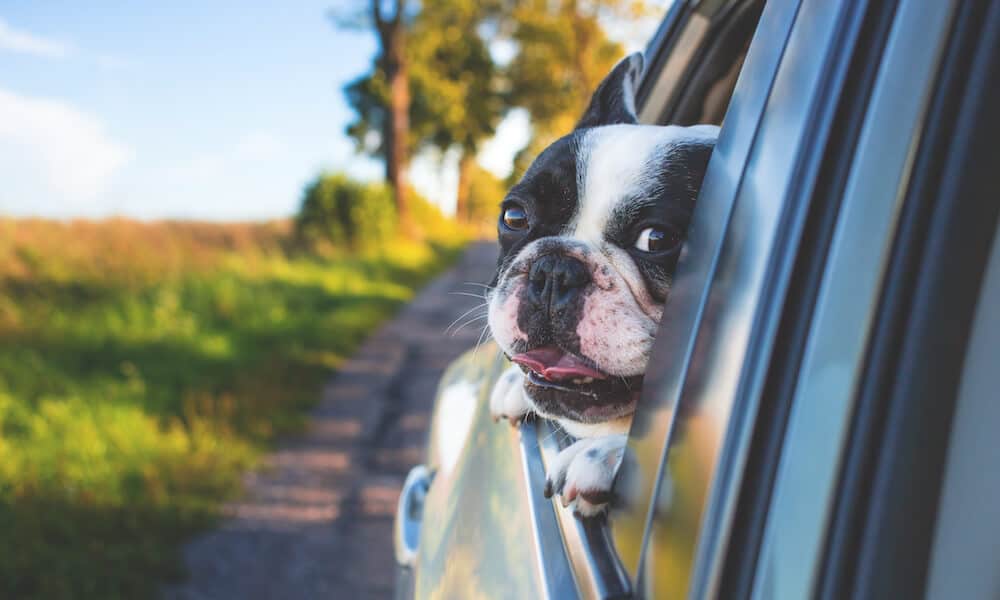
Dog hair and seat scratches are easily preventable by keeping seat covers or a blanket on hand. They both protect your car and make it easy to shake off loose fur and debris.
They’re especially useful if you’re renting a car. Who doesn’t love an easy clean up?
Bonus: get waterproof seat covers to make your ride even smoother – there’ll be no need to worry about wet dogs!
Get seat covers here .
5. A crate, car seat, and/or seatbelt are necessary
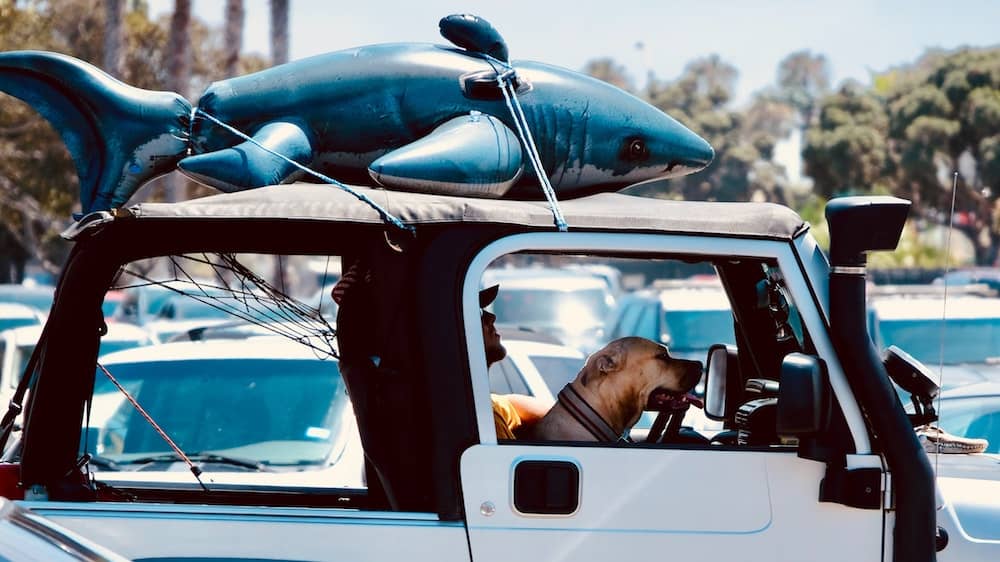
Safety is important when you’re on the road. If you stop short, slam on the brakes, or get into an accident, your dog can get seriously hurt.
To protect your dog, make sure to secure them while in the vehicle.
For medium to large dogs, try a crate or dog seatbelt. For smaller dogs, check out car seats.
Consider collapsible travel crates , no matter your dog’s size, which double as in-car restraint systems and a dog suite in your hotel room or campsite.
6. Use a pet ramp for easy access
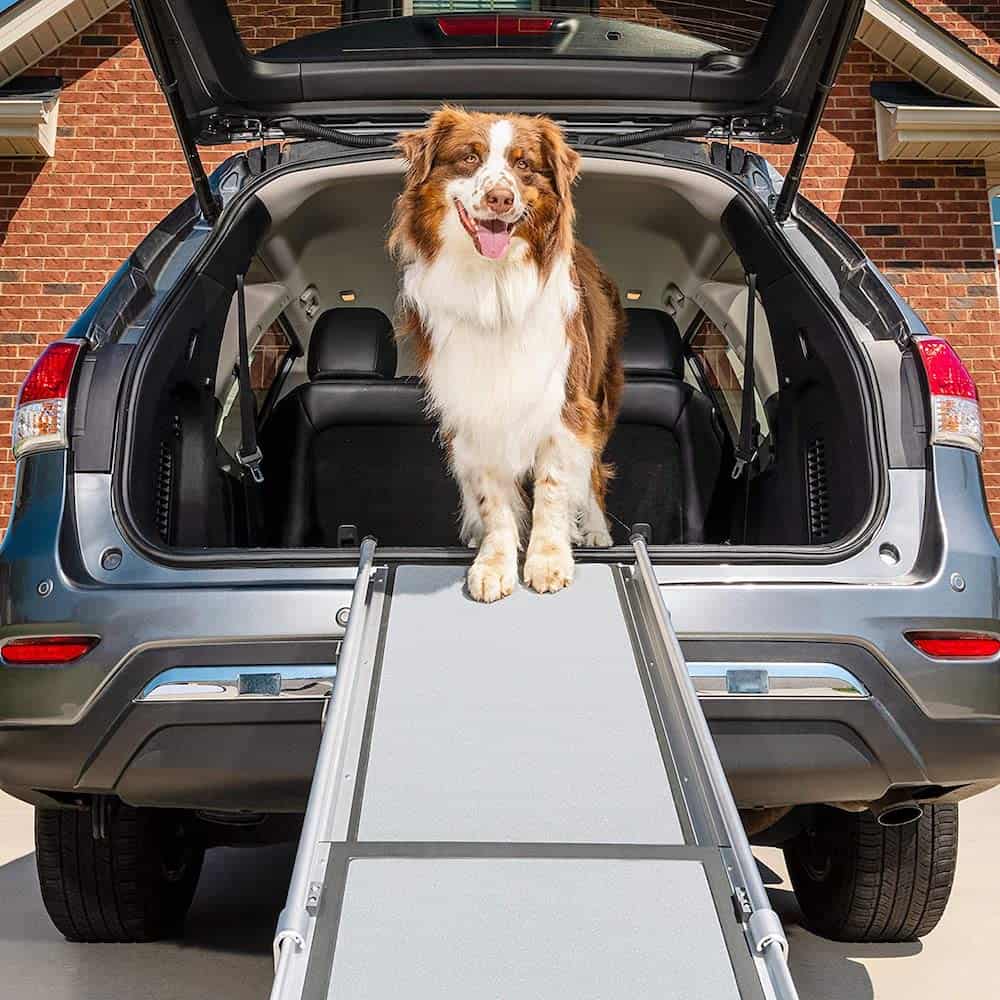
Some dogs, like older pets or dogs with mobility issues, might have trouble getting in and out of the car. Carrying them isn’t really an option if they’re big, or if your hands are full.
A pet ramp is a great option to help with easy load ins and outs.
This one is adjustable, works with all sizes of vehicle, and can withstand up to 400 pounds. Its high traction surface prevents slips and falls. Plus, the ramp is easy to carry – it’s only 13 pounds – and easy to store.
7. Use up to date dog tags

Up to date dog tags are important in your dog’s daily life, and especially while traveling.
They signify to others that your pet has a home. They’ll protect your pet from being mistaken as a stray, and make it easy for people to contact you should anything happen.
My dog’s tags have their name, my email address, and my phone number. Some might choose to include their home address as well.
Be sure your pet is microchipped too!
8. Use a travel pet food container
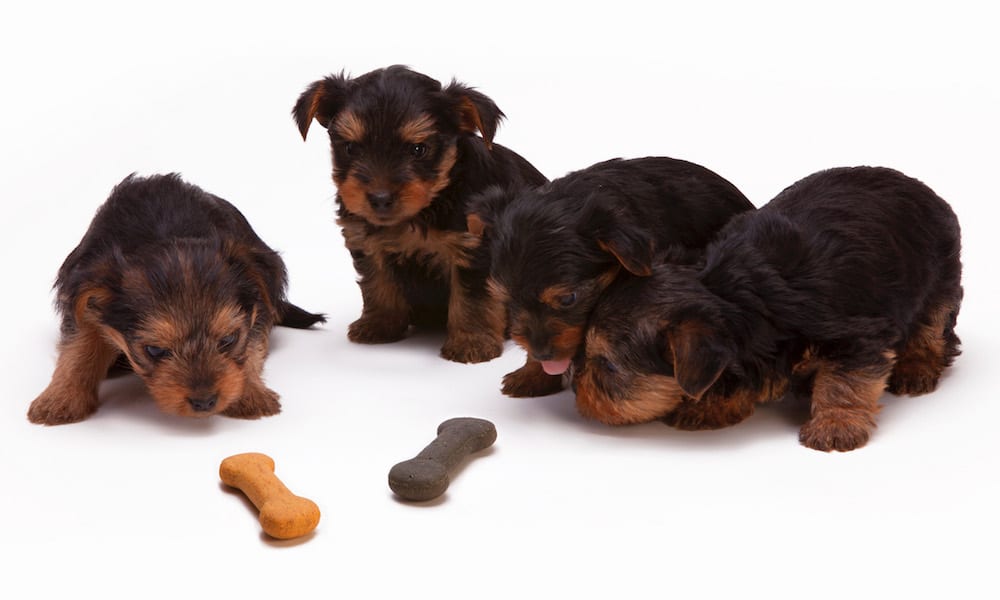
Throwing some kibble in a Ziploc bag sounds easy, but if you turn your back for a few minutes, your dog will sniff it out and rip right through it.
This kibble carrier keeps meals fresh and can hold up to five pounds of food. I love that it rolls down and clips securely, making it malleable so it changes size depending on how much food I pack.
This travel container is also great, especially on camping trips and long car rides. It includes two detachable bowls to serve food and water, and features an easy to carry handle.
9. Pack the right clean up tools
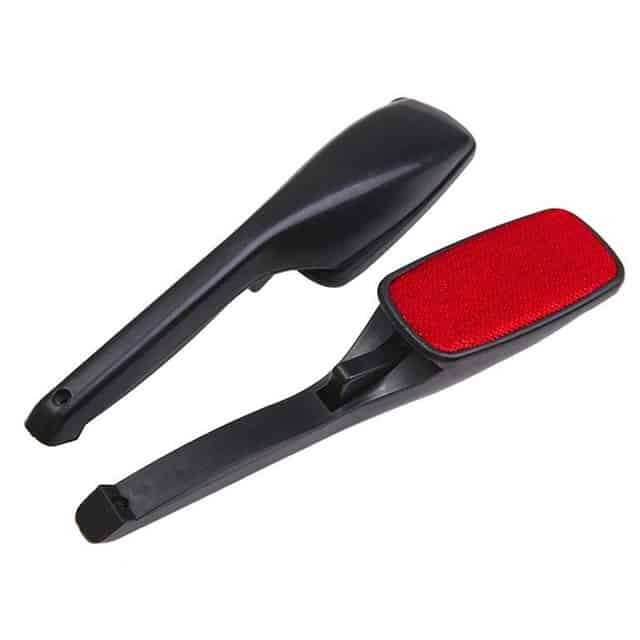
A road trip converts your car into a make shift home; you’ll be using it to eat, sleep and hang out. With all of that extra time in your vehicle, it won’t be smelling too fresh by the end of the day. Add one or two dogs, dirt and mud from outdoor excursions, and plenty of spills, and you’ve got yourself a locker room on wheels.
But who wants to travel in a dirty car? Not me! Especially if it’s a rental, and fees are involved. Keep your car clean and pack the right tools to help you.
This hair-removing silicone brush is great at loosening pet fur lodged in your car’s carpets and seats. It’s also small enough to keep in your glove compartment or to throw in a bag.
For a more thorough clean up, consider a vacuum. This handheld cordless vacuum will suck up all of the fur, sand and dirt tracked in from your dog, plus it comes in an easy to store bag.
It’s lightweight and portable, so perfect for road trips.
10. Stay shady
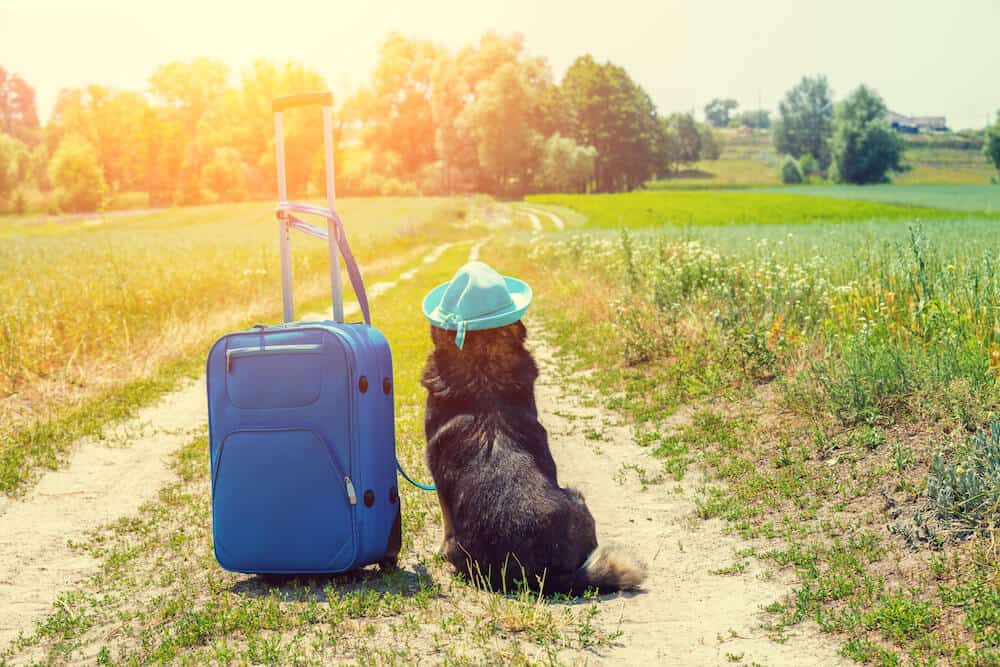
Driving on a hot day? Sunlight will heat up the interior of your car and turn your vehicle into an oven. It’ll dehydrate you and your dog, and make car rides uncomfortable.
Keep your car, whether on the road or parked, cool and stay shady.
This car window sun shade blocks over 97% of harmful UV Rays. It fits most car windows.
If your dog sits in the back (they should!), try these rear seat air fans . They plug into your cars’ cigarette lighter and help keep your pet cool on even the hottest of days.
11. Stay hydrated

Long hours on the road, especially on a hot day, can lead to dehydration.
While you’ll want to take frequent water breaks, sometimes, due to weather or time of day, you won’t be able to stop the car.
This dog water bottle fits right in the car cupholder, and dispenses water with a squeeze. It’ll make grabbing a quick lick easy while on the road.
12. Pet First Aid kits are a must
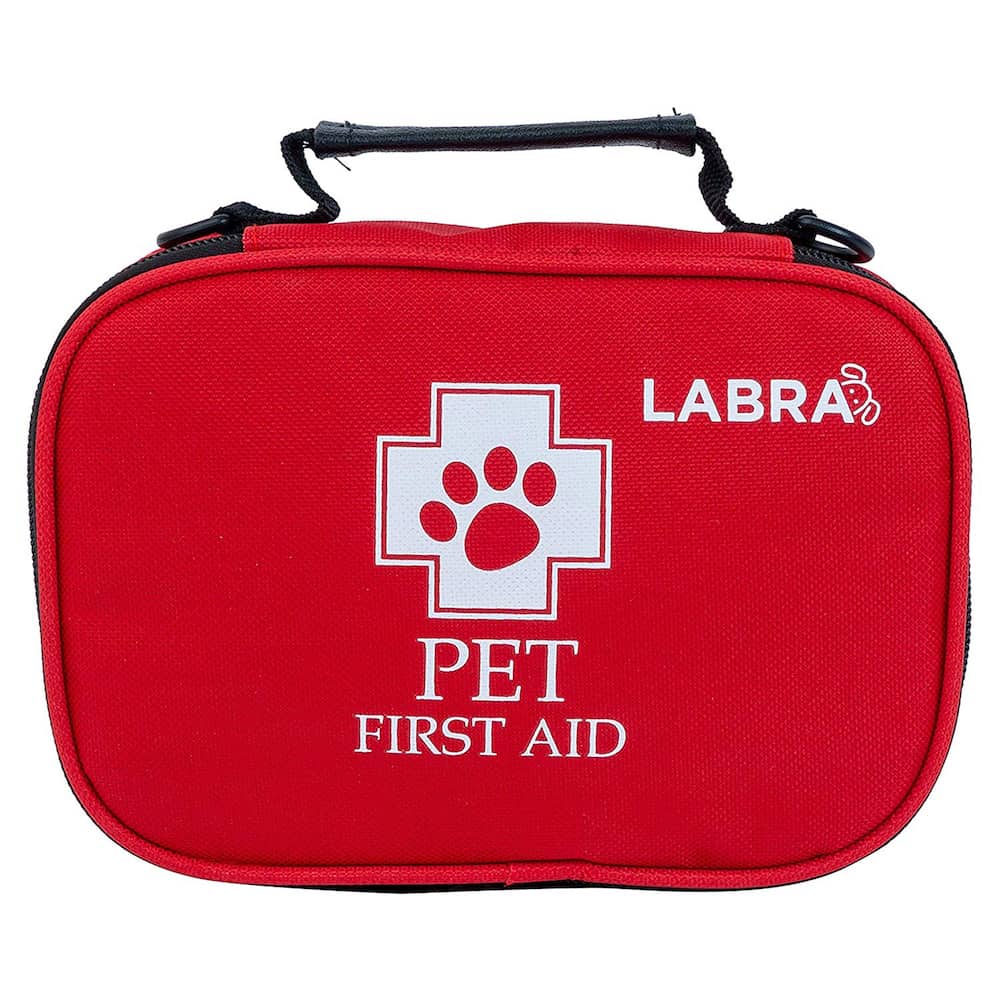
Every car needs a dog first aid kit to use in case of emergency.
You’ll be prepared for injuries and be able to treat cuts, scrapes, sprains and strains, no matter where you are. It’s always better to be safe than sorry.
This useful K9 First aid Kit is compact, sells for a reasonable price, and has all of the essentials. It includes scissors, tweezers, a pet brush, a pair of rubber gloves, antiseptic cleaning wipes, and more.
Or, save money and make your own with a few items from around the house.
Grab a container – a ziplock, drawstring bag or Tupperware works – and throw in the following:
- Hydrogen peroxide
- Antibiotic ointment
- Rubber Gloves
- Wet or Grooming Wipes
13. Be organized
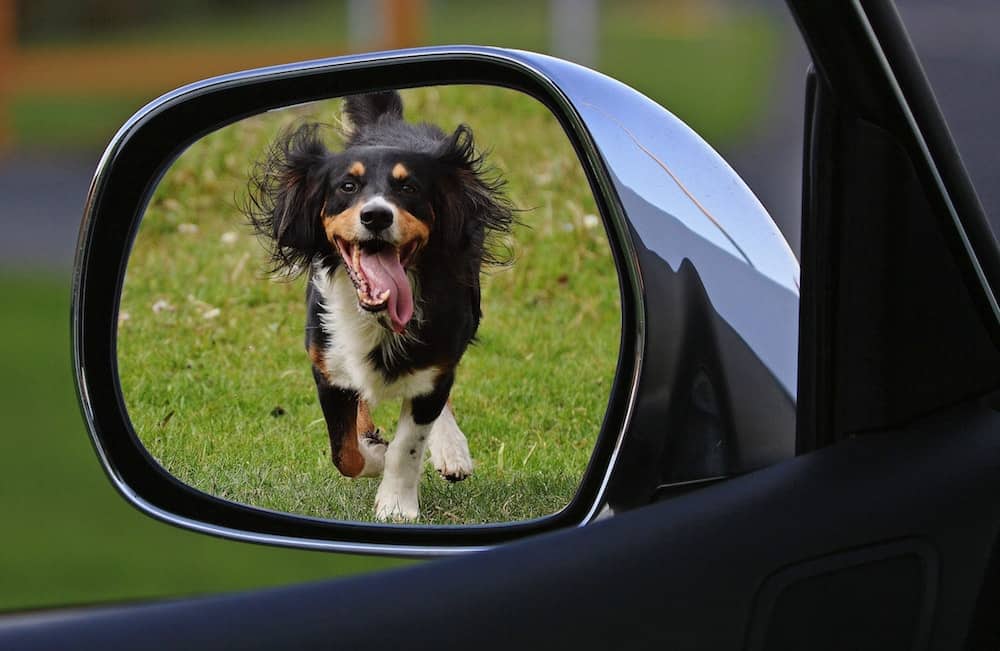
Throwing things in your car feels great until you’ve created a mountain of mess and can’t find something. Avoid this problem entirely by getting organized from the get go.
This strap in collapsible trunk organizer helps you neatly store all of your gear into sturdy, yet flexible compartments. Use it in half mode or open mode, depending on how much stuff you have.
I’m also digging this trunk divider that attaches with velcro and fits into even the most weirdly-shaped nooks of your car. It’s an easy way to secure loose clutter in the back.
14. Keep a packing list

Planning a road trip can be daunting, but you won’t have to worry about leaving things behind if you’ve got a good packing list to refer to.
This packing list works at the beginning of a trip, when you’re packing your bag, and throughout, to make sure you don’t leave anything behind.
Check out our dog travel checklist , and print out a copy for yourself.
15. Map out dog-friendly places to stop along the way

What’s a road trip without fun stops along the way? But with a dog in tow, not every location will be welcoming.
Before heading out, map out dog-friendly stops along your route, so you’re not totally clueless when it comes to breaks. It’ll make potty breaks or activities along the way easier and better.
Plus, doing a bit of research before the trip will help you discover dog-friendly places you never even knew existed.
Here are some helpful places where you and your dog will be welcome:
- The Best Dog-Friendly Places to Stay on a U.S. Road Trip
- Guide to the Ultimate Road Trip with your Dog
16. Soothe nervous dogs
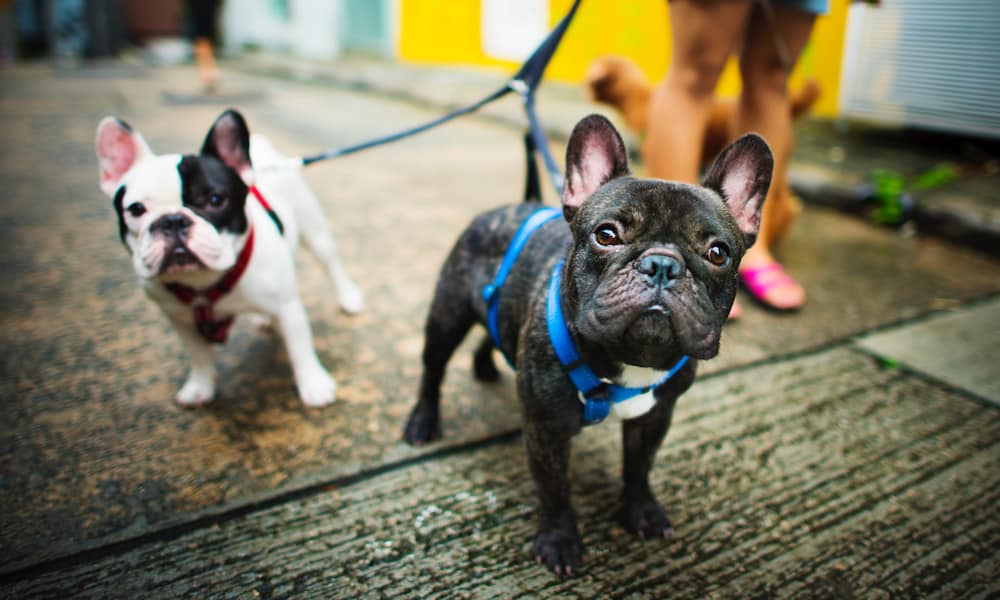
If your dog is nervous in the car, help soothe them so that they can rest and get comfortable.
Here are some tips for road tripping with a nervous dog:
- Bring along your dog’s favorite items, so they have familiar objects around from home. A favorite toy, dog bed or blanket with your scent.
- Put your dog in a thunder jacket; they apply constant pressure on a dog’s torso, similar to a parent swaddling a child.
- Experiment with CBD oil or CBD treats to help your dog remain calm.
- Make sure the car is comfortable and cool – crank the air conditioning and make their crate or the backseat nice and comfy.
- Do shorter rides with a great reward at the end before embarking on a longer trip.
17. Get rid of that wet dog smell

If you’re planning outdoor adventures like hiking or swimming, your dog is guaranteed to get wet and muddy. While that wet dog must is ok around the campfire, it’s not great once it infiltrates your car.
This bamboo charcoal car air freshener naturally absorbs odor like a stink sponge. It’s long lasting and fragrance free, and totally safe for your pets.
18. Keep supplies on hand for dirty paws
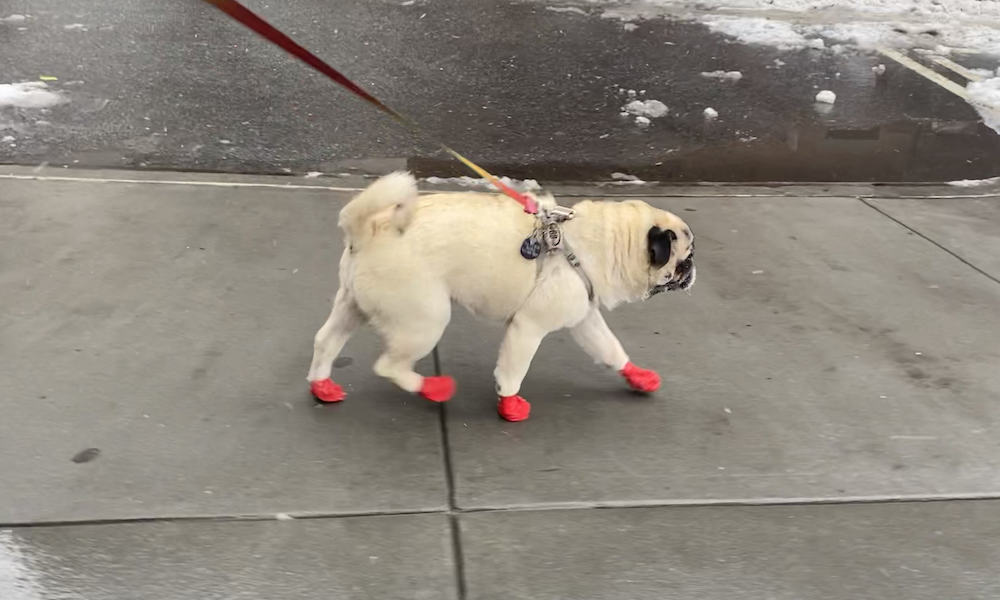
Just as you should wipe off or remove your dirty hiking boots after a trek, do the same for your dog. Dog paws can track in dirt, sand, mud and water that’ll get all over your car.
Keep some supplies on hand to prevent too much mess. A quick dry towel or grooming wipes should do the trick.
Or, make your dog wear dog boots ! They’ll keep your dog’s paws clean and you can take them off before getting in the car.
19. Download helpful apps

There are plenty of apps that can help when on the road with your dog. It’s gotten a lot easier than when I used to travel the world sans iPhone.
- BringFido: This app (and website!) helps you locate pet-friendly hotels, restaurants, parks and activities.
- DogTrekker: DogTrekkers lists dog-friendly places to stay, eat, hike, swim and have fun throughout the state of California.
- USA Rest Stops: This app helps you find the nearest rest stop. It’s great for water and potty breaks.
- Roadtrippers: Roadtrippers offers planning, maps and travel guides for road trips. It’s especially great if you’re camping – you can book campgrounds directly in the app.
- Sniffspot: Sniffspot showcases safe and private dog parks and off leash areas hosted by locals. It was made for reactive dogs, but any dog can use it. Find locations that work for you and book for some play time.
If you’re looking for more, check out this list of the best dog apps available for iOs and Android! We’ve also got a list of our favorite dog podcasts .
20. Plan ahead

Jumping in a car and driving wherever the wind takes you sounds romantic, but it’s not really very practical. You don’t want to be stuck with no place to stay.
Plan ahead! It’s an especially good idea if you prefer the comforts of a hotel or motel, rather than a campsite. Some places don’t allow dogs, while others have weight limits, breed restrictions or big fat pet fees.
Here’s a list of questions to ask dog-friendly hotels, and here’s another with the best dog-friendly places to stay on a road trip .
21. Keep fleas away
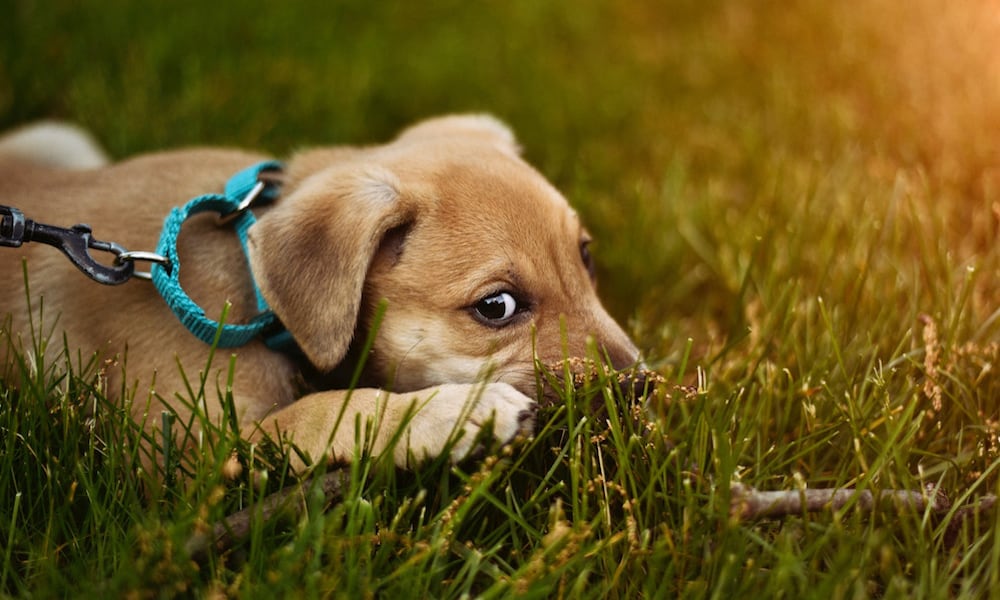
If you’re planning to hike or spend time in the woods, you’ll want to be certain your dog has flea, tick and heart worm medication. It would be terrible to pick up fleas, and get them in your car! Plus, they can be dangerous and cause health issues like lime disease.
We tend to pick up organic flea collars before going on a trip. They’re great to have in handy and safer than alternatives. Earth Animal also sells a flea and tick internal powder that comes highly recommended.
22. Reward your dog with a treat along the way!
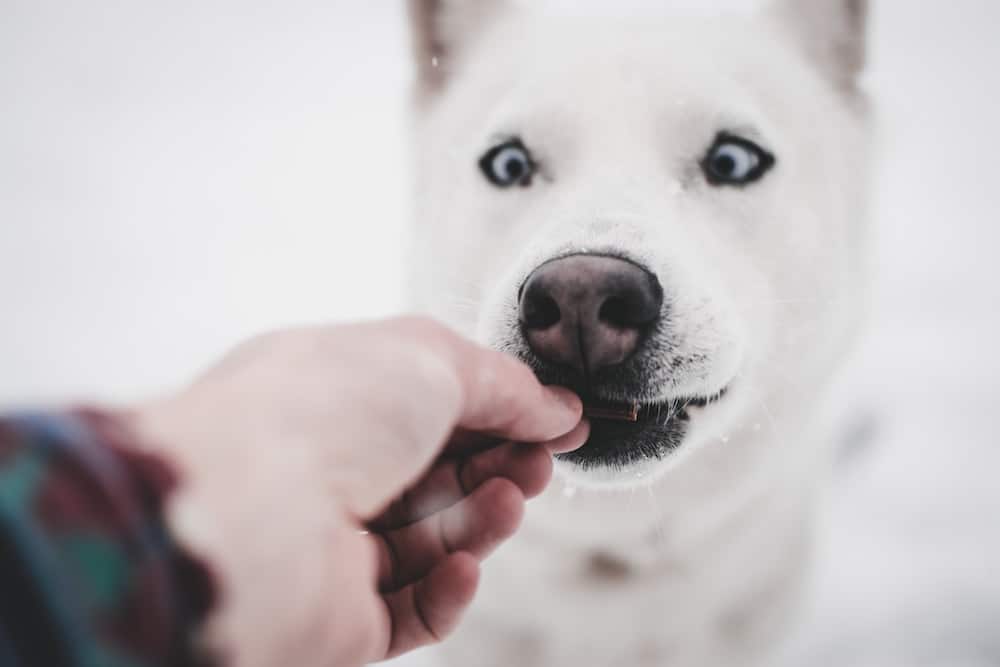
Road trips are fun, and your dog should be in on it. The car is a happy place! It’s taking you to new places, and on new adventures.
Remind your dog of this with positive reinforcement and treats.
When you’re on the road, stop at chains like Dairy Queen and Starbucks; both offer dog treats that you can pick up at the drive through. Dairy Queen has pup cups, and Starbucks has puppucinos .
23. Tired dogs are the best travelers
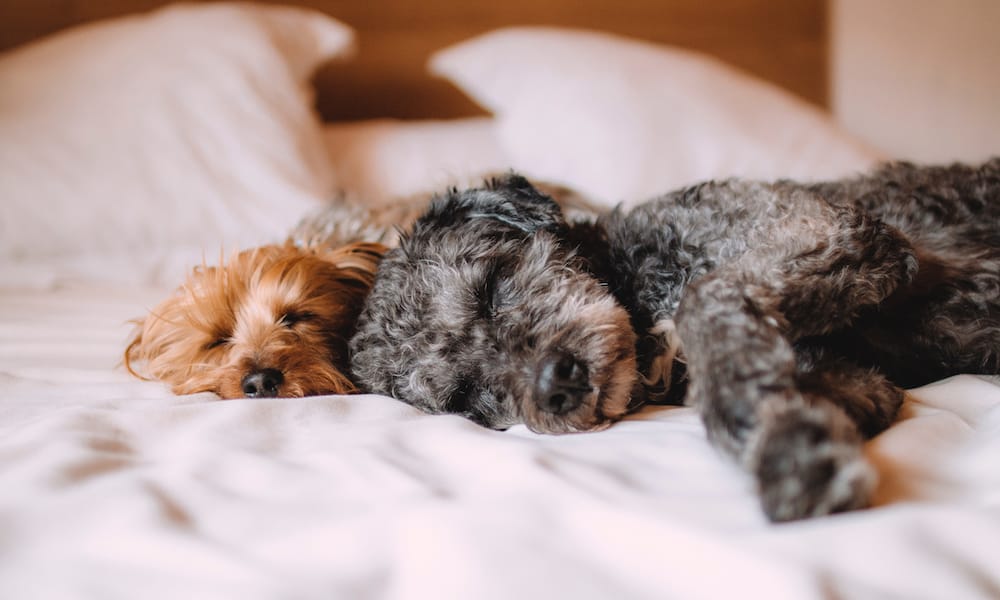
This is my number one piece of travel advice, whether you’re flying, road tripping or on a train.
Zoomies and a case of the wiggles are best left for wide open spaces. Confined spaces, like a car, mean your dog won’t be able to stretch their legs.
Make sure your dog gets a lot of exercise before doing a long stretch in the car, or stop along the way so they can run around. It’ll make your dog feel better, and make for a much more comfortable trip, for both you and your pup.
24. Use bottled water if you’re crossing state lines
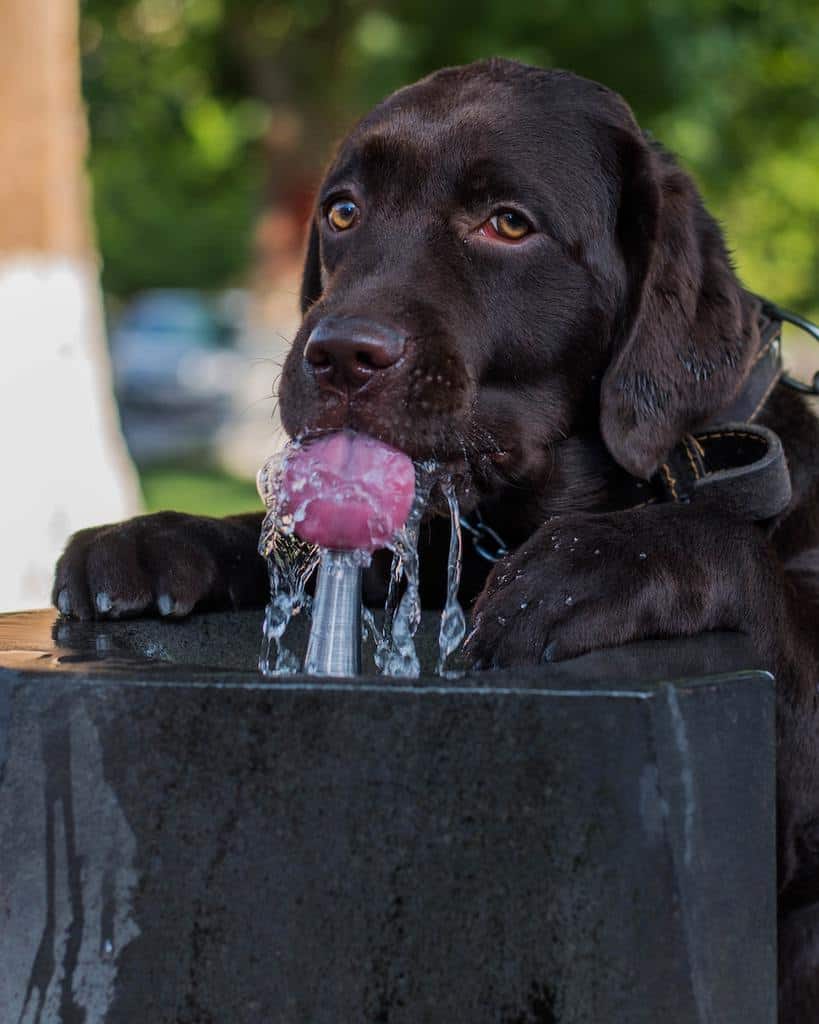
This is a trick I learned from show dogs who have to travel to compete.
Tap water is different in every place, especially when you cross state lines. The change in levels of things like chlorine can upset your dog’s digestion and cause diarrhea.
Take your own water from home, or buy bottled water.
If you bring your own water, gradually add some of the new water to the water from home, or just stick to bottled water the entire time to be safe.
We bought jugs of water at Costco and Walmart and just always kept extras in our trunk. Problem solved!
25. Bring a headlamp to pick up poop in the dark

Let’s be real, picking up dog poop in the dark is a drag.
Sure, you can use your cell phone as a flashlight, but that means you’ll have to do the one handed poop pick up, while you also hold a dog leash and bend over. What a mess!
The chances of falling, tripping or dropping your phone into some fresh poop are high.
And if you’re in a wooded area with grass? Even worse. Camouflaged poop is extra hard to find.
Free up your hands and be prepared with a headlamp! That way you can easily spot the fresh turds all while using both hands. Plus, you can use it for other stuff while in the dark. Stuff that hopefully doesn’t involve poo.
Here are some rechargeable headlamps that come highly rated.
Related:
- Rental Car Company Pet Policies
- This Is The Only Insurance Company That Will Cover Your Pet While Traveling
What other tips do you have for dog-friendly road trips? Let us know in the comments.
Pin for later!

Similar Posts
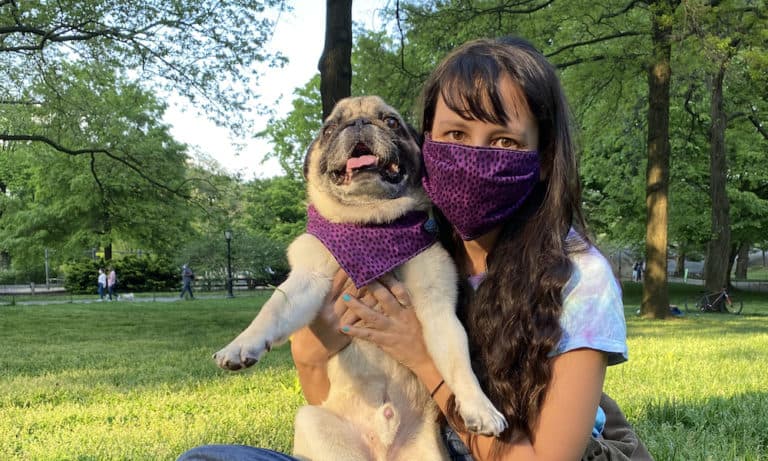
DIY Matching Face Mask and Dog Bandana
Learn how to make a dog bandana and matching face mask. It’s an easy way to protect yourself and look good at the same time.

How to Save Money When Traveling With Dogs
We recently saved close to $3000 when traveling with our 2 dogs. Check out these money saving dog travel tips that will help keep money in your pocket.

13 Best Free Things to do in NYC with your Dog
New York City is known as one of the most expensive cities in the world, but that doesn’t mean you and Fido have to spend a bundle to enjoy it. There are plenty of things to do with your pup that won’t cost you a dime. Here are ten free things to do in NYC with your dog.

Dog-Friendly NYC Bar Crawl
Bar crawls just got better because now, your pup can join! Grab some humans and their dogs and spend an afternoon hanging out at this dog friendly NYC bar crawl.

The Secret to Successful Pet Travel
This is the #1 thing that has helped us when traveling with our two dogs, near or far, locally or internationally, big city or country.

Pet-Friendly RV and Camper Van Rentals in the USA
If you’re seeking an affordable and fun vacation, then a road trip in a dog-friendly RV or camper van might be the right thing for you.
GREAT article. thanks
Leave a Reply Cancel reply
Your email address will not be published. Required fields are marked *
Where Have We Been

Dog-Friendly New York City Dog-Friendly Brazil Dog-Friendly Boston Dog-Friendly Philadelphia Dog-Friendly Baltimore
Check It Out
About Privacy Policy Disclosure & Disclaimer Contact
Looking For Something?
Affiliates disclosure.
boogiethepug.com is a participant in the Amazon Services LLC Associates Program, an affiliate advertising program designed to provide a means for website owners to earn advertising fees by advertising and linking to amazon.com, audible.com, and any other website that may be affiliated with Amazon Service LLC Associates Program. As an Amazon Associate, the owner of this site earns a commission from qualifying purchases.
Travel Tips
Get Inspired How To Save For A Trip How To Plan A Dog-Friendly Trip Flying With Your Pet Get The Right Dog Gear Pet Friendly Accommodations Pet Friendly Destinations Roadtrips With Your Pet
Get the Latest Woof in Pet Travel

- Pet Travel Tips
The Ultimate Guide to Taking a Road Trip With Your Dog
by Lavanya Sunkara
Published on July 20, 2020
If you’ve ever wanted to take an epic road trip with your dog, there is no better time than the present. After being cooped up for months to prevent the spread of COVID-19, you are probably eager to hit the open road.
Road trips allow the freedom to enjoy the great outdoors with all family members, without having to leave your pup behind. And your dog will be all the more happy to sniff new scents and frolic alongside you in new places.
To help you prepare for a smooth and memorable dog-friendly road trip, here are tips to ensure that your pet stays safe, healthy, and happy on the road.
Benefits of Road Trips : The Perfect Way to Travel With Dogs
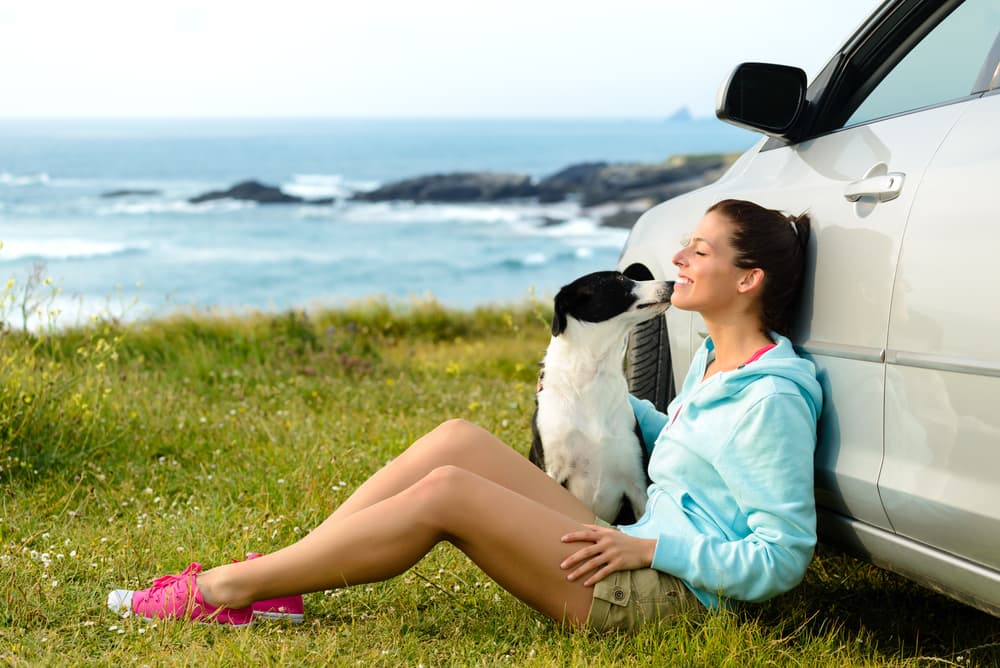
Road trips are a wonderful way to travel with dogs and strengthen your human-canine connection. Best of all, there is no need to worry about getting on a plane during a pandemic, or researching an air carrier’s safety record or requirements.
Traveling by car (or RV or van) means your furry friend doesn’t have to be boarded or left behind with a dogsitter. You can make the most of your vacation while practicing physical distancing and have a grand adventure with your pooch.
One of the biggest benefits of a road trip with dogs is the flexibility it affords—stop whenever you want and select dog-friendly spots to experience. Bring along your pet’s favorite toys and treats as well as a bed or blankets in the trunk without having to worry about luggage limits.
Dog Road Trip Basics: Essentials to Bring
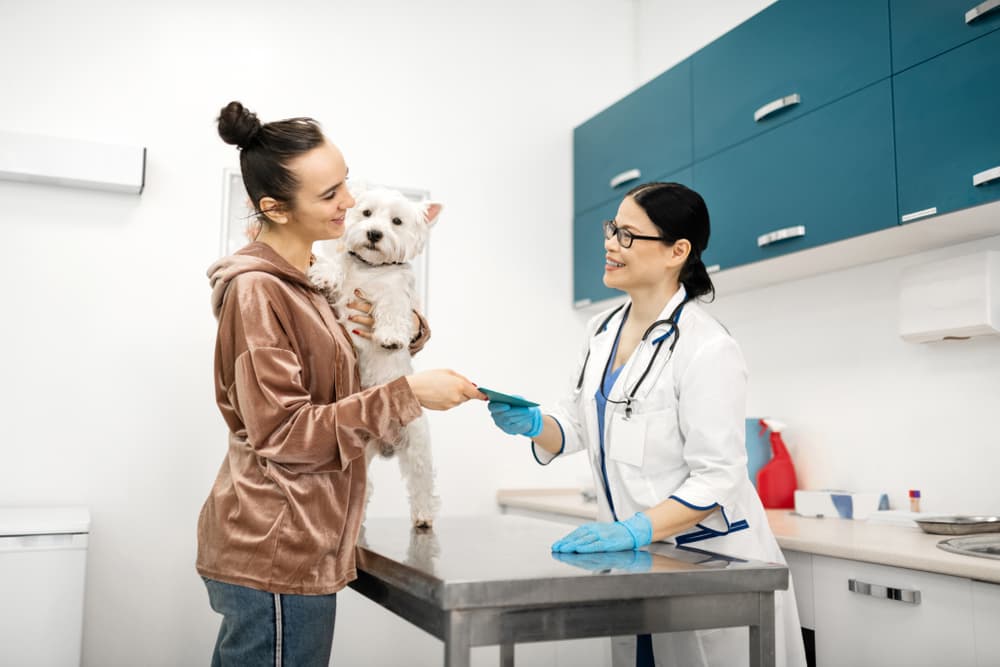
If you’re going to be hitting the road with your canine family member, there are a couple of essentials that you need to bring along. Here’s what you shouldn’t leave home without.
Medical Records/Health Certificate
Whether it’s a weekend getaway or a cross-country trip with your dog, book an appointment with your pet’s veterinarian to get your dog up-to-date on his vaccinations. Carry both electronic and paper copies of his medical record or a recently obtained health certificate from the veterinarian, especially when you are crossing state borders. A health certificate is valid for up to 30 days. Having medical documentation will also become crucial if you run into an emergency while on the road.
Food and Medication
Pack your dog’s food, medication, and supplements for the duration of the trip and bring an additional week’s worth of these items to be prepared for unexpected delays. Feed your dog at least three to four hours prior to leaving to avoid any accidents in the car.
Johnna Devereaux, clinical pet nutritionist and the director of nutrition and wellness for Bow Wow Labs , recommends pet parents bring their dog’s own food on the road. “This will help avoid the potential for an upset stomach and the possibility of loose stool, especially if stores where you are going don’t carry the food you feed.”
If your dog has a tendency to get motion sick in the car, Devereaux says ginger can assuage his tummy. “This potent plant helps with all forms of nausea and may make your trip easier on the whole family.” You can purchase pet-friendly ginger chews online or at your local pet store.
Microchip, GPS Collar, and Identification
It’s one thing if your dog goes missing in your neighborhood…and another thing entirely if you and your pet get separated while road tripping in unfamiliar territory. To improve your odds of reuniting with a dog who’s taken an unplanned detour, at a bare minimum, ensure your contact information is clearly legible on your dog’s ID tag. And if your road-trip buddy hasn’t been microchipped, consider having one implanted prior to your departure.
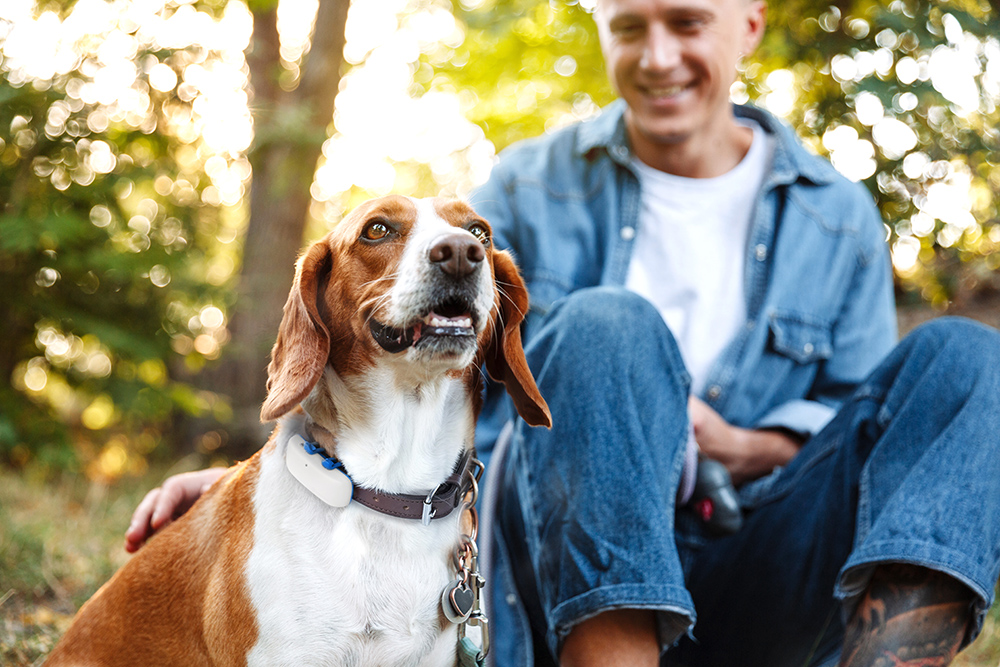
But even if your dog is properly tagged, chipped, and your registry info is up-to-date, a location tracking device or collar, like the Tractive GPS Dog Tracker , can be a literal lifesaver on the road. With Tractive, there’s no need to wait and hope that someone finds your dog if they go missing. The waterproof, clip-on GPS tracker provides real-time tracking info to help you reunite with a lost pet quickly. Plus, you can also use the powerful location and activity monitoring features to keep tabs on your pup while on the beach, during hikes, and wherever you may roam.
Updated Pictures of Your Dog
No one wants to think about losing their pet while on vacation, but accidents can happen. Don’t leave home without some current pictures of your pup. Print a few out and have some on your phone in case you need to show local shelters or get flyers made.
Dog First Aid Kit
Pack a pet first aid kit to treat minor nicks, remove ticks and foxtails, and wrap any injuries. Make a list of clinics and hospitals located along the way and at your final destination, and add the ASPCA Pet Poison Helpline number (888-426-4435) to the list in case your dog ingests a toxin. If you are concerned about a lack of access to veterinarians, sign up for telehealth services for healthcare advice and live triage support while on the road.
Dog Road Trip Packing List
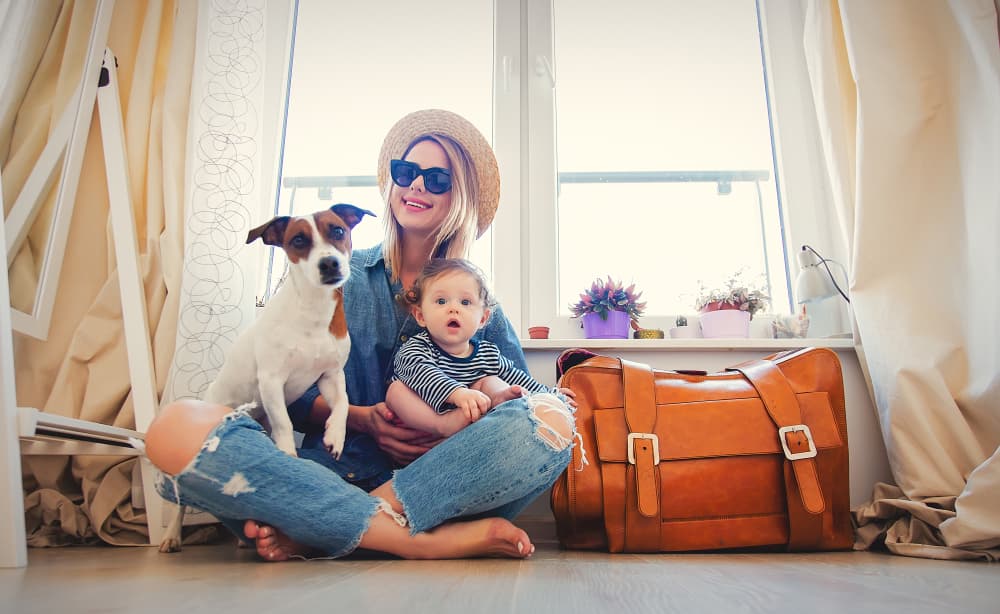
In addition to the essentials listed above, make sure to pack items that will keep your dog comfortable, entertained, and happy along the way. We recommend you include the following items for road tripping with your canine bestie:
- Plenty of water for the car ride and rest stops
- Food and water bowls
- Crash-tested safety harness seat belt
- Long and short leashes
- Travel crate or carrier
- Bed and/or blanket (to offer a sense of home in unfamiliar situations)
- Treat and puzzle toys, treats
- Life jacket, if you are planning water activities
- An extra collar with ID tags
- Booties, if you are visiting a destination with hot temperatures to provide protection from hot surfaces
- Coat, if you are bound for cooler weather
- Poop bags
- Old towels and grooming supplies for cleaning
- Calming aids and supplements (if needed)
Road Trip Safety for You and Your Dog
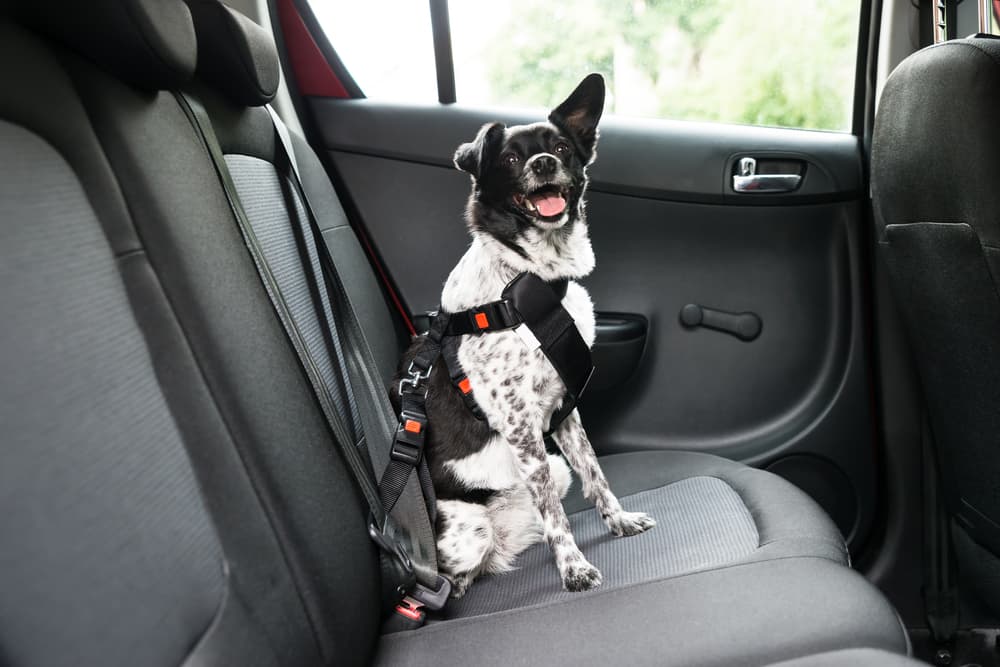
To ensure that you and your dog experience the pure joy of life on the road, it’s essential to follow safety protocols to protect your pet. Follow the below advice to make sure your dog stays safe.
Keep Dogs Crated or Restrained While Driving
It’s pure joy seeing your tail-wagger enjoying fresh air and new scents from the open window, but an unsecured pooch can be dangerous in an accident, or during a hard turn or sudden stop.
Michelle Belio, head trainer and owner at Pawsitively Waggin’ Academy LLC serving New York City and Long Island, recommends the use of a crate that has been crash tested for road trips. “If conditioned correctly, a crate could be a safe space for a dog, which is awesome for the road,” she says. “It also keeps our dogs safe and away from us, to pay attention to the road.”
Travel crates come in different sizes and materials. Select a crate that’s big enough for your dog to stand up and turn around in, and make sure it’s firmly attached to the vehicle floor or the back seat.
For your anxiety-prone dog, use a crate designed for separation anxiety , or cover it with a blanket to provide a calming, den-like environment. If crating is not an option, secure your dog with a crash-tested safety harness and seat belt. The harness goes around the dog’s chest and the attached strap plugs into the seat belt buckle.
For dogs who have trouble relaxing when restrained, use a guard attached to the floor in the trunk/boot of the car or install a back-seat barrier to create a safe section in the back of the car. A dog sling or hammock in the back provides added security and keeps any messes off of the seat. If you are driving an RV, make sure your pet is within your eyesight to ensure he’s still safely secured.
Leash Rules
Remove your dog’s regular leash once in the car, so that he doesn’t get tangled or get whiplash from the collar. When letting the dog out of the car, leash him back up to prevent him from taking off on his own. “Never allow your pet to jump out of the car without a leash,” says Devereaux. “If something were to startle them, you would have no control over where they go.”
Never Leave Your Dog Unattended in the Car
Pets left in cars are at high risk of heat-related illnesses or even death. Temperatures inside vehicles can rise almost 20 degrees within the first 10 minutes, even with the windows cracked open. When driving in warm weather, keep your pet comfortable by using the air conditioner or have the fan running.
Keep Safe Distance from Wildlife
When you are visiting areas brimming with wildlife, maintain a safe distance from animals and keep your dog on a leash or in a designated closed off area (or a collapsible pen) to prevent any stressful situations or encounters that could result in injuries or bites. If an attack happens, seek medical attention immediately.
Practice Social Distancing and Follow CDC Guidelines
Keep at least six feet of distance from others at gas stations, campsites, and on hikes to prevent COVID-19. Avoid dog parks, as they tend to be highly frequented. Wear a cloth face covering if you can’t maintain distance in public and keep a supply bag with disinfectant, gloves, and wipes. Properly dispose of PPE after use.
Dog Road Trip Tips: How to Make the Most of Your Journey
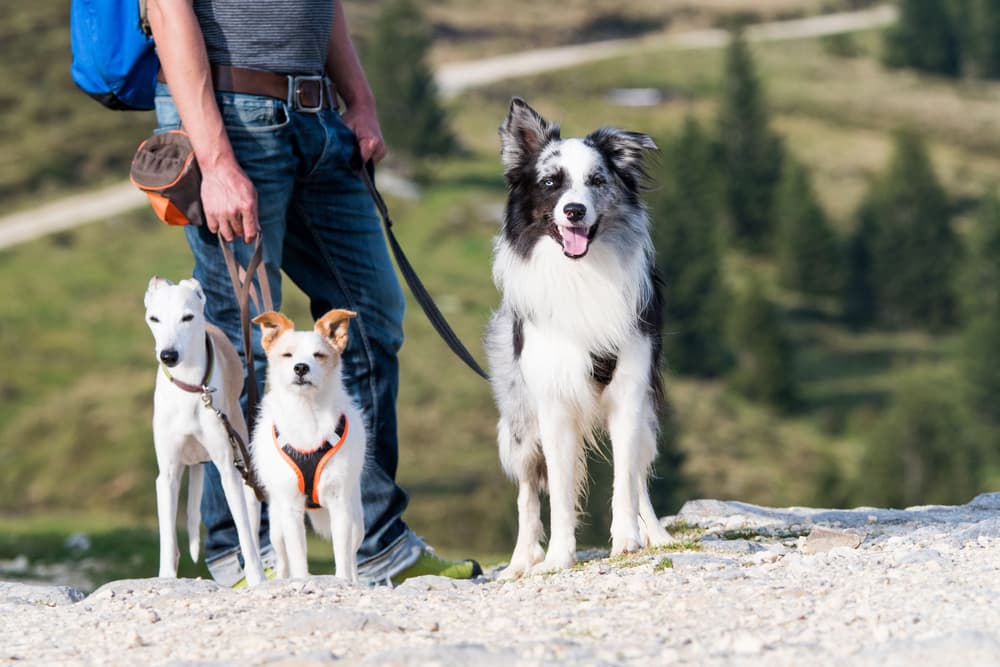
Road trips with your dog should be a fun experience, not a stressful event. To help the whole process go smoothly, follow along with these tips:
Take Test Drives
If the only places your pet has been in the car include the clinic, groomer, or the local dog park, Belio recommends “bringing your dog on long car rides, increasing the amount of time they’re in the car each time.” Test driving ahead of time lets you address any issues your pet may have on longer rides.
Train Your Dog To Love New Places
If your dog isn’t used to visiting new places, Belio suggests bringing him to at least three new locations a week prior to embarking on your journey. “When you get there, bring out your dog’s favorite treats (or toy) and reward them every single time they interact with their environment,” she says. “This way, all of these new things form associations with the things they love.”
Address Anxiety
Pet parents have a few options if their dogs show signs of discomfort or anxiety. “Desensitization, consulting your vet, and using supplements such as CBD oil could help,” says Belio. “For desensitization, work on your dog eating their meals in the car, playing in the car, and going in and out of the car using fun car games.”
Take Frequent Breaks
If you are doing a long road trip with your dog, incorporate frequent breaks (every three to four hours) for pet relief, a short walk, and water. Puppies and senior pets need breaks more often. “I don’t find exercise to be overly important, as the car ride is stimulating enough,” says Belio. “A short walk (under 10 minutes) is enough for your breaks.”
You don’t have to wait until you are ready for a pit stop to allow Fido to drink. Leave a no-spill water bowl by his side so he can drink whenever he’d like.
Provide Stimulation
While you are focused on the drive, use a stuffed toy to keep your active dog stimulated, entertained, and to keep them from gnawing on seatbelts and other items. Belio recommends packing frozen Kongs and safe dog chews. During breaks, play a game of tug or fetch to add exercise to your dog’s day.
Give Your Dog Space
No matter what type of four-wheeler you are using, give your pooch space of his own to be comfortable and decompress. Avoid stuffing items next to him in the back seat or cramming him in the back of the car without much room.
Related articles
Dog supplements, best flea and tick medicine for dogs: 10 top picks, 10 allergy supplements for dogs: top picks for itch relief, litter boxes, fresh step crystals health monitoring cat litter review, 8 things your cat's litter box can reveal about their health, what to give dogs for diarrhea: 7 best products, pet grooming, 6 best dog perfumes of 2024.

How to Travel With a Dog in a Car: An Expert Guide
Heading out on the road with your dog soon? Read this guide first to make sure the car ride is an enjoyable, safe experience.
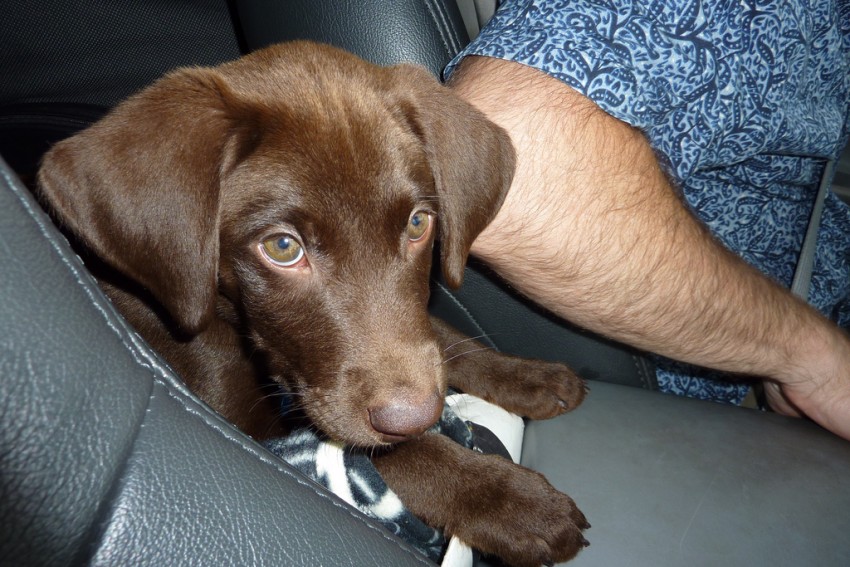
Planning on taking your dog on the road with you?
If so, you may be wondering how to travel with a dog in car — safely and smoothly.
Before you start your trip, read the tips below.
In this expert guide to traveling with a dog in a car, we’ll cover:
- How to keep your dog safe
- Which harnesses or carriers are best for dogs in cars
- Tips for taking a dog on longer trips in a car
- What about letting a dog ride in the back of a pickup truck?
- How you can prevent motion sickness in your dog before a car ride
- And much more!
So buckle up, and let’s begin…
Part 1: How to Keep Your Dog Safe in the Car
Prevent a tragedy — vow right now to make sure your dog is properly restrained whenever you take them with you in the car.
The expense and slight inconvenience of using the appropriate vehicle safety items is well worth the risk.
Plus, restraining the dog also keeps them from moving around the car and distracting you while you’re driving.
Safely Restraining Your Dog in a Car
Dog harness.
First, get a harness for your dog.
If you restrain your dog using only a collar, your pet may get strangled if you get into a wreck, especially if you rear-end someone. A harness may protect the dog’s neck and spine.
We prefer fabric harnesses that wrap around the dog’s neck and torso. Many also have a loop on the top through which you can thread the seat belt.
The PoyPet No-Pull Dog Harness has a reflective vest, a leash connection on both the front and back, and (last we checked) was less than $20. Worth every penny.
Dog seat belts attach to harnesses, keeping your dog immobilized in the back seat.
There are 2 basic models:
- Those that attach to your car’s seat belt
- Those that clip into the “female” end of the seat belt lock
Either kind will work. Choose the one that works best for your car.
This strap from PetSafe is adjustable and easy to use.
Remember: Don’t attach the seat belt to your dog’s collar — attach it to the dog’s harness instead, to avoid strangulation.
Booster Seat
A small dog who loves to look out the car window will enjoy having a booster seat.
Was YOUR Pet Food Recalled?
Check Now: Blue Buffalo • Science Diet • Purina • Wellness • 4health • Canine Carry Outs • Friskies • Taste of the Wild • See 200+ more brands…
CHECK RECALLS NOW!

Designed to fit in your back seat, booster seats are secured with your automobile’s seat belt, around which you clip a dog seat belt that you attach to the harness.
These specialized seats not only provide a safe place for travel but they also act as a comfortable dog bed. Most are made out of sturdy foam core topped with fabric and fleece. Add a blanket, and you’re good to go.
Booster seats provide maximum comfort and a view for your pup. They last a long time.
Here’s a highly rated car booster seat for small dogs sold by a company called Kurgo.
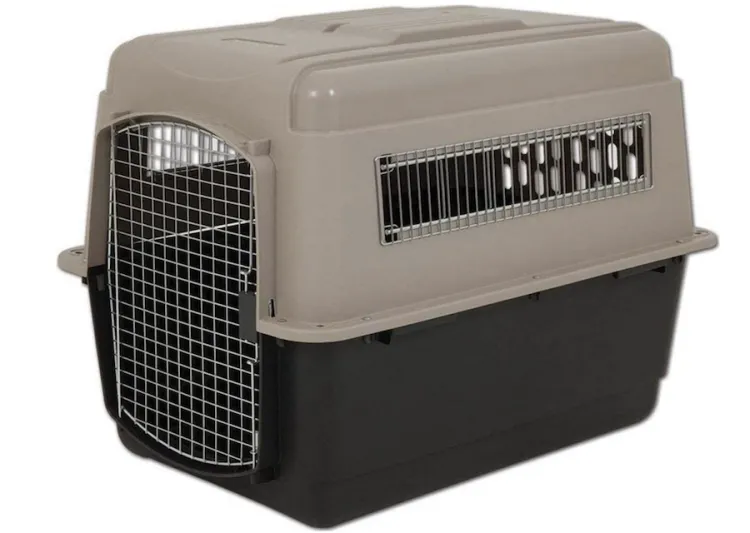
Dog Carrier
The safest way to transport your dog? In the back seat, confined to a hard-sided dog carrier (also called a travel kennel or crate) that you’ve secured with a seat belt.
In the event of a car accident, your dog should be well protected in a carrier.
The Petmate Ultra Vari Kennel is billed as being heavy-duty and secure for a safe and comfortable travel experience.
But according to the Center for Pet Safety (CPS), this exact crate was “far and away the most impressive crate” that this safety organization tested. It “was able to withstand the most significant forces generated in testing,” the CPS reported.
A few dog carrier tips for car travel:
- Make sure that whatever carrier or crate you get is large enough for your dog to stand, sit, lie down and turn around in.
- Place the carrier in the back seat, and then thread the seat belt through the handle. (Unsecured carriers can slide around on the seat.)
- Avoid putting too many items in the carrier that take up space or could cause injury to your dog.
Don’t Take a Chance on Safety
Pets aren’t children, but with respect to car travel, you should treat dogs as you would young kids.
Your dog should always sit in the back seat, secured with a safety restraint. Don’t let them ride in the front seat.
Yes, small dogs are cute and may fit in your lap perfectly, but you should not drive this way or allow your small dog to lie on a dashboard or other areas in the vehicle. This causes a distraction for you and increases your dog’s chances of being injured.
Getting a Dog Used to the Carrier
If your dog is not familiar with a carrier, try using it in the home before your trip to get your dog accustomed to it:
- Leave the door open.
- Place some of your dog’s favorite things inside to spark curiosity.
More Dog Carrier Tips for Car Trips
- Make sure that the carrier has enough ventilation to allow air to pass through freely, either through gated areas or holes.
- If your dog makes a mess inside the carrier during the trip, carry the carrier to a confined area such as a bathroom before letting your dog out. This lets you clean the carrier without the risk of your dog running away.
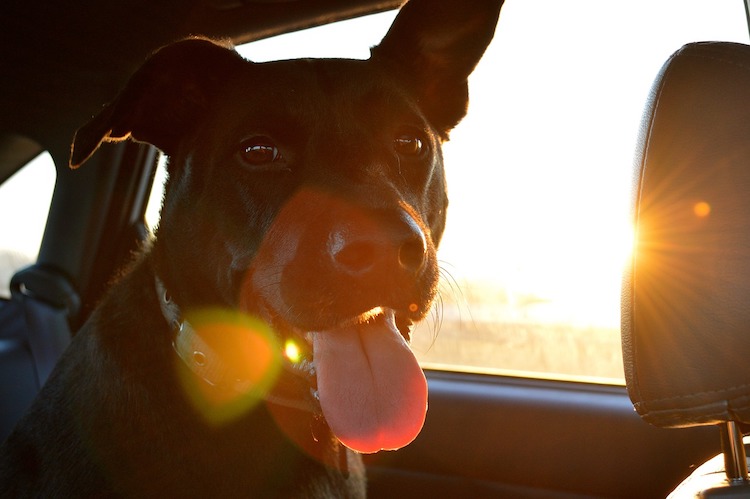
Part 2: Advice for Traveling With a Dog on Longer Car Trips
Be aware of the temperature.
This is an important topic for any pet when it comes to car travel.
Be aware of what the temperature will be at your destination and along the way, and never leave your dog in the car.
It takes only a few minutes for the temperature to rise to dangerous levels inside a vehicle, even in mild temperatures such as 75 degrees Fahrenheit. Lowering the car windows is not an effective way to ventilate the car — and may even allow your dog to escape.
The same can be said for the cold: Dogs can get hypothermia or die from dangerously low temperatures. Keep extra blankets with you, and again — don’t leave your dog in the car.
Hotels, Motels and Camps
If your trip includes staying overnight, check with the place you will be staying to learn about the pet policies, costs and other concerns.
If you plan to find a place to sleep as you go, make a list of dog-friendly places along the way so you know which ones to head to first.
See the Vet Before Long Car Trips With Your Dog
A vet visit is a good idea before a trip, especially for longer trips.
The dog’s veterinarian can check their health and make sure travel will be fine. Discuss sedation with your vet if you feel your dog will be stressed, anxious or have significant issues during travel. (See the next section on ways to prevent motion sickness.)
Do not self-medicate your dog or give your medications created for humans or other animals — these could be deadly.
- Consider getting your dog microchipped before the trip.
- Traveling across states, you may be asked to produce your dog’s rabies vaccination information. Take a copy of your dog’s records, as well as a current photograph in case your dog gets lost.
- Keep a copy of the paperwork and a picture of your pet in 3 places: your car, taped to the carrier and with you at all times. Add your contact information so someone finding your dog can contact you.
- Make sure your dog has a current tag on their collar — and bring an extra one in case it needs to be replaced while you are on the road.
Food and Water
- Limit your dog’s food intake before traveling to reduce the possibility of sickness or nausea.
- Take extra pet food and snacks with you for stops or for when you reach your destination. Stores may not have your dog’s usual brand of food, and changing food during a stressful situation such as travel might be a combination that causes stomach upset, diarrhea or other unpleasantness for your dog.
- Finally, take bottled water — and lots of it — with you on your trip.
- Try to plan stops every 3–4 hours to ensure your dog has ample opportunities to stretch, potty, drink water and get a break from the car.
- Don’t forget to bring along poop bags and/or a scooper to clean up after your dog.
- Keep your dog leashed on walks.
Talk to the Kids
If you are traveling with children, talk to them about allowing the dog to enjoy personal space without distraction.
Discuss behaviors they shouldn’t do, such as:
- Hitting or shaking the carrier
- Feeding the dog their food or snacks
- Teasing, hitting, pulling, or opening the crate — or releasing the harness
Any of these behaviors can add stress to your dog, and the goal is to keep your dog as comfortable and happy as possible while the dog is traveling in the car.

Part 3: How to Prevent Motion Sickness in Your Dog
Did you know 1 in 6 dogs suffers from motion sickness?
If you have a motion-sick dog, then you have our sympathy. Knowing your dog will arrive shivering and salivating (at best!) takes the fun out of a car trip.
Some dogs even learn to anticipate the feelings of nausea, and this makes them reluctant to even get in a car.
If you avoid car travel with your dog or always travel with a full cleanup kit, help is at hand. But don’t expect a quick fix — the answer takes time and dedication.
Positive Associations
Some dogs only have to see a car to start drooling because they link road travel to feeling sick.
This makes them unwilling to get into the car, which means you end up forcing the dog in — which only adds to the dog’s anxiety and feelings of unease.
Put an end to this vicious circle by teaching your dog to associate the car with good things.
- Play with your dog’s favorite toy in the back seat of your parked car.
- End each session on a high by giving them a treat.
- Hop out to go for a walk before they get anxious.
- Reward them for being calm while inside the car with another tasty food treat, and praise their bold behavior.
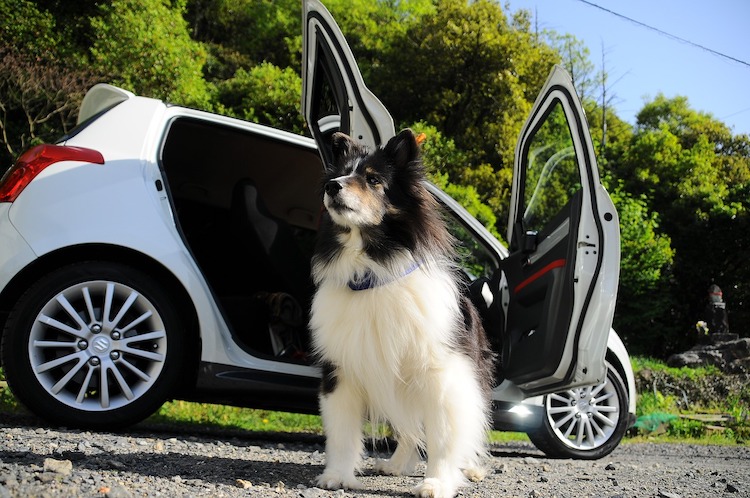
Another option includes spending at least a couple of weeks engaging the dog in a game inside the car but with the doors open so your pet doesn’t feel trapped.
Also try other strategies, such as feeding meals inside the car (perhaps invest in a waterproof seat cover) so your dog sees the car as an extension of the home.
Once the dog is willingly jumping into the vehicle, you’re ready to progress. Take things slow, though — move on to the next stage only when your dog’s tail is in the air rather than between their legs.
Introduce one new change at a time, giving them plenty of time to accept each step.
A retraining journey includes:
- Shutting the car doors
- Starting the engine but keeping the car in park
- Reversing a few feet, then driving back to the parked position
- A short, straight drive up the road
- A short drive around the block, then back into the drive
- A short drive in the neighborhood
All the while, remember the 3 golden rules:
- Praise their calmness.
- Stop before they become distressed.
- End on a positive note.

Car Climate
There’s nothing worse than a hot, stuffy car for making me feel sick when traveling, and the same is true for dogs.
- Make sure the vehicle is cool with fresh air circulating. It also helps some dogs if they can see out of a window — for smaller dogs, consider a booster seat or dog pod.
- Most dogs travel best with a handful of dry biscuits in their stomach, given 1–2 hours beforehand, rather than traveling with a totally empty stomach.
- Stop frequently to let your dog stretch his legs and drink water.
Travel Medications
If you have an urgent journey to make, you may not have the time to desensitize your dog to car travel.
Medication may be your best way forward. At least then the dog will be spared the nausea associated with car travel.
Some people swear by traditional remedies, such as ginger or peppermint. There are also herbal options, such as skullcap and valerian, or quick fixes such as Rescue Remedy.
That said, these are not scientifically proven to be effective, and it’s best not to rely on them, especially for a long trip.
There are also these medications:
- Acepromazine (ACP): This is a sedative with an anti-motion sickness action. ACP isn’t suitable for short journeys, as the dog is groggy for around 8 hours. Also, some dogs have an adverse reaction where they become “hyper” rather than sedated, so test it out before committing to a long journey.
- Maropitant (Cerenia): This drug acts on the nausea center in the brain and turns it off. This makes it the ideal motion sickness tablet — it works for 24 hours without sedating the dog. The only drawback is the price.
Here are a few more great tips from Pet Health Network:

In short, reintroduce the car as a fun place to be, and use medication to stop your dog from feeling sick.
By preventing nausea and building new associations, you’ll find that along this path lies the promise of stress-free car travel with your dog.
Part 4: Why Are Dogs Still Riding in the Back of Trucks?
You’re driving down the road, windows open, hair blowing in the wind and music blaring.
It’s a gorgeous, sunny day that’s absolutely perfect for a road trip.
Until you spot something that puts a knot in your stomach — someone’s dog is freely riding in the bed of their pickup truck.
Not only that, but also you see the driver look down to switch the radio station, only to swerve away from the curb after looking back up. The dog, of course, bumps hard into the side of the truck bed, almost losing balance. The sight makes you cringe.
What do you do? There must be a law against something like this, right?
The straight answer is yes, there are laws against driving with dogs in the back of pickup trucks.
Unfortunately, those laws are sparse and certainly not all-encompassing.
According to the Animal Legal and Historical Center, as of 2017, only 5 U.S. states had laws in place to keep dogs out of truck beds:
- Connecticut
- Massachusetts
- New Hampshire
- Rhode Island
Even in those states, there are exceptions to the law.

How Dangerous Is it to Let a Dog Ride in the Back of a Truck?
DMV.org reports that thousands of dogs are killed each year riding in the back of pickup trucks.
That number doesn’t even account for all the injuries that don’t lead to deaths.
You know how gravel and dirt sometimes spray onto your windshield, resulting in tiny cracks in the glass? A dog riding in a truck bed is susceptible to that same gravel and dirt spray. If it’s forceful enough to crack a windshield, there’s no doubt it can harm a dog’s eyes, nose or even lungs if it’s breathed in.
Of course, there are also more obvious consequences, like a dog being thrown from the truck (or being slammed against the back of the cab) if the driver slams on the brakes or swerves.
How Dogs Can Ride Safely in a Truck
Drivers of pickup trucks should always ride with their dogs in the cab and strap them to the seat with a dog-friendly car restraint.
Yes, there are ways to secure crates to a truck bed, but even then, gravel and dirt could potentially damage a dog’s ears, eyes and throat.
And yes, there are ways to cross-tether a dog in a truck bed to prevent them from falling or jumping, but the same dangers remain.
The only real solution when taking your dog for a ride, no matter what kind of vehicle, is to safely secure them with a dog car seat or harness (in the back seat).
Sure, taking that extra step might delay the trip by a few minutes. But isn’t potentially saving lives worth it?
- Center for Pet Safety. “Gunner Kennel G1 Intermediate.” June 2015. https://www.centerforpetsafety.org/cps-certified/gunner-kennel-g1-intermediate/ .
- Becker, Marty, DVM et al. From Fearful to Fear Free: A Positive Program to Free Your Dog From Anxiety, Fears and Phobias . Fear Free, LLC. 2018.
- Horwitz, Debra, DVM, DACVB, and Gary Landsberg, DVM, DACVB, DECAWBM. “Air and Car Travel.” VCA Hospitals. 2013. https://vcahospitals.com/know-your-pet/dog-behavior-and-training-traveling-air-and-car-travel .
- DMV.org. “Traveling With Your Pet.” https://www.dmv.org/how-to-guides/pet-travelling.php .

Don’t leave your pet’s food safety to chance.
Sign up for petful’s recall alerts today. (it’s 100% free.).

Stay informed. Protect your pets.
Meet Petful
- How We Help
Pet Food Safety
- Free Recall Alerts
- Pet Food Recalls
- Report Problems
- Vet-Approved Recipes
- Adopt a Pet
- Privacy Policy
- Cookie Policy
- Terms & Conditions
© 2024 Petful® / P51 Capital All rights reserved. Petful does not provide medical advice, diagnosis or treatment. More information.
The ultimate dog-friendly summer road trip guide
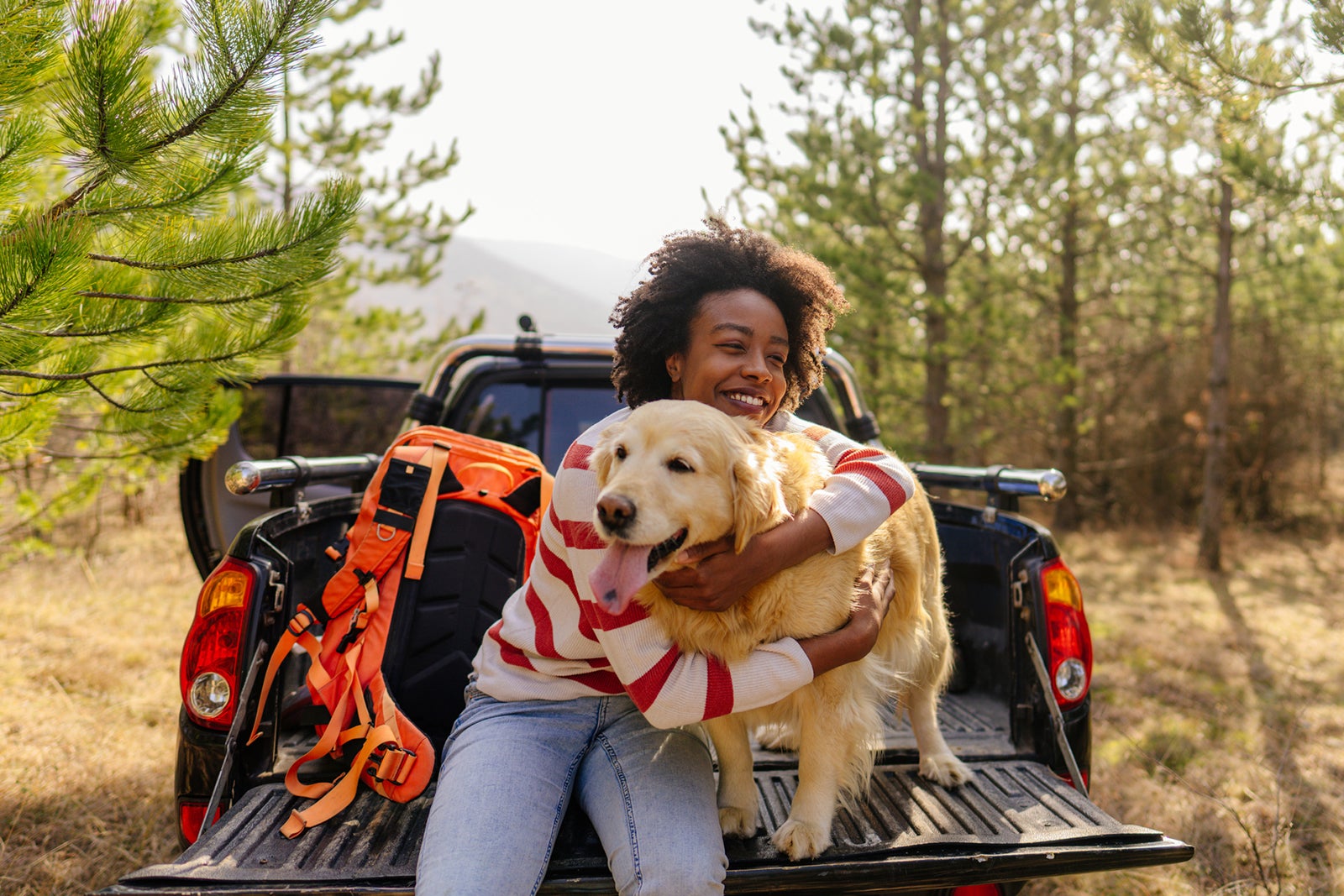
Not every dog mom or dad has an easy time leaving their pup behind (hi!). When it comes to summer road trips , why not bring Buddy along for the ride?
For pups that do well in the car (my Frenchie Jaxson loves soothing jams and good vibrations), road trips are a great way to include your canine companion in your adventures.
Unlike air travel, most vehicles provide plenty of room for your pooch. It also provides freedom and flexibility to plan and pivot as you see fit, along with increasingly appealing options when it comes to dog-friendly accommodations .
Still on the fence? We've broken down everything you need to know, prepare and pack so you can bring your favorite tail-wagger along on your next exciting road trip.
Buckle up Fido
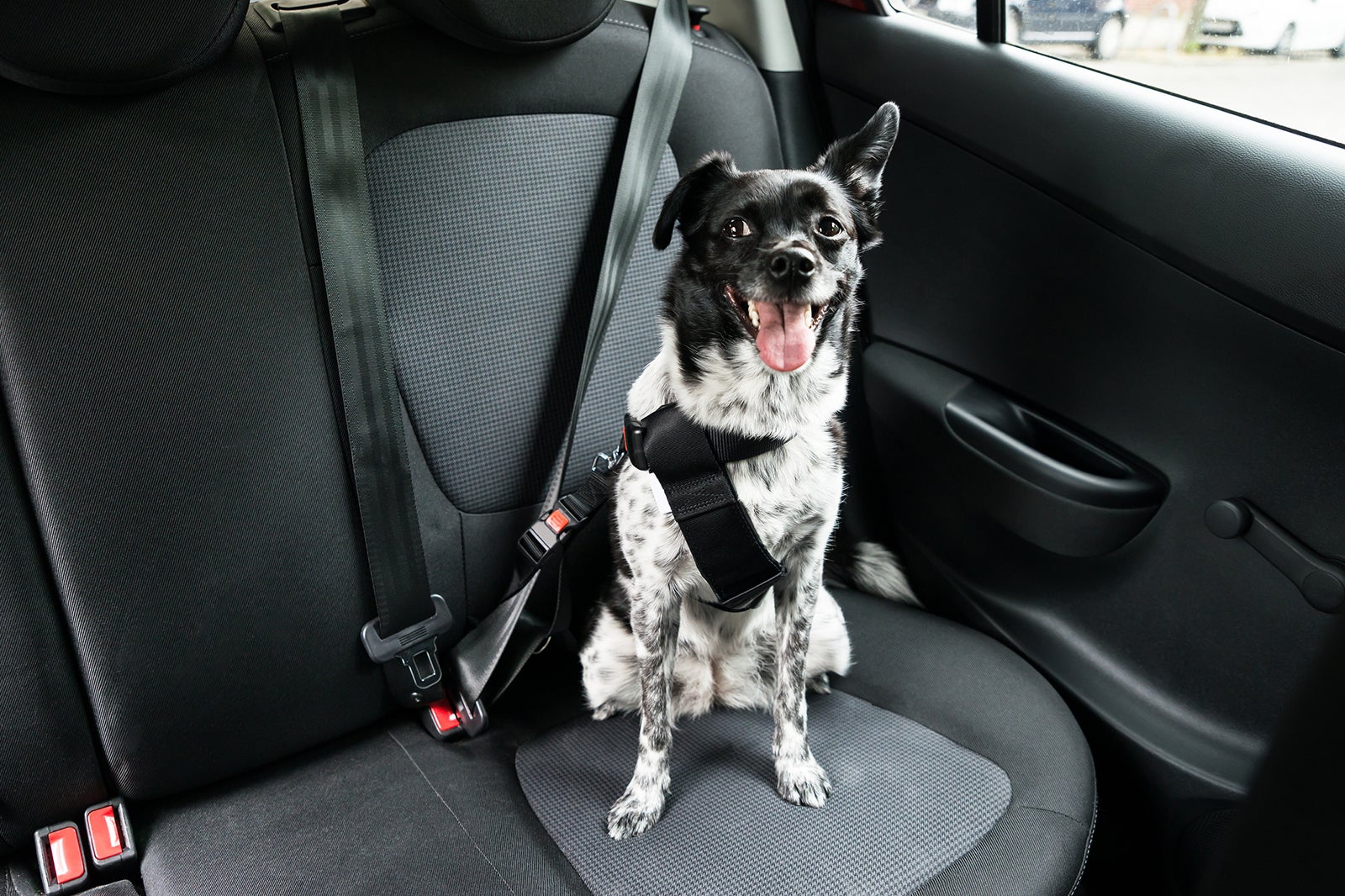
The term "precious cargo" applies to more than just the little ones. Ensure your four-legged friend is safe and secure before you leave your driveway. Lucky for you, there's a plethora of options that cater to your dog's security while on the road.
Secure a seat belt
My personal preference is a dog-friendly seat belt, including an actual harness seat belt or seat belt restraints like the EZYDOG. If your dog does well cozied up on the actual seat of your car, this is a great choice. Make sure the seat belt is tightly fastened to the dog and that it properly clicks into the seat belt jack before you get moving.
Use a car seat or booster
Yes, doggy car seats are a thing. These typically also buckle into the seat belt and can be tethered to the dog's harness or collar for a second level of security. Or you can opt for a booster seat like the Kurgo , which also buckles in and offers a bit more space while keeping your doggo in place.
Fasten a hammock
Looking for a cool lounge vibe for your pup by creating a padded cradle to keep your dog contained? Strap up a hammock — also great for keeping dog hair and treat crumbs contained. However, this option is best paired with a dog seat belt because the hammock alone won't secure your pup.
Set up a crate
If you have a larger vehicle with plenty of breathing room and your dog does well crated, this may work for you. Keep in mind you will need to find a way to secure the soft crate so it stays in place. Consider a travel crate that is impact-safe. Note that crating may not be the best option for anxious pups.
Build a barrier
If you have a large dog and an even larger cargo area, you can secure a barrier made of netting or metal bars. This also works if you have more than one dog and a designated section of the vehicle reserved just for them. The cargo bars may keep the dogs from traveling within the vehicle, but they won't secure your dog, so use a seat belt.
Create a comfort zone
Dogs sleep an average of 14 hours per day, which means once safely fastened, your pooch needs a comfortable place to rest and relax while you're taking in the scenery. Make sure your dog has enough space to stand up, turn around and adjust as needed.
A good rule of thumb is to provide a space as large as their standard dog bed. In fact, taking your dog's actual bed is one easy solution. Don't want to take the regular dog bed on the road? Buy one for the trip and let your pup cuddle up in prep so they know exactly what to expect on departure day. Bonus: they'll have infused the bed with not only their scent but familiar ones from inside your home.
Help your dog feel cozy by adding a blanket or a few soft toys.
Breaking down the basics
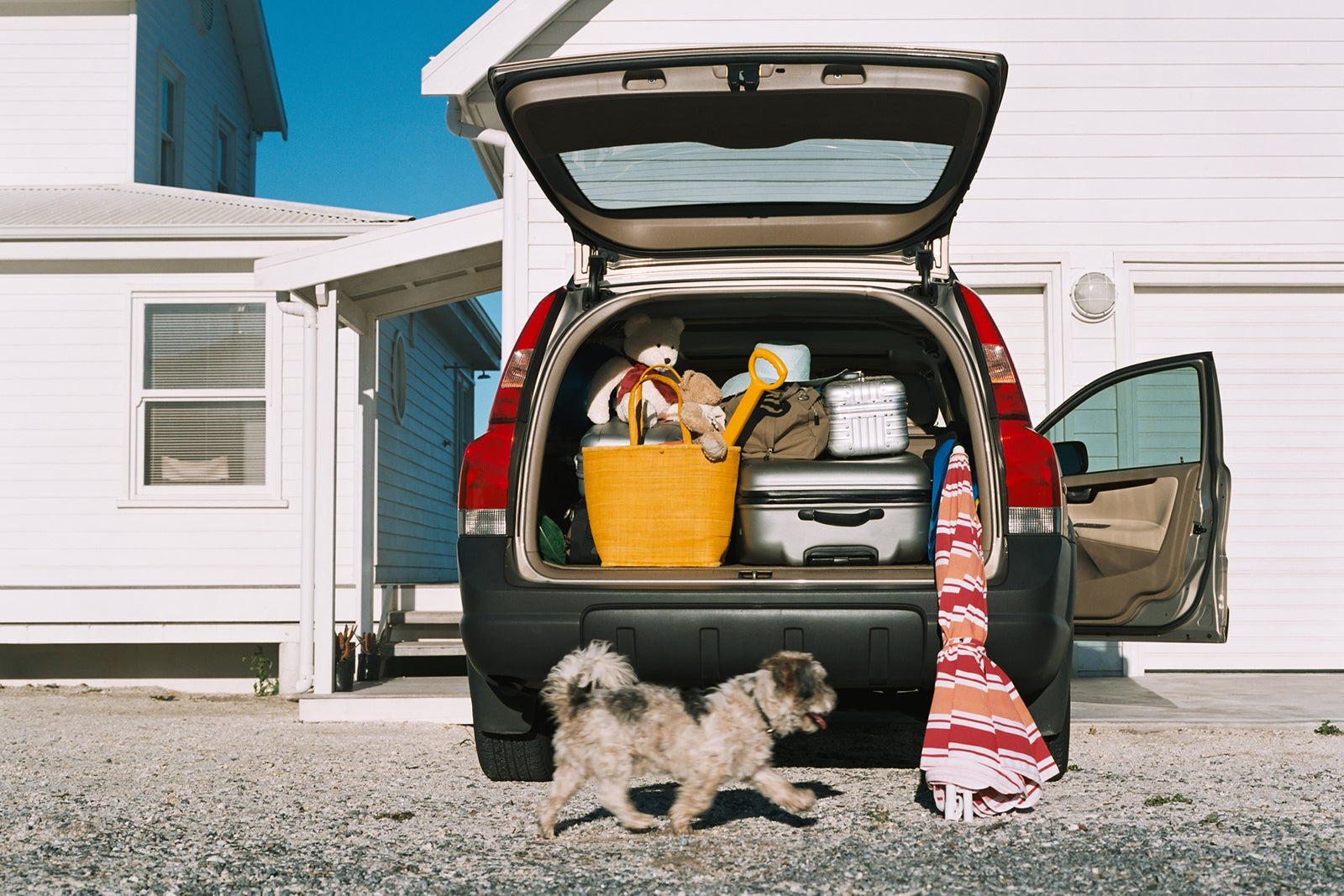
With so much packing and planning, don't forget the bare necessities, as well as toys and chews that will keep your dog happy throughout your journey.
Necessary accessories
Typically, these include a collar/harness (with current ID tag) and leash, pet waste bags and food and water bowls. Collapsible silicone bowls are also handy and great for excursions.
Soft, plush toys are the safest for road travel. Consider soft toys your dog cannot tear into easily. Perhaps leave the squeaker toys at home, as well as rope toys – both are choking hazards, and no incessant squeaking may preserve your zen mode.
Bones and chews
Stock up on bones, chews, bully sticks and rawhides. However, make sure you stow them for long stops or once you are at your lodging accommodations – these are choking hazards, too. Fillable cones like rubber Kong toys also fall into this category.
Outdoor toys
If your pup loves playing fetch, make sure to pack tennis balls, frisbees and ball launchers for fenced stops and dog parks.
Related: A comprehensive guide to traveling with pets
Food, glorious dog food
Everybody's got to eat, including Bowser. Dogs consume two kinds of foods: dry and wet. The most convenient food is dry kibble. Many brands sell 5-pound bags, which makes it easy to grab one (don't forget the measuring cup) and keep it with you for a long haul. If you're taking a shorter trip, you can portion the food ahead of time into meals in reusable silicone bags.
In terms of wet food, it should be as easy to purchase the cans or packets you need. However, be cautious of temperature advisories. For example, if your pup takes wet food (or freeze-dried food) that should be stored at or below a certain temperature, you will need to make this accommodation. Pack a small cooler dedicated solely to your dog's food.
If you forget your dog's food, run out or thought you'd be able to purchase it when you arrived at your destination but can't find it, buy a food with a similar ingredient list and arm yourself with one secret ingredient: organic, canned pumpkin.
"The fiber in the pumpkin may help avoid any digestive disturbances the new food may cause," offers Johnna Devereaux, clinical pet nutritionist and director of nutrition and wellness for Bow Wow Labs.
Don't forget about dog treats. You should include these in your food inventory. Also, consider packing some extra to reward your pup for being a good boy or girl throughout the journey.
Additionally, make sure to pack your pup's vitamins and supplements. It's important to keep up with your dog's regular nutritional routine – the road is no exception. If your dog tends to have a nervous belly when traveling, consider ginger root as a solution. "Ginger root may help calm and unsettle stomach and is best given just before departure," Devereaux suggests.
TPG tip : Store the dog food and treats out of range from where your pup will be seated in your vehicle so they aren't tempted by the familiar scent.
Pack an emergency stash
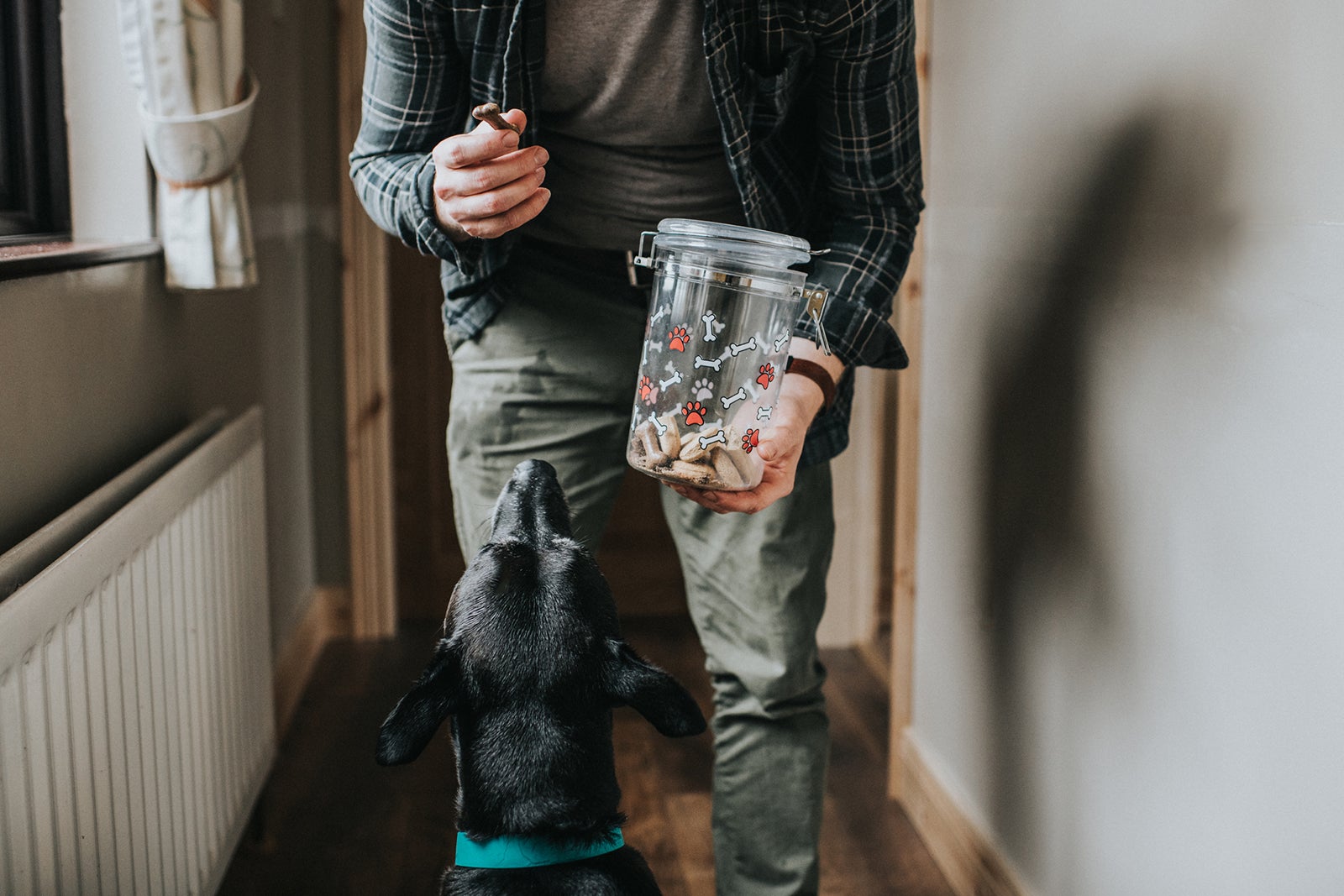
Just like you packed yourself an emergency sustenance stash of protein bars and trail mix, you should the same for your loyal companion. There are a lot of unknowns associated with the open road. You could be delayed by weather or a car issue, and you will need to prepare extra dog food just in case. (I like to pack two additional days of food, at minimum.)
Splurge a little
Obviously, stopping for special treats and indulgent meals is one of the best parts of a road trip. When your pup accompanies you, they should be no exception to the rule. Once you've carved out your route and itinerary, do your due diligence to find some pitstops for Spot. (While the occasional Starbucks puppuccino can be fun, it's best not to make that a daily treat.)
Pet bakeries
For fresh gourmet treats, bookmark these bark-worthy bakeries with outlets nationwide:
Woof Gang Bakery & Grooming: Not only will you find gourmet mix-and-match treats, but if your companion could use a refresh, jump into the grooming schedule. Founded in Florida, this barkery now has 200 locations in 18 states, from North Carolina to New Jersey and Colorado to Las Vegas.
Three Dog Bakery : Find fresh-baked treats from "collieflower pupcakes" to eggs-and-bacon-shaped cookies in Indiana, Tennessee, Kentucky, Missouri, Texas, Minnesota and other states.
The Dog Bakery : Want to celebrate your pup's birthday on the road? Order a celebration cake. Or, settle for delicious biscuits, jerky and assortment treat packs with locations across California.
Hotel pampering and doggy socials
Want to spoil your pup? Plan a hotel stay where you can treat your pup to a gourmet meal or just stop for a relaxing dinner at a doggy social club.
Loews Hotels : In addition to a check-in care package featuring treats, bowls, placemats and waste bags, there's a full gourmet room service menu for dogs developed by the hotels' executive chefs. Serve up bow wow tenderloin of beef, a mix of filet, eggs and rice, or chicken puppy bites, tender shredded chicken with carrots.
Four Seasons Resort Orlando at Walt Disney World : Once you're done devouring Mickey Mouse pops and jumbo turkey legs, order K-9 crudite, the hot diggity dog (scrambled eggs, rice and veal stock), and frozen peanut butter and banana bites for the doggy.
Lazy Dog Restaurants : In Florida, Virginia, Texas and Colorado, this casual dining chain services pup-friendly brown rice bowls with grilled hamburger or grilled chicken.
Boozehounds in Palm Springs , California : This restaurant features dog-friendly outdoor spaces, as well as a dedicated dog menu that includes teriyaki salmon bowls, gazpacho, loaded sweet potatoes and doggie TV dinners.
Pacific Hideaway in Huntington Beach, California : Inside the Kimpton Shorebreak Resort, Pacific Hideaway welcomes dogs on the outdoor patio where they can enjoy three savory menu items: chicken and white rice, fish and sweet potato, and beef and vegetable.
Bark Social in Bethesda and Baltimore, Maryland : This social club for dogs serves craft brews, nachos and pizza for you, and pupcakes, pupsicles and chicken strips for your doggo.
Don't forget the H2O
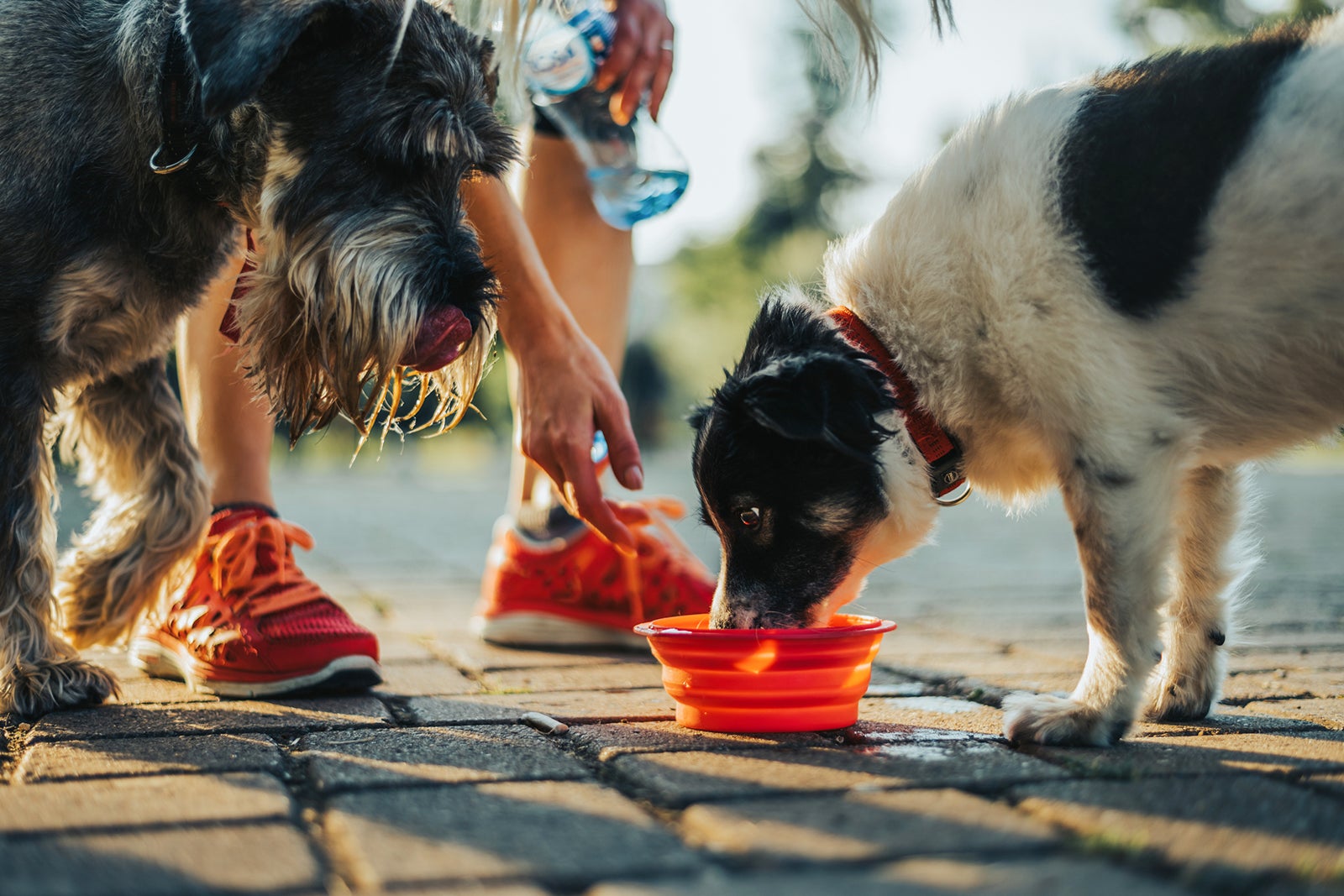
It goes without saying that water is a necessity for summer road-tripping dogs and humans alike. Even though you may have done your research about your trip ahead, it's likely you won't know much about the water quality at each stop.
According to Illinois-based veterinarian Dr. Allison Pepich, your dog needs a rough estimate of at least 1 ounce of water per 0.5-1 pound of body weight. For example, a 30-pound dog would need between 15-30 ounces of water per day at a minimum, but it could be more depending on their fluid losses throughout the day.
"If they will not drink water while in the car, giving them water at rest stops throughout the journey is recommended," Dr. Pepich said. "The more panting, activity, or just general fluid loss that your pet has, the more water they will need."
Always store a few extra gallons of water in your car — in a cooler is even better.
Avoiding the dehydration danger zone
As the weather warms up through the summer months, Dr. Pepich says dehydration and overheating could be a concern during extended car travel.
"If you feel that your pet is experiencing either, the safest option is to get them to the nearest veterinary clinic for evaluation," she said. "Pets can often mask signs that they are not feeling well, especially if they are already anxious from travel. Watch for signs of reduced energy, poor appetite, not drinking well, tacky mucus membranes (gums), or heavy panting."
A normal temperature for a dog is between 100-102 degrees Fahrenheit, and the most accurate way to check this is with a rectal thermometer – add this to your first-aid kit (more on that below), according to Dr. Pepich.
In order to avoid dehydration and overheating, Dr. Pepich says never to leave your pet alone in the car during travel. Also, keep the car at a comfortable temperature while traveling. If you spend time outdoors, make sure your pet has a cool, shady area to go to for rest. Dr. Pepich also recommends paying extra attention to breeds that may be at significant risk for heat stress. These are typically brachycephalic dogs like French bulldogs, pugs, shih tzus, boxers, Boston terriers and others.
Meds and first aid
Before you head out, make sure you have medication and first-aid options for your pup, too. The Red Cross offers a comprehensive list of what to pack , which includes many household items that will come in handy. Some include latex gloves, gauze, tweezers, a muzzle, rubbing alcohol, antibiotic ointment, a baby-dose syringe, 3% hydrogen peroxide, an emergency blanket, sterile saline wash, petroleum jelly, cotton swabs and needle-nose pliers. As mentioned above, make sure to pack a rectal thermometer for temperature checks.
De-stressing your doggo
Additionally, take extra precautions if your dog tends to get easily stressed.
"There are a few over-the-counter products that can be used for stress reduction during car trips," Dr. Pepich said. "My favorite products are Rescue Remedy and Adaptil pheromone products. You can also use CBD products, but I've found success varies considerably across different products."
If your dog gets carsick, Dr. Pepich recommends using an anti-nausea medication or one aimed at treating motion sickness may help calm their car-related anxiety. Before your trip, discuss prescription anxiety medications for car travel with your vet, "though the specific product prescribed may vary greatly depending on your dog's needs," according to Dr. Pepich.
For the record
Whether digitized or hard copies, keep your dog's latest vaccination records on hand. If your dog is microchipped, make sure you have the ID number and registration information before you leave. Confirm you also have a collar with an ID tag that displays your most up-to-date contact information for peace of mind.
TPG tip : Work in advance to help your dog get comfortable in the car. If there are signs of car-related anxiety, employ a trainer to help desensitize your pup to car trips.
Keep 'em clean
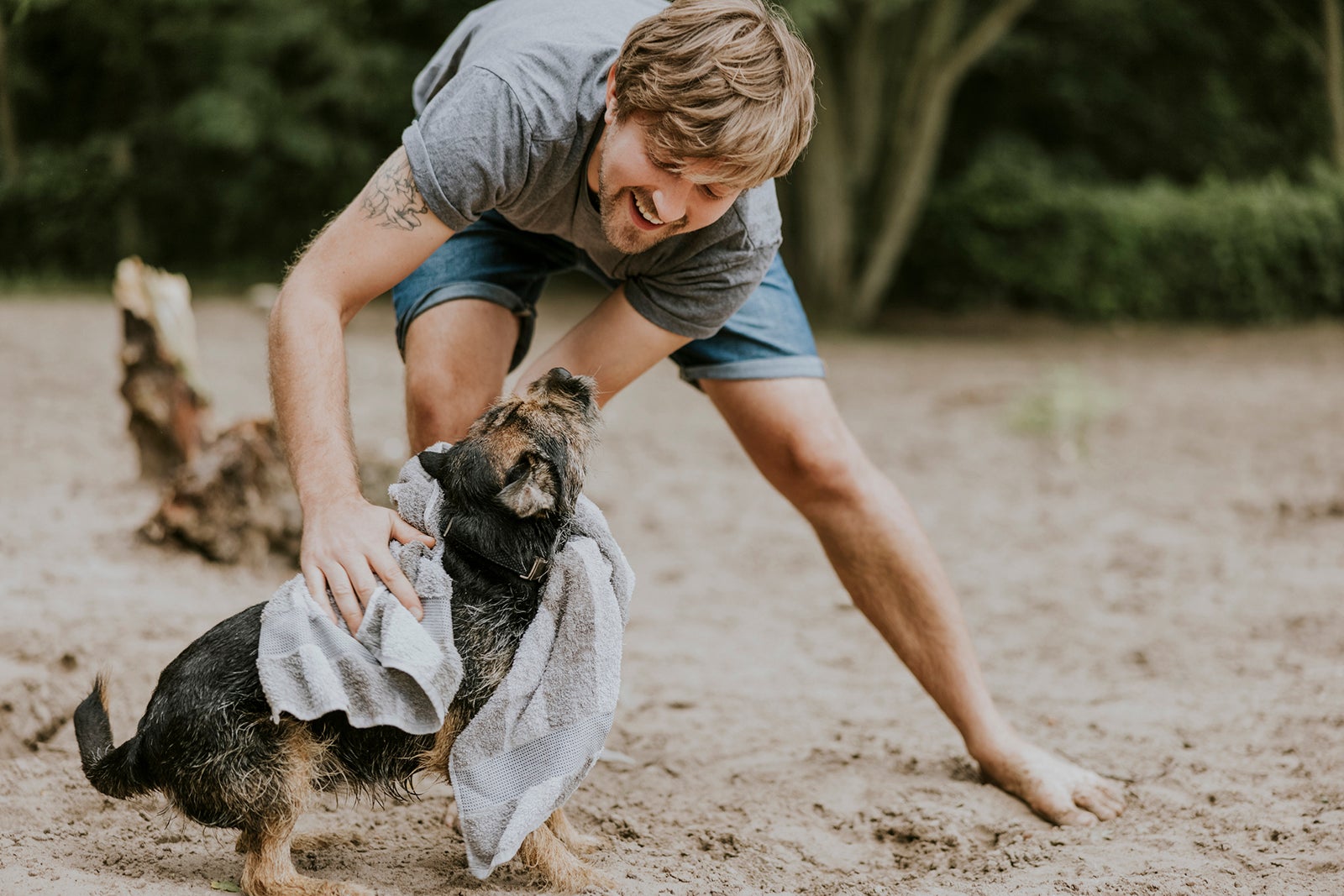
Grooming on the go can be a pain, so make sure your car is stocked with the essentials. You can very easily craft a handy DIY travel grooming kit with these necessities:
Shampoo : Whether your furry friend enjoys regular puppy spa appointments or bath time at home, it's important to pack a bottle of your pup's shampoo – just in case. If your hotel or lodging doesn't happen to have a bathtub or sink to refresh Sparky, opt for a dry shampoo. Test out any new products in advance so you aren't dealing with any unpleasant surprises like allergies or skin reactions.
Wipes : Pet wipes can be a lifesaver when traveling. They're great for muddy paws at a rest stop to avoid caking dirt onto your leather seats and a full wipe-down from outdoor dander, pollen and the elements. Try these out at home before the road trip and opt for scented or unscented based on what works best for the doggy.
Nail clippers : Either a manual tool or an electronic device, a set of dog-friendly nail clippers are handy. Just like human nails, dog nails and dewclaws (essentially the thumbs and big toes) can split while adventuring and be painful for your pup.
Toothbrush : It's important to stay up on your doggy's dental hygiene. Grab a small travel-size toothbrush for longer trips.
Scissors : While you may pack these for your own emergency kit, you can also use them to remove fur tangles on long-haired dogs.
Dog waste bags : Do the math on the length of your trip and how many times your dog does his or her business per day to determine how many poop bag rolls you need. Pack a couple of extra rolls for any surprise messes along the way.
Related: The 15 best dog-friendly hotels in the US you need to know about
Bottom line
Don't let hitting the road with your favorite furry friend intimidate you. There may be plenty of prep work, but once you're en route, it will be worth it.
Dogs make amazing summer road-trip companions, whether heading out solo, as a couple or even with the kids. With so many dog-friendly lodging, activity and dining accommodations, there's no reason to board your bestie or spend hundreds on a dog sitter this summer.
The best part about dog-friendly road trip travel is that you never need to "ruff" it because everything is accessible along the way. So, what are you waiting for? Rev up, hit the cruise and lift that sun "woof."
Related reading:
Top pet-friendly Marriott hotels for animal lovers World's top pet-friendly Hilton hotels for animal lovers 8 things to consider before flying with your pet Your pet travel primer: Answering questions about vaccination records, EU pet passports and how to find dog-friendly restaurants
- Health & Wellness
- Super Extra Dog Parents
14 Tips For Taking A Road Trip With Your Dog
How to make road trips with dogs go smoothly..
Published on 2/19/2022 at 12:00 PM

Road trips with your dog can be a ton of fun.
It can definitely get stressful at times, though, so you’ll want to be prepared.
The Dodo interviewed veterinarians and dog trainers to learn their top tips for taking a road trip with your dog so the car ride can go as smoothly as possible.
Check in with your vet
Before going on your trip out of state, schedule an appointment with your veterinarian to make sure your pup has what he needs to travel.
“Dogs may need new vaccinations or protection against different types of parasites when they travel,” Dr. Jennifer Coates, a veterinarian from Pet News Daily , told The Dodo. “Many states require that incoming pets travel with a current certificate of veterinary inspection, which indicates that your pet was healthy at the time of examination and is up to date on required vaccines.”
At your appointment, ask your vet for a copy of your pup’s medical records to bring along with you, just in case — “especially if your dog is being treated and/or monitored for a condition by your veterinarian,” Dr. Sarah Nold, a staff veterinarian at Trupanion , told The Dodo.
If your pup has any travel anxiety or motion sickness, now is also a good time to check in with your vet about treatment options (more on that below).
Make sure your dog has proper identification
Losing your dog in a location you’re unfamiliar with can be really scary. So before your trip, make sure your pup is microchipped and has an ID tag, which will make it easier for you to find your pup in case he gets lost.
“Have your dog microchipped to help with identification if they should get lost,” Dr. Nold said.
And if you’re looking for an ID tag, try this GoTags Stainless Steel Pet ID Tag from Amazon for $7.95 .
Take practice trips
“Traveling can be stressful for pets,” Dr. Coates said. “Expose your pet to as many of the trip’s experiences as you can prior to leaving.”
Start by taking short practice trips in the car that end at places he enjoys, like the dog park, for example. And “feed them treats while they are inside,” Dr. Coates said. That way, your dog will start to associate car rides with positive experiences.
You can also train your dog to be calm in the car by reinforcing relaxed behaviors while on the road. “Proactively reward your dog and give him loads of attention and appreciation when he's being calm and relaxed in the car,” Siddhika Bhat, a professional dog trainer and founder of Wag a Bond , told The Dodo.
Get him used to his crate (if he’s using one)
Crates are a safe and popular way to travel with dogs in the car. If you plan on securing your pup in a crate for a road trip , though, you should plan to get him familiar with it long before you leave.
“Get him used to extended, positive and well-engaged crate time starting at least two weeks in advance,” Bhat said.
If your dog’s never used the crate before, you can start exposing him to it slowly in your home. “Get pets comfortable with spending time in their crates at home,” Dr. Coates said.
Place the crate out in plain sight in an area in your home your dog likes to hang out in. Keep the door open and throw treats inside to entice him to walk in. You can even feed his meals from inside the crate. If he starts feeling more comfortable, you can shut the door little by little until you can close it completely without any fuss from your dog.
It’s important to take it really slow when introducing your pup to a new crate and make the experience really positive for him. That way, he’ll have no problem hanging out inside during your road trip.
Once your dog’s comfortable being in the crate at home, take practice drives in the car with him in the crate before leaving for the longer drive. “Make sure those trips end up in your dog's favorite places,” Bhat said.
Address car sickness or anxiety
It’s possible for dogs to feel car sickness and experience anxiety during car rides . If your pup is showing signs like restlessness, shaking or panting before or during car rides, he could have either condition.
Luckily, prescription medications can help in these cases. “Your veterinarian can prescribe medications that will help keep your pet relaxed and relieve nausea,” Dr. Coates said. “Talk to your veterinarian about whether this is an appropriate option for your dog.”
If your pup gets nervous in the car, nutritional supplements and pheromone sprays or collars can also help, Dr. Coates said.
Try the Finn Calming Aid supplement from Finn for $28 (We tested this product on our own dogs and gave it our Paw of Approval !)
Try Adaptil Calming Spray For Dogs from Amazon for $16.50
Make sure your destination is dog-friendly
Before taking your pup for a long car ride, you should make sure any place you’re staying at will welcome your pup.
So if you’re staying at a friend’s house, make sure they’re 100 percent aware and comfortable that you’re bringing your dog along with you.
And “if your final destination includes a hotel, make sure you understand and are comfortable with their pet policy before booking in advance,” Dr. Nold said. It’s a good idea to call ahead of time and speak to someone to ensure your arrival goes as smoothly as possible.
Plan ahead for messes
Pups make the best travel partners, but they can make things a little dirty. You’ll thank yourself later by bringing along products that can protect your things and clean up any messes.
Car seat covers are especially effective at making sure the interior of your car stays protected.
“There are seat protectors that drape between the front and back seat to help protect your car from fur, vomit or any accidents your pet may have,” Kayla Block, a dog trainer and owner of Understanding Dog Training , told The Dodo.
“They can help protect upholstery in case it’s raining or snowing during your breaks outside of the car,” Dr. Nold said.
Try the dog seat cover for dogs from Orvis for $149+ (We tried it with our own dogs and gave it our Paw of Approval .)
Bringing extra towels and trash bags can also help keep your car tidy when traveling with a pet. “I never travel with pets without at least a roll of paper towels and a small trash bag!” Block said.
Secure your dog in the car
“It's important for dogs to be safe in the event of a crash,” Block said. “A dog that isn't secured in some way can become a flying missile and even fly out of the car.”
According to Dr. Coates, a dog crate is the best way to travel with a dog, though a pet seat belt with a harness can also keep your pup safe.
“Dogs are safest and usually more comfortable if they travel by car in a crate,” Dr. Coates said. “Secure the crate so that it can’t move around. Line the crate with some comfortable bedding that smells like home.”
Try the Amazon Basics Portable Folding Soft Dog Travel Crate Kennel from Amazon for $40.98
“If a crate isn’t an option, make sure your dog wears a pet seat belt,” Dr. Coates added. “Crates and seat belts help keep dogs safe in case of an accident and prevent them from escaping the car or interfering with the driver.”
Try the Kurgo Tru-Fit Enhanced Strength Dog Harness from Amazon for $44.95
“Any of these options will also keep your dog out of the driver's lap, and that helps keep everyone safe,” Block said.
Bring enough food for the trip
“If possible, bring enough food to last the entire trip, as a change of food can cause stomach upset in some dogs,” Dr. Nold said. “It may help to separate food for each day/meal into separate containers.”
Keep your dog hydrated during the drive
Your pup should always have access to fresh water, even during road trips. “Collapsible bowls and a supply of fresh drinking water will help keep your pup hydrated on the road,” Block said.
Try the SLSON collapsible dog bowls from Amazon for $5.99
Take a long walk before leaving
Exercising your pup before the long car ride will help get rid of any pent-up energy that would cause him to feel restless.
“It's a good idea to take your dog for a good, long walk before the road trip begins so that he's in a naturally calm and relaxed state,” Bhat said.
Make frequent pit stops
“Frequent pit stops are the best way to keep dogs happy and calm during a road trip,” Dr. Coates said. “Plan out your route in advance so that every few hours you will be able to take your dog out for a walk to burn off some energy, get a drink of water and take a potty break.”
And if you’re stopping at a gas station to take your pup for a walk, don’t take your pup out near the pumps. “You may want to drive to the side before taking your dogs out for a potty break,” Block said. This is because your pup might find antifreeze on the ground near the pumps, which could make him sick.
Keep your pup occupied on the road with toys
Long car rides can get super boring for pups, but bringing a toy that can keep his attention for a while will help.
“Carry a LickiMat with some peanut butter or your dog's favorite treats in semi-liquid or paste form,” Bhat said. “Licking is an excellent self-soothing activity that calms your dog's nerves and keeps him engaged.”
Try the LickiMat Slow Feeder for Dogs from Amazon for $14.95
The Classic KONG is also a great interactive toy that will keep your pup occupied during a road trip.
“You can give him a frozen KONG toy with his favorite stuffing inside,” Bhat said. “This will keep him engaged for a longer time and will encourage chewing, licking and biting, which are all stimulating activities for a dog.”
Try the Classic KONG from Amazon for $10.99
Keep in mind that some long-lasting chews for dogs can be dangerous, so it’s probably a good idea to stay away from them — especially during a road trip when you can’t keep a close eye on him.
“Avoid giving bones or chew sticks to avoid accidental ingestion or possible injury to your dog's mouth when the car hits a bump,” Bhat said.
Take it slow
No matter where you’re going on your road trip with your pup, make sure you’re not in a hurry.
Taking your pup along with you will naturally make the trip take longer than normal. Having to speed things along can add to the stress and potentially jeopardize the safety of you and your precious cargo!
“Don’t expect to make record time on your road trip if you have your dog with you,” Dr. Coates said. “Use your dog as an excuse to take a lot of breaks and explore areas along your route that you wouldn’t have seen otherwise.”
Dog road trip essentials
“Start planning for your trip by making a list. This will help assure you don’t leave home without something important,” Dr. Nold said.
Here’s a checklist of supplies that will come in handy on a road trip with your pup:
- Dog crate or seat belt with a harness
- Dog food (enough for the entire trip)
- Dog food storage containers
- Fresh water (enough for the car ride there)
- Collapsible dog water bowl
- Interactive dog toy
- Dog car seat cover
- Paper towels
- Medical records/proof of vaccinations
- Anxiety or motion sickness medication (if using)
Going on a road trip with your dog is a great way to travel long distances with your favorite companion. It can get stressful at times, but with some preparation and the right products, you and your pup will have a smooth, fun trip that you’ll always remember.
The Best Car Accessories For Dogs
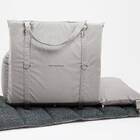
Max Bone Travel Home and Car Seat

Mobile Dog Gear Dine Away Dog Travel Bag

MalsiPree Dog Water Bottle

K&H Travel Safety Pet Barrier

Moso Natural Air Purifying Bag

Grip-Tight® Quilted Microfiber Hammock Seat Protector

Furbliss Hygienic Pet Wipes For Dogs & Cats
We independently pick all the products we recommend because we love them and think you will too. If you buy a product from a link on our site, we may earn a commission.
Crate and Cage
We Love Pets! All Types / Sizes
25 Easy Tips for Car Travel with Dogs

Car travel with dogs can be an exciting adventure, but it requires plenty of preparation and planning. From packing the essentials to keeping your pet calm during the journey, there are a few things you need to consider before embarking on a road trip with your canine companion.

Here are some helpful tips for stress-free car travel trips with your dog.
Introduction to Traveling with Your Car Dog
Traveling with your pup can be a fun and rewarding experience, but it’s important to do your research and plan ahead to ensure your trip goes as smoothly as possible. Before you hit the road, make sure you’ve done your homework and taken all the necessary precautions.
Is it stressful for dogs to travel by car? It can be, but with proper precautions and preparation stress levels can be minimized.
- First, check your destination’s laws and regulations regarding pet travel. You may need to bring along certain documents, such as your pup’s vaccination records.
- Second, consider your pup’s personality and whether it’s a good fit for the type of journey you’re embarking on. Some dogs may be better suited to shorter trips, while others may be able to handle longer, more strenuous journeys.
- Third, some motels, hotels, and campgrounds have limitations for dog size that are allowed in their facilities. They sometimes have policies against breeds they consider aggressive or disruptive. It’s a good idea to call ahead and make sure your pet will be welcome.
- Fourth, get a check-up at the veterinarian, who can advise you whether an over the counter dog sedative for car travel is appropriate for your pet and what to give a dog for a long road trip.
Finally, think about the type of vehicle you’ll be using to transport your pup. If you’re planning on taking a long road trip, you may want to invest in a car or van with plenty of space for your pup and all their gear.
Outfitting Your Dog for Car Travel
Once you’ve chosen your mode of transportation, it’s time to get your pup ready for the journey.
Investing in the right car accessories is essential to ensure your pup is safe and comfortable during the trip. This includes items such as a car seat or booster, harness, and a dog bed.
A car seat or booster helps keep your pup safely secured in the car. It also helps to reduce distractions and allows them to keep an eye on the scenery. A safety harness is also essential to keep your pup securely in place while traveling.
Having a comfortable dog bed is important for long trips, as it will provide your pup with a place to rest and relax.

Pre-Trip Checklist for Traveling with Dogs by Car
Car travel with dogs doesn’t have to be difficult. Getting your dog accustomed to being in a confined space it a big consideration. Short trips nearby to the post office, dry cleaners, or other short errands help get your dog used to the motion of riding in a vehicle.
Are dogs OK on long road trips? Smaller dog breeds travel well but traveling with larger dog breeds is more challenging. A mastiff, Great Dane, or Saint Bernard requires more preparation than a poodle, cocker spaniel , dachshund , or Boston terrier.
Traveling with dogs in a large SUV is easier than traveling in a small sportscar. A seven-passenger vehicle has more room for extra passengers. Dogs can have their own space to lay down and chill without disrupting other passengers.
A two-passenger vehicle makes taking a pet along almost impossible. A mini-van, four door sedan, or crew-cab pick-up truck are all good candidates for taking a dog along for the ride.
Before you hit the road, there are a few things you should do to make sure your pup is safe and comfortable during the journey.
- First, make sure your pup is up to date on their vaccinations and has all the necessary paperwork. You may also want to schedule an appointment with your vet to have your pup checked for any underlying health issues.
- Next, pack all the essentials, including food and water, treats, toys, and anything else your pup might need during the trip.
- Don’t forget to bring along a first aid kit, as well as any medications your pup is taking.
- Be sure you have a plan for potty breaks and feeding schedules.
Safety Tips for Car Travel with Dogs
Before embarking on a road trip with your pup, it’s important to consider their safety. Make sure your pup is securely restrained in the car. This can be done with a car seat or booster, as well as a harness or safety belt. The Center for Pet Safety has a list of certified accessories that will help make traveling safe.
It’s also important to be aware of your pup’s comfort level in the car. If your pup is anxious or uncomfortable, try to make frequent stops to give them a break.
If you’re traveling in areas with extreme weather conditions, make sure to take the necessary precautions to keep your pup safe and comfortable.

- What’s the safest way to travel with dog in car? It’s best to keep your dog in the back seat. In the front seat they are a distraction for the driver and there is risk of harm if the vehicle needs to make a sudden, emergency stop in heavy traffic.
- Should I keep the dog in a crate while traveling in cars? Maybe. You know your dog best. For dogs that become overly excited riding in vehicles, a crate may be the best option. Training for obedience is helpful as well. A well-trained dog responds to commands and has better manners while traveling.
- Can dogs travel in car for 12 hours? Maybe. Every dog is different. Some dogs love to travel and others don’t do well over long distances. There are several considerations to prepare your dog for traveling that should help improve comfort for dogs and drivers.
- How to travel with 2 dogs in car – Start with a medium to large vehicle. Keeping one dog in the back portion behind a partition and the other in the area behind the front-seat is an option that works for many. You may need to consider using a crate for each dog, if there is any question about whether your dogs tolerate being confined in small spaces together.
Keep reading for more insights and suggestions.
Keeping Your Dog Calm During Car Travel
Traveling with your pup can be a stressful experience, so it’s important to take steps to keep them calm and relaxed during the journey.
Start by familiarizing them with the car. Practice entering the vehicle, sitting for a while, and then exiting. It takes a while to coax some dogs into responding well to new surrounding but with a little practice most does learn to love riding in vehicles. It’s in their nature to crave being near their owners, wherever that may be.
Begin taking short trips to get them used to the environment. For example, if you are planning to take you dog on a 4-hour trip to visit relatives, try a few shorter 1-hour trips to gauge your dog’s response.
You can also try setting up a comfortable space for your pup in the car.
- Invest in a car seat or booster and a cozy dog bed to give them a place to relax.
- Try to keep the car cool and well-ventilated.
- Never leave your dog unattended in a vehicle while traveling. It’s not worth the risk.
Potty Breaks & Feeding Schedules
It’s important to plan for regular potty breaks and feeding schedules when traveling with your pup. Make sure to plan for at least one potty break every few hours, depending on the length of your trip. Additionally, feed your pup at regular intervals, such as every four to five hours.
Be aware of any local laws and regulations regarding pet waste, especially in areas where pet waste is prohibited. If you’re staying in a pet-friendly accommodation, make sure to follow the rules regarding pet waste disposal.
Tips for Taking a Break During Travel
Long car trips can be tiring, not just for you but for your pup as well. To keep them relaxed and comfortable, it’s important to plan for regular breaks. This can include stops at pet-friendly parks or beaches, as well as rest areas or dog-friendly restaurants.
If you’re staying in a pet-friendly accommodation, make sure to take advantage of their amenities. Many pet-friendly hotels offer pet-friendly amenities, such as pet-friendly patios and fenced-in yards.
Accommodating Your Dog’s Needs During Long Car Trips
When embarking on a long road trip with your pup, it’s important to consider their needs and comfort level.
- Make sure you’ve packed all the essentials, such as food and water, treats, toys, and a comfortable bed.
- Plan for regular potty breaks and feeding schedules.
- If your pup gets restless during the journey, try to make frequent stops to give them a break. This can include stops at pet-friendly parks or beaches, as well as rest areas or dog-friendly restaurants.
Finding Pet-Friendly Accommodations
Finding pet-friendly accommodations while traveling with dogs in car long distances can be challenging, so it’s important to do your research and plan ahead.
- Look for pet-friendly hotels and vacation rentals that offer amenities such as pet-friendly patios and fenced-in yards.
- You can also look for pet-friendly restaurants and attractions in your destination.
Many cities offer pet-friendly attractions, such as dog parks, dog beaches, and pet-friendly trails.
Traveling with your pup can be a fun and rewarding experience, but it requires plenty of preparation and planning. From packing the essentials to keeping your pup calm during the journey, there are a few things you need to consider before embarking on a road trip with your canine companion.
- Make sure to do your research and plan ahead to ensure your pup is safe and comfortable during the journey.
- Invest in the right car accessories, such as a car seat or booster, harness, and dog bed.
- Plan for regular potty breaks and feeding schedules, and look for pet-friendly accommodations along your route.
Follow these tips for stress-free car travel with dogs, and you’ll be sure to have a safe and enjoyable journey.
Ready to hit the road with your pup? Start planning your trip today and make sure to keep these tips in mind. With the right preparation, you and your pup can have a stress-free and enjoyable car travel with dogs!
Read our article about the most beautiful dog breeds .
Related Stories

10 Best Bulldog Breeds for Families

4 Types of Best Large Dog Crates for Car Travel

16 Helpful Dog Bite Prevention Tips
You may have missed.

Birdwatching Binoculars Review: A Comparison of 7 Popular Models for Optimal Viewing

- Pet Insurance
Top 7 Best Pet Insurance Providers

Green Cheek Conures: The Ultimate Guide to Care

How To Road Trip With Your Dog: 15 Practical Tips
Want road trip with your dog? Here’s 15 practical tips I’ve learned traveling with two dogs.
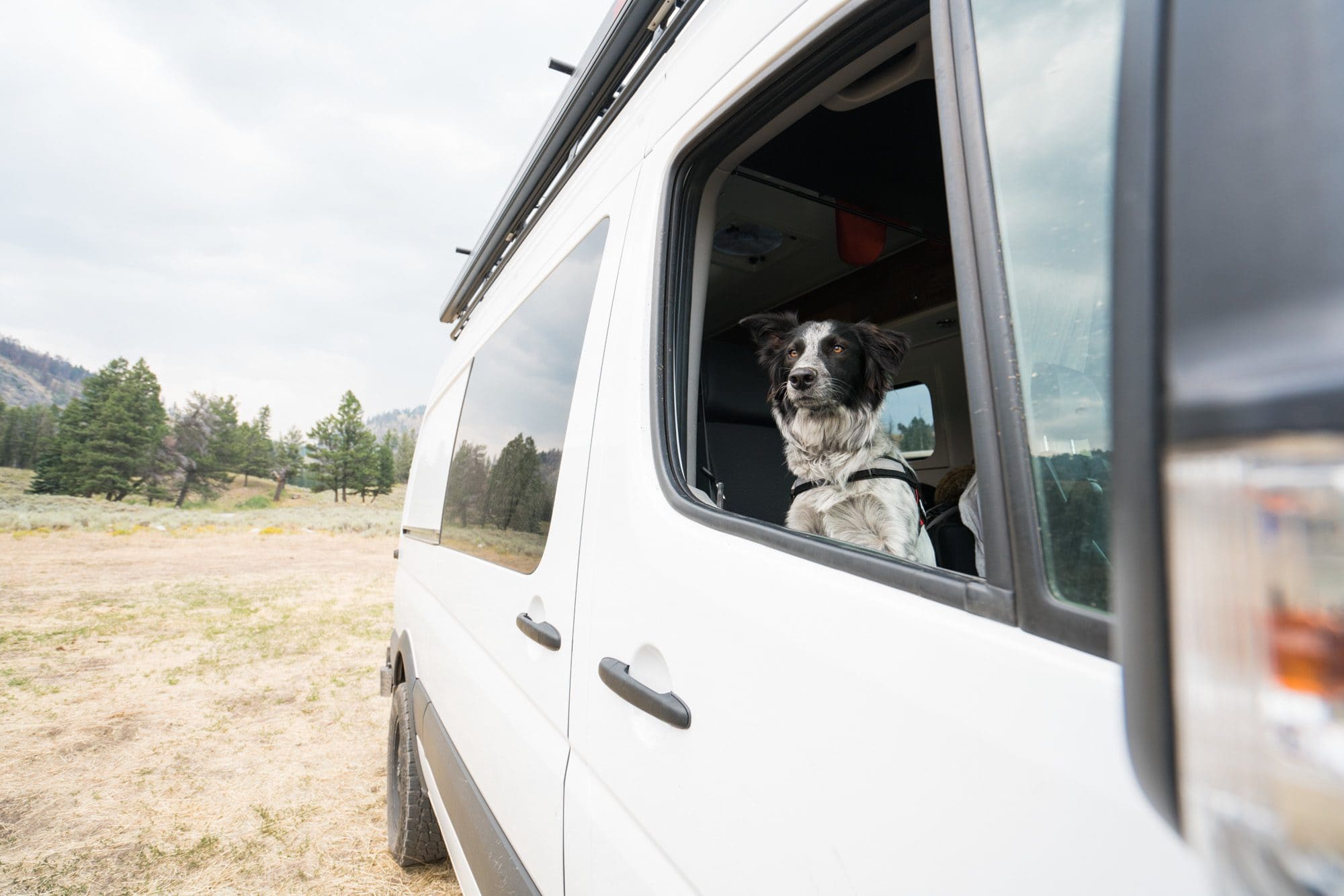
Taking your dog on a road trip can be super enjoyable – and super stressful. When my boyfriend Ryan and I got our first dog, an Australian Shepard/Border Collie puppy named Charlie, it took a while for him to get adjusted to traveling with us. I remember one of the first nights we had him in my van, Charlie got scared and straight-up peed all over my lap.
Now, we travel with two dogs – Charlie and Gumbo – and never leave them behind. However, there are a few things to keep in mind to make sure your dog stays happy and comfortable in the car, and in this blog post, I share 15 tips for road trips with your dog.
Planning a trip with your dog? Here are 15 dog road trip tips to ensure a safe (and fun!) time.
Tips for Road Trips With Your Dog
1. have up-to-date dog tags.
Have you moved since you got your dog? Make sure your contact info on their dog tag is up-to-date in case your dog somehow gets away. The same goes for the contact information associated with their microchip.
2. Bring a copy of your dog’s vaccination record & pack a first aid kit
If you are on your road trip and your dog either gets sick or needs to be boarded for a day, you will need a copy of your dog’s vaccination records . Usually, a copy on your phone will suffice, but you can also keep a copy in your glove box for safekeeping.
I also recommend traveling with a dog first aid kit which includes an assortment of dressings, bandages, and tools like the splinter picker/tick remover to remove ticks, thorns, or those pesky fox tails from your dog’s paws and body.

3. Give them their own dedicated comfortable space in the car
Don’t pack your car to the brim to the point where you dog has to squeeze between luggage with barely enough room to lay down. Compare that to the middle seat on a 10 hour, oversold flight. No one wants that, and your dog doesn’t either. The more room and dedicated space they have, the better behaved they’ll be.
Bring a dog bed , a yoga mat , a blanket , or even a foam sleeping pad that you can fold in half.
4. Use positive reinforcement & reward your dog with treats
A well-trained dog is going to be easier to road trip with than a dog that is constantly misbehaving. We’ve trained our dogs using the positive reinforcement technique . What that means is when they do what they are told, we reward them with a treat.
For example, when Charlie first jumps up in the van, he gets a treat which shows him that getting in the van without being coerced is what he’s supposed to do. Then if we stop at a gas station, and he goes to the bathroom, he gets a treat. Then when we call him back into the car, and he jumps in, he gets another treat. On the road, if we are eating lunch in the car, and he sits quietly in the back without begging, he gets a treat.
Over time, they learn to simply do that desired behavior, treat or not, but when you first begin to road trip with your dog, positive reinforcement with treats is a helpful tool.
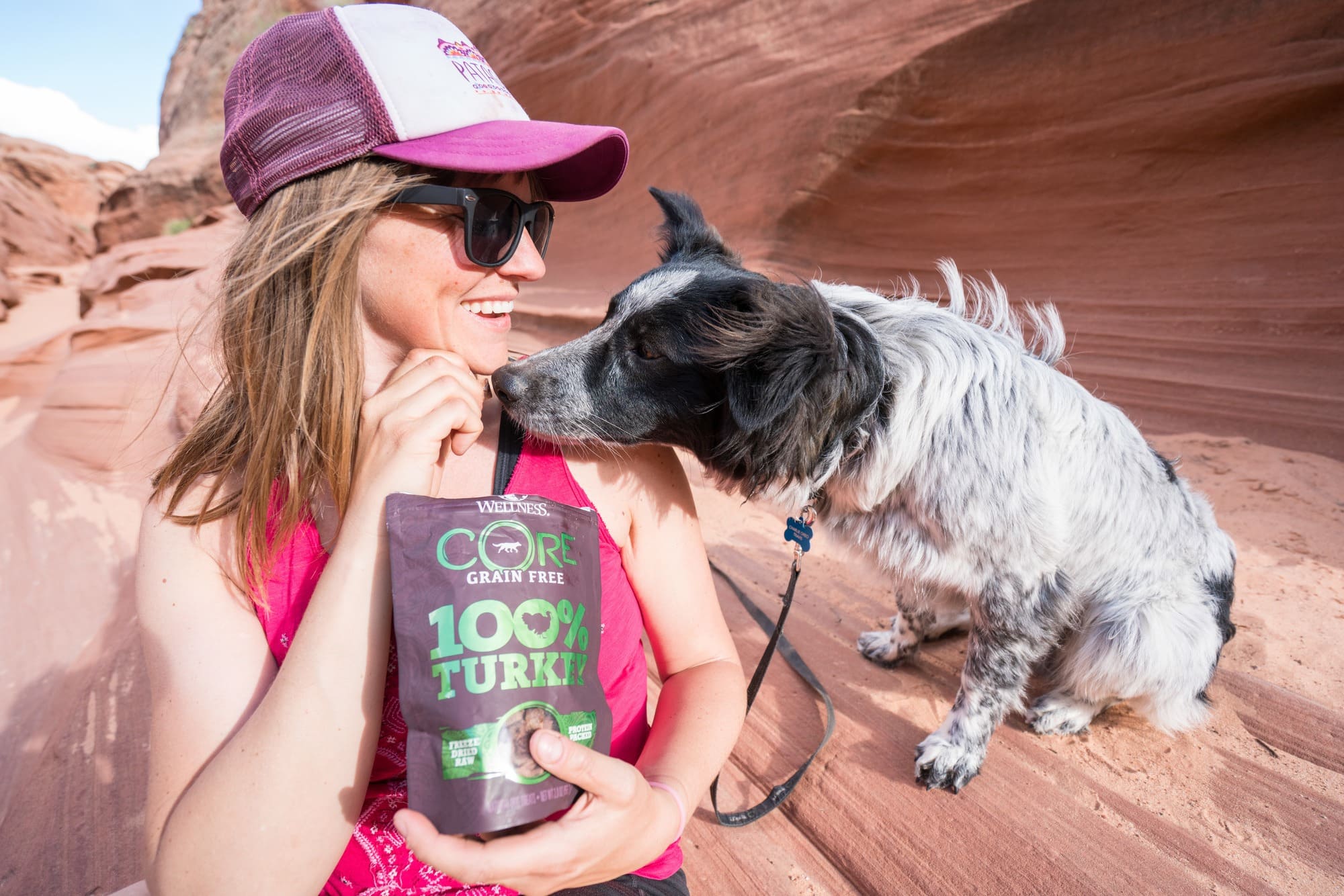
5. Always give your dog access to water
Your dog shouldn’t have to wait until you stop for gas to get a drink of water. Get a small stable water bowl that you can put on the floor by your backseat and let them drink at their leisure.
6. Don’t ignore their bathroom needs on long drives
If you have to pee, your dog does too. Even if you are in a hurry to get to your destination, you need to take a few extra minutes whenever you stop to let your dog out to do their business. Just like humans need to get out and stretch their legs on long drives, so do dogs. Do a couple of quick laps around the parking lot with your dog to make sure they’re not just sitting in a car for hours.
7. Get toys that will last
Quality toys are an important thing to pack and this is a dog road trip tip that is often overlooked. Toys help keep your pup occupied and provides mental stimulation. Charlie destroys his toys pretty quickly. He loves ripping them apart and spreading the stuffing all over everything, leaving a mess for us to clean up. When we road trip, we try to bring toys that are more durable, so they don’t fall apart one day into our trip.
A few toys I like to keep on hand are a frisbee , ball , or another toy (consider a glow in the dark one for nighttime stops). If your dog is into fetch, a quick way to get a lot of exercise is a chuck-it ball thrower . You’ll throw the ball much further than you can with your arm, meaning the dog runs a lot further in a shorter period of time. Plus with the chuck-it, you won’t have to touch that slobber-covered ball with your bare hands.
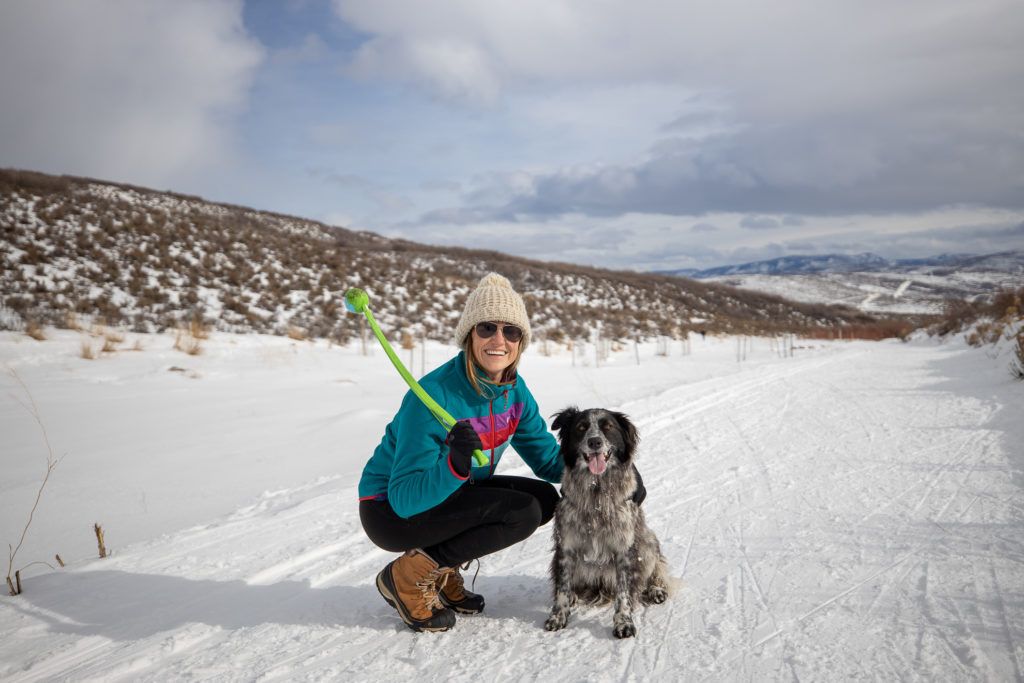
8. Find the local dog park
When you arrive in a new town, an easy way to blow off your dog’s steam is to stop by the local dog park . They will be bursting with energy, and it’s a good way to socialize them as well. Not sure where to go? This website has listings for nearly every town, and I’ve found them to be fairly accurate.
9. Camp rather than stay at hotels
Camping gives your pup more space to roam and can often be easier than finding pet-friendly hotels. While many campgrounds allow dogs on leashes, we prefer to dispersed camp so Gumbo and Charlie can be off-leash and have more freedom.
#1 campsite finder app
Try the dyrt pro free for 30 days.
Get a FREE 30-Day membership to The Dyrt PRO, one of our favorite apps for finding campsites.
Perks include: • 5,000+ free camping locations • 1,000+ campground discount network • $0 extra booking fees • Get reservations at sold-out campgrounds, and more
Use the code BEARFOOT to get 30 days free!
10. Bring a collapsable crate for your hotel stays
For those times when you do stay at a hotel or Airbnb, a crate is a great tool to help your dog feel safe in a foreign environment. Even if you simply don’t trust your dog to not destroy your car when you are in a restaurant, then consider bringing a crate with you on the road trip. A collapsible crate is best because it won’t take up room in your car when you aren’t using it.
You’ll want to practice with the crate before your road trip (ideally when your dog is a puppy). The key is making the crate feel like their home. You can put an old sweatshirt that smells like you inside the crate, along with a few toys to make the dog feel more comfortable. Then use the positive reinforcement method mentioned above when they get into the crate, rewarding them with a treat. Never use the crate to punish your dog or you will get the opposite result. Here’s a good resource if you are looking for more tips on how to crate train your dog.
11. Know your car is going to get dirty
Dogs are messy little creatures. Some shed, some slobber, and all of them get dirty. There’s no way around it and the best way to deal is to accept it. Don’t get mad at them for being dirty. Hopefully, the dirt means they were having a lot of fun, which is the entire point.
If you are worried about your car, seat covers and a portable car vacuum will go a long way. If your dog tends to roll around in poop or heavy mud, you can carry a short hose in your car and rinse the dog off at the nearest water hookup. Quick-dry towels are also convenient for drying dogs off when they get wet.
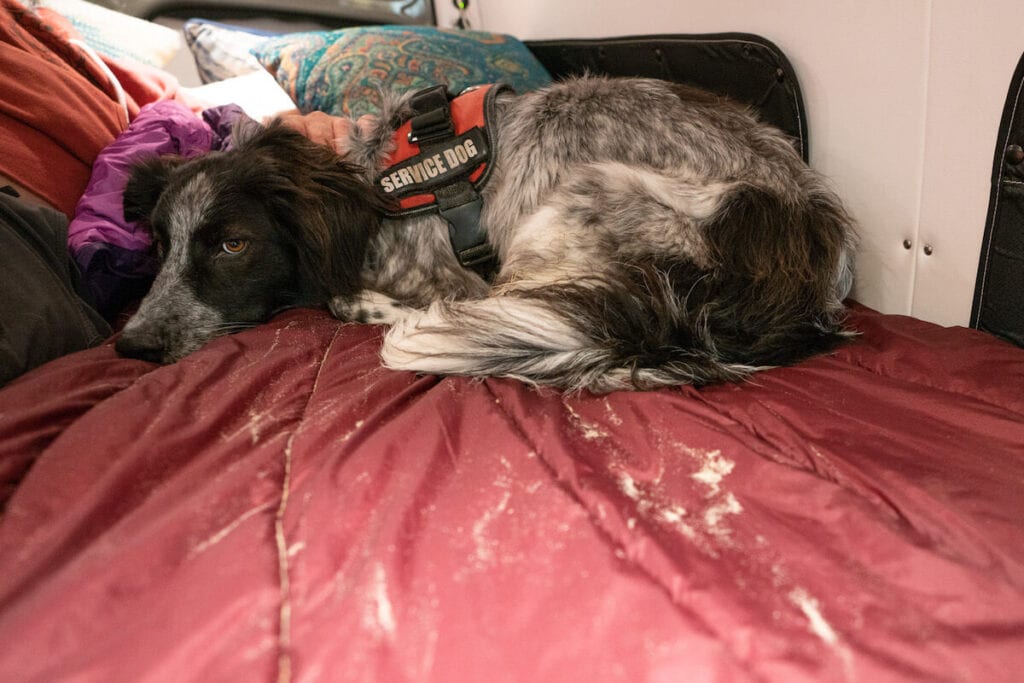
12. Know the regulations in your destination
Don’t show up somewhere assuming it’s dog-friendly. Most national parks, for example, have strict regulations about dogs. Pets aren’t allowed on most trails and must be kept on short leashes in campgrounds. If this doesn’t sound like the kind of vacation you want to have with your dog, go somewhere else . The bummer is when you don’t do the research ahead of time and show up after a long day of driving only to find out your dog isn’t allowed.
If you are dead set on a destination that isn’t dog-friendly, look on Yelp for highly-rated dog boarding services near the place you are visiting or find a local dog sitter on Rover. For example, during our ski vacation in Sun Valley, we dropped Charlie off at doggie daycare for the day while we skied, and it only cost us $20. We came home tired, and so did he.
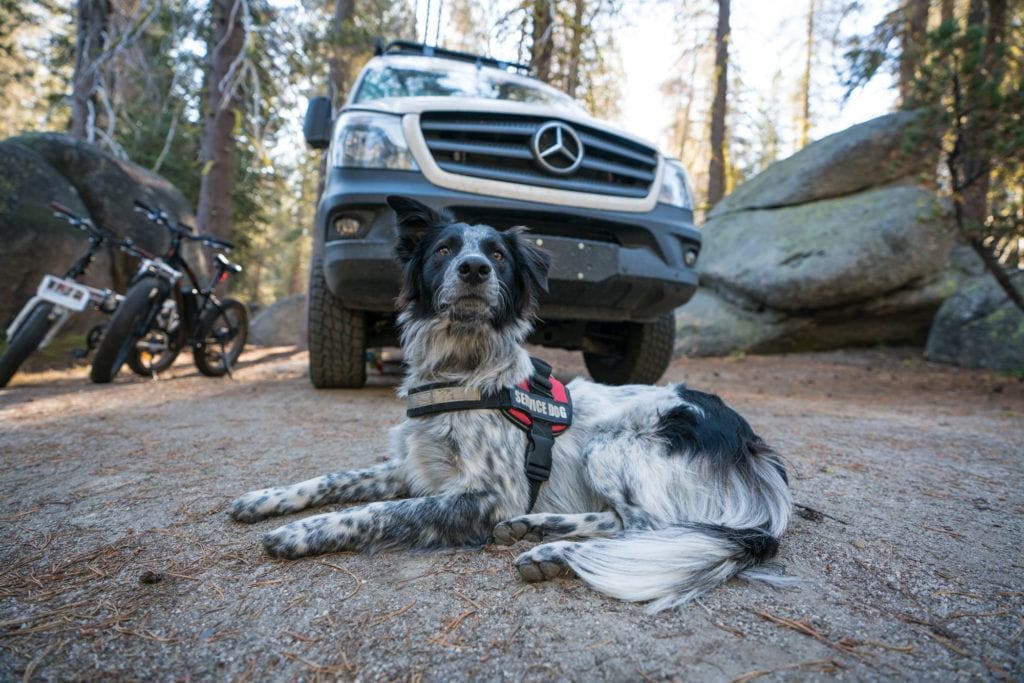
13. Don’t leave your dog in the car on a hot day
The inside of your car gets hot when left in the sun on a summer day – if it’s too hot in the car for you to be comfortable, it’s also too hot for your pet. Be aware of this and don’t leave your dog sitting unattended for a long time in the heat . Use your common sense. Dogs can die in cars and you don’t want to lose your best friend to carelessness.
If you must leave them for a few minutes, crack the windows and you might even consider putting a portable battery-operated fan in your car to keep them cool. Reflective windshield covers also help keep the temperature down in your vehicle.
14. Pick up after your dog
Don’t be the jerk who doesn’t pick up after their dog. Not only is it gross to look at, or worse, step on, dog poop pollutes waterways. We like to keep a hearty supply of poop bags in the car so we are always prepared to pick up after our dogs.
15. Be aware of wildlife
We just got back from road tripping in Yellowstone, where it was very important to abide by leash laws at the campgrounds. Our campground host told us that bears and elk often strolled through camp, and the last thing we wanted was Charlie loose and barking at a bear. The point is you should know about the local wildlife and make smart choices so your dog doesn’t end up a bear’s next meal.

Are we missing any dog road trip tips? Or do you have questions? Share in the comments below !

With two decades of hiking and seven years of van life under her belt, Kristen has dedicated her life to helping people experience the positive effects of nature. As a pioneer in the outdoor blogging space, she founded Bearfoot Theory in 2014 and has since authored more than 350 blog posts about outdoor travel, hiking, camping, and van life. Her work has been featured in National Geographic, Outside Magazine, and Backpacker, and when she’s not on the road, she lives in Park City, Utah with her partner Ryan, their son, and two adventure pups.
Leave a Reply Cancel reply
Your email address will not be published. Required fields are marked *
Save my name, email, and website in this browser for the next time I comment.
17 Comments
I’ve been traveling with my dogs for most of my adult life, starting when my now 52 year old No. 1 Son was about 2 1/2. Your points are well taken.
On providing water, the best water bowl I’ve found is called a Water Hole Pet Dish. It’s probably available elsewhere, but I’ve bought several from Camping World, http://www.campingworld.com/shopping/item/water-hole-pet-dish/3496 . It can be kept full and doesn’t spill (unless it gets dumped upside down). Conveniently, it holds about the same amount of water as a Nalgene bottle.
On bathroom breaks, every dog I’ve had has been easy to train to “go piddle” on command. That’s the next step after house breaking. Whatever term one wants to use, like every other training word, it’s necessary to be consistent. It really helps to shorten the rest stops, by telling the dog what needs to be done, rather than just relying on the smells of the dog walk area.
We like to think that our dogs should just do what we want because they love us, and to an extent, that’s true, but I agree with you that most training is more successful if there’s a reward. My current best friend, Molly (13+ year old Golden Retriever), is so conditioned that as soon as she comes in from outside, she expects a biscuit and will stand by the biscuit jar for a long time if nobody reacts. Same in the car–as soon as she comes back in from doing anything we’ve asked, she expects a biscuit. It works. Although I’ve always had bigger dogs, I buy small biscuits, so that there aren’t too many calories coming just from biscuits.
I enjoy your emails and blogs.
Thanks for this, it’s very useful! Were currently planning a 2-week road trip with our one-year-old dog and a puppy. We’re used to doing 6-8hr trips with dogs but spending that long in a van with two pups will be interesting. I need all the tips I can get!
What an informative list of great suggestions for traveling with your dog! I train and take care of dogs every day and you came up with some suggestions that I wouldn’t have thought of. I will be sharing this information with one of my clients that’s planning a road trip with their dog. As a trainer, if you don’t mind me adding to your tip about using positive reinforcement, when you reward a dog with a treat you should always give verbal praise a second before delivering the treat. The praise will eventually elicit a conditioned response that will feel as good as getting the treat.
Thank You, Neville Mistri http://www.doglifepro.com
Thanks for the advice that it’s best to keep my dog’s vaccination record in hand in case he gets sick during a road trip. Since I just got him, I think I’ll take him to a professional to have his vaccines taken care of. I got him from a shelter last week, and since the people in the shelter are giving vaccinations for a fee, and I had no money that time for one, I had to postpone his injection in the meantime, so now I’m looking for a place where I can get some since I have the budget for it now.
- Pingback: 14 Fun Things To Do With Your Dog - The Dog Care Guide
- Pingback: Tips For Roadtripping With Your Dog - MrMax Online
Thoughts on battery powered air conditioners when leaving dogs in the car?
Unfortunately, we don’t have any experience with battery-powered air conditioners.
Really great tips to keep mind to have a good time with the family now that summer is here! Thanks very much.
Excellent tips, especially about being aware of wildlife. We recently camped at Caprock Canyons State Park, where they have free roaming bison, and it was quite a shock to open the RV door and to take our dog out in the middle of the night, only to find that a herd of bison had bedded down just outside our trailer.
Troy and Melissa http://www.Woofthebeatenpath.com
That would make for an interesting middle-of-the-night experience!
I’m taking my Jack Russell with me on a 1200 drive to my parent’s house next week. Two things I would add here is: secure your dog in the car. I have a harness and short attachment lead so I can clip him to the seat. I don’t want him suddenly flying around the car if I have to hit the brakes. Also it will keep him safe when I stop, so he can’t rush out the door when I open it. He’s trained not to, but there are some moments where he can’t resist. Regarding leaving him the car while I hit a restroom or run in for food, I took my Subaru to the dealership the other day, and they set the car so it will keep running while I’m away from it with the fob. I will manually lock the door, flipping the door lock with my finger inside, and then get out. When I come back to the car, I’ll use the small key inside the fob to unlock the door. He can wait a few minutes in locked, air conditioned comfort while I take care of things.
i use a 50′ leash and i don’t pick up crap. Don’t like it, then lump it…
Great list but I would suggest the dogs ride in a well made crate for their safety. No , it might not be quite as much fun for them but it could save their life.
Hi Carolyn, thanks for the tip!
The only thing that I would add is to have a pet first aid kit easily available. You never know what you might need it.
Hi Gretchen, great suggestion. I just added that to our post – thank you!
- Cheap and Budget Friendly Recipes
- Health Related Illness Diets
- Homemade Treat Recipes
- Homemade Dog Treats for Health Issues
- Seasonal Recipes
- Can Dogs Eat…
- Dog Diseases & Conditions
- Dog Symptoms
- Dog Grooming
- Caring For Seniors
- Dog Loss & Grieving
- Dog Reproductive Health
- Treatments and Home Remedies
- Dry Dog Food
- Wet Dog Food
- Best Dog Products
- Dog Accessories
- Dog Health Products
- CBD for Dogs
- Toy Dog Breeds
- Working Dog Breeds
- Terrier Dog Breeds
- Sporting Dog Breeds
- Non-Sporting Dog Breeds
- Mixed Breeds
- Hound Dog Breeds
- Livestock and Herding Dog Breeds

15 Safety Tips for Traveling with Dogs in Cars

Table of Contents
1. Never leave your dog alone in the car
2. understand motion sickness, 3. food can trigger motion sickness in dogs, 4. deal with your dog's traveling jitters, 5. use the buddy system, 6. some dogs remember a lot, 7. don’t wait until it’s an emergency, 8. drugs might be a short-term fix, 9. dog carriers and dog crates are safer, 10. buckle up in the back, 11. hide his eyes or distract the nose, 12. more pressure can be a good thing, 13. keep his head in, 14. have identification tags ready, 15. take a dog backpack or carrier.
S ome dogs and their owners definitely come as a pair. They always want to be together. If your dog enjoys going for a ride, traveling with dogs in cars can be a lot of fun. However, there are a few things you'll need to do to keep your pet safe and happy during the car ride.
Don't be upset if your pet doesn't like to ride in cars. Even though the majority of canines love riding in cars, for some dogs, it's just a bit of anxiety that keeps them from enjoying a ride in a car. With a bit of training and a little patience, you can curb your pooch's fear in no time. But how come some dogs simply love riding in cars, then?
CarAndDriver.com asked the experts why most dogs enjoy riding in cars, and it turns out that it's not because of the riding experience itself. The experts say that dogs love cars because they love us, their owners. It's the shared car ride experience .
Nevertheless, nervous jitters aren't going to be your only problem when it comes to traveling with dogs in cars. Your furry friend can also be a big distraction to you while you're driving. You'll need to take the proper steps to keep your dog safe while he's riding inside the vehicle, and that involves keeping him in the cargo hold or a dog car seat .
If your pup is roaming around in the car, he's going to distract you and become a dangerous projectile in the event of a car accident. Not to mention, it's likely that he'll be getting into things or climbing on your passengers. Follow these tips to prevent any of this from happening when traveling with dogs in cars.
ALSO READ: How to Prevent and Treat Car Sickness in Dogs
15 Tips for Traveling with Dogs in Cars
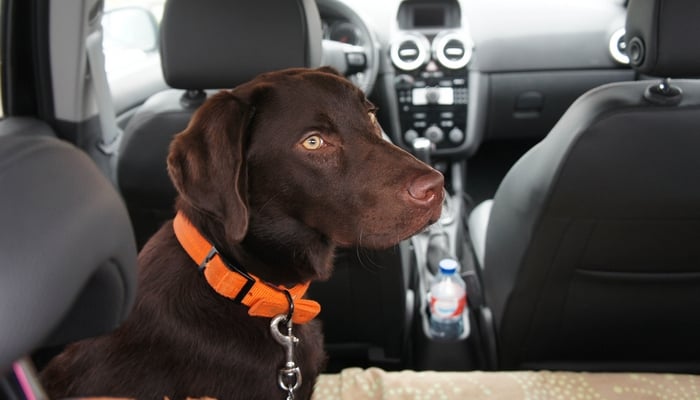
This should go without saying. Dogs can get a heatstroke from being locked in the car, which can be fatal . In many US states, locking your dog in a car may even be against the law or be considered animal abuse to leave your dog inside a vehicle.
The same applies to leaving dogs in cars in winter. When it's cold weather outside, it can eventually get very cold and freezing in a parked car, so make this a year-round rule.
Puppies are more likely to get sick in the car, just like young children. This is probably because their inner ears aren’t fully developed. Try to be aware of how your dog is feeling, and try shorter trips or other techniques until he gets more comfortable.
Symptoms of motion sickness in dogs range from the obvious to the more subtle:
- Extra drooling
- Restlessness
- Vomiting (in the car or shortly after arrival)
Don’t feed your dog in a moving vehicle, at rest stops, or right before a car trip unless he is a really comfortable traveler who never gets any signs of motion sickness. It’s better for the dog to have a light meal a few hours before traveling and not much on any dog treats.
Trust me, the last thing you want to deal with is a dog throwing up as you're driving down the freeway. But just in case you aren't sure whether this is going to happen or not, it's always a good idea to have dog car seat covers on the back seats as well.
It’s a cliché that dogs can’t wait to go out for a ride, but not every dog feels that way. Some dogs find traveling in cars frightening, and that can be a serious inconvenience.
If that's the case with your pooch, then accept that your dog’s fear is real and slowly begin to desensitize him with short, positive experiences, like treats or trips to the park.
For example, if you never travel with your dog to anywhere interesting and only drive together to the vet or the kennel, how interested can your dog be about getting in the car? It's a negative association for him. You’ve got to make it an enjoyable experience for your dog. You may need to start with a reward just for getting into the car.
Don’t push things too hard or fast. Forcing your dog too much only teaches him to expect things to get progressively more difficult and scary. Mix things up: play near the car, encourage him to reach in for a dog treat on the floor or climb over the car seat. Then, go for a quick trip. Just be patient and accept Fido's pace. They need to acclimate.
READ MORE: 10 Tips On How to Calm Down a Dog
If there's a friend with you when traveling with dogs in cars, there will always be someone to hold the dog’s leash when you go in a store or someone to help if there’s an issue.
Just having someone beside him in the back seat might help in the beginning. So try to make it a fun trip and bring more people; for dogs, the more, the merrier.
Dogs can associate streets, landmarks, and what direction the car turns with certain locations. They might get excited on the way to the dog park but frightened if you turn towards the vet’s office. You may need to deal with situations like this with more positive training and rewards.
Ultimately, it's all about training your pooch to adjust to the environment and the procedure of riding in the car: getting in, staying in, and getting out. Dedicate to train him at first and reap the benefits for the rest of the time.
If you need to take your dog on a long car trip or go to the vet, dog groomer, or kennel, start positive: give him rewards and train him as early as you can. Puppies should ideally learn to make a positive association with riding in cars before they leave for their forever homes and are separated from their mothers.
An emergency is stressful enough that you don’t want to take on more than you have to. Car travel preparations can save you a lot of stress and time. It’s better to leave your dog at home, get a dog sitter, or take him to the kennel than jump right into more than your dog’s ready for. Bad associations are harder to deal with than just inexperience.
You don’t want your dog dependent on medication whenever he needs to travel or have him completely sedated. However, something to take the edge off his fear or settle his stomach might help him to be less anxious and start making more positive associations.
There are plenty of drug solutions out there, and you can get some of the best dog anxiety medications to calm your dog before any car ride. Just keep in mind that it's not a long-term solution, and you still need to train your pooch for positive association.

Dog crates have been one of the best solutions when traveling with dogs in cars because many dogs love them (especially after you crate-train your dog) . They feel much calmer in their crates, and pet parents also reap the benefits: it's easy to transport your pooch in a dog crate, and you can also use that crate later once you arrive at your destination.
Not all dog crates work with cars, however. There are some that are specially designed and particularly travel-friendly dog crates , which will be more secure in the car and comfortable for the dog, too.
Airbags are as dangerous for your dog as they would be for a child. Anchor any dog crates or pet carriers with a proper seatbelt or use a dog restraint harness when traveling with dogs in cars to prevent them from shifting around if there is an accident or sudden stop. In some places (Tennessee), it's the law that your dog can’t move freely in your vehicle.
Luckily for pet owners, there are specially designed dog seat belts that work in many different ways: some just restrain a dog (like this EzyDog Restraint Harness) and keep him secure, and some will attach only to an existing dog harness that you've already put on your pooch, and others will also work with dog crates and secure them in the car.
We've done a test and comparison video review to find the most effective solutions for this. Take a look at the results of our best dog car seat belt round-up.

There are also special calming caps or fly masks to limit your dog's vision when traveling in a car. There are things called Dog Appeasing Pheromone collars (or D.A.P. collars). These collars contain special pheromones that calm your dog and provide him comfort. Adaptil is one of the most popular DAP collars out there but search for your own best solution.
Alternatively, you can also try essential oils like lavender or peppermint. Read more on how to use essential oils with dogs and why you should give this natural solution a try.
Some dogs react well to a calming pressure vest or wrap. Think of it like a hug to make your pup feel better. This is why many owners are opting to use calming vests and jackets for dogs to keep them stress-free. There's no science behind this other than it actually works well.
For example, a Thundershirt is the most popular vest for calming dogs, and it's often used for anything—from dealing with separation anxiety in dogs to calming them down during car rides, training, fireworks, loud noises, or all types of travel. There are a few other great quality dog anxiety vests that have been positively reviewed by hundreds of owners.

It has been very popular to allow dogs to keep their heads outside of moving vehicles, but the cold air pushed into their lungs can do some damage to their health. That is without mentioning how he might get hit with something like stones or other debris.
There are actually tons of reasons not to allow your dogs to stick their head out of cars, so maybe don't do it.
Dogs need frequent rest stops on long trips, but never let your dog out of the car or out in public without an identity tag. Keeping your dog on a leash in an unfamiliar place is the best thing you can do to keep him safe, even at the dog park.
Even if your pet is equipped with a dog GPS tracker so you can easily locate him, nothing will be as reliable as an ID tag that you attach to his collar and have your phone number on. Dog ID tags are cheap, small, and simple to put on, so there's no reason not to use them to provide yourself with just a little more peace of mind.
You’ll need certain things while traveling with dogs in cars , like bags for poop, a leash, and a water bowl. At the same time, if you have a smaller breed dog and no dog crate with you, you may want to carry your pooch somewhere where he cannot go himself.
This is where dog backpacks or carrier slings are great because you can store everything, including your dog in them. And it doesn’t hurt to be prepared with a first aid kit for dogs and yourself, towels and paper towels, water, dog food, and whatnot. All, just in case.
READ NEXT: 4 Essential Tips For Traveling With Dogs That Will Keep Them Safe

LATEST FEATURES
Can I Afford A Dog?
How to Get Rid of a Dog: The Right Way
Why Are Dogs So Loyal?
Why Do Pets Make Us Happy?
Dog Names Starting With Z
How Many Dogs Are Too Many?
Can Dogs Get Sick From Humans?
Dandie Dinmont Terrier Breed Profile
Dog Names Starting With Y
Can Dogs Be Blood Donors?

- Terms of Use
- Privacy Policy
- No AI Clause
How to Road Trip with a Dog: Tips for Safety & Success!
WRITTEN BY:
November 4, 2019
K9 of Mine is reader-supported, which means we may earn a small commission through products purchased using links on this page. Here’s how it works .
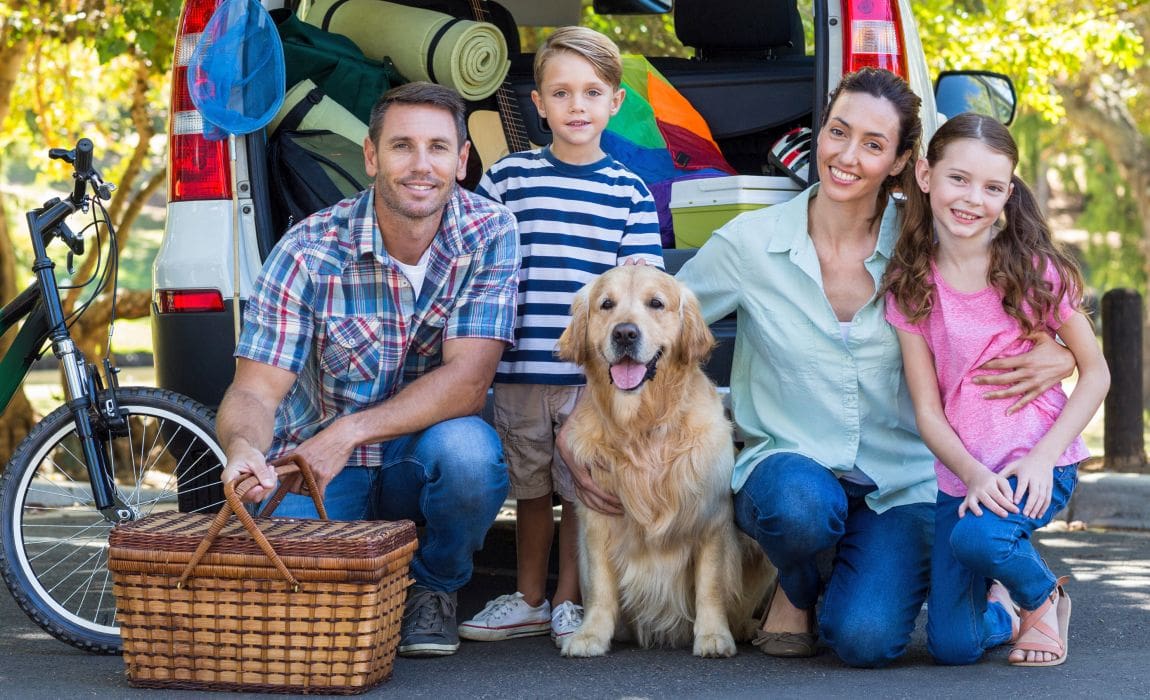
Whether you’re taking a day trip to the beach, visiting the in-laws during the holidays, or heading out on a full-fledged vacation, you simply must bring the family dog with you!
Unless, that is, your soul can withstand some seriously sad puppy dog eyes when you return.
But traveling with your pooch is a bit more complicated than traveling sans four-footer .
We’ll help you dog-loving families prep for those long road-trip with our collection of tips and tricks below. Whether you’re embarking on a full-on van life adventure with your dog or just doing a cross-country trip to visit family, these tips will be sure to help you keep your furry family member safe!
Temperature Safety
It is important to “triage” your dog’s needs when heading out on the open road. You have to think about her safety first, before moving on to her comfort and enjoyment.
Accordingly, one of the first things you’ll need to consider is the car’s climate.
Winter Travel with Dogs
Unless your road trip involves rolling across a frozen tundra with the top down, most dogs will stay warm enough during the ride.
As long as the interior car temperatures are in the mid-40s , most dogs should remain comfortable . Big, furry pooches will remain comfortable in temperatures 10 degrees or so lower than this.
You’ll obviously want to fit your little sweetie with a canine sweater if she needs one for crisp fall mornings, but just use common sense and read your pup’s body language.
If she’s shivering or remains in a heat-conserving curly-cue for long periods of time, you may want to bump up the heat.
However, you will want to use extra caution whenever you need to turn the car off and leave your pupper inside, such as while taking a dinner break. But even during these times, a warm blanket or two will usually suffice to keep your canine cozy for a short period of time.
Summer Travel with Dogs
It is incredibly important to keep the temperature in mind when traveling with your pooch during the summer .
This is not the time to take chances.
For the most part, your pooch will be fine when riding alongside you. As long as you’re comfortable and have the AC on, your canine will be chillin. The problems typically occur when you have to leave your pup alone in the car.
But there are even ways to keep your dog safe on those rare occasions in which you need to (briefly) leave your dog in the car.
Just check out our guide to safe summertime car travel with your dog , written by trainer, behavior consultant, and regular K9 of Mine contributor Kayla Fratt.
This article should be considered mandatory reading by all pet parents with an upcoming road trip , but here are a few of the most important points:
- Be sure to take extra precautions anytime the temperatures flirt with the 80-degree mark.
- High humidity levels can cause your pooch to overheat more quickly than she would during similar, but drier, conditions.
- Take your car’s color (including the interior) into consideration during summer travel. Small, dark-colored cars are the quickest to heat up (especially if they have dark interiors).
- Be sure that it is even legal to leave your car alone in a car in your state before doing so.
There are also a few products that may help keep your canine safe and comfortable in the car.
For example, a car windshield shade will help reflect the sun’s rays blasting your car. You can also get shades that will cover your car’s door windows . These are even helpful while you’re driving!
In fact, these types of shades are great whether you leave your dog in the car or not, as they’ll keep your car cooler whenever you leave it parked in the sun. Some especially dog-friendly cars have shades like these already built-in.
You can also use window gates to keep the car temperatures from climbing sky high. These gates allow you to roll down the window (partially), which will allow air to flow through the car.
However, our favorite must-have gadget for any road trip would have to be the Waggle Pet RV Temperature Monitor .
Waggle features a temperature monitoring device along with a companion app. The device is installed in your vehicle and tracks the temperature. If the temps get outside of the safety zone you set (whether due to heat or cold), you’ll get an alert notification on your phone via text or email! While it’s designed specifically with owners who are traveling via RV with a dog or cat, it works great for standard cars too!
This is a sponsored placement , in which an advertiser pays a fee to be featured in this article. Learn more

Waggle Pet TV Temperature Monitor
Temperature monitoring device that’ll alert you when vehicle temperatures reach unsafe levels.
Of course, you can just skip all this hoopla and avoid leaving your dog alone in the car during the summer . That’s usually the safest, most cost-effective option when doable.
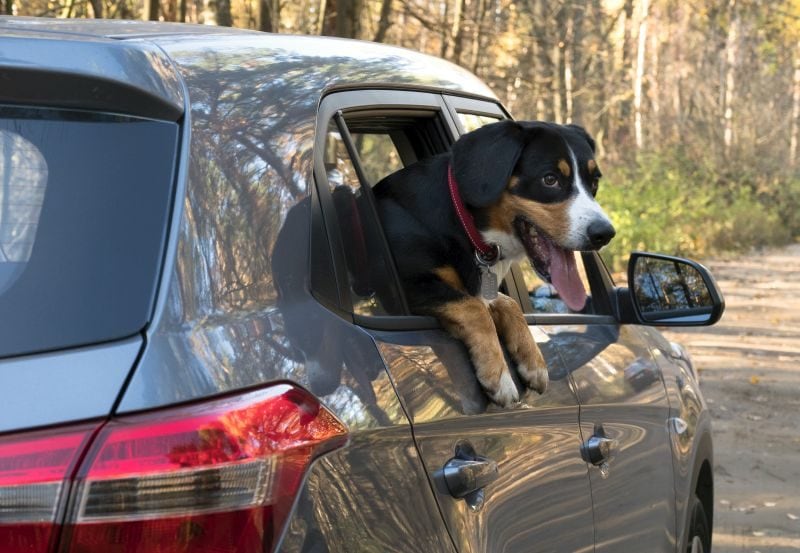
Crash Safety
It isn’t pleasant to think about, but you must ensure your family is as protected as possible in the event of an accident during your road trip – and that includes your four-footer.
For the two-legged members of your family, this is pretty simple: Just make sure that everyone wears a seatbelt or rides in an age-appropriate car seat. But it can be a little trickier to keep our dogs safe while riding in the car .
Essentially, you have three options:
- Use a dog crate designed for car use . This is the best option, as it’ll keep your pup the safest. However, car crates can take up quite a bit of space and some are pretty pricey.
- Fit your dog with a harness intended for use in the car . A car harness won’t provide the same level of protection that a crate will, but it will help keep your dog from being flung around the interior of the car in the event of an accident (apologies for the horrific imagery).
- Clip your dog in with a canine seatbelt . Canine seatbelts are another option that work in a similar fashion to car harnesses, except that you can use them with your dog’s existing harness.
Note that the vast majority of dog car harnesses, crates, and seatbelts are not crash tested. While they may keep your dog secure for minor fender benders, most common canine car-securing equipment won’t protect your dog in a true collision.
In our research, we were able to find car crates and harnesses that were successful crash-tested (and we detail them in the articles linked to above). However, there are no dog seatbelts that have been crash-tested.
All three of these options provide another benefit too: They’ll prevent your dog from wandering around the cabin and distracting you while you’re driving. This, in truth, is probably one of the most important reasons to secure your dog, as doggie distractions can easily cause a crash.
Keep the Family Together
Aside from health problems of car accidents, becoming separated from your pooch on a road trip is likely the worst thing that can happen.
Trying to relocate a runaway Rover at home is difficult enough – doing so in an unfamiliar place is unthinkably daunting ( but not impossible ).
This means you’ll want to do everything you can to prevent your dog from running off and be sure that you’ve taken steps to maximize the chances of finding your pup if she does manage to escape. Among other things, this means you’ll want to:
- Keep your dog leashed at all times . The only exceptions to this rule are when you are indoors or in an enclosed area, such as a fenced dog park. If your dog is a Houdini-like hound, you should also invest in an escape-proof dog harness.
- Make sure your dog is wearing ID tags with your current contact information . ID tags are an incredibly inexpensive and low-tech strategy that may drastically improve your chances of a happy reunion.
- Have your vet install a microchip implant on your dog . Microchip implants are tiny electronic devices that contain encoded data about your dog, which can help vets, shelters, or anyone else with a code reader to find you following a separation.
- Fit your dog with a GPS tracking collar . Microchip implants are very helpful, but they’re passive devices. You’ll simply have to wait by the phone and hope that your dog turns up at a vet or shelter. On the other hand, a GPS collar will allow you to hit the streets and track down your pup via a smartphone app.
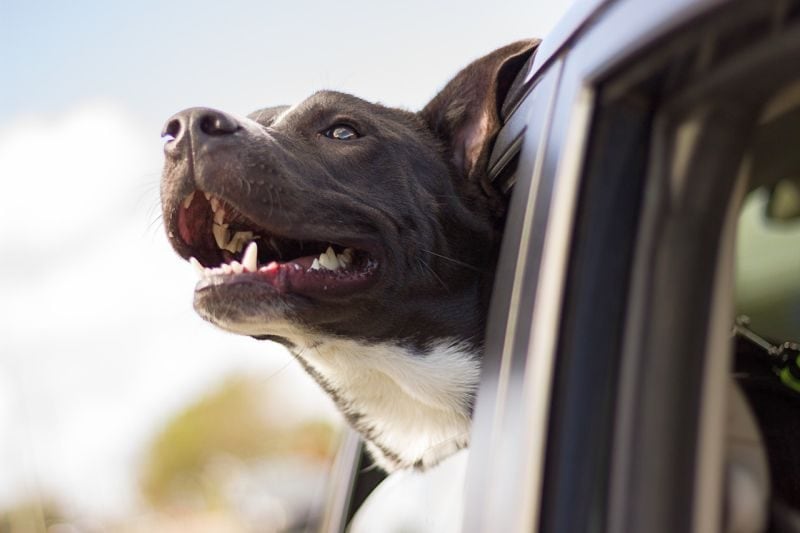
Medical Issues
You’ll need to consider any health issues your dog has when getting ready to travel – you don’t want to end up dealing with a sick sidekick during the middle of your trip.
In fact, even if your dog is healthy as a horse, it’s a good idea to visit your vet right before your trip . This will help reduce the chances of a surprise illness popping up at an extremely inopportune time. For that matter, be sure that you have your vet’s phone number saved in your phone .
It’s also important to make sure you bring along a pet first-aid kit , loaded with your pet’s regular medications.
This includes not only the things she needs to deal with specific ailments (such as corticosteroids prescribed for itchy skin), but also routine medications, such as flea or heartworm medications.
You can put together a first-aid kit for your pet or you can just pick up a premade version . We explain the things you’ll need to include in your first aid kit and run down a few of the best premade versions on the market in our dog first-aid kit article .
There’s one more thing you may want to do before hitting the road with your pooch: Go ahead and locate a pet emergency room or two on your planned route .
I know this may seem like overkill, but in the minutes following some type of emergency, you’ll be glad you’ve already identified a few places you can get your pet emergency medical attention (and saved them on your phone).
Bathroom Breaks
For the most part, it should be pretty easy to take care of your dog’s bathroom needs during a road trip. Puppies will need to poop and pee every couple of hours, but most adult dogs can easily go 6 to 8 hours between bathroom breaks (and many can “hold it” even longer).
So, you don’t have to worry about stopping very often.
In fact, if you’re traveling with kids, they’ll certainly have to “go” more often than your pooch will, so walk your pupper when you stop at rest stops or fast food places to let the kids use the facilities.
Just be sure to exercise courtesy and common sense . This means keeping your pooch leashed and cleaning up behind her when she poops.
Food and Water on the Open Road
Keeping your dog fed and hydrated on the road won’t cause any serious problems, but there are a few things you’ll want to think about before you pack the pooch in the car.
- You can bring your pup’s normal food and water dishes on the road if you like, but there are some great travel-friendly options available . Many portable dog dishes are made from silicone or other lightweight materials, and some collapse to make them easier to store.
- Make sure you give your dog a chance to drink water every two or three hours . Use water fountains to fill his bowl when they’re available, but always carry a water bottle specifically for your pooch so you don’t ever have to worry about water availability.
- Try to feed your dog around the same time as you normally would . It’s a good idea to pamper your pet’s digestive tract a bit while traveling, to help prevent stomach upset. Feeding her at normal times is a good first step.
- Purchase smaller-than-normal cans of food, if your pup can’t polish off a whole can . Canned foods must be refrigerated once opened. This isn’t a problem for dogs who eat entire cans, but you’ll have to throw out any unfinished portion when traveling on the road (unless you bring along a cooler). So, if you normally buy 13-ounce cans, consider picking up a bunch of 6-ounce versions for your road trip.
- Split your dog’s kibble into pre-measured containers . You can bring your dog’s bag of dog food and a measuring cup on the road, but it’ll be much easier to simply portion out your dog’s meals beforehand. Try to use re-usable containers instead of single-use plastic bags, for the planet’s sake.
When it comes to keeping all your dog’s travel goodies stored in one convenient spot, Meg Marrs and her pooch Remy are big fans of the K9 Cube from Mountainsmith !
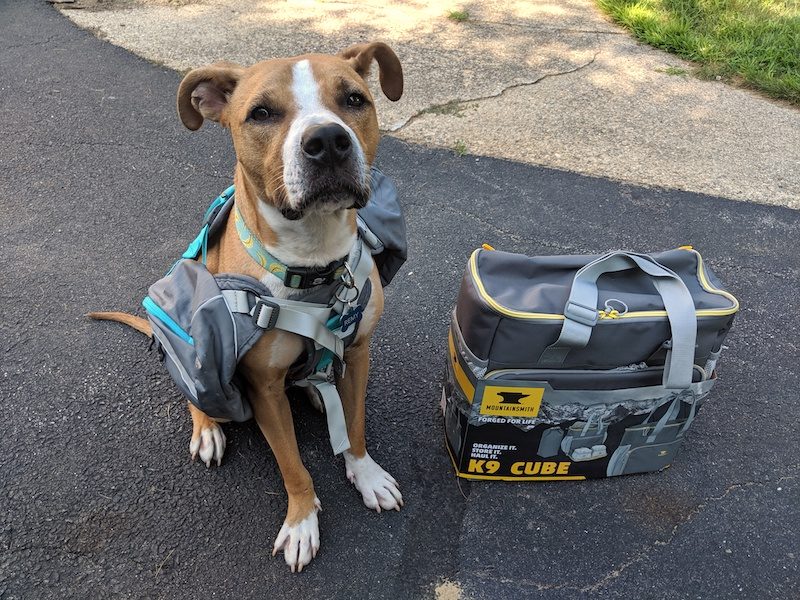
The K9 Cube is a pretty nifty dog travel kit — the interior section offers two deep compartments for storing your dog’s food, toys, and other essentials. It comes will a waterproof lined storage bag that can safely hold your dog’s kibble and can easily be sealed to prevent mildew or bacteria from forming.
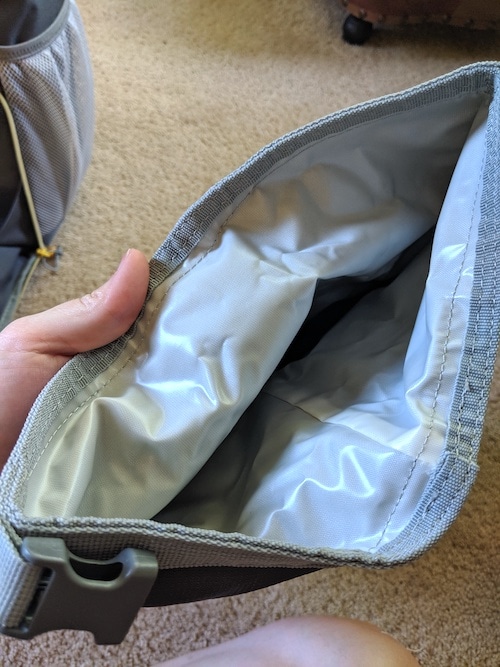
The cube also has two collapsable bowls to provide your pup with food and water during your hotel stays. The bowls can even be attached via Velcro to the bag’s outer flap to keep the bowls stationary.
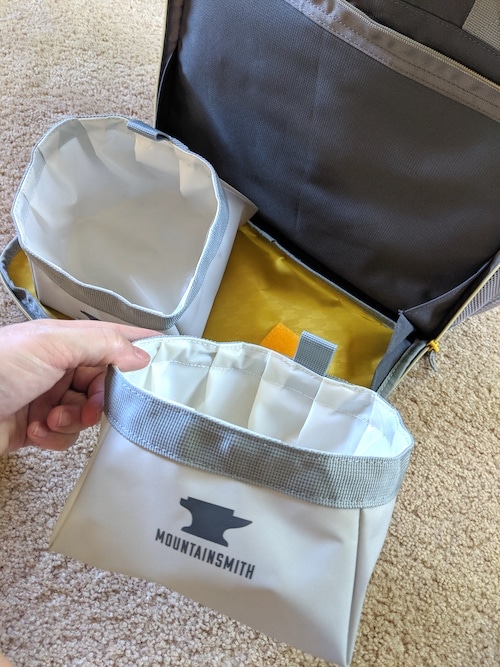
With tons of bonus mesh and zippered pockets, it can contain all your dog’s road-trip necessities (even when your dog is totally spoiled and has way too many road squeaky toys).
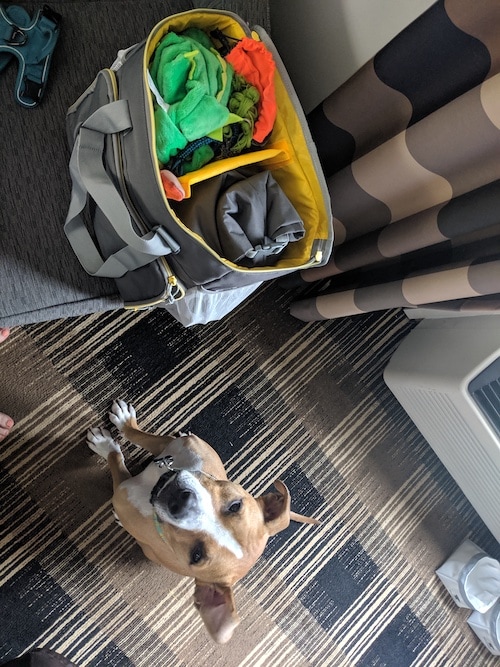
While Mountainsmith’s K9 Travel Cube ain’t cheap, it’s pretty awesome to have — especially if you do a lot of road tripping with your pooch!
Dealing with Boredom
“Are we there yet?”
Dogs can’t talk, but they’d probably repeat this phrase more often than your 7-year-old does during road trips if they could.
The problem is, you can’t just hand your dog a digital screen to keep her busy until you reach your destination. So, you’ll have to adopt other strategies.
Ideally, your dog will sleep for as much of the trip as possible.
So, try to let her exercise a bunch before heading out on the trip. You may even want to try to keep her awake a little longer than normal the night before .
But if your trip is longer than three or four hours, your pooch will undoubtedly be awake for part of the journey .
Some pooches will be content to stare out the window, but most will grow bored as the road trip carries on and on . Just make sure you have a few of your floof’s favorite toys on hand to help keep her occupied.
A simple chew toy may suffice for some dogs, but interactive toys will usually keep your dog’s interest for longer .
Assuming you can contain the mess (or don’t mind it), long-lasting chews and other hard-to-eat-but-edible things (such as peanut butter stuffed inside a KONG Toy ) also deserve consideration.
Personally, whenever I need a little extra help keeping my pup busy, I pick up a brand-spanking new toy for her . The new-toy scent and unblemished surfaces usually drive her wild for a few hours, and keep her little brain humming.
Also, be sure to take a break every three to four hours to allow your dog to answer nature’s call and stretch her legs a bit.
Consider flying one of the most pet-friendly airlines with your doggo if you’re worried about boredom!
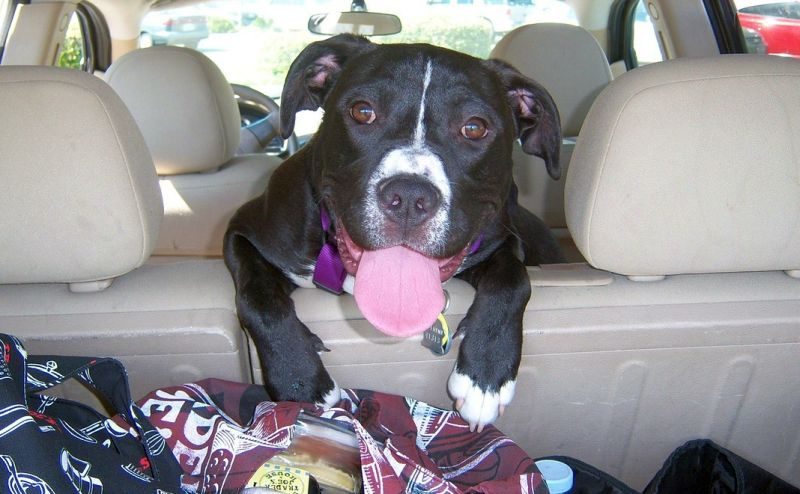
Car Sickness
Dogs can get car sick just like people can.
I actually learned this firsthand when I was 4 years old, riding home in the car with my very first puppy. The poor pupper barfed all over me, which made for quite a welcome to the world of pets.
Car sickness is most commonly an issue for puppies and young dogs, as adults tend to outgrow it as they become more accustomed to riding in vehicles.
Nevertheless, some dogs continue to get queasy when riding in the car, so you’ll want to take whatever steps you can to prevent it from becoming a problem during your trip.
There are several simple things you can do, such as keeping the car a little cooler than normal or setting your dog up with a booster seat (we detail several other strategies for preventing vehicular vomiting in our canine car sickness article ).
Try some of these strategies out before going on your trip. If they don’t work, your vet may be willing to prescribe medications that’ll help easy your dog’s motion sickness.
Keep in mind that many adult dogs experience car sickness more due to stress than to actual motion sickness. If your grown-up pooch is getting ill in the car, consider working on some strategies to reduce your dog’s car anxiety .
Canine-Accessible Accommodations
Ideally, you’ll be em barking (get it?) on a relatively short trip, you’ll likely arrive at your destination without having to stop overnight at a hotel.
But if your destination is hundreds of miles away, you’ll probably want to hole up in a hotel overnight to recuperate for the next day’s travel.
This isn’t usually difficult, but four-footers make hotel stays a bit more complicated .
For starters, you’ll need to find a hotel that accepts pets (as well as one that’ll accept your specific dog – some have size and breed restrictions). You’ll also want to investigate the fee-structures in place to avoid spending an arm and a leg for the right to sleep alongside your pupper.
In practice, you’ll often find it necessary to contact the specific hotel you intend to stay at to find out their policies . But, you can narrow things down and find out some of the basics by checking out our article on the best pet-friendly hotel chains .
There are plenty of options available. Just be sure to follow the rules and avoid the temptation to sneak your pup in under the radar. That’ll just lead to you getting kicked out in the middle of the night when hotel management discovers your incognito canine.
Alternatively, you can check out Take Paws — a site that advertises dog-friendly vacation homes .
If you’re looking for spots where you and your pup can chill out together and grab a bite, check out our full list of dog-friendly restaurant chains . Chances are you’ll find something pet-friendly somewhere on the road!
Check Out Your Destination Before Hitting the Road
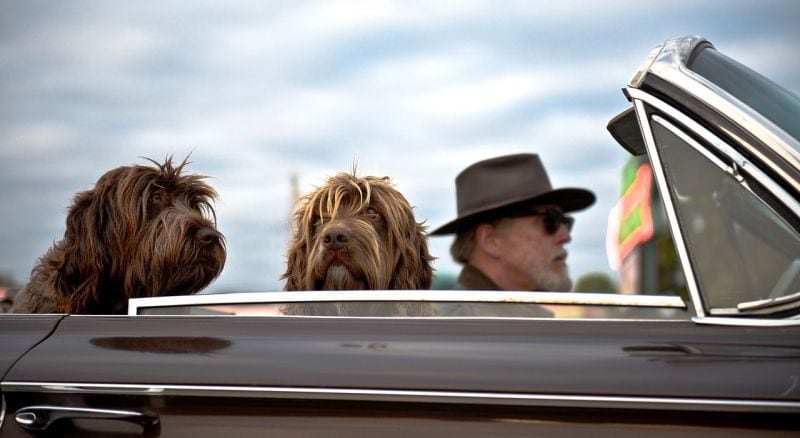
Hopefully, you’re heading to a fun and fantastic destination. But whether you’re heading for the Big Apple or East Bumble, take a few minutes to check out the canine attractions in the area .
Many modern cities offer incredible dog-friendly amenities, ranging from off-leash parks to pet-friendly pubs and restaurants .
Some cities have canine daycare facilities that would be helpful when you must leave your pup for a while, and others have – this is no joke – dog lockers you can use to help keep your dog comfy, safe, and out of trouble while you’re shopping.
The point is, you’ll want to make the most of your trip and ensure your dog gets to take advantage of any special opportunities available.
It won’t take you long to do so, so spend 10 minutes Googling to get the low down . You can also check out our guide to the best dog-friendly vacation destinations as well as the 12 best dog-friendly cities if you’re heading to a mainstream metropolis.
Rover’s Road Trip Checklist
We’ve put together the checklist below to help during your next vehicular adventure with the dog.
We’d recommend saving or bookmarking this article on your phone as a handy reference, or even better, print out this list and slap it on the fridge.
- ID Tags with up-to-date contact info
- Food and water dishes
- Bottled water
- Car harness or crate
- Any necessary medications (including monthly meds, such as heartworm or flea medicine)
- Two to three favorite toys
- Dog-safe wet wipes (for messes)
- An old bath towel (for big messes)
- Any training tools (clickers, heel sticks, etc.) you plan on using during the trip
- Emergency contact info and resources
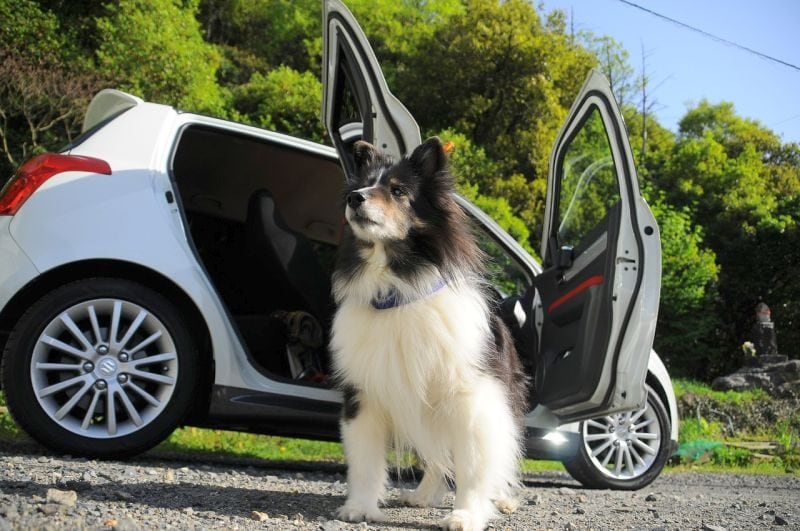
Don’t Forget to Keep Things Organized!
Chances are, you’re now sitting at your kitchen table with all of your dog’s necessities spread out in front of you. Just be sure that you keep things organized so that you can find tools and supplies when you need them .
The easiest way to do so is by picking up a premade dog travel bag. We love the Hilike Pet Travel Bag , as it comes with insulated food storage containers, silicone travel bowls, and a feeding mat , while still providing plenty storage space for some of your dog’s other gear.
But if you want to save some bucks, you can just use whatever travel bag or backpack you have stuffed in your closet .
The important thing is just that you keep all of your dog’s stuff together. This will make it easy to find things when you need them and help you avoid losing your pupper’s favorite toy or your backup leash when you need it.
Traveling with a big pup? Check out our tips for car travel with large dogs !
Don’t be overwhelmed by all of the things you’ll want to address and take care of before heading on a road trip with your pooch.
There are certainly lots of things to do and think about, but once you’ve done so, you can be reasonably sure that you’ll avoid most problems and be prepared for any that do occur. And that will help ensure you and your floof have a fantastic time.
Have you ever taken a road trip with your dog? How did it go? What kinds of things do you do that we didn’t mention? Let us know your thoughts in the comments below!
Like it? Share it!

Recommended For You
Taste of the Wild vs Blue Buffalo: A Head-to-Head Comparison
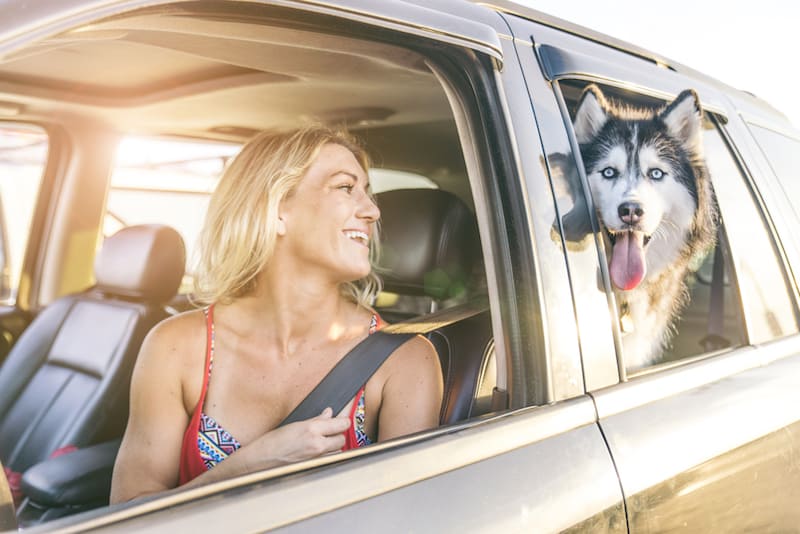
How to Keep Your Dog Cool in the Car During the Summer!
Join our pup pack!
Get tons of great dog training tutorials, canine gear guides, and the latest doggy discounts.

Leave a Comment Cancel reply
Save my name, email, and website in this browser for the next time I comment.
This site uses Akismet to reduce spam. Learn how your comment data is processed .
Great information very helpful and clear thanks
Glad you liked it!
Also Worth Your Time
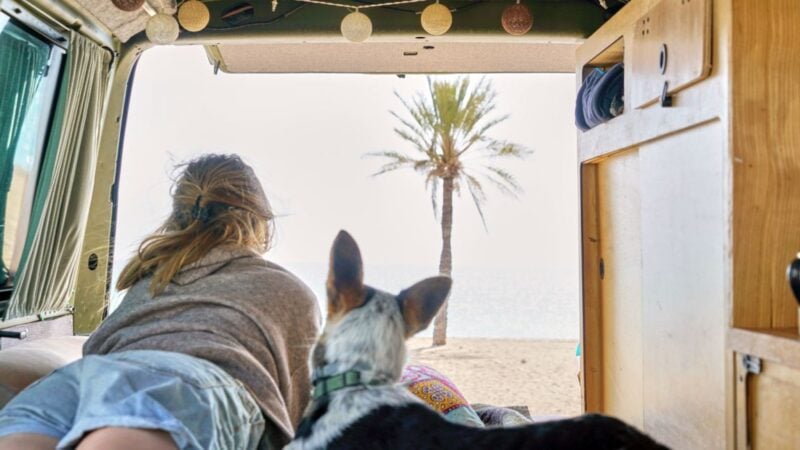
The 11 Best Dog Breeds for Van Life (and Some of the Worst)
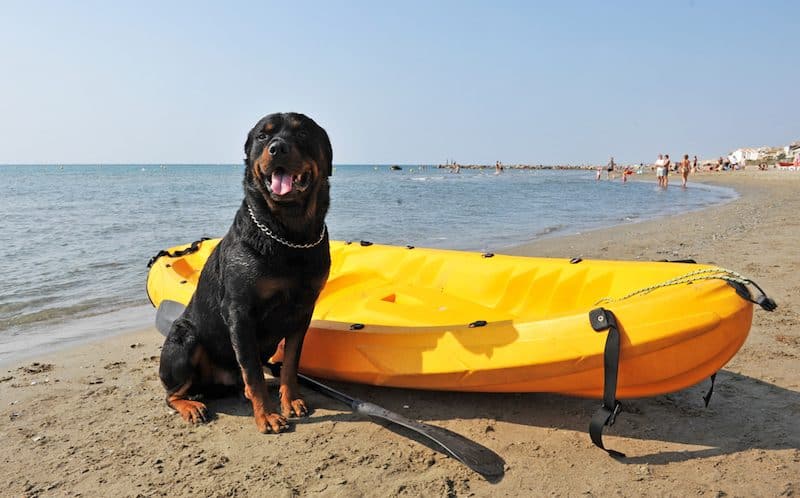
Beginner’s Guide to Kayaking With Your Dog
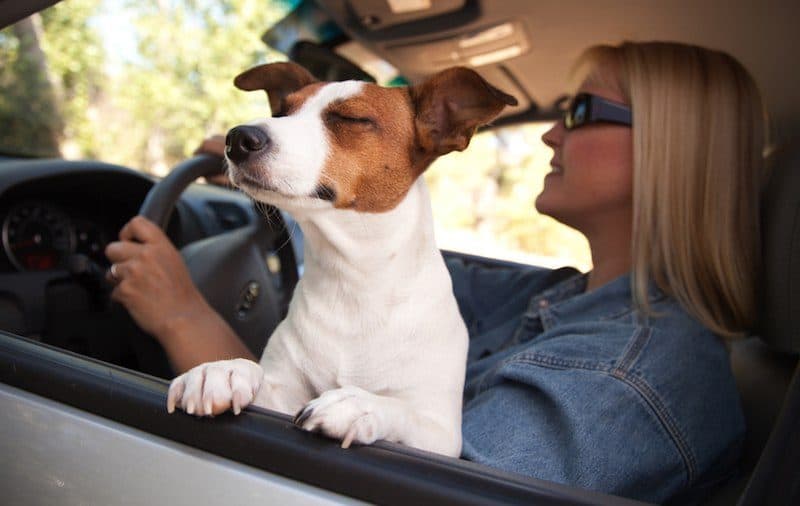
Best Dog Car & Booster Seats: Propping You Pup Up!
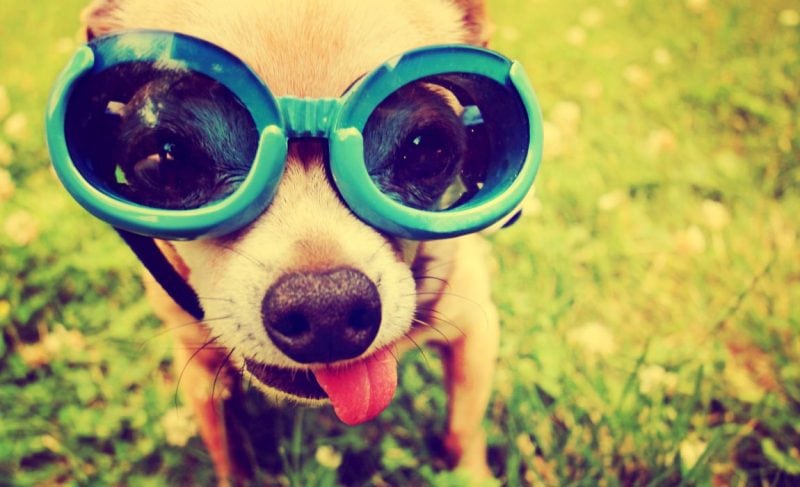
Best Dog Goggles: Protecting Your Pup’s Eyes!
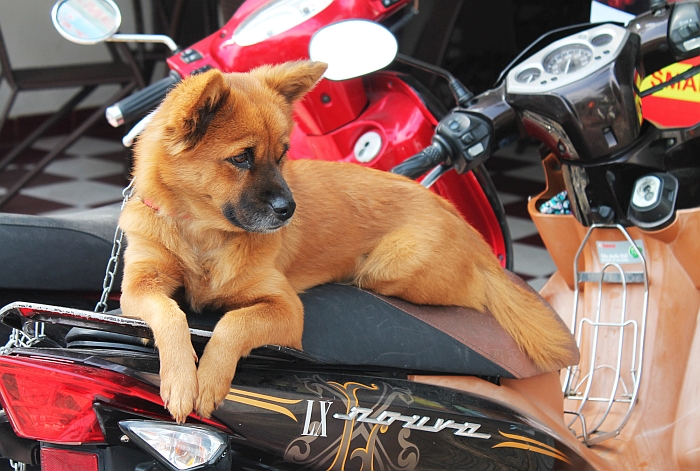
Dog Crates & Carriers
8 Best Motorcycle Dog Carriers: Road Cruising With Your Canine!
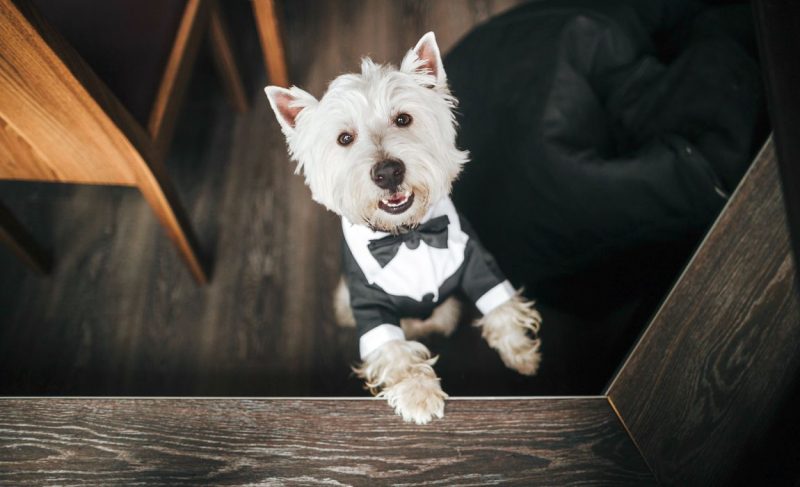
Collars & Harnesses
Best Dog Collars for Weddings: Giving Fido Some Fancy Flair
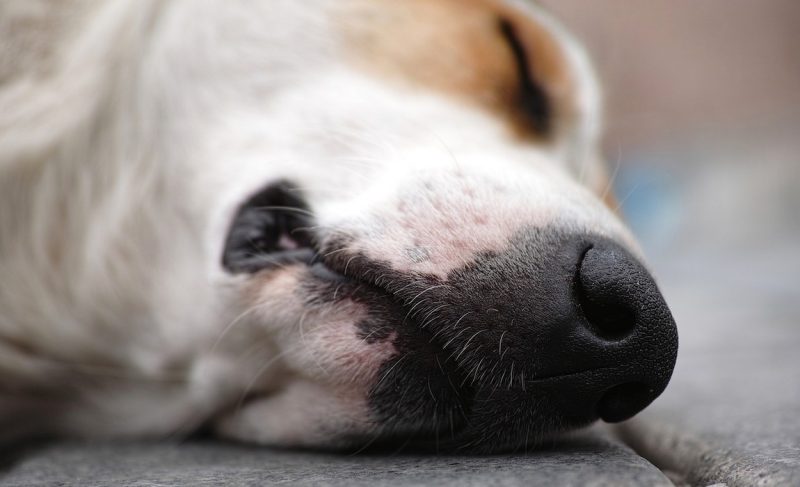
How To Do Dog CPR

+1 (512) 720-6136
[email protected]
Marrsipan Media LLC 5900 Balcones Drive #17677 Austin, TX 78731, USA
© Copyright 2024 by K9 Of Mine / Marrsipan Media LLC
USEFUL LINKS
About K9 of Mine
Privacy Policy
Terms of Use
K9ofMine.com is a participant in the Amazon Services LLC Associates Program, an affiliate advertising program designed to provide a means for sites to earn advertising fees by advertising and linking to Amazon.com. Additionally, K9ofMine.com participates in various other affiliate programs, and we sometimes get a commission through purchases made through our links.
K9ofMine.com does not intend to provide veterinary advice. While we provide information resourced and canine education, the content here is not a substitute for veterinary guidance.
- Search Search Please fill out this field.
- Sweepstakes
- Living with Pets
- Traveling with Pets
6 Practical Tips for Taking a Road Trip With Your Dog
These tips could make all the difference between a fun trip and a lot of stress—for you and your dog.
After loving 19 cats, 11 dogs, and a canary, Tracey married someone allergic to all those creatures. Thankfully, she receives oodles of animal goodness sharing stories on Daily Paws! When not traveling, teaching yoga, or doing voiceover projects, she's an editorial strategist and developer for print, digital, and multimedia platforms.
:max_bytes(150000):strip_icc():format(webp)/TK-headshot-dca429224052414a8f7405a9f66233de.jpg)
"A vacation isn't a vacation unless the dogs come along," Colby Lehew says.
The owner of Dogletics , a dog training and walking company based in Chicago, is serious about her love of going on road trips with her dogs in tow. So much so, she named one of her two Australian shepherds Haven after her favorite road trip destination of South Haven, Mich., about a two-hour drive from home. On several occasions every year, Lehew loads up her car with 2-year-old Haven and 4-year-old Loki. And she isn't the only one.
According to the 2021-2022 National Pet Owners Survey conducted by the American Pet Products Association (APPA) , 70 percent of U.S. households (or 90.5 million families) have a pet. And more than 60 percent of pet owners love taking their furry friends on vacation and are always in search of the next dog-friendly destination.
As you're planning a future road trip with your dog, it's important to consider how to make the event safe and stress-free for your pup so you can all get excited for the adventure.
6 Practical Tips for a Road Trip With Your Dog
1. create positive associations with your car.
"A lot of dogs are afraid to go for a ride in the car because the only time they go anywhere is when you take them to the vet or to get groomed," Lehew says.
If this is the case with your pet, you may want to start planning some fun things locally to get your dog more excited to go with you and be more comfortable in the car . That way, he won't associate car trips with stressful situations. Take him to a dog park or visit a nearby pet store and make sure he gets a treat out of the excursion.
"If you constantly do fun things, they will no longer be afraid, and from there you can go so far as to start planning a cross-country road trip with your dog," Lehew explains.
It's a good idea to start with small distances (30 minutes to two hours) before traveling long distances, and to pay attention to stress signals from your pooch. These signs can come in the form of yawning a lot , licking their lips, or even vomiting .
Another important thing to think about when bringing your dog along on any car trip is how to secure him safely . There are several types of restraints, and it pays to do some research on what kind of travel gear you should get for your individual pet, including a carrier, harness, crate, or a car seat.
2. Know How to Ease Motion Sickness
Wonder how to travel with a dog who gets car sick? It doesn't happen to every furry pal, but there are some key reasons it might. Kingsbrook Animal Hospital notes that it's common with young dogs under a year old because parts of their inner ears, which affects orientation and balance, aren't fully developed. Other dogs also have middle- or inner-ear infections or vestibular disease that causes nausea.
Additional symptoms of motion sickness include:
- Excessive drooling
- Lethargy or inactivity
- Extreme restlessness
If your pup is fairly acclimated to riding in the car but still prone to getting queasy, help them stay calm by keeping the interior cool, especially where they're riding. Maybe only offer a small nibble 6–12 hours before the trip starts to reduce the chances of stomach upset, and have plenty of fresh water available.
Finally, talk with your veterinarian about anti-nausea medications, such as Cerena , that may help. However, if your poor pooch has anxiety-induced motion sickness, your vet might prescribe something to help mitigate that first.
3. Research Dog-Friendly Destinations
When preparing for a road trip with your dog anywhere in the U.S., try to plot out a few fun dog-friendly stops along your route. This will give both you and your pup opportunities to stop and stretch your legs, as well as take in more of the sights in different areas before reaching your final destination. Especially if you can stop in places with walking trails to get your dog some much-needed exercise .
"I like to look at AllTrails for great places to go with Loki and Haven," Lehew says. "You can filter by dog-friendly trails. It's a great app to look at when planning road trips with dogs."
Before you leave home, do some research on dog-friendly places you can go to and activities you can partake in together. This will come in handy when you get to your final destination so you can start enjoying day one of your vacation. This could include dog-friendly restaurants , breweries, and wineries , as well as hiking trails or nature preserves, beaches , lakes , and anywhere else that piques your interest.
Apps like BringFido or BarkHappy are free and helpful resources for pet owners looking for pet-friendly travel options, and can help you find many attractions both you and your canine companion can enjoy. This includes pet-friendly Airbnbs , hotels , and cabins .
4. Plan for Emergencies
One of the best tips for traveling with your dog in general is to mentally prepare for any potential emergencies. This means researching emergency vets and pharmacies local to your destination and putting those numbers into your phone. And make sure you have your own vet's 24-hour emergency helpline (if they have one) in your contacts.
Some signs to look for that would indicate a potential emergency include:
- Obvious injury or bleeding
- Signs of poisoning
- Allergic reaction
- Excessive vomiting
Make sure you know some basic dog first aid techniques such as how to do CPR or the Heimlich maneuver , and always ensure your dog has an updated microchip and wears a collar with ID tags in case he gets lost.
5. Also Plan Potty Breaks
Try to stop for a bathroom break once every 90 minutes, Lehew recommends. While putting together your itinerary, check maps to see where you can stop along the way and make an effort to visit a few parks or trails so your pooch can run around for longer than just a few minutes.
"Just like it can be hard for a child to sit in the car for a long period, it's the same for many dogs," Lehew says.
6. Exercise and Play Often
Abide by your dog's exercise needs, even while traveling. This ensures they'll stay in tip-top shape the entire trip. Couple regular opportunities to leave the car with special vacation toys that your pooch can only play with while on excursions away from home. This positive reinforcement training means soon, your pup will point a paw in the direction of your next adventure!
Related Articles
More related articles.
Woof Whiskers
Road trip with a dog: essential tips for a paw-some adventure.

Last Updated: April 15, 2024 by Lisa Melillo
There’s nothing like the road stretching endlessly before you, your favorite tunes playing, and your furry best friend in the passenger seat, head out the window, ears flapping in the breeze. It’s heartwarming too see your dog equally excited for every pit stop and new scent.
But as every seasoned traveler knows, a great journey with your pet requires some savvy preparation. It’s not just about packing your bags—it’s about ensuring your companion is as comfortable and secure as you are. Preparing means thinking of everything from their favorite chew toy to their snug safety harness.
So, ready to learn how to road trip with a dog? Stick with me as I guide you through creating the perfect travel experience for you and your pup. Let’s make sure your next road trip is unforgettable, filled with fun, fur, and plenty of paw-friendly pit stops!
Pre-Trip Preparations: A Tail-Wagging Start to Your Journey

Planning a road trip with your dog isn’t just about mapping your route—it’s also about ensuring your furry companion is as road-ready as you are. Let’s dive into some essential preparations that can make the trip smoother for both of you.
Health Check: The Vet Visit
Before you even think of packing, a trip to the veterinarian is a must. This isn’t just about a routine check-up; it’s about making sure your dog is fit for the journey ahead.
Last year, before a road trip to the mountains, I learned the hard way that my dog needed a tick prevention treatment after finding a tick nestled in her fur—something I’d have missed without a vet’s keen eye.
Discuss vaccinations that might be necessary depending on your destination—like Lyme disease in wooded areas or Bordetella for those frequent rest stop interactions.
Getting Microchipped: A Safety Net on the Road
Microchipping your dog can be a game-changer, especially when traveling. It’s a simple procedure where a tiny chip, about the size of a grain of rice, is inserted under your dog’s skin, typically between the shoulder blades.
This chip carries a unique ID number that can be read by a scanner at most animal shelters and veterinary offices. If your dog ever gets lost, a quick scan can help identify them and bring them safely back to you. It’s a small step that offers a big peace of mind.
After your dog is microchipped, the crucial next step is registering the chip with your current contact information and regularly updating it if anything changes. Many pet owners overlook this, but it’s essential for the microchip to serve its purpose.
Documentation: Keeping It All in Check
I keep a pet travel folder—yes, just like an important documents folder for humans. This includes health records, a recent photo of my dog, and copies of her registration and microchip numbers. It’s like her passport, proving invaluable at dog-friendly hotels or in case of a veterinary emergency far from home.
Desensitization: The Practice Runs
If your dog isn’t used to car travel, start with short jaunts to fun places—think a local park or a new hiking trail. It’s about making the car a gateway to fun, not just a moving box that leads to the vet.
On one of our first short trips, my dog was visibly anxious, pacing in the back seat. Over time, she learned that car rides often end in exciting walks and new smells, which helped her settle down.
Comfort: Their Home on the Road
The right setup is crucial for a calm trip. Test different arrangements to find what makes your dog most comfortable. Is it a crate filled with their favorite cushions, or a seat cover that allows them to look out the window safely? Whichever you choose, ensure it’s secure. Nothing spoils a trip faster than a loose crate sliding at every turn.
Dog Road Trip Essentials: Packing With Purpose and a Pinch of Fun

Heading out on a road trip with your dog isn’t just about tossing a bag and a leash into the backseat. Nope, it’s more like preparing for a furry, four-legged toddler.
From snacks to snooze setups, here’s how to ensure your dog is as well-packed as you are, making the journey enjoyable for everyone involved.
Don’t Skimp on the Snacks and Slumber
- Food and Water : I’ve learned that my dog, like most, can be a bit of a diva about her diet on the road. So, we bring along her regular food plus some canned pumpkin—it’s great for digestion and helps keep any travel-related tummy troubles at bay. Don’t forget a portable water dispenser; hydration is key, especially on those hot travel days.
- Bedding : Just like us, dogs appreciate a comfy place to crash. Whether it’s their favorite fluffy bed from home or a special travel mat, make sure they have a cozy spot to unwind after a day of adventures.
Safety First: Securing Your Sidekick
- Leash and Harness : Always have a sturdy leash and a well-fitted harness . I prefer a reflective or glow in the dark leash for extra visibility when those inevitable late evening or early morning pit stops happen.
- Crate or Safety Restraint : Safety restraints are non-negotiable. A crash-tested crate or a safety belt that clips into your car’s seatbelt system can make all the difference in an unexpected driving situation. Plus, it helps keep your dog from becoming a lap navigator!
Health Kit and Clean-Up Crew
- First-Aid Kit : Accidents happen, so having a first-aid kit for your dog is crucial. Mine includes the basics like bandages and antiseptic, plus a tick removal tool—essential for those impromptu nature walks.
- Grooming Supplies : A brush, eco-friendly poop bags, and a few old towels for muddy paws can make your car a cleaner, more pleasant space. Trust me, nothing’s worse than the smell of wet dog marinating in car upholstery.
Comfort and Entertainment: Happy Dog, Happy Drive
- Toys and Chews : A few well-chosen toys can prevent your dog from getting bored and chewing on, say, your car seats or travel bags. Last trip, we brought a new puzzle toy, and it was a hit—kept her busy and out of trouble.
- Calming Aids : For the more anxious pooch, calming supplements or a pheromone collar can be a game changer. They help soothe travel nerves, making the drive smoother for everyone.
Documentation: Cover Your Bases
- Medical Records and ID : Keep your dog’s medical records and a recent photo on hand in case of emergencies. Make sure their microchip information is up-to-date—this is the lifeline if they ever get lost.
Staying Safe on the Road

Traveling with your dog can transform a simple road trip into an unforgettable adventure. But as every pet owner knows, it also introduces a new layer of responsibility—ensuring the safety of your furry co-pilot.
Ensuring Safe Confinement
Securing your dog in the vehicle is one of the most important safety measures. From personal experience, a properly fitted crate has been a game-changer. It keeps my dog safe from abrupt stops and gives him a private space to feel secure. The crate should be large enough for him to stand, turn around, and lie comfortably.
On the other hand, a dog seatbelt harness offers more flexibility for him to look out the windows, which he loves, while ensuring he’s strapped in safely during the drive.
Many times, choosing between a crate and a harness depends on your dog’s temperament and your travel needs. For longer trips, I lean towards the crate because it allows for the inclusion of familiar bedding and toys, making it a cozy den on the go. For shorter trips, a harness connected to the car’s seatbelt system works well, ensuring he’s safe but also part of the action.
Window Safety
When it comes to windows, the rule of thumb is safety first. Letting a dog hang its head out the window is a popular image, but in reality, it can be quite dangerous. Road debris can cause injury, and the high winds can dry out their eyes or even lead to respiratory issues. I keep the windows only slightly open to ensure fresh air circulation without letting my dog stick his head out.
It’s also important to use child locks or window locks if available, to prevent your dog from accidentally opening the window wider with their paws. This measure helps maintain control over the environment inside the car and prevents any unexpected escapes or accidents.
Routine Stops and Supervision
Planning for routine stops is essential for a road trip with a dog. These breaks are not just for bathroom needs but also provide a crucial opportunity for your dog to stretch and decompress from the journey.
I aim for a stop every two to three hours, which keeps my dog from getting too restless or uncomfortable. During these stops, it’s a good chance to offer water and a small snack, check for any signs of stress or discomfort, and just let him enjoy a little playtime.
Never leave your dog unattended in the car during these breaks. Even with mild outside temperatures, the inside of a car can heat up rapidly, leading to dangerous conditions.
Managing the Environment
Keeping the car environment controlled and comfortable is key to a successful road trip with your dog. This includes maintaining a steady temperature and ensuring good ventilation. Overheating in cars is a serious risk, even on days that aren’t particularly hot. I always make sure the air conditioning or heating is adjusted so that it’s comfortable for all passengers, especially my furry friend.
Additionally, managing noise levels can help reduce stress. I find that playing soft music or even a podcast can soothe my dog during longer drives. It’s also beneficial to keep any sharp noises to a minimum, as these can startle and unsettle your pet.
Finding Dog-Friendly Locations and Accommodations
Planning a road trip with your furry friend in tow means ensuring every stop and stay caters to both your needs. Here’s how to make sure every step of your journey is pet-friendly.
Researching Dog-Friendly Spots
Before you hit the road, a bit of research can ensure you and your pup are welcome wherever you stop. I use apps like BringFido and websites like DogFriendly to scout ahead for pet-welcoming establishments. These tools have been invaluable, helping me find everything from cafes and parks to beaches that welcome wagging tails.
Here’s what I usually look for:
- User Reviews : They can reveal the true nature of how dog-friendly a place is.
- Amenities for Pets : Like complimentary dog bowls and dog treats.
- Surrounding Area : I look for nearby parks or trails for quick walks.
Last year, we stumbled upon a great little diner that offered a special menu just for dogs. It wasn’t just the novelty that made it memorable, but also how the staff went out of their way to accommodate us. It made our stop a refreshing break on a long drive.
Booking Accommodations
Finding the right place to stay with your dog requires more than just ticking the ‘pet-friendly’ box. Here’s a quick checklist for booking accommodations:
- Pet Policies : Always confirm the specifics as some places have restrictions on size, breed, or number of pets.
- Pet Fees : Check for additional charges so you’re not caught off guard.
- Facilities for Pets : Look for places with special pet areas or services.
On our last road trip, I booked a place through a popular travel site known for its pet-friendly filters. However, calling ahead saved us from a potential mix-up regarding their newly implemented pet weight restrictions.
Handling Emergencies and Other Potential Situations During Road Trips With a Dog

No matter how well you plan, traveling with your dog can sometimes throw you a curveball. From health scares to unexpected detours, being prepared can make handling these situations less stressful.
Preparing for Health Emergencies
Even the healthiest pets can face sudden illnesses or injuries. Carrying a well-stocked pet first-aid kit has been a lifesaver on more than one occasion. Beyond the basics like bandages and antiseptics, I include items specifically for my dog, like styptic powder for nail injuries and a spare tick remover.
Before we leave, I always make sure to locate the nearest veterinary hospitals along our route and save their contact information in my phone.
It’s also a good idea to have a basic understanding of pet first-aid procedures—I’ve attended a couple of workshops, and the knowledge has given me much more confidence on our trips.
Once, my dog began acting lethargically after a hike; thankfully, I was able to quickly contact a vet for advice using the numbers I had saved. It turned out he was just dehydrated, but knowing I could get help fast made all the difference.
Navigating Non-Medical Emergencies
Not all road trip snags are health-related. Here are some examples of what you should prepare for:
- Extreme Weather Conditions : Dogs can be particularly sensitive to extreme temperatures. For instance, very hot or very cold weather can pose significant health risks to your dog if not managed properly. Ensuring your dog has a comfortable and safe environment, such as adequate cooling or heating in the car, is crucial.
- Car Breakdowns : If your vehicle breaks down, the stress and danger of being stranded on the roadside are heightened when you have a dog with you. It’s important to keep your dog restrained and calm while waiting for help, and ensure they have shade and water if you’re stuck for a prolonged period.
- Getting Lost : Losing your way can be more problematic when your dog needs regular stops for exercise and bathroom breaks. Delays caused by detours or getting lost can disrupt your dog’s routine and cause anxiety or discomfort.
- Traffic Delays : Unexpected delays due to heavy traffic or accidents can extend the time your dog is confined in the car, which might lead to discomfort or distress. Planning for frequent breaks and having water and snacks accessible can help manage this.
- Running Out of Supplies : Especially on long trips, you might find yourself running out of essential supplies like dog food , water, or medication. This can be a significant issue if these items aren’t readily available on your route.
- Encounters with Wildlife or Stray Animals : If you’re stopping or staying in rural areas, the presence of wildlife or stray animals can pose unexpected threats to your dog. Ensuring your dog is on a leash and monitored at all times during breaks can prevent dangerous interactions.
Tips for Protecting Your Car on a Road Trip With a Dog

Taking your dog on a road trip can be a blast, but it can also be tough on your car. Here’s how to keep your vehicle in tip-top shape while accommodating your furry friend.
Use Seat Covers or Blankets
One of the simplest ways to protect your car’s upholstery is to use durable seat covers or blankets specifically designed for pets. These covers prevent scratches, dirt, and fur from getting embedded in your car seats and are usually waterproof, which helps in any accidents or spills.
Invest in a Pet Hammock
A pet hammock not only provides a safe and comfortable space for your dog in the backseat but also protects the floor and back of your front seats. It creates a barrier that stops your dog from climbing into the front seat, which can be distracting and dangerous while driving.
Keep Windows Scratch-Free
Dogs often get excited and may paw at windows, which can leave scratches. Consider using a protective film on the windows that your dog can reach. These films are clear, so they won’t obstruct your view and will keep your windows looking pristine.
Regular Cleaning Routine
Even with all the right equipment, your car will likely get dirtier than usual. Establish a routine to vacuum your car regularly, focusing on removing pet hair and any dirt tracked in during the trip. Wipe down surfaces with a damp cloth to pick up any lingering fur or mud.
Air Fresheners and Odor Eliminators
Dogs can bring all sorts of smells into a car, especially on long trips. Use air fresheners or odor eliminators designed for pet odors to keep your car smelling fresh. Some products can be placed under seats or in cup holders to continuously combat odors without overwhelming the cabin with strong scents.
FAQs on How to Road Trip With a Dog
How long can a dog go on a road trip.
The length of time a dog can comfortably spend on a road trip varies depending on the dog’s age, breed, and health. Generally, it’s recommended to stop every 2-3 hours to let your dog stretch, use the restroom, and drink water. This not only helps to keep them comfortable but also reduces stress and anxiety.
How do I keep my dog calm on a road trip?
To keep your dog calm during a road trip, consider using calming aids such as a pheromone diffuser or calming treats. Make sure their travel space is comfortable with familiar blankets or toys. Regular exercise before and during the trip can also help reduce anxiety and keep your dog more relaxed.
Should I feed my dog before a long car ride?
It’s best to feed your dog a light meal 3 to 4 hours before departing on a long car ride. Feeding your dog right before leaving can cause motion sickness. Always provide access to water and consider packing snacks, especially for longer journeys.
Do dogs get tired from long car rides?
Yes, dogs can get tired from long car rides, similar to humans. The constant motion can lead to fatigue. Ensuring that your dog has a comfortable space to rest, taking regular breaks, and keeping the car well-ventilated helps minimize tiredness and keeps your dog comfortable throughout the journey.
Where should a dog sit in a car?
The safest place for your dog in a car is in the back seat, secured with a crash-tested safety harness or in a travel crate that is anchored. This setup protects both your dog and passengers in the car by minimizing distractions for the driver and securing the dog in case of sudden stops or accidents.

Make Every Mile Count
Heading out on a road trip with your dog? It’s all about making sure you’ve got everything packed, knowing your dog’s needs, and being ready for anything that might come up. It’s not just about seeing new sights; it’s about creating fun and happy memories with your furry friend right beside you.
Honestly, there’s nothing quite like sharing the adventure of a road trip with your dog. Just remember to keep things safe and comfy for them, and you’re set for an amazing time. Here’s to smooth roads and tail wags, making every mile count on your journey together!
Leave a Comment Cancel Reply
Your email address will not be published. Required fields are marked *

Best Dog Food Gear Reviews Fresh Dog Food Delivery
HOME / BLOG / Travel Destinations 49 Places To See On A Pet Friendly American Road Trip
49 Places To See On A Pet Friendly American Road Trip
- By Amy at GoPetFriendly.com
- May 8, 2023
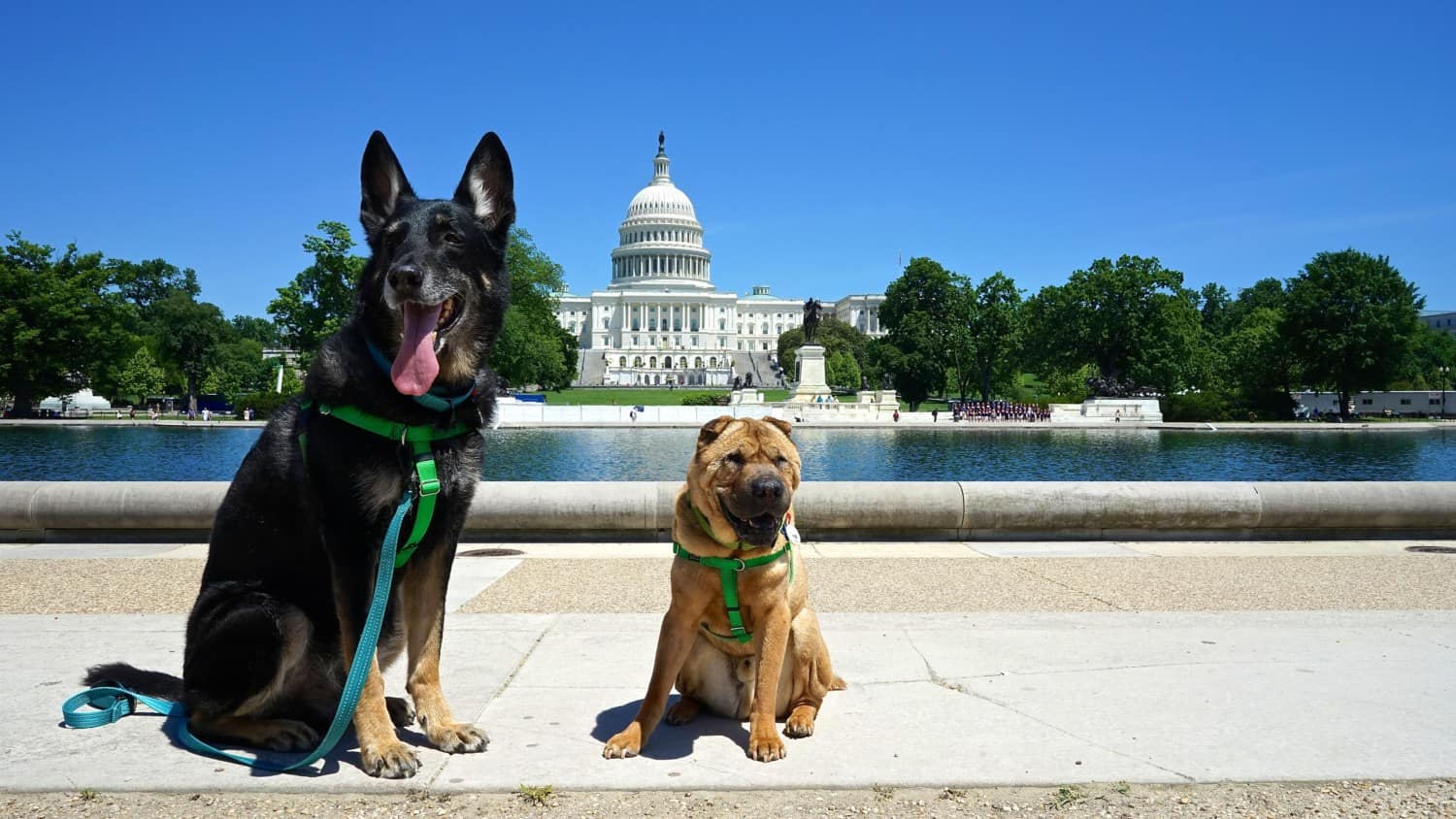
The American road trip … it’s iconic! And there’s no better way to see some of the most special places across the country. But what if you want to include your pet in the fun? Here are 49 breathtaking sights you’ll love exploring together on a pet friendly American road trip!
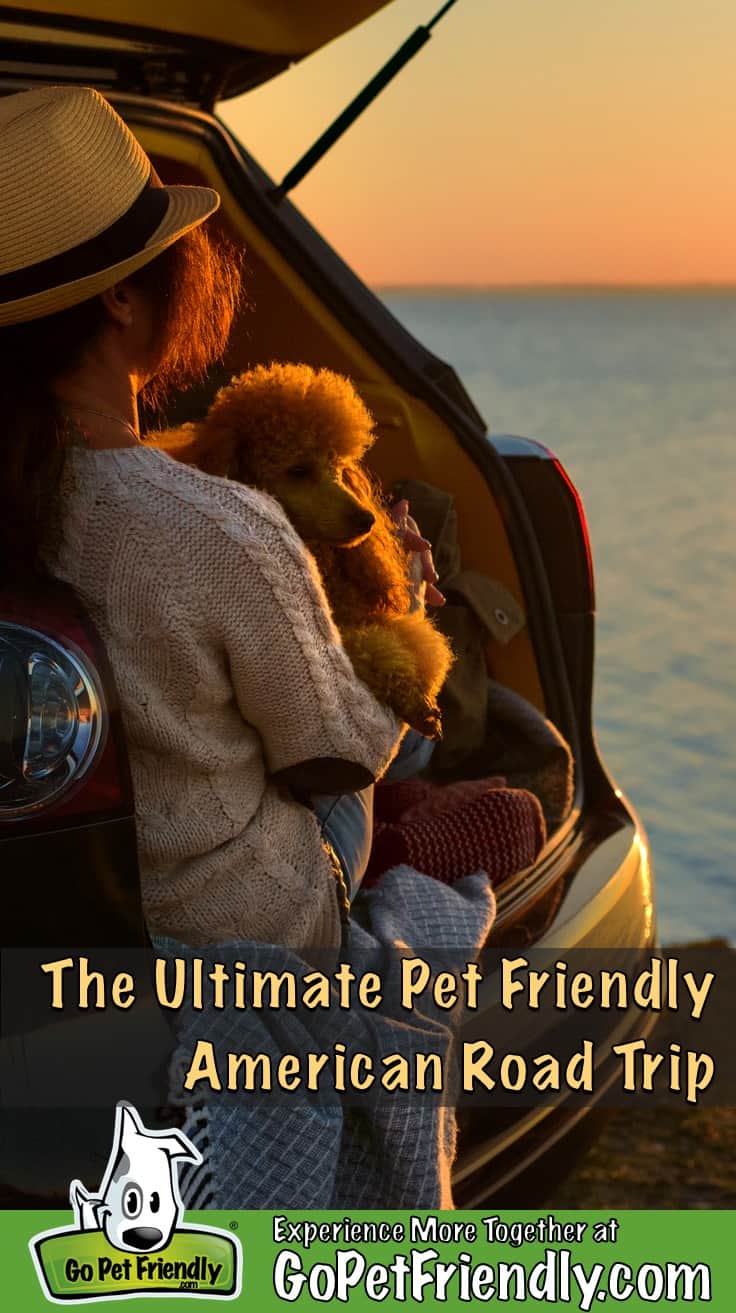
Road trip vacations are as American as apple pie. And yet, planning to see the “best” the United States has to offer can be overwhelming. Your trip could focus on cultural sites, national parks, state capitols, scenic landmarks, or sports venues.
But if you’re looking for a truly special experience, why not plan the best pet friendly American road trip? Visit the top pet friendly attraction in each state, and collect precious memories with your best friend along the way!
A Pet Friendly American Road Trip
The most difficult part of planning an epic road trip is choosing the stops. From beaches to mountain tops, bustling cities to secluded retreats, you want to see the very best places across the country.
We traveled full-time with our dogs for twelve years, spending time in all of the lower 48 states. And we’re happy to share what we’ve learned!
Whether you’re planning to see the whole country in one trip, or checking out one region at a time, the itinerary we’ve laid out for your pet friendly American road trip will give you a good feel for what each state is about. And very stop is guaranteed to be fun for you and your pet! Click on the name of each location for more details and photos.
READ MORE ⇒ How To Plan A Pet Friendly Road Trip
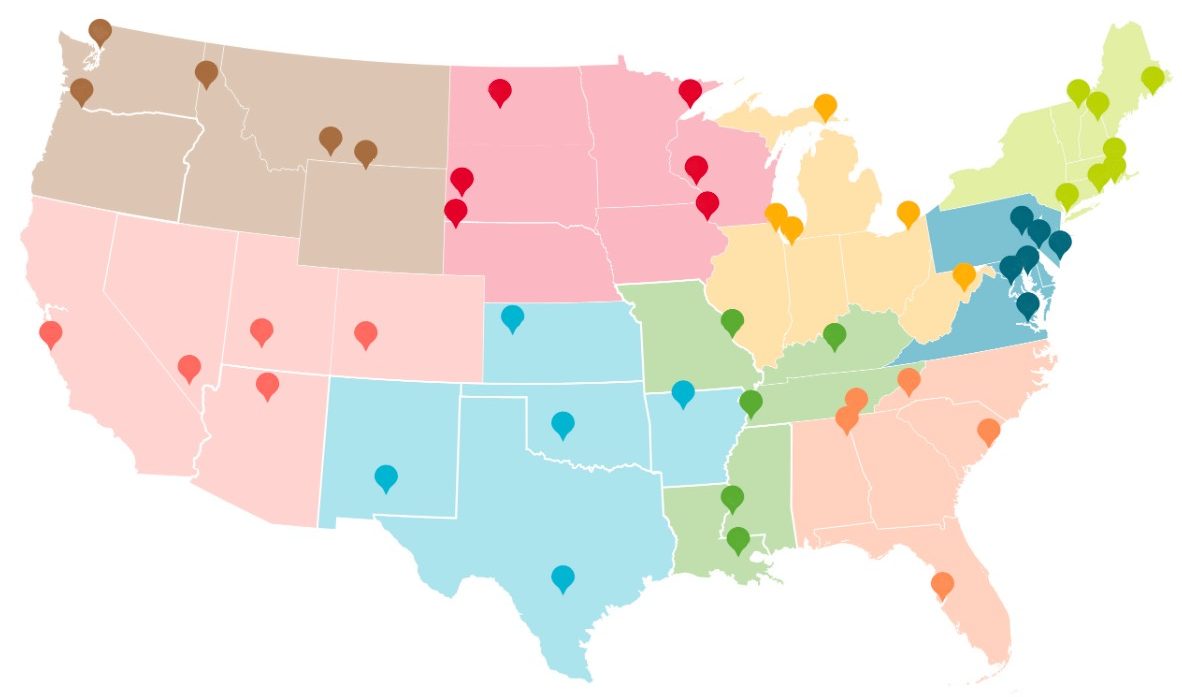
The Ultimate Pet Friendly American Road Trip
This itinerary covers nearly 15,000 miles and would take at least a couple of months to complete. If you can do it all at once, it’s absolutely the trip of a lifetime!
If you’re looking for shorter trips, choose one or two regions and do a deeper dive in each area. Any combination will make a fantastic pet friendly vacation.
The Northwest
We start this pet friendly American road trip in the northwestern United States. From Washington’s green isles to the heights of Beartooth Highway, this region has something for everyone!
READ MORE ⇒ Tips for Traveling Alone with a Pet
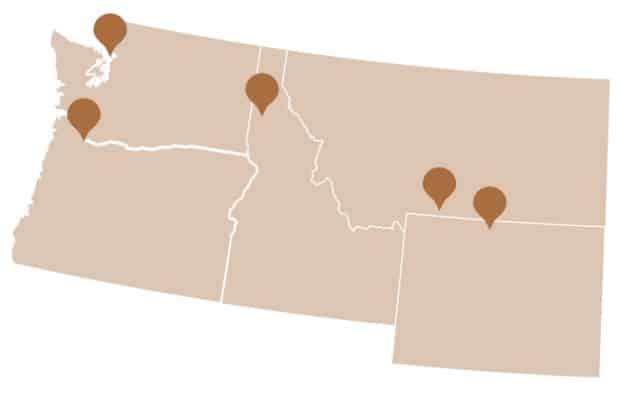
Washington – The San Juan Islands
In the far northwest corner of the contiguous United States, off the coast of Washington, lies a confetti of emerald jewels in the Salish Sea. Known as the San Juan Islands, the landscape is a patchwork of pine forests, stoney beaches, verdant pastures and fields, and sparkling lakes.
Each of the islands has its own charm, and no matter which you visit, you won’t be disappointed.

Oregon – Portland’s Parks and Gardens
With eclectic neighborhoods, great eateries, and one of the most extensive urban park systems in the country, Portland, Oregon is a pet friendly playground!
Boasting 10,000 acres of natural areas and parks scattered around the city, there’s a treasure around every corner. And if your pup enjoys being social, don’t miss some of the 20+ off-leash areas!
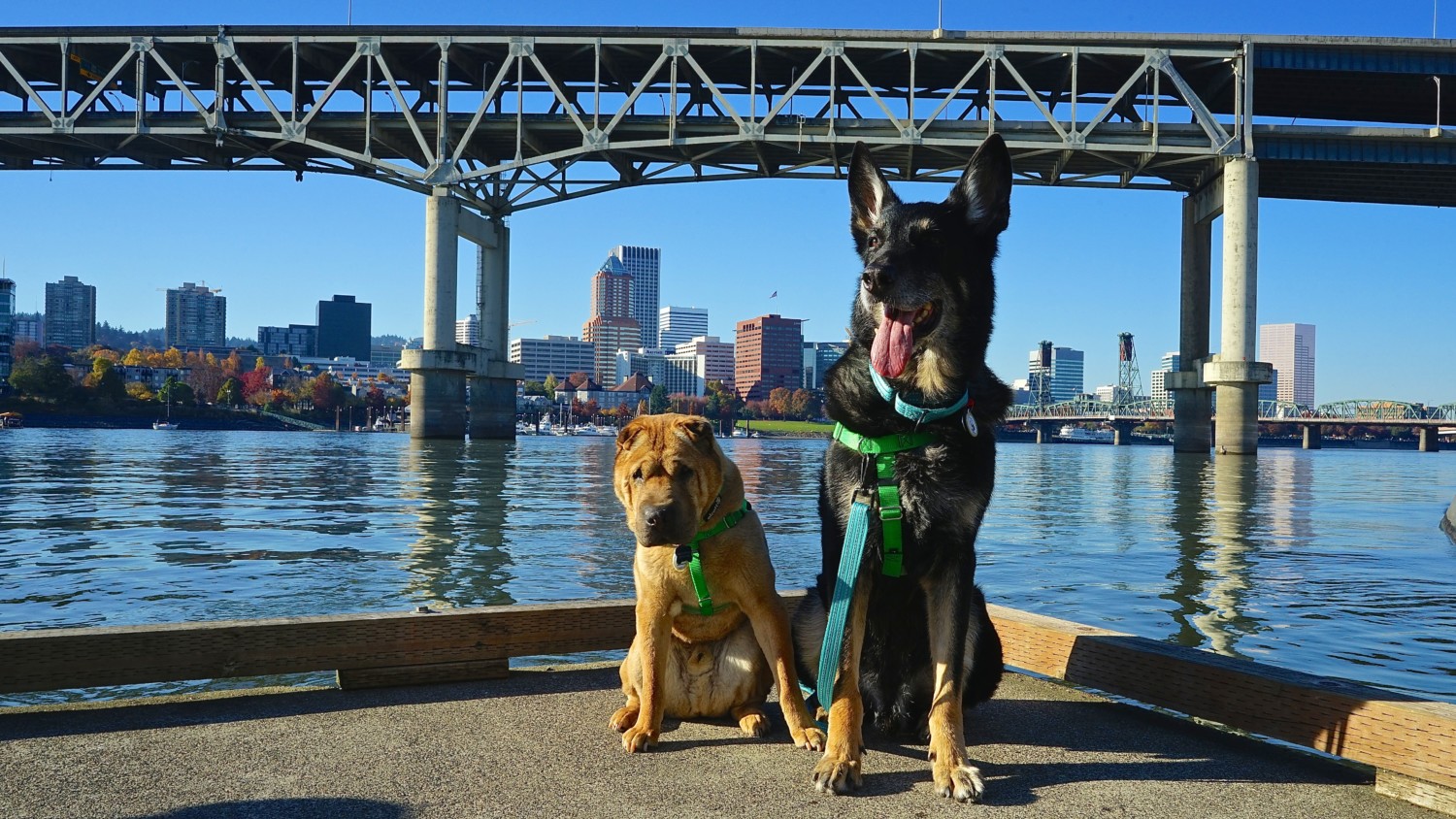
Idaho – Lake Coeur d’Alene
Among the rugged peaks of northern Idaho, where pine trees far outnumber people, lies one of the most beautiful lakes in the world. Unfolding over 26 miles with more than 135 miles of shoreline, Lake Coeur d’Alene is a sparkling blue jewel.
From scenic boat tours to miles of pet friendly trails, there are as many ways to enjoy Lake Coeur d’Alene as your imagination allows.

Wyoming – Bighorn National Forest – Medicine Wheel
You’ll find some of Wyoming’s most diverse terrain in the Bighorn Mountains. It would be easy to spend weeks hiking the 1,500 miles of pet friendly trails and enjoying the three scenic drives. But for us, nothing speaks to the timelessness and beauty of the Bighorns like a visit to Medicine Wheel.
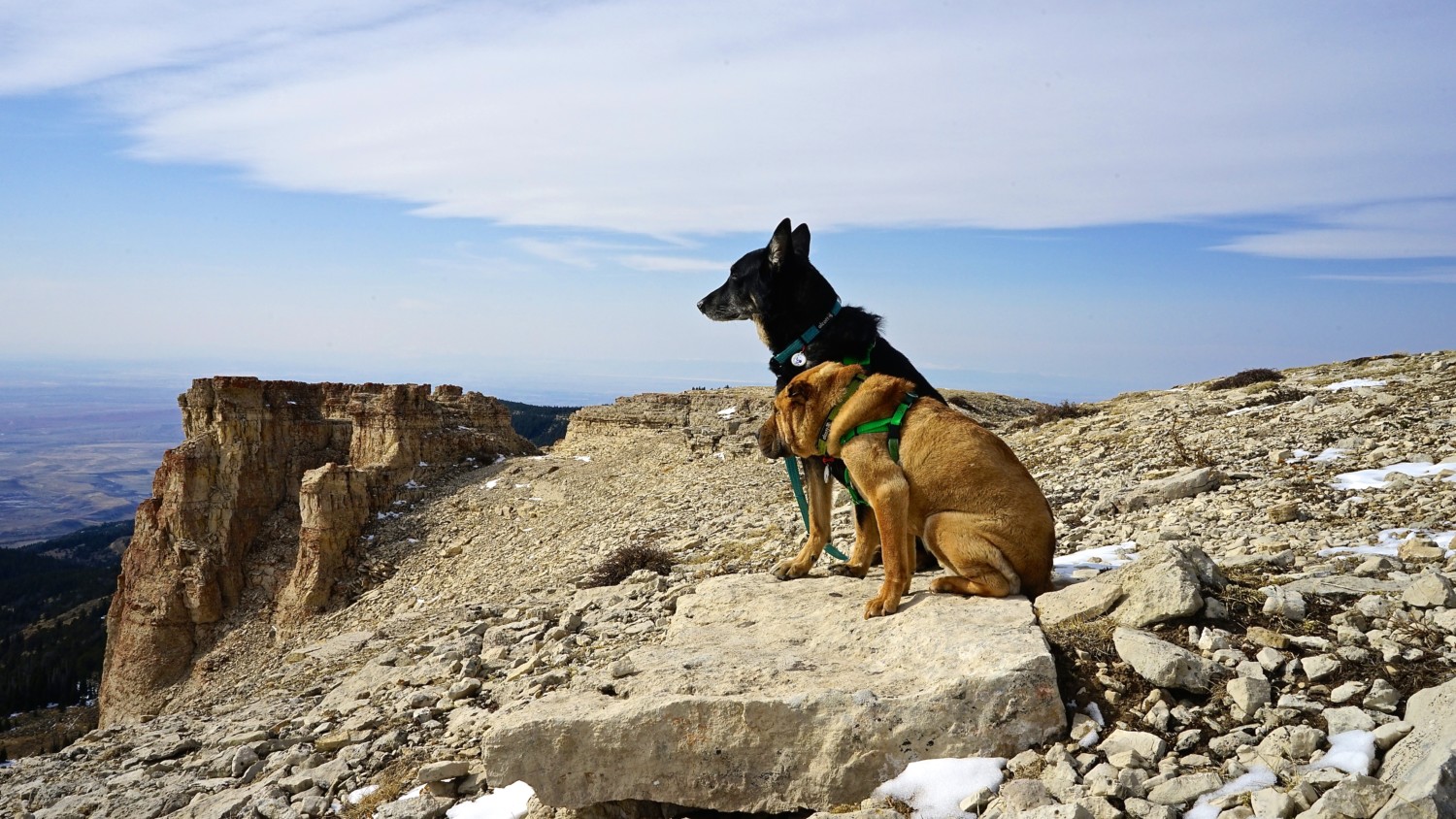
Montana – Beartooth Highway
For 68 miles, between Cooke City and Red Lodge, Montana, the Beartooth Highway winds through some of the most awe inspiring terrain in the United States. This road, one of the highest in the lower 48 states, passes 20 peaks that rise over 12,000 feet.
You’ll experience pristine mountain landscapes, lush forests, and alpine tundra – all within a few miles. And there are numerous places to park the car and hit a pet friendly trail with your furry travel buddy!

The Southwest
The southwest section of this pet friendly American road trip starts with a romp on Carmel’s spectacular dog beach. The next two stops at Red Rock Canyon and the Grand Canyon offer fantastic pet friendly hiking. And we top it off with a trip up Telluride’s gondola. You and your active pets are going to love this adventure!

California – Carmel’s Dog Beach
Carmel’s crowning glory is its magnificent beach. This mile-long stretch of sand begins just steps from downtown and runs to just below the 9th hole at Pebble Beach Golf Course. And it’s all pet friendly!
Dogs are welcome to romp off-leash on the beach. Or visit Carmel River State Beach, just down the road, where leashed pets will find plenty to explore.

Nevada – Red Rock Canyon National Conservation Area
It’s only 17 miles from the Las Vegas Strip, but Red Rock Canyon feels like a completely different world! From the 13-mile scenic loop road to the 30+ miles of pet friendly trails and picnic areas with great views, you’ll have a fantastic day here with your pet!
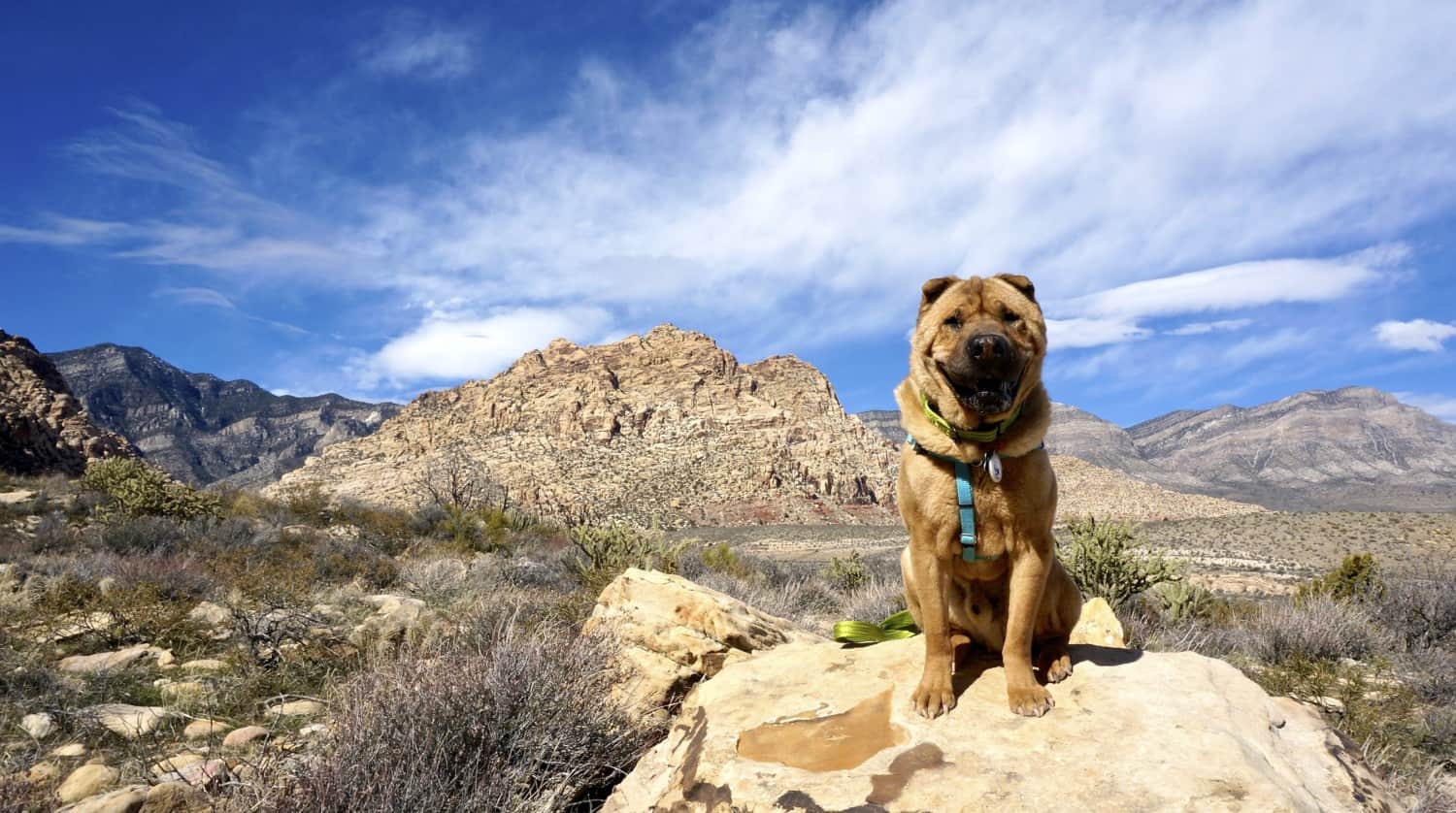
Arizona – Grand Canyon National Park
Traveling to any national park is a wonderful experience, but seeing the Grand Canyon with your pet will make your vacation unforgettable!
The pet friendly South Rim Trail runs for 14 miles and is paved for easy walking. Make sure to allow plenty of time to take in the panoramic views!
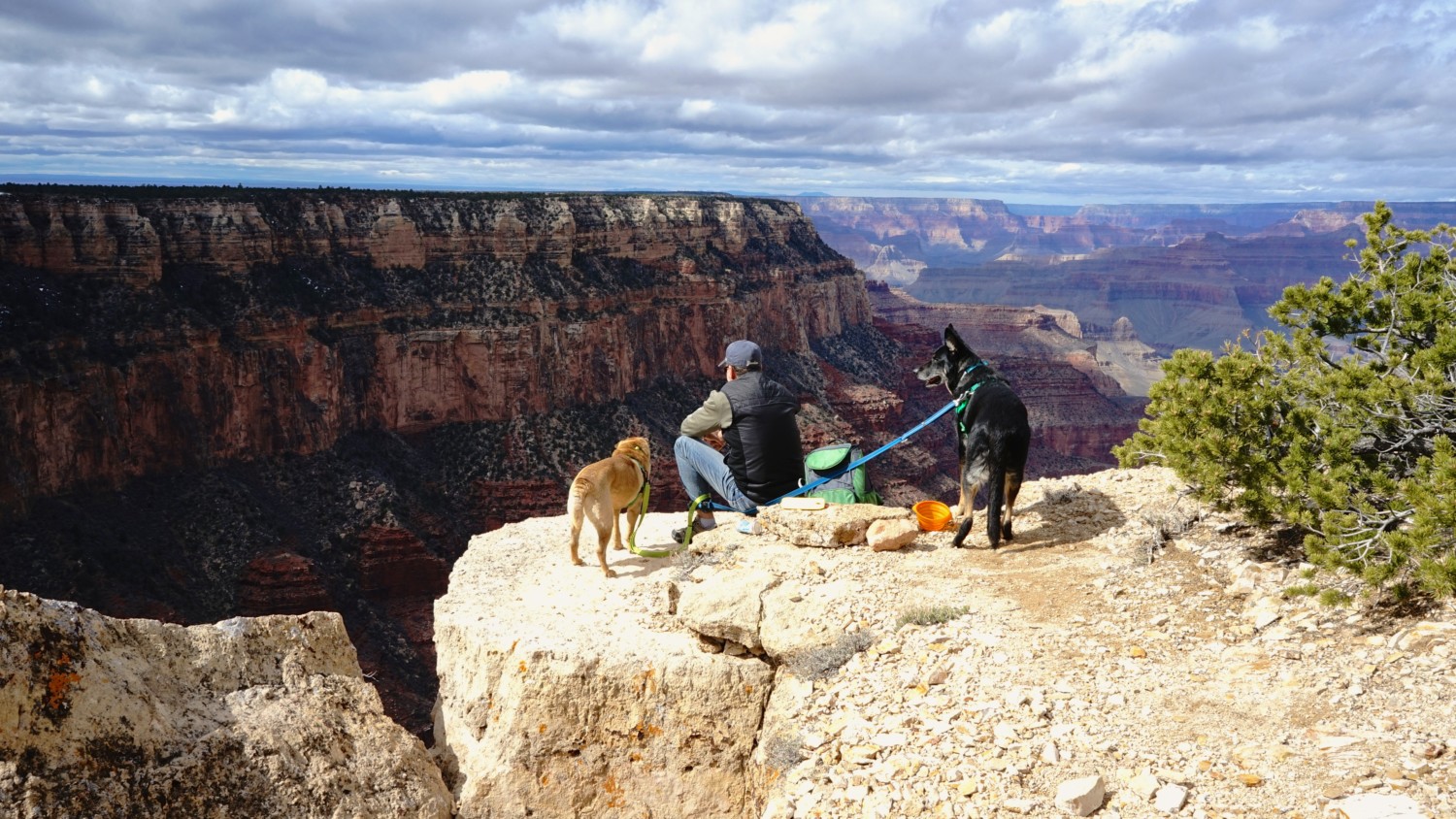
Colorado – Telluride Gondola to Mountain Village
Tucked high in Colorado’s San Juan Mountains, the village of Telluride is ideal for a Rocky Mountain adventure with your pet. Offering spectacular scenery, miles of hiking trails, a pet friendly gondola, and a nice selection of eateries and lodging that welcome pets, it might be the highlight of your pet friendly American road trip!

Utah – Dixie National Forest’s Red Canyon
Covering almost 2 million acres, every inch of Dixie National Forest is pet friendly! And with 1,600 miles of hiking, horseback riding, and bike trails, and hundreds of miles of scenic byways, backways, and drives, you and your pet could spend a lifetime exploring here.
While you’re in the area, be sure to check out Bryce Canyon and Zion National parks. And don’t miss the chance to visit Best Friends Animal Sanctuary in Kanab, Utah !
READ MORE ⇒ Tips For RVing With Pets

The South Central
Bustling San Antonio is balanced by serene natural wonders on the South Central section of our pet friendly American road trip.
If you’re considering skipping the pet friendly paddle on the Buffalo National River … DON’T! We did it with Ty and Buster, and loved every minute. Though it was our dogs’ first time in a canoe, they did great. And now it’s one of our favorite memories with them.

New Mexico – White Sands National Park
The name “White Sands” might be a little misleading, but that doesn’t make this pet friendly national park any less impressive! The shimmering dunes here are actually made of gypsum – not sand. And thanks to an ancient sea and some very fortunate geography, it’s now the world’s largest dunefield!
You’ll find pet friendly trails and plenty to keep you busy at White Sands. And be sure to stay for sunset. It’s unlike any other you’ll see!
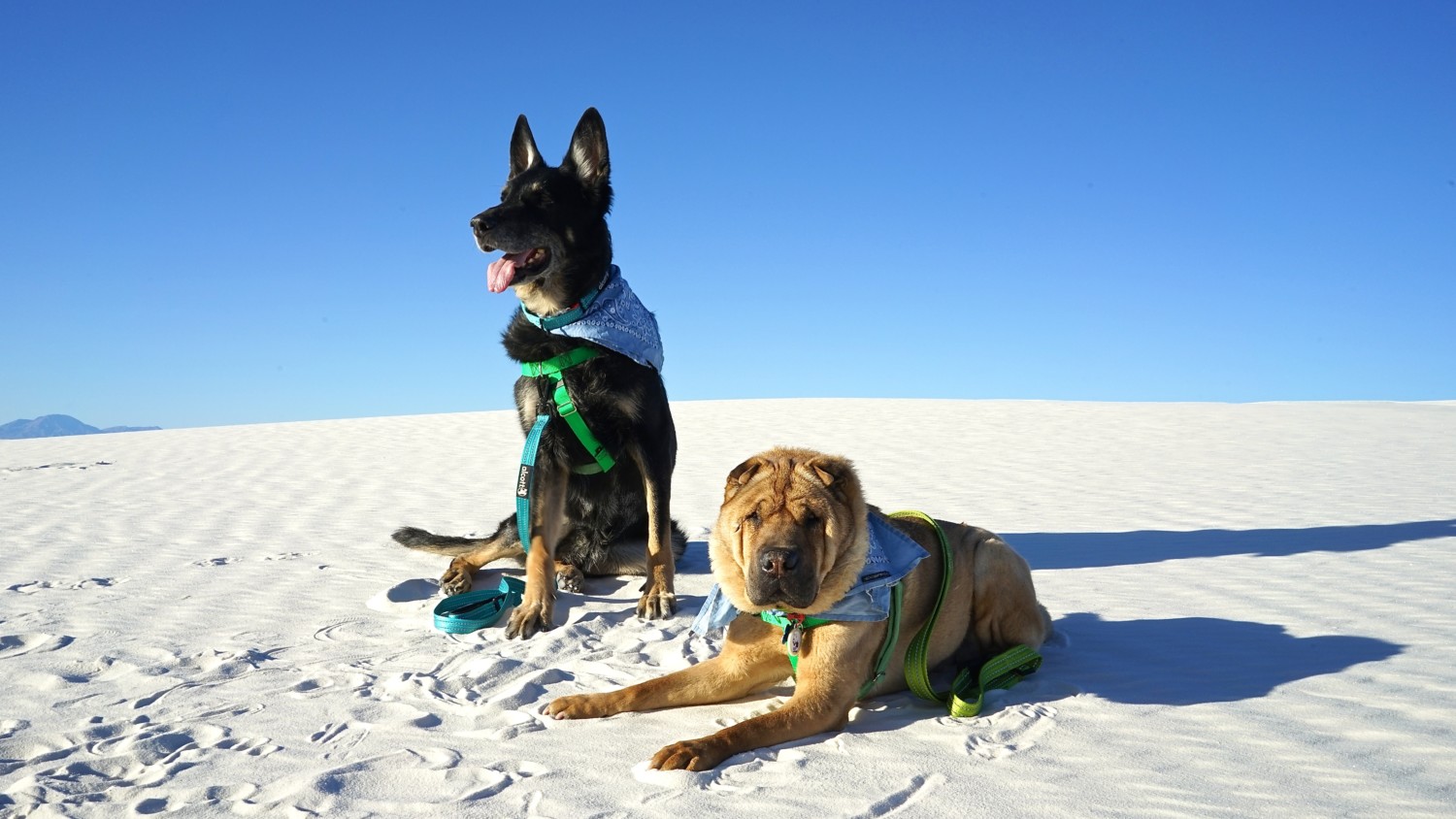
Texas – San Antonio River Walk
Providing access to some of the city’s most precious historical and cultural sites, the 13-mile, pet friendly San Antonio River Walk is one of the most unique parks in the country!
It would be easy to spend several days exploring different sections of the River Walk, hopping on and off to visit all the connected neighborhoods.

Oklahoma – Wichita Mountains Wildlife Refuge
As if watching the grazing bison, elk, and white-tailed deer weren’t enough reason to visit Wichita Mountains Wildlife Refuge, you and your pet will also find 18 pet friendly hiking trails and lakes for boating and paddling!

Arkansas – Canoe the Buffalo National River
Canoeing the Buffalo National River with your pets is easier than you might think! Pet friendly canoe rentals are a cinch to find, and the calm water will put every paddler at ease.
When you’re back on solid ground, there are also miles of pet friendly trails to hike along the river’s course and in the nearby Ozark National Forest.
READ MORE ⇒ Tips for Canoeing or Kayaking with Dogs
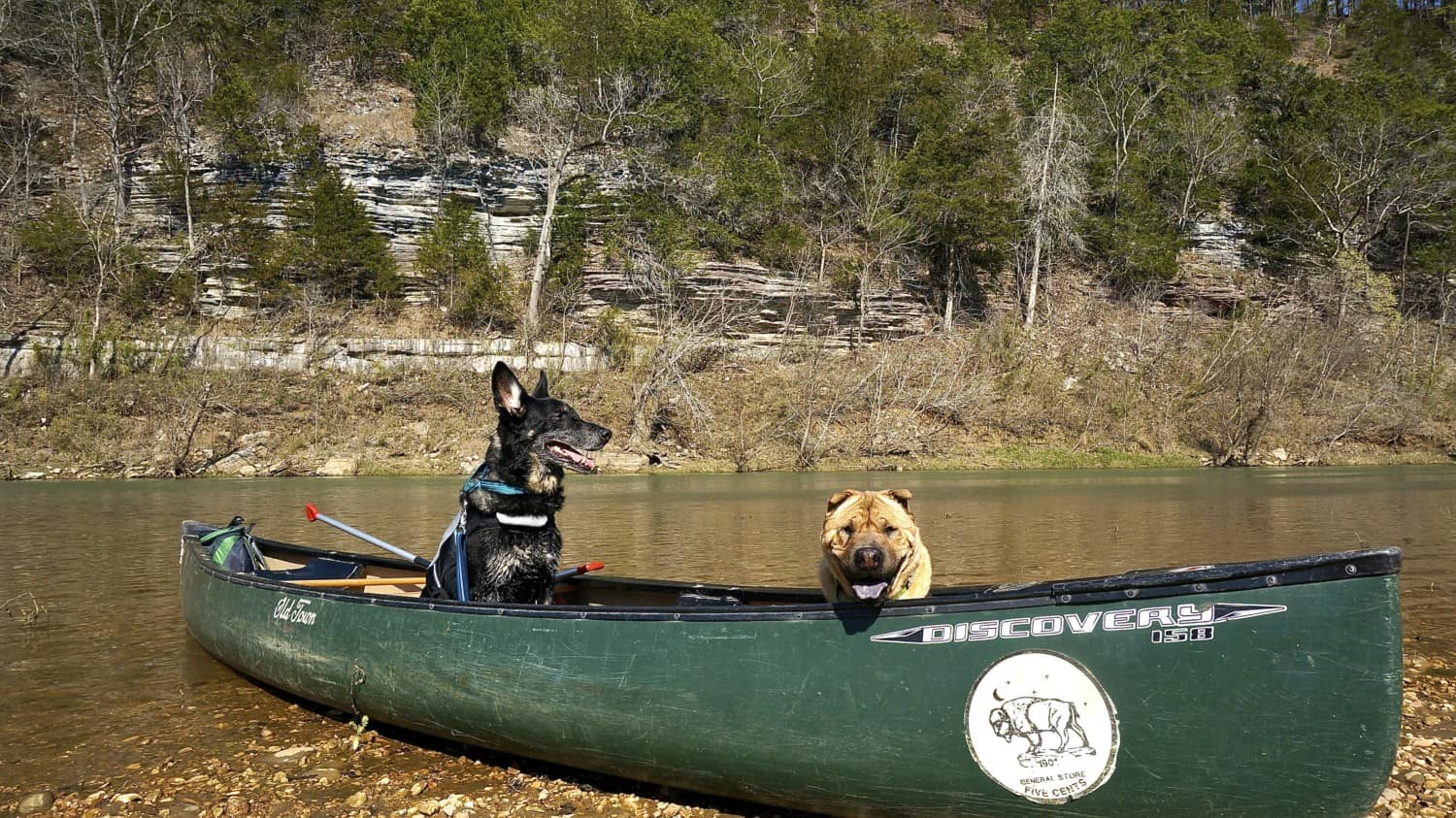
Kansas – Monument Rocks
Monument Rocks is what’s left of a sea floor that formed millions of years ago when water covered the continent from Montana and the Dakotas to Texas and Louisiana. The chalk spires, buttes, and arches that remain now stand 70 feet tall on the Kansas plains. And your pets are more than welcome to explore them with you!

The Plains – North
The Northern Plains section of this trip takes you through the heartland and reveals what America was like before Europeans arrived.
You’ll spend time appreciating the vastness of Lake Superior and the powerful Mississippi River. Then walk in the footsteps of the Native Americans who lived in Iowa and North Dakota.
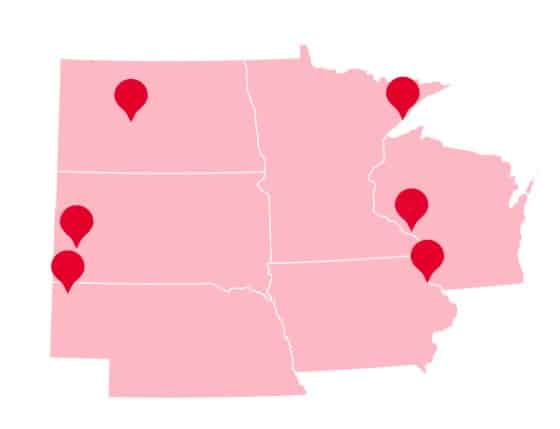
Minnesota – Split Rock Lighthouse State Park
Split Rock Lighthouse State Park sits on Lake Superior’s northern shore. Providing breathtaking views of one of the most photographed lighthouses in the country and 14.5 miles of pet friendly trails, it’s a great place to stretch your legs or camp on the beach.
READ MORE ⇒ Camping With Dogs – A Beginner’s Guide

Wisconsin – Trempealeau National Wildlife Refuge
Trempealeau National Wildlife Refuge is located in the Mississippi River flyway, the migration route of about 40% of all waterfowl and shorebirds. The refuge serves as a “bed and breakfast” for the birds as they travel through and is home to the magnificent bald eagle.
In addition to some spectacular bird spotting, there are miles of pet friendly trails to explore.
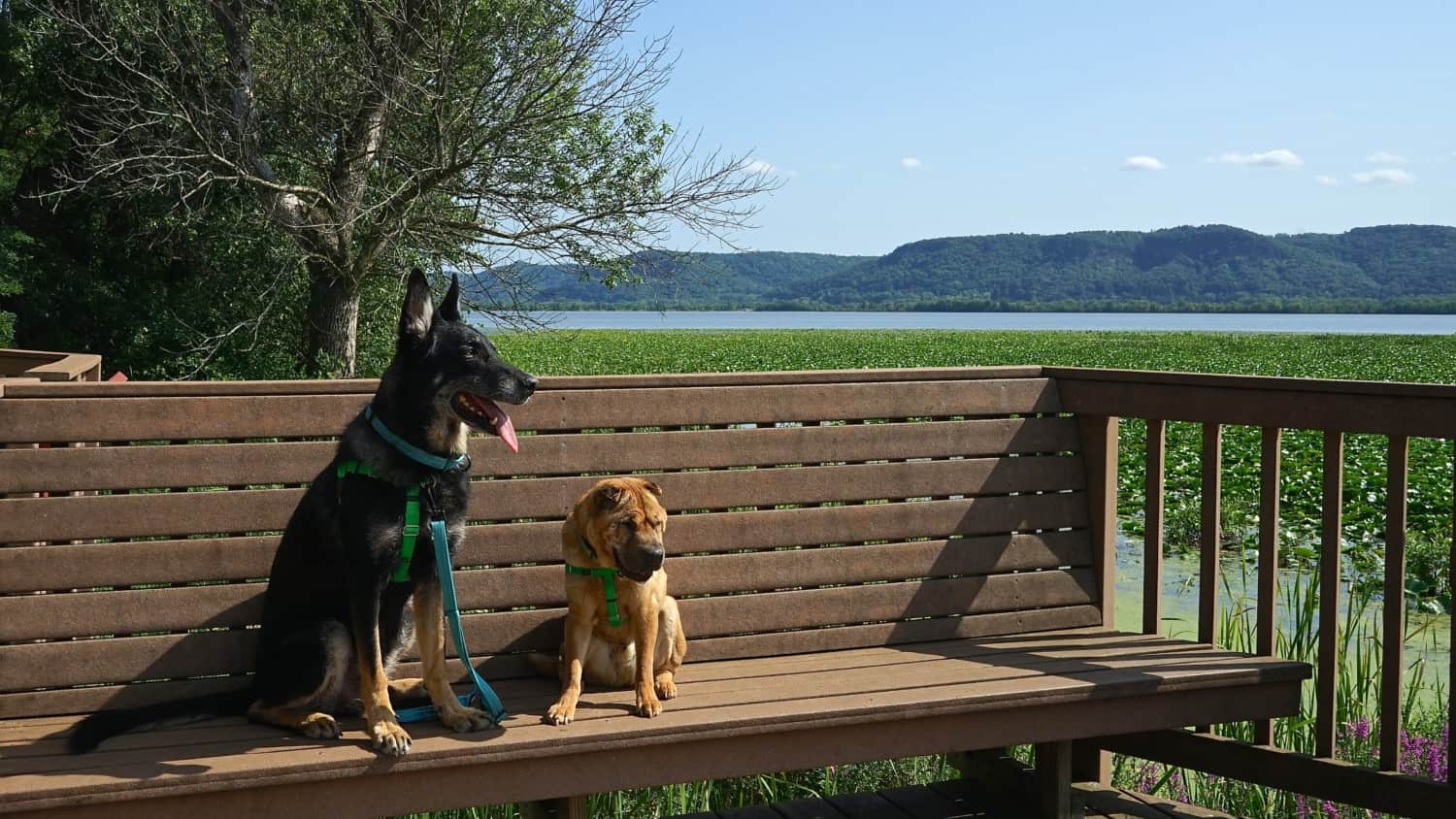
Iowa – Effigy Mounds National Monument
Standing atop the bluffs overlooking the Mississippi River, it’s easy to see why American Indians chose to make this breathtaking place their home. Covering 2,500 acres along the western bank of the Mississippi River, Effigy Mounds National Monument now protects 206 prehistoric earthen mounds built by Indigenous People, 31 of which are in the shape of animals.
You and your dogs are welcome to explore all the trails. But remember to be respectful and never walk on (or allow your pet on) the mounds.

North Dakota – Knife River Indian Villages National Historic Site
Interpretive plaques help you imagine what life was like at the Knife River Indian Villages. This is where Captains Lewis and Clark first met Sacagewea and her husband, Toussaint Charbonneau. Once a bustling community of nearly 400 people, this is now a quiet place to reflect and enjoy the scenery.
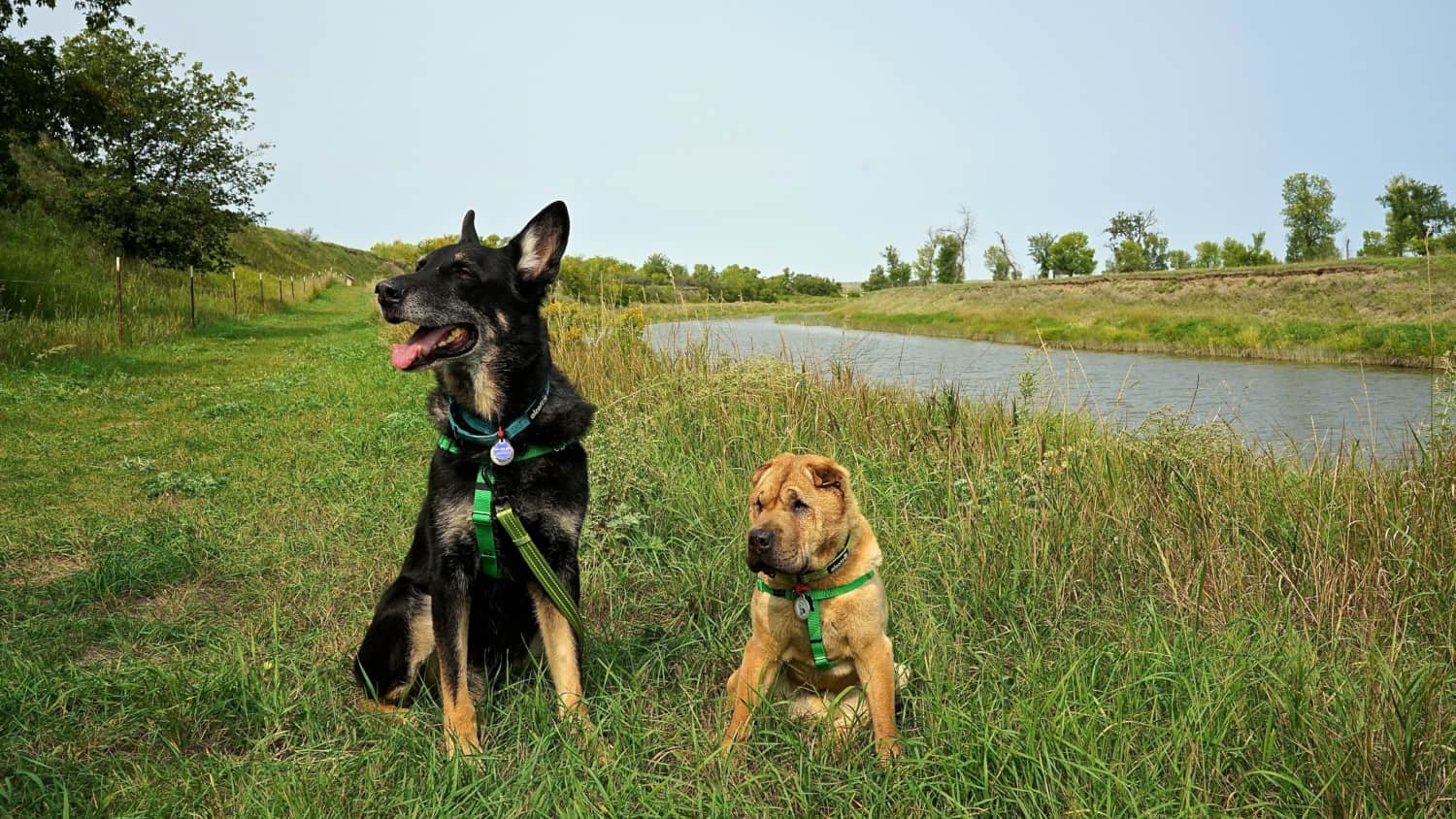
South Dakota – Custer State Park
Custer State Park protects 71,000 acres of South Dakota’s most magnificent landscapes. It also provides habitats for a dazzling array of wildlife. Whether you prefer picturesque drives or multi-day hikes, wildlife viewing or kayaking, elegant dining or campfires under the stars, Custer has something to please traveler.

Nebraska – Fort Robinson State Park
Fort Robinson State Park is a rare combination of stunning landscapes, fascinating history, a variety of recreational opportunities, and pet friendly accommodations.
Spread over 22,000 acres, with rugged buttes as the backdrop, it’s a wonderful place to unwind and enjoy the expansive wild prairies during the day and the star-filled skies at night.
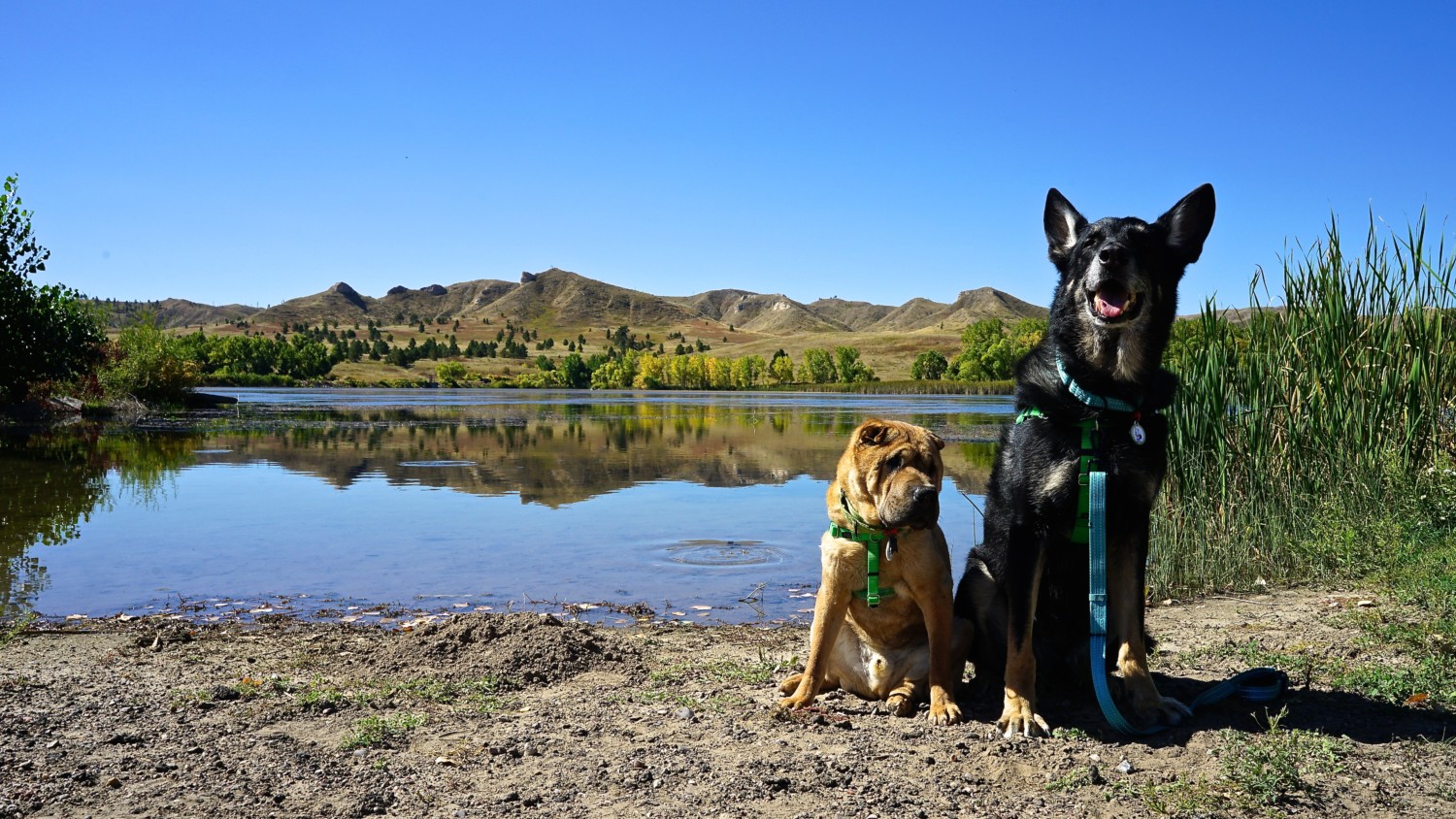
The Great Lakes
Three of the five stops on this section of our pet friendly American road trip are on the Great Lakes! Absorb the energy of downtown Chicago at Navy Pier. Then contrast it with the leisurely atmosphere of Mackinac Island. You’ll enjoy both ends of the spectrum!
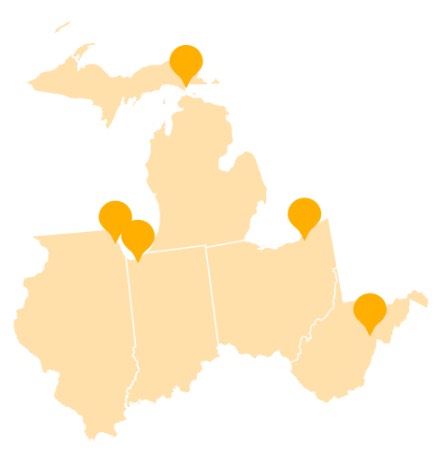
West Virginia – Monongahela National Forest
The Monongahela National Forest covers more than 900,000 acres, preserving a rugged and wild paradise unlike any other. With an extensive backwoods road system, oodles of campgrounds, and 825 miles of pet friendly trails, you and your pet will find plenty to explore!
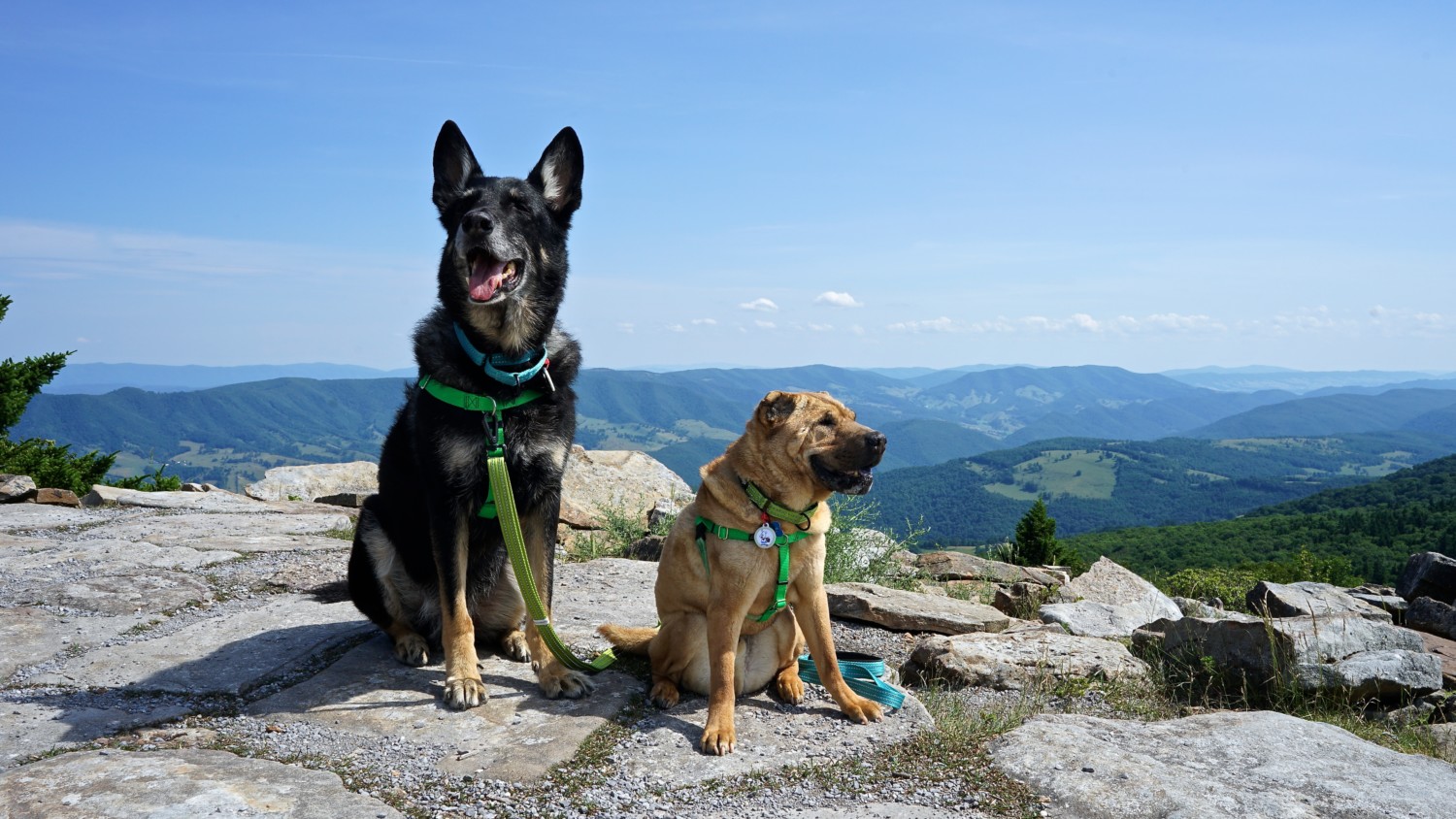
Ohio – Holden Arboretum
Holden Arboretum is evidence of the beauty that results when humans and Mother Nature work together. Encompassing 3,600 acres, it’s one of the largest arboreta and botanical gardens in the country and a fabulous place to explore with your pet.
Wander the garden paths or hit the miles of trails through native forests with your furry travel buddy!

Illinois – Chicago Lakefront Trail & Navy Pier
Chicago’s pet friendly Lakefront Trail runs for 18 miles along the spectacular shore of Lake Michigan. Connecting vibrant neighborhoods, expansive parks, popular beaches, and famous attractions like Navy Pier, Buckingham Fountain, and Soldier Field, it’s fun to choose a section and spend a day exploring it with your pet!
READ MORE ⇒ Tips for a Cross-Country Road Trip with Pets
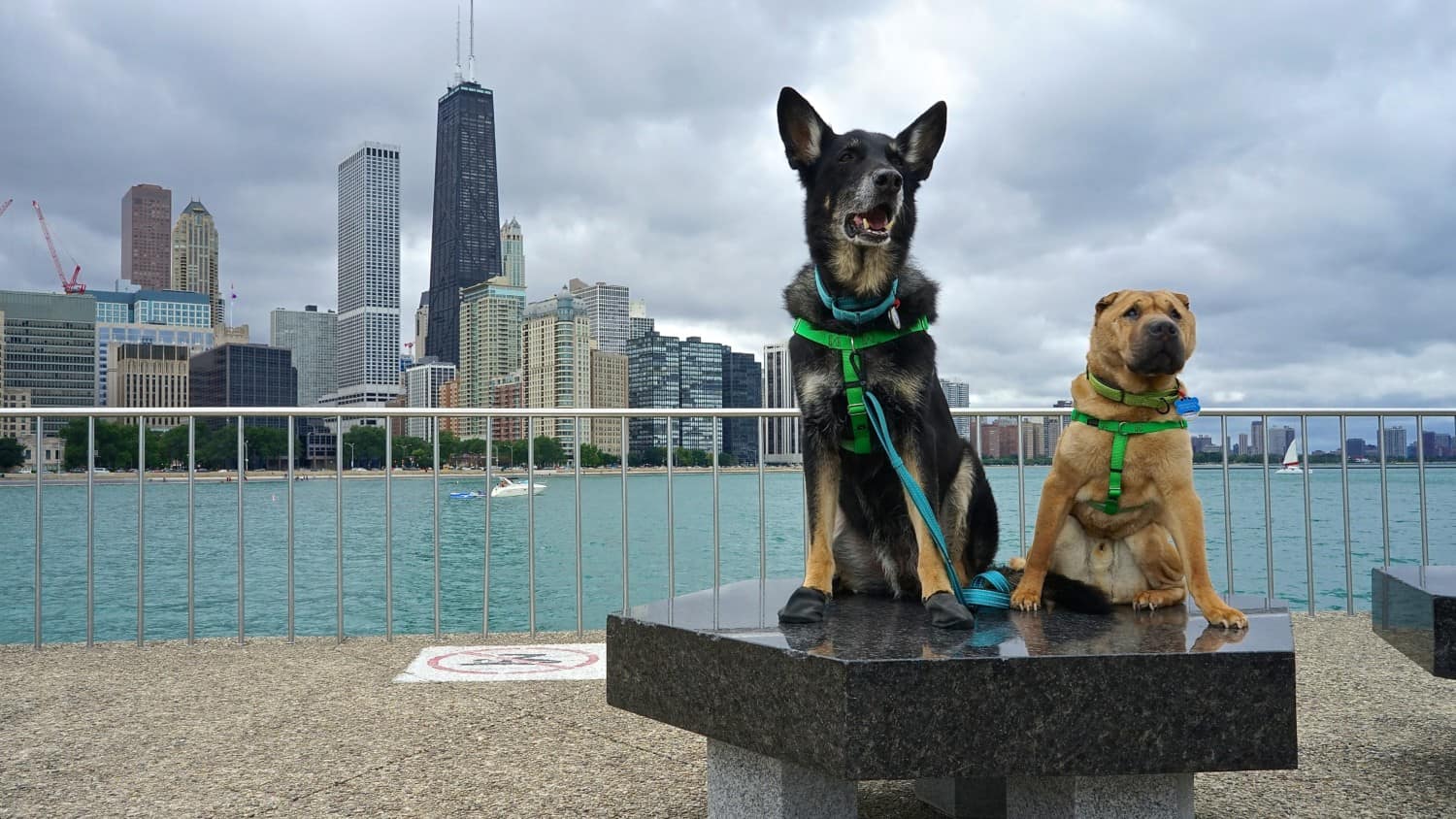
Indiana – Indiana Dunes National Park
Caribbean blue waters and miles of pet friendly beaches await you at Indiana Dunes National Park. But the beaches are just the beginning!
This dynamic landscape also features dunes, ponds, marshes, creeks, prairie, and forests for your exploration. Whether you decided to hang out on the shore or hike the trails, you’re sure to have a great time.

Michigan – Mackinac Island
Hop aboard the pet friendly ferry for a trip to Mackinac Island. Automobiles aren’t allowed, but you and your pet won’t have any trouble getting around!
Main Street is just steps from the ferry docks, pets are welcome on the horse-drawn carriages rides, and bikes with pet trailers are available for rent. So all of Mackinac’s most popular attractions are within easy reach!

The Plains – South
Road tripping pets are going to adore this route through the southern plains. Romp at the incredible off-leash dog park at Shelby Farms, then stiff along the 444-mile Natchez Trace! Finally, spend an afternoon relaxing in the shadow of the Gateway Arch in St. Louis.

Louisiana – State Capitol Gardens in Baton Rouge
Standing 34 stories tall, Louisiana’s capitol in Baton Rouge is the tallest state capitol building in the United States. It’s surrounded by 27 acres of pet friendly grounds and gardens that offer picturesque views from every angle.
Stroll the paved paths under massive live oaks and palm trees or plan a picnic with your pet!
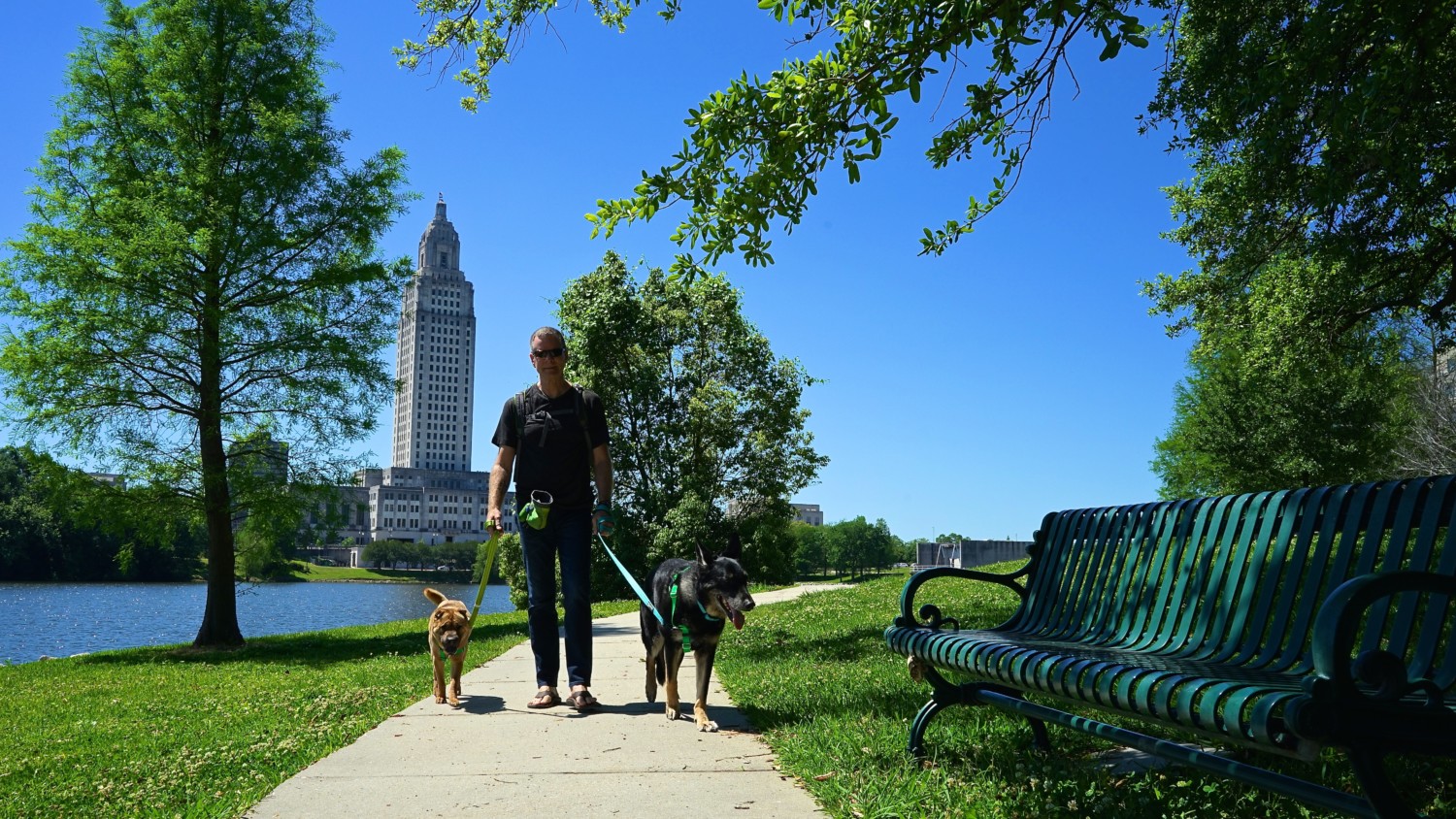
Mississippi – The Natchez Trace Parkway
The Natchez Trace Parkway stretches 444 miles, from Natchez, Mississippi to Nashville, Tennessee. It’s a blissfully quiet, billboard-free retreat from our fast-paced highways.
But a slower pace doesn’t mean you’ll be bored! There’s something to sniff around every bend with countless exhibits and 28 pet friendly trailheads along the route.

Tennessee – Shelby Farms Park Off-Leash Area
Shelby Farms Park in Memphis is one of the country’s largest urban parks. With a massive off-leash dog area, 40 miles of pet friendly trails winding through 4,500 acres, a disc golf course, canoe, kayak, and paddle board rentals, and a lovely visitor center, you could easily spend an entire day here!
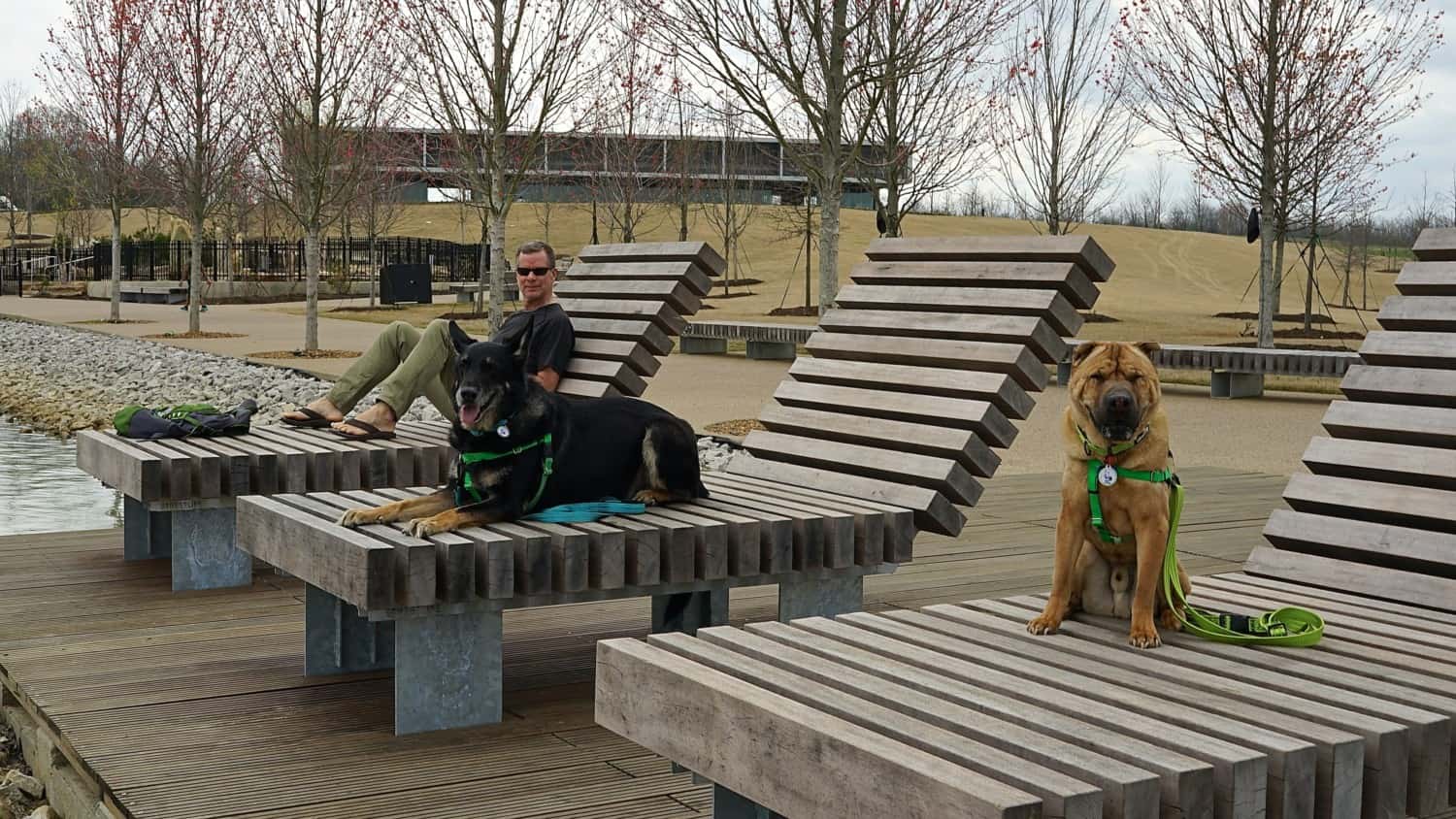
Kentucky – Abraham Lincoln Birthplace National Historic Park
President Abraham Lincoln’s life is an inspiration, and visiting his simple birthplace fosters an even deeper appreciation of his accomplishments.
Pets are welcome to join you on the grounds of the historic park. And together you can explore the trails there and at the Lincoln Boyhood Home at Knob Creek, just ten miles away.

Missouri – Gateway Arch National Park
Leashed pets are welcome to explore the extensive grounds at St. Louis’ Gateway Arch National Park. Enjoy the Riverfront Trail, embark on a one-hour scenic riverboat cruise, and be sure to ask now your pet can become a BARK Ranger during your visit.
READ MORE ⇒ 60 National Parks Where Your Dog Can Be A BARK Ranger
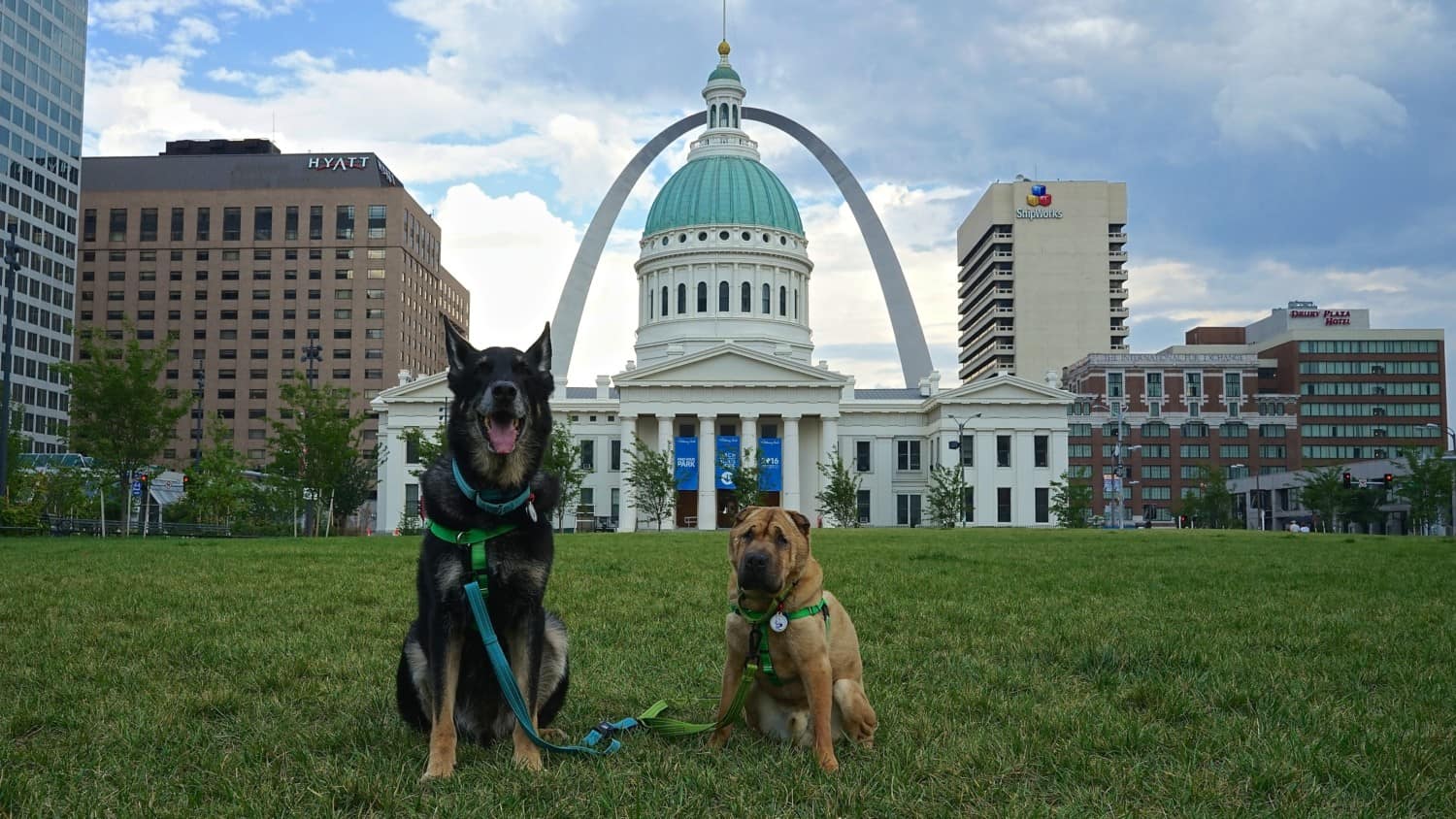
New England
You can see a lot without traveling far in New England! Enjoy Central Park in the heart of Manhattan, then explore the trails in Acadia National Park. Finally, take a splash in the pond at Dog Mountain. From beginning to end, this section of our pet friendly American road trip is a pet’s dream come true.

New York – Central Park
There’s no place like New York! Central Park is the third most visited attraction IN THE WORLD – and it’s even better with your pet. Whether you choose to lounge on a bench, enjoy the conservatory gardens, or explore the wooded trails in the Ramble, it will be a day to remember.

Connecticut – Mystic Seaport
Spread over 19 spectacular acres on the banks of the Mystic River, Mystic Seaport is the largest maritime museum in the United States. You and your pet can view magnificent old boats and learn what life was like for seaport dwellers in this part of New England in the 1800s.
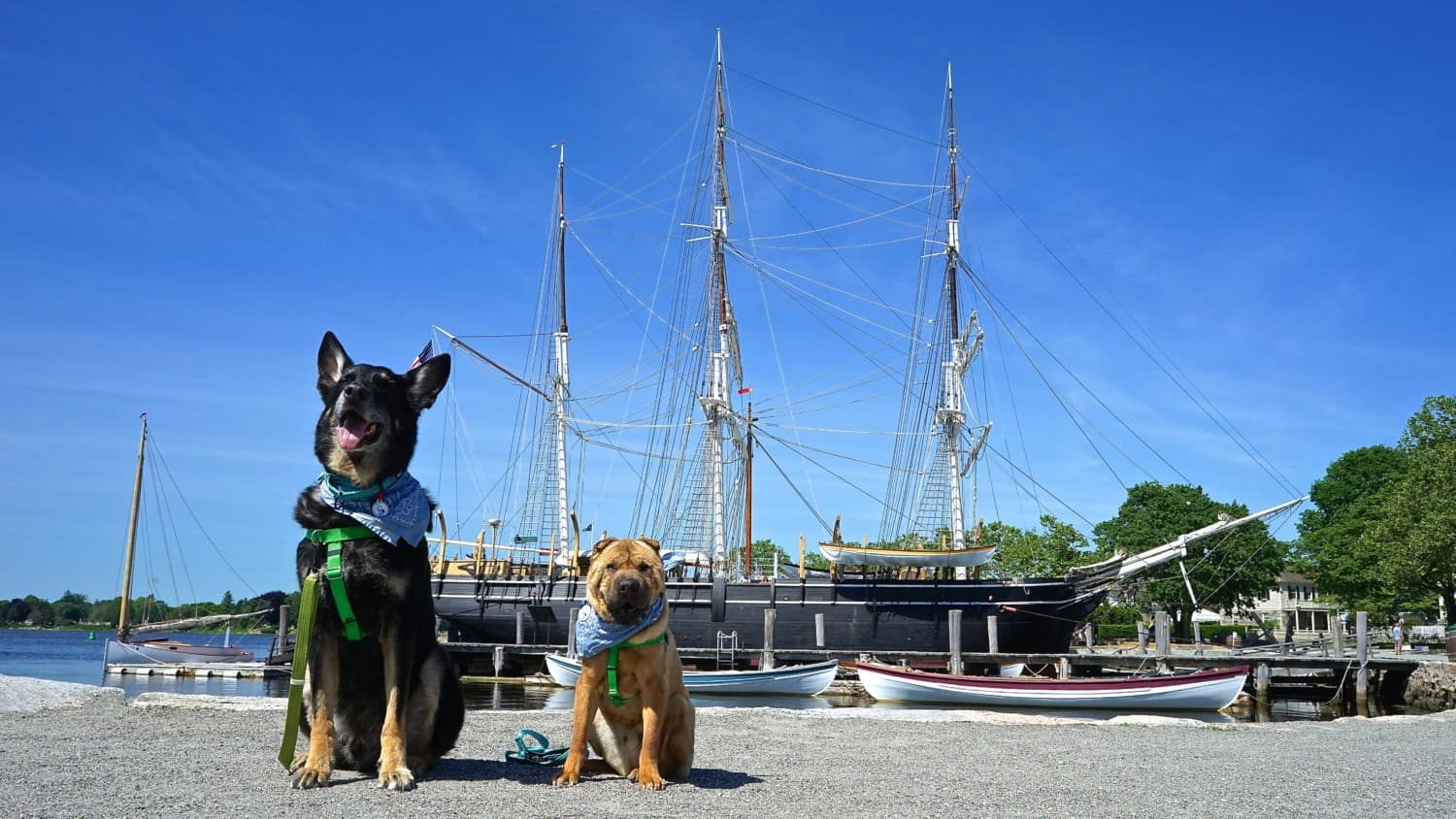
Rhode Island – Newport Cliff Walk
Newport is known as the City by the Sea. And a stroll along the pet friendly Cliff Walk proves that she more than lives up to her nickname!
Winding for 3.5 miles with the rocky shoreline on one side and the lush gardens of historic mansions on the other, the Cliff Walk Trail provides you and your pet with unforgettable views.

Massachusetts – The Freedom Trail
Boston’s Freedom Trail connects 16 of our country’s most significant historic landmarks – locations that played a pivotal role in America’s rebellious beginning.
The pet friendly 2.5-mile path starts in Boston Common where you can pick up a map. Here pups will also find two off-leash areas for sniffing and socializing in America’s oldest public park. Then follow the red brick path through the city at your own pace, taking in each site as you go.
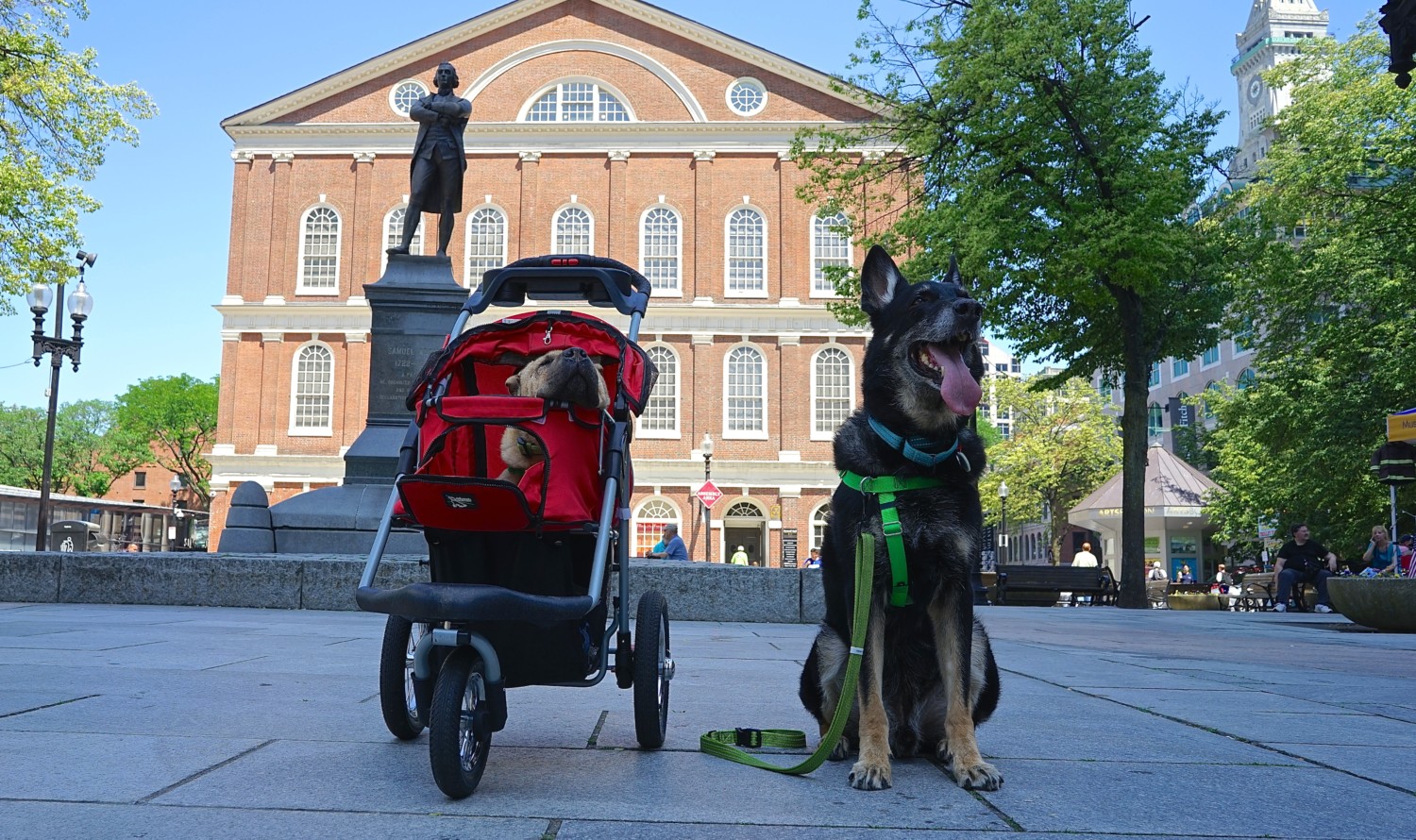
Maine – Acadia National Park
As one of the countries most pet friendly national parks, you and your pet will find plenty to love in Acadia. There are more than 100 miles of trails to sniff, carriage roads to explore, and pets are even welcome on the free shuttles that run throughout the park and around the island!
READ MORE ⇒ America’s Best Dog Friendly National Parks

New Hampshire – Mount Washington
Visiting Mount Washington can be tricky. More than 100 days a year the wind at the summit exceeds hurricane force, the peak is enveloped in clouds 60% of the time, and snow can fall year round. But if you’re lucky enough to be there on a pleasant day, you and your pet will never forget the pet friendly trails and stunning views.
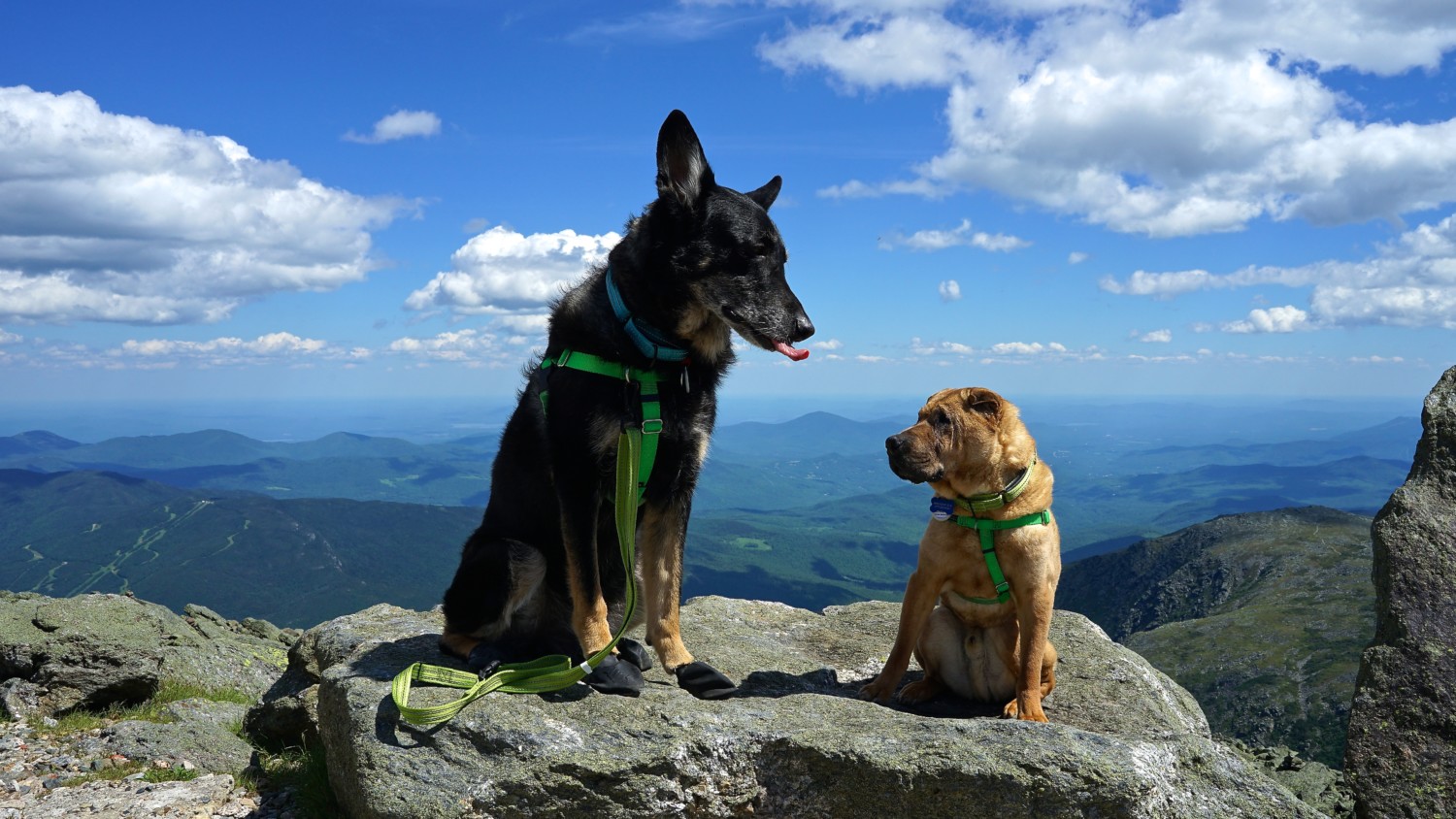
Vermont – Dog Mountain
At Dog Mountain, pets aren’t just welcome – they’re cherished! This 150-acre former dairy farm is always open to the public and dogs are welcome to shed their leashes while they run, play, and swim in the pond.
There are also hiking trails, peaceful retreats, and a pet friendly chapel and art gallery.

The Mid-Atlantic
The theme of this section of the trip is early American history with a lot fun thrown in! Learn about the first Europeans to arrive in the New World in Colonial Williamsburg. Then stroll through Washington, DC, where history is made every day. Next enjoy a day on the Jersey shore before heading to the Pocono Mountains for a scenic train ride!

Virginia – Colonial Williamsburg
Colonial Williamsburg welcomes you and your pets to step back in time. View historic homes, watch demonstrations at the trades shops, enjoy the fife and drum corps, and get a bite to eat at one of the taverns or restaurants.

Washington, DC – The National Mall
There are few places in the America more inspiring than our National Mall & Memorial Gardens. And because this national park sits in the middle of a living city, it’s more pet friendly than you might expect!
From the U.S. Capitol to the Lincoln Memorial, you and your pet can view dozens of iconic sights all within walking distance.

Maryland – Cruise on Chesapeake Bay
Explore the Chesapeake Bay with your travel buddy aboard a pet friendly cruise! Arrange a tour from Annapolis, Baltimore, or St. Michaels. Or contact one of the countless privately-operated charter boats available in harbors up and down the bay, most of whom are happy to welcome your pets.
READ MORE ⇒ 5 Questions To Ask BEFORE Taking A Dog On A Boat

Delaware – Walking Tour of Historic New Castle
Do you love strolling with your pet along tree-lined streets? Would you like to admire beautiful examples of colonial Dutch and Federal architecture? And what if you could learning a bit about the early history of our country at the same time?
It sounds like a walking tour of New Castle will be right up your alley! Be sure to check the local calendar for pet friendly events when planning your trip.
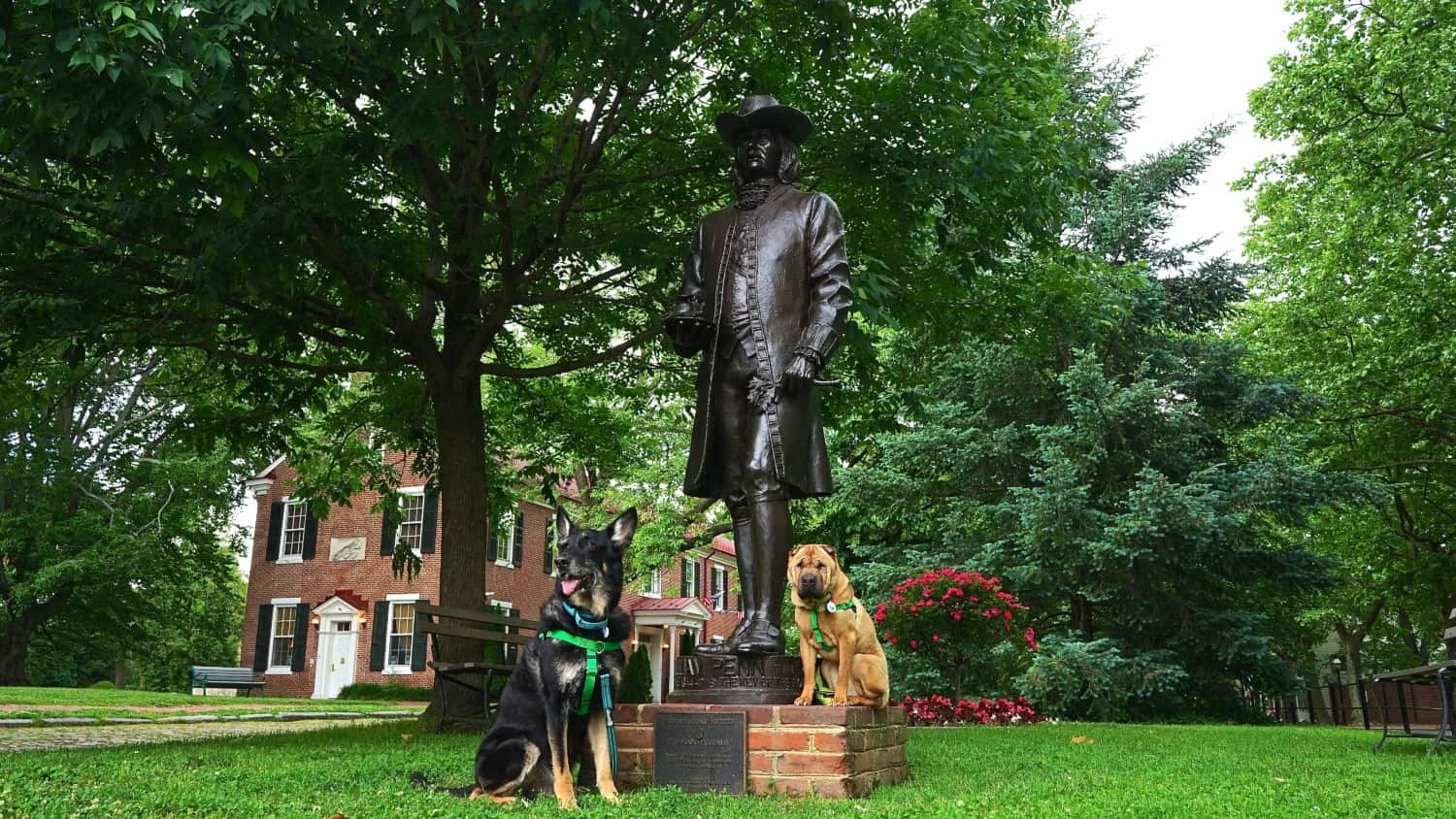
New Jersey – The Jersey Shore at Wildwood Dog Beach
New Jersey has many popular beaches, but Wildwood’s beach stands out. It’s lovely, spacious, family-friendly, and free to use. And the best part is that your pets can come along!
Dogs on leashes are welcome from dawn to dusk, every day on the Wildwood dog beach between Glenwood and Maple Avenues. Just look for the gigantic fire hydrant and enjoy a day of sand and surf together.
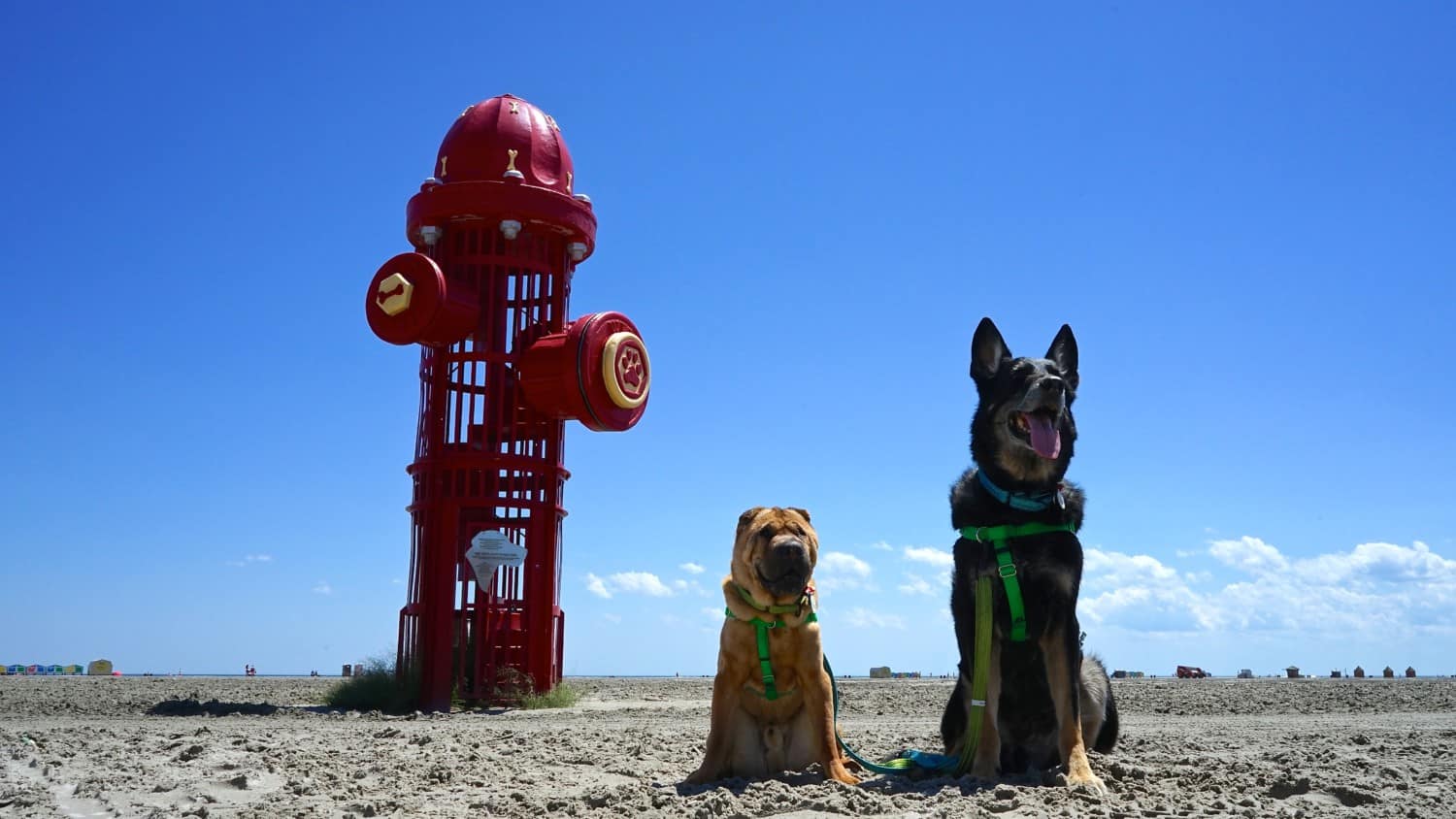
Pennsylvania – Lehigh Gorge Scenic Railway
All aboard! The Lehigh Gorge Scenic Railway welcomes pets on their vintage coaches. Powered by diesel engines and departing from the old railroad station in historic downtown Jim Thorpe, the narrated trips lasts about 70 minutes and follow 16-mile route along the Lehigh River as it winds through the gorge.

The Southeast
Beautiful gardens await your arrival on this pet friendly road trip through the Southeast. Wander the paths through Rock City, where on a clear day you can view seven states! Then admire the last large-scale romantic-style garden at Magnolia Plantation. Finally, spend a day exploring the formal gardens and wooded trails of the 8,000-acre Biltmore Estate.
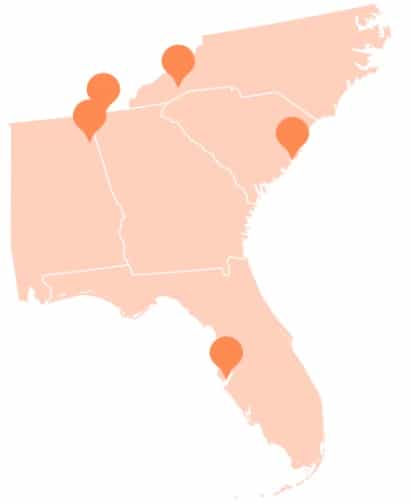
Alabama – Little River Canyon National Preserve
On a flat-top mountain in northeastern Alabama, Little River Canyon National Preserve protects 15,000+ rugged acres along the Little River.
Be prepared for stunning scenery and a taste of southern hospitality, because the preserve is incredibly pet friendly. Not only can your furry travel buddy join you on all the trails — he’s also welcome inside the visitor center, and the staff has dog treats!

Georgia – Rock City Gardens
Visitors from around the world come to admire Rock City’s botanical and geological features. And your pet is welcome to join you on the trails. You can even have lunch together on the patio at Café 7, a seasonal restaurant with amazing views!

Florida – Fort De Soto Dog Beach
Fort De Soto’s beaches are acclaimed for their white sand and clear blue waters. But the best part of this quarter-mile stretch of beach is that it’s dedicated to the dogs!
Pups can romp leash-free here and in the adjacent enclosed dog park. Then rent a kayak and paddle the 2.25-mile water trail, peddle the 7-mile bike trail, or hit the hiking trails to see more of the island.
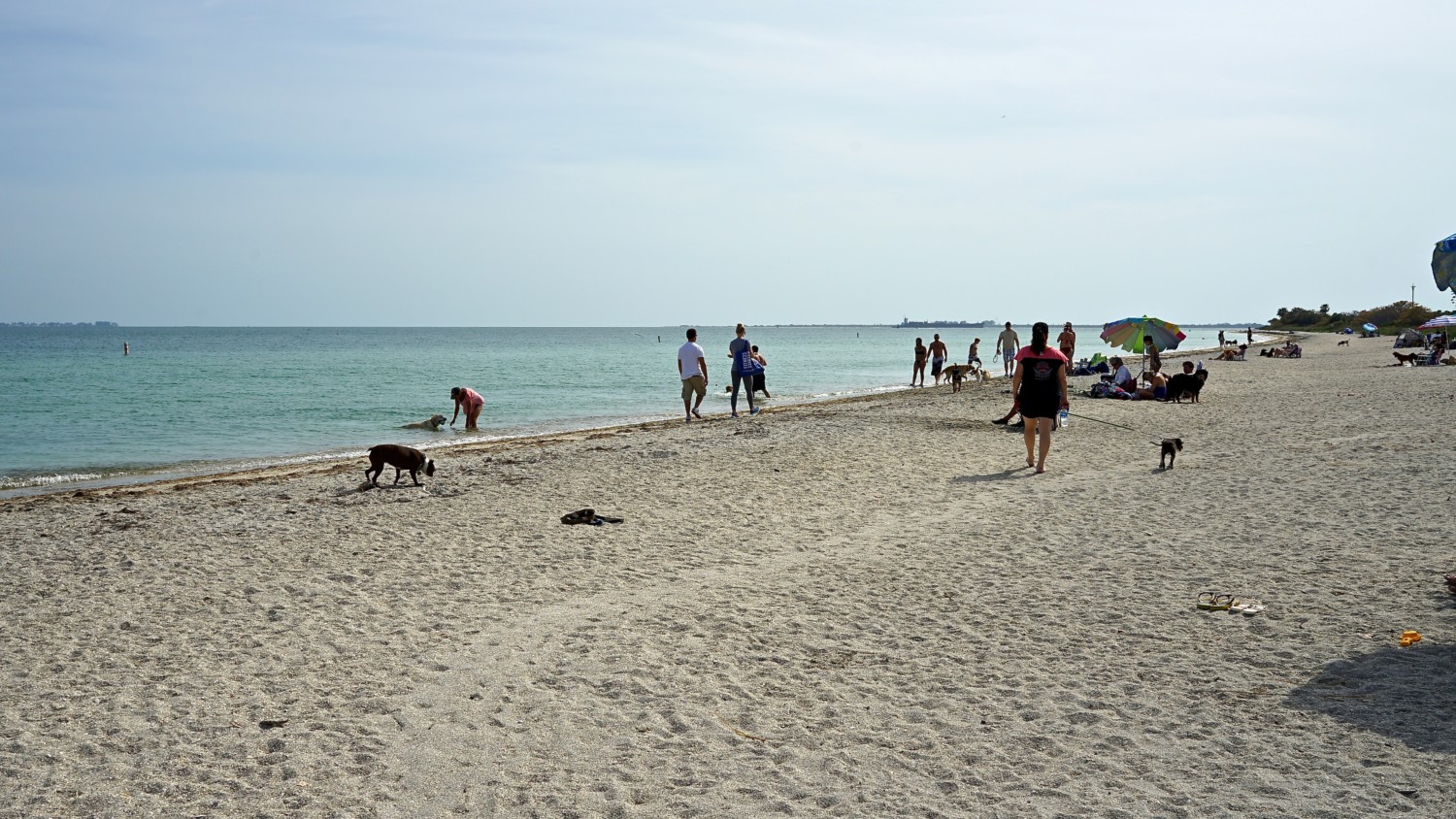
South Carolina – Magnolia Plantation & Gardens
Founded in 1676 by the Drayton family, Magnolia Plantation and Gardens is America’s last large-scale Romantic-style garden. You and your pup are welcome to enjoy the trails, grounds, gardens. Plan accordingly to see your favorite flowers in bloom!
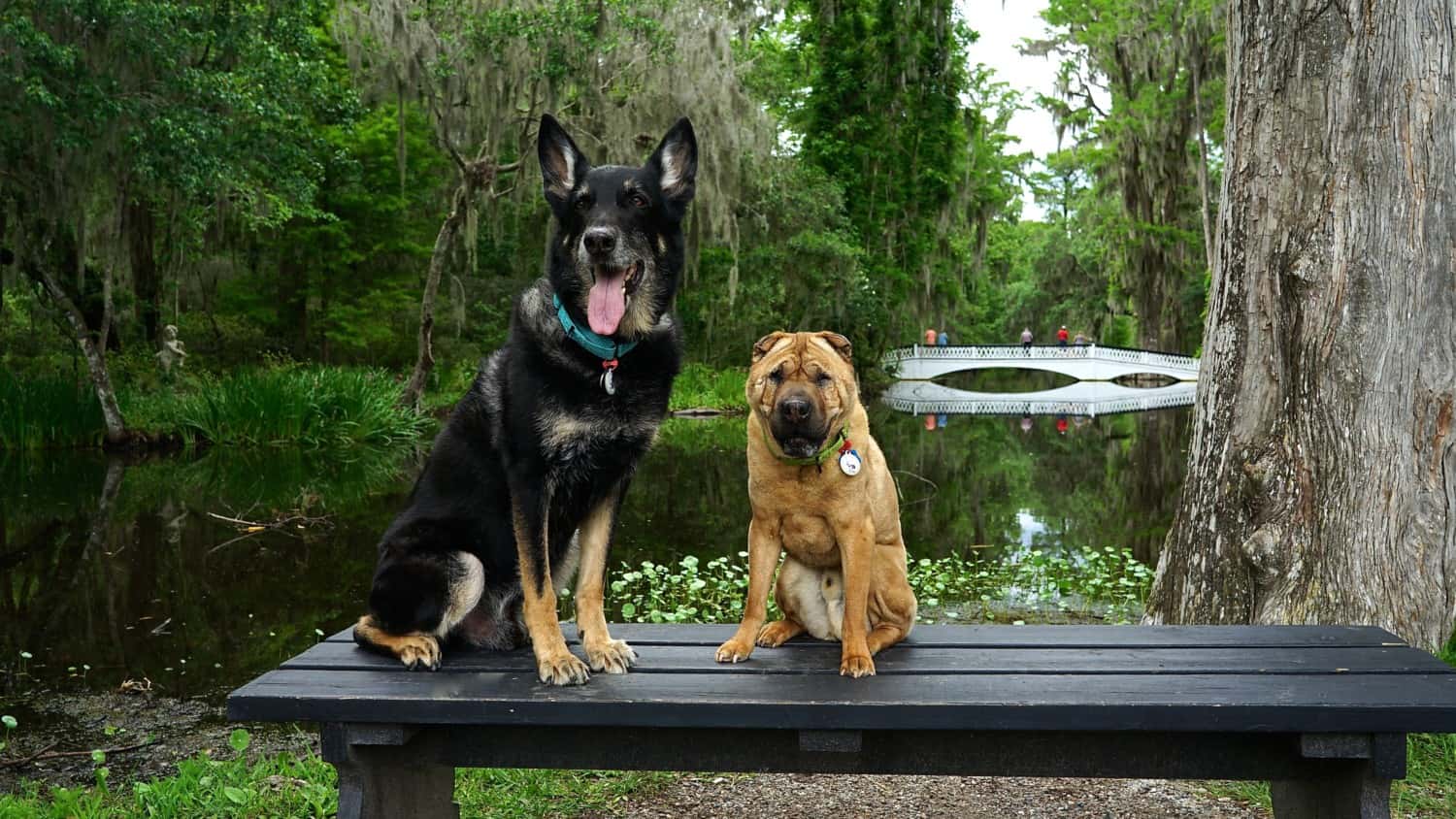
North Carolina – Biltmore Estate Gardens and Grounds
At the Biltmore Estate, pets cannot tour the historic home. However, you and your pet can stroll the lush garden paths, or hit the 23 miles of hiking trails that criss-cross the 8,000-acre estate.
When you’ve worked up an appetite, head over to Antler Hill Village and choose a table on the patio at one of the pet friendly restaurants!
READ MORE ⇒ Training Your Dog To Be A Great Traveler

How long will it take and what will it cost?
In total, our entire pet friendly American road trip is 15,000 miles and will take at least two months. That’s assuming you have great luck with the weather and don’t mind driving about 8 hours a day.
The cost of the trip depends on how you travel. And where you are comfortable staying is a factor that has a big impact. Car camping or tenting will be least expensive. And staying at pet friendly hotels will cost more. Luckily, pets aren’t picky about where you sleep – as long as you’re together.
READ MORE ⇒ Car Camping With Pets: Prep The Car, What to Pack, and More
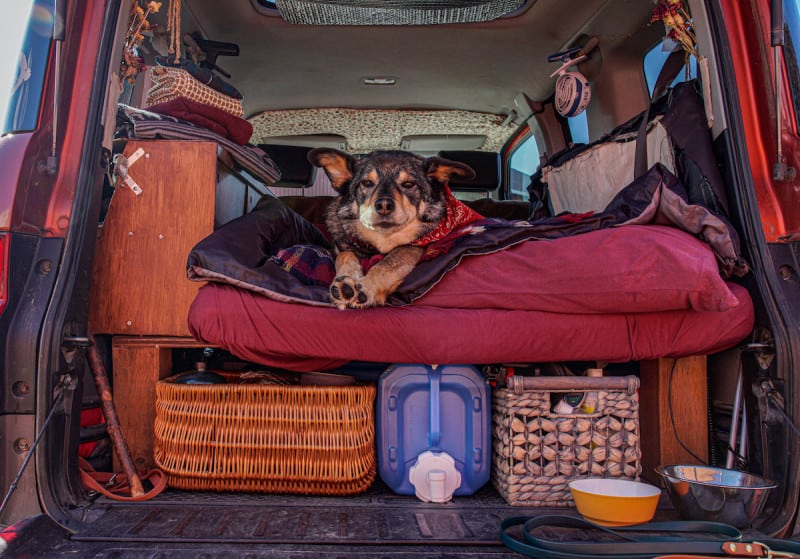
Most of the attractions we’ve recommended are fairly inexpensive (free – $20), with a few exceptions. So figure around $500 per person for all the admission fees.
Gas will cost another $1,500 to $2,000.
Then there’s food, which can also vary a lot. To save money, plan to spend time shopping and preparing your own meals rather than eating out. If you can eat for $15 per day, that adds about $900 per person for a two-month trip.
In total, this trip could be done by one person for around $4,500. Bring a buddy to split the lodging and gas costs and the cost is even less for you both.
So, there you have it – our Ultimate Pet Friendly American Road trip! Now all that’s left to do is pack the car, crank up the tunes, and hit the road. Waggin’ trails to you!
Make sure to subscribe to our newsletter and be the first to know our latest news and pet friendly activities.
Travel Inspiration
National parks, hit the beach, mountain getaways, cities to explore, iconic road trips, unique attractions, related posts.
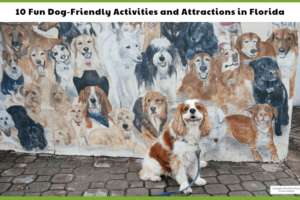
Session expired
Please log in again. The login page will open in a new tab. After logging in you can close it and return to this page.
We know you’re excited to travel!
In order to save your trips and favorite destinations, you need to set up an account or login .
By creating an account you agree to our Terms & Conditions
Thanks for joining GoPetFriendly!
Please check your email to confirm your registration

Don't have an account? Join Now!
Sorry we can't find any pet friendly listings in our database. Please make sure your search is spelled correctly or try typing fewer characters. nearby ! -->
Do you know of a pet friendly place here? Let us know.
- PRO Courses Guides New Tech Help Pro Expert Videos About wikiHow Pro Upgrade Sign In
- EDIT Edit this Article
- EXPLORE Tech Help Pro About Us Random Article Quizzes Request a New Article Community Dashboard This Or That Game Popular Categories Arts and Entertainment Artwork Books Movies Computers and Electronics Computers Phone Skills Technology Hacks Health Men's Health Mental Health Women's Health Relationships Dating Love Relationship Issues Hobbies and Crafts Crafts Drawing Games Education & Communication Communication Skills Personal Development Studying Personal Care and Style Fashion Hair Care Personal Hygiene Youth Personal Care School Stuff Dating All Categories Arts and Entertainment Finance and Business Home and Garden Relationship Quizzes Cars & Other Vehicles Food and Entertaining Personal Care and Style Sports and Fitness Computers and Electronics Health Pets and Animals Travel Education & Communication Hobbies and Crafts Philosophy and Religion Work World Family Life Holidays and Traditions Relationships Youth
- Browse Articles
- Learn Something New
- Quizzes Hot
- This Or That Game New
- Train Your Brain
- Explore More
- Support wikiHow
- About wikiHow
- Log in / Sign up
- Pets and Animals
- Transporting Dogs
How to Travel by Car with Your Dog
Last Updated: December 28, 2020 Approved
This article was co-authored by Elisabeth Weiss . Elisabeth Weiss is a Professional Dog Trainer and owner of Dog Relations NYC, a dog training service in New York, New York. Elisabeth relies on science-based, force-free, and reward-based techniques. Elisabeth offers behavior training, puppy manners, body awareness and injury prevention, diet, exercise and dog nutrition services. Her work has been featured in New York Magazine and on the Dog Save the People podcast. She also trained all the dogs in the movie "Heart of a Dog" by Laurie Anderson that features Elisabeth's journey with Laurie Anderson's and Lou Reed's dog Lolabelle and how her passion for playing the keyboards played a significant role in improving her quality of life after being diagnosed with pancreatic cancer. wikiHow marks an article as reader-approved once it receives enough positive feedback. In this case, 100% of readers who voted found the article helpful, earning it our reader-approved status. This article has been viewed 846,921 times.
Some dogs love to ride in cars and it's fun to take them along with you wherever you go. However, this is not the case for all dogs. Here are some safety tips you should think about before traveling by car with your favorite pet, whether they enjoy the journey or not.
Preparing to Travel with Your Dog

- If you don't want to cage your dog, at least find a way to make sure your dog is secure. For instance if you have an estate car, consider confining your dog to the rear of the car. If you do have a large window boot, put up a wire grid to stop your dog jumping over the back of the seats. Line the dog's area with dog blankets or place it's bed in the corner so it can nap comfortably on the journey. Make sure you don't have any heavy loose items, such as bowls or bottles, as those can become dangerous projectiles in an accident. Most dogs find sleeping an easy way to cope with motion sickness.
- You could also purchase a dog safety seat. While it is not as secure as a cage, it will be safer and more comfortable than a car seat for your dog if you turn or stop the car suddenly. The most popular among these are bucket seats. They attach at the back of the front seats, and the top of the back seats, creating a soft well in which your dog, and any liquids (or solids!) they may create, are contained. These can be made with a blanket or purchased cheaply.
- Car seatbelts for dogs are a great tool if you don't want your dogs confined, or if you only have a two-seater car. Make sure to attach them to a harness, and not a collar. They clip into the female buckle of a car seatbelt on one end, and have a standard lead clip on the other. By attaching them to a harness, you ensure the dog is secured by the body, and their neck won't be damaged in an emergency.
- If you use a cage, make sure it is secured. Make sure it is very secure to prevent it from moving if you stop suddenly or get hit. An unsecured cage can be just as, or even more dangerous than an unsecured dog.

- Squeaky toys are also undesirable as they will drive you crazy.

Going on a Long Drive with Your Dog

- This is especially important if your going on a long journey. Four hours is your average dog's absolute limit for driving without a longer break, but as a driver it's recommended you take a break after every two hours of driving. Make sure you stop somewhere grassy and relatively quiet (not right beside the road), lock your car, feed your dog some food and water, and take him for a walk so he can let off some of his excess energy.
- If you stop by the highway your dog MUST be on a lead for his own safety.

- If you stop for a meal, park your car in the shade, and let the windows down about an inch each to let cool air in. Put a bowl of cool water in the car for your dog and unbuckle him or her if in a dog seat. Lock your car doors, and order your food to go.
- Try to spend no more than five minutes away from the car if it is a warm day, as you don't want your dog to overheat. If your stop will take a bit longer, for instance you are waiting in a long queue for food, tie your dog to a post either just inside the front door or just outside in a place where you can see it. At least he or she will be out of the heat while you wait. Make sure to tie the dog with secure knots so it doesn't escape. Tight knots will also mean it will be less likely for someone to steal your dog.

Expert Q&A

- If your dog has a favorite towel or blanket be sure to bring it in order to comfort your pet. Thanks Helpful 6 Not Helpful 0
- Try to have your (non-toy*) puppy's first car rides be "on an empty stomach" by withholding food for 2-4 hours before the ride. Several rides without nausea will help tremendously to prevent the puppy from developing car sickness. Thanks Helpful 4 Not Helpful 0
- If you are traveling more than 24 hours, look beforehand for a pet-friendly hotel for you to unwind and for your dog too. Thanks Helpful 3 Not Helpful 0

- Some dogs can get very queasy. Keep a close eye on it and line the back seat with old blankets or newspaper if you want to be on the safe side. Thanks Helpful 42 Not Helpful 2
You Might Also Like

- ↑ https://www.cesarsway.com/dog-care/travel/dog-is-my-co-pilot
- ↑ https://www.cesarsway.com/dog-care/travel/cesars-travel-tips
- ↑ Elisabeth Weiss. Professional Dog Trainer. Expert Interview. 3 September 2020.
About This Article

To travel by car with your dog, you should restrain it with either a cage, a safety seat, or a seat belt designed for dogs, which will keep it safe and prevent distractions while you’re driving. Before your go for your drive, exercise your dog so that it will be tired and less anxious or hyperactive in the car. Additionally, pack supplies such as water, treats, and a few chew toys to help keep your dog occupied. You should also avoid feeding your dog right before a car trip to prevent it from getting carsick or relieving itself in the car. For more advice from our Veterinary co-author, like how to prepare a hyperactive dog for a car trip, keep reading. Did this summary help you? Yes No
- Send fan mail to authors
Reader Success Stories
Ana Carolina
Aug 10, 2016
Did this article help you?
Cheryl Davis
Apr 30, 2017
Larry Cullop
Jul 20, 2017
Feb 16, 2017
Leanne Chatterton
Aug 15, 2016

Featured Articles

Trending Articles

Watch Articles

- Terms of Use
- Privacy Policy
- Do Not Sell or Share My Info
- Not Selling Info
wikiHow Tech Help Pro:
Level up your tech skills and stay ahead of the curve
7 Tips for a Road Trip with a Dog or Puppy | Pupford
January 3rd, 2024
Filed under Lifestyle + Stories
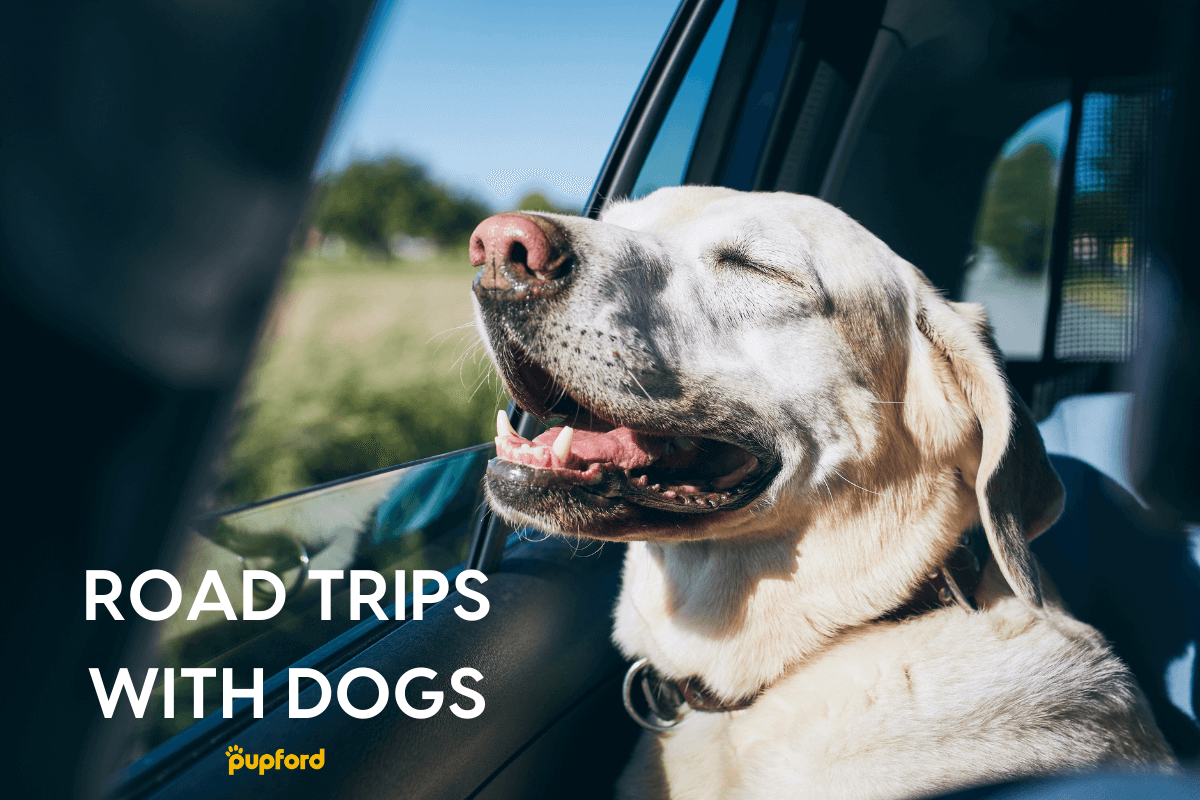
I’m no stranger to road trips with dogs. From Utah to Oregon, Oregon to Utah, Utah to South Carolina, South Carolina to Florida, Florida to South Carolina, and South Carolina back to Utah (plus, MANY little weekend trips) I have had our four-legged friend by my side.
And while road trips (mostly) go smoothly now, it definitely took some time for my dog to come around to spending countless hours in the car.
Here are some of the things I have learned about taking a road trip with a dog or puppy and driving with dogs in general. Plus, what to do if your dog gets car sick, what to do if your dog dislikes car rides, and how to desensitize your dog to the car!
TIPS FOR ROAD TRIPS WITH DOGS
Before we dive into each tip, here's an overview of 7 dog road trip tips:
- Bring the necessities and essentials
- Get their energy out
- Provide them with mental stimulation
- Take frequent breaks
- Find a dog-friendly hotel to stay at
- Stop for food/activities
- Safety measures
Alright, now let's look at each idea in detail. 👇
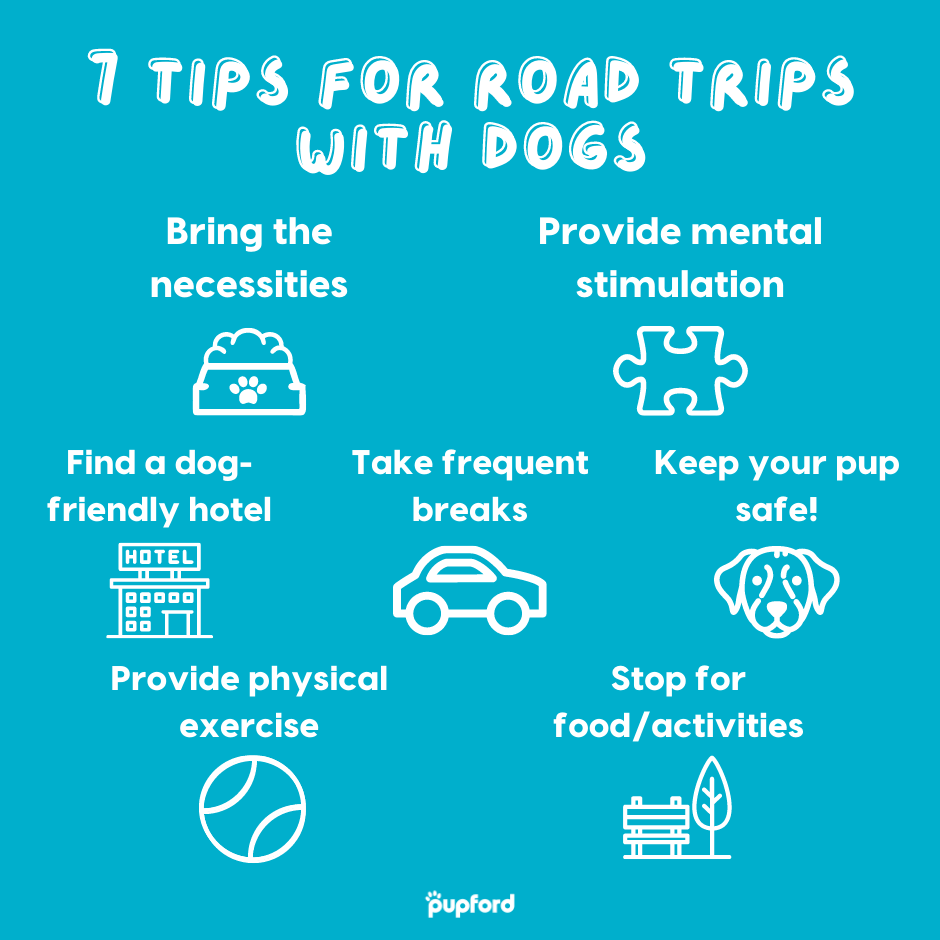
1. BRING THE NECESSITIES & DOG ROAD TRIP ESSENTIALS
First things first. Making sure you have all of the travel necessities for your pup within reach is so important. Here are some dog road trip essentials:
- Water bowl/water. You will want your dog to have access to fresh water throughout your trip. A spill-proof bowl is helpful while you're on the go.
- Food. Make sure to bring enough food for the amount of time you will be away! We also like to make sure the food is in an airtight container so it doesn’t get stale or stink up the car.
- Leash and collar/harness. Pack your dog's leash, harness, and collar. And be sure to get your tags updated before a big trip!
- Vaccination records/health certificate. Some hotels will require you to show your pup's vaccination records, plus, if you have to take a trip to the vet, this paperwork will also come in handy.
- Poop bags - a dog's gotta do what a dog's gotta do...
- Towel/blanket- if they get dirty or wet (or make a mess) a towel is nice to have handy. We also like to have a blanket for our dog when we stop for the night, and for him to lay on in the car.
- Dog bed (if there's room)- whether it is for safety or comfort, having a dog bed or a comfortable area for your dog to be if you stop for the night can make the trip more enjoyable for all.
- Treats/chews- bring treats that will keep your dog busy for long periods of time, like a tasty & long-lasting dog chew . You can also freeze a Kong with peanut butter or greek yogurt and some treats. And don't forget some training treats to take advantage of training opportunities while you're out.
- Favorite toys- bring a ball and ball thrower, squeaker toy, or some of their other favorite things.
- Crash-tested crate/harness/carrier- when it comes to drives with dogs, safety is also really important. Get a crash-tested crate/harness/carrier for your drive with your pup.
- First Aid Kit- some things you can pack in your kit include:
- Antiseptic wipes
- Hydrogen peroxide
- Petroleum jelly
Check out this article for more ideas for a first aid kit.
2. GET THEIR ENERGY OUT
Before setting off on your trip, give your dog some physical exercise. Let them run around, play fetch , or frisbee.
If you're short on space, there are still many ways you can get your dog's energy out. A good game of tug is perfect for smaller spaces or you can grab a flirt pole and let your dog do some chasing.
3. PROVIDE THEM WITH MENTAL STIMULATION
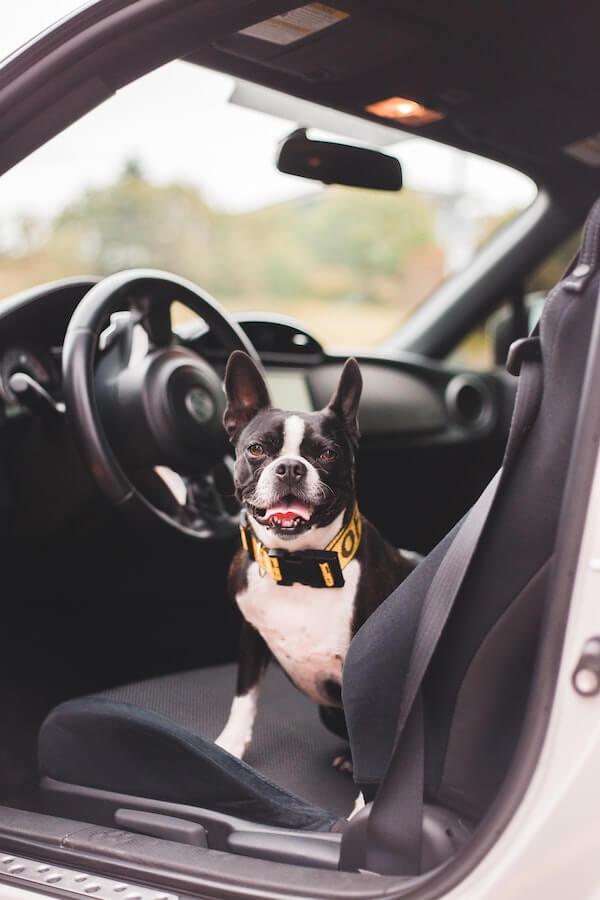
You know how tired you are after a full day of work or school (or both!), and all you want to do is well... nothing?
Using your brain is exhausting, and mental stimulation is just as important as physical exercise.
Teach your dog something new, work on a new trick , or give your pup a fun puzzle or enrichment box , just do something that makes them use their brain!
Here are a few toys that can help with mental stimulation 👇
- Snuffle Mat : Fill with treats and let your pup forage for them!
- Pure Focus Lick Mat : Spread with peanut butter, pumpkin puree, etc., and then freeze it. You can even stick it to your car window!
- SodaPup Dog Toys: Like a Kong, you can fill these with treats, peanut butter ( xylitol free ), and even a bully stick and give to your pup!
Related Reading: Mental Stimulation for Dogs
4. TAKE FREQUENT BREAKS
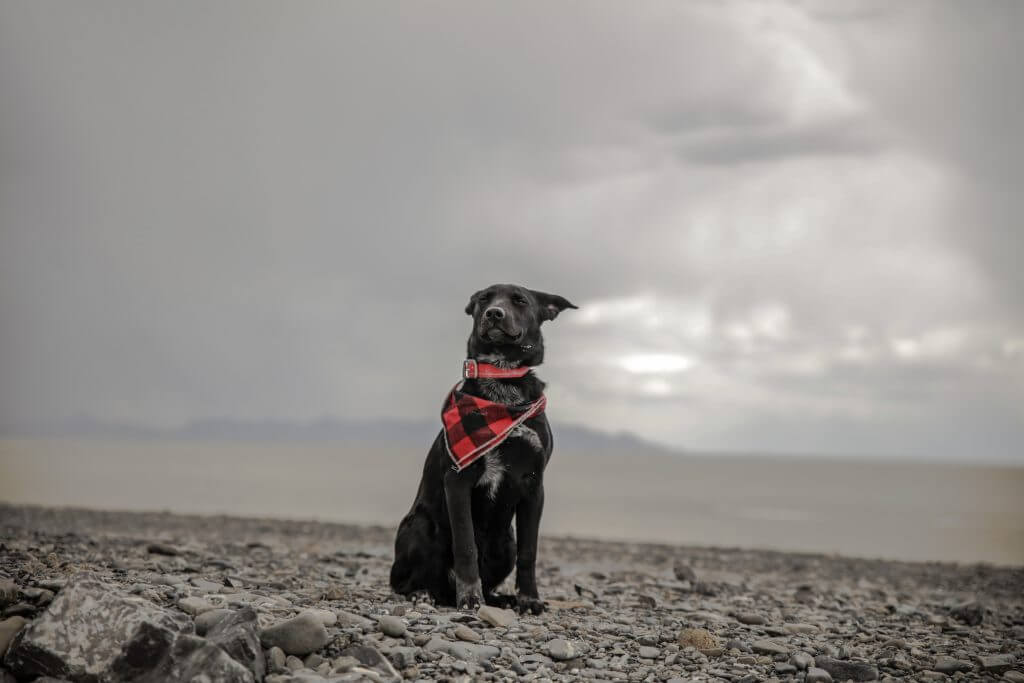
Give your dog a chance to use the restroom whenever you stop! Give them water , let them stretch etc. While our dog is wonderful 90% of the time, I know that if I am sick of being in the car, chances are he is as well.
We usually drive for 2-4 hours, stop, let him go to the bathroom, walk around with him, give him water and a treat or meal depending on when we stop, and then get back to it.
5. FIND A DOG-FRIENDLY HOTEL TO STAY AT
There are some websites that will let you know how pet-friendly certain places are. You can also filter results on hotel websites to say “allow dogs”.
But make sure to actually look at the fine print. Some places will say they allow dogs but then only allow one or two dogs up to 20 pounds. AND, some places will charge an extra fee for pets!
My dog doesn’t always do well when staying at unfamiliar locations for the night. We always try to bring his dog bed , his blanket, or something else with familiar smells to make him feel more comfortable in this new environment.
6. STOP FOR FOOD/ACTIVITIES
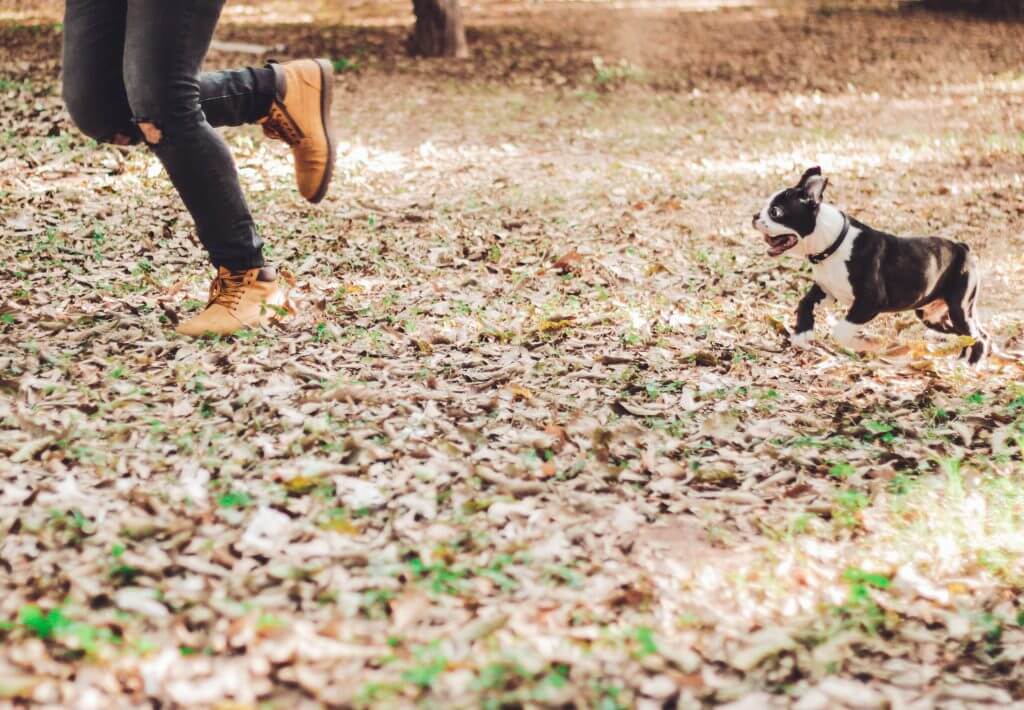
If you will be driving through a city/town and want to spend some time there before moving on, look for dog-friendly outdoor seating options at restaurants, and look for dog-friendly parks, trails, farmers markets, and more!
Some cities, like Portland, are very dog-friendly and have so many options that you can all go together! Again, check out bringfido.com or another similar website with reviews on different pet-friendly activities.
As far as hikes go, most National Parks don’t allow any dogs besides service dogs , but a lot of state parks will allow dogs on a leash no longer than 6 feet . Just do your research so you aren’t totally bummed when you get there.
7. DOG ROAD TRIP SAFETY MEASURES
Without getting into specifics, there are a lot of sad things that can happen to our best friends in the car, so extra precautions should be taken while driving with your pups.
Here are some of the main ones we recommend for your long car ride with your puppy or dog:
- Don’t roll the window down all the way (or even let them out the window!)
- Strap them into a crash-tested safety harness
- Or put them in a crash-tested kennel
Whatever you decide, make sure that it is tested and effective. We just want the best for our furry friends, right!?
OVERVIEW OF TIPS FOR DRIVING WITH A DOG

I have been asked multiple times by people at rest stops, on the side of the road, or in a gas station when driving with our dog, “How he is comfortable driving with us?” “How did we do it?” “What can I do?”
If you are one of the ones struggling with this, know that you are not alone. While many dogs love the open road, there are also so many that don’t feel so comfortable there. But good news, there are things that you can do and try to help your pup feel better on the open road.
HOW DO I GET MY DOG LESS NERVOUS TO RIDE IN THE CAR?
Here are a few tips for getting your dog more comfortable riding in the car:
1. Associate drives with something good. Whenever we take our dog in the car, he is excited. That is because he knows he is going to be able to go on a hike, go to the park, or an open field (maybe even the pet store to pick out a treat).
Associating positive and fun things with drives has made it so he looks forward to going places with us.
2. Keep special treats or toys in your car that they only get while in the car, that way there will be something special for them to look forward to!
3. Desensitize your dog to the car. You may need to start by just getting your dog okay with being around the car, then move in the car with the door open, then close the door. Then desensitizing them to sounds of windshield wipers, turn signals, honking, and more. Once they are comfortable with that, go on a really short drive. Then you can slowly increase duration!
Check out our video with Amber Aquart in Pupford Academy for tips on car safety and desensitization!
4. Practice good "car behavior." While in the car make sure to reward good behavior. If your dog is calm while in the car, reward that! If you honk a horn and they remain calm, do that! Be sure to reward the good!
MY DOG GETS CAR SICK, WHAT CAN I DO?
While car sickness can be more common in puppies than adult dogs because their eardrums haven't developed all the way, it can still happen as an adult dog.
Here are some signs your dog could be experiencing motion sickness:
- Excessive drooling
- Yawning or panting
- Smacking/licking lips
Things you can do help with car sickness in dogs:
- Open up the window slightly for a little breeze
- Keep the car cool and well ventilated
- Let your dog face forward (if possible)
- Limit your dog's food consumption prior to travel
- Ask your vet about medications for your dog
HOW DO I MAKE MY DOG COMFORTABLE IN THE CAR?
As we mentioned earlier, desensitization can be really helpful here! Familiarize your dog with the car before setting off anywhere. Go in the car with them, give them treats, and praise them.
They may need some time to become comfortable here, so try this multiple times (maybe even daily) for longer periods of time each time. Then when they are doing better, take them somewhere close like a park or on a hike; then work up to longer rides.
Slow and steady wins the race here.
EXTRA WAYS TO KEEP YOUR DOG BUSY DURING CAR RIDES
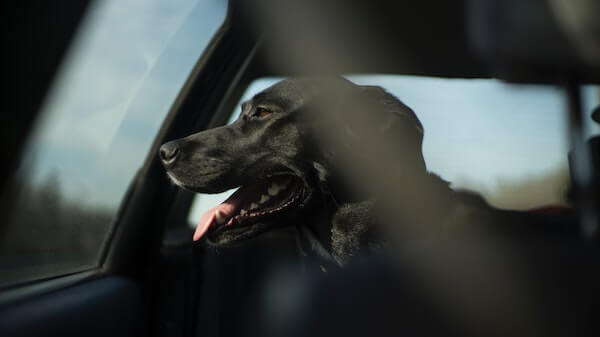
Dog chews are a seriously powerful tool for keeping your dog busy during car rides.
Whether they are a powerful or casual chewer, proper chews can keep them happy for extended periods of time.
We carry a range of Yak Cheese Chews for Dogs , Beef Tendon Chews, Bully Sticks & Split Elk Antler Chews.
Check out our full line of long-lasting chews, part of the Engage Line here.
RECAP OF HAVING A SUCCESSFUL ROAD TRIP WITH A DOG
While a long road trip with a puppy can seem daunting, it's completely possible if you follow these tips and tricks! Remember that every dog is different and some just don't handle long car rides as well as others.
Here are the 7 tips to make your next road trip with your dog more enjoyable and successful:
What else have you done to make your road trips more enjoyable with your pup? Tell us in the comments!
0 Comment s
Shipping & taxes calculated at checkout

Traveling Cross Country with a Dog: Great Travel Hacks + Guide
Disclosure: This article contains affiliate links and is a member of Amazon Services LLC Associates Program, meaning when you make a purchase, I earn a small commission. Affiliate links cost you nothing to use, and help keep my content free. It’s a win-win for us both! For more info, see the Privacy Policy
I can totally guess your favorite dog breeds based on how you travel
Take this quiz to see which breeds match your style!
Have you been wondering about the best ways to take a cross country road trip with your dog?
We have driven over 100,000 miles on the road with our dogs. We crossed borders, traveled top to bottom, and coast to coast within the United States. Our dogs have been along (lucky us!) for the journey. We have also done this in a car that only has space for us, our dogs, and the stuff we need for the trip. It doesn’t have to be anything fancy for you to have a great trip, but there are a few things that make a huge difference!
This guide weaves together our own experience as well as some of the professional recommendations that the AKC and the Center for Pet Safety provide for traveling with dogs. It is a huge topic, but I really wanted to focus on the things that are in your control and can make a difference between a chaotic trip and a smooth one.
My goal is for this to be useful whether this is your first cross country tip, or you just want some tips and tools to make your next trip go better than the last. Even for veterans there are some tools (see our packing list and food calculator ) that can help plan your cross country trip.
I hope this helps you on towards a great cross country road trip with your dog!

First, if in the back of your mind you are wondering “is it really so complicated you have to write a whole article?” then you are in the right place. As you will see, the actual “how to” is pretty straightforward. However, it is a lot of distance to cover, a lot of things can happen, so I want you to make the best of this trip. If you are like me, you want to know how to do this safely, comfortably, and efficiently.
A quick guide for a cross country road trip with a dog
This section is a quick review of the basic parts of a road trip. Skim through this part to make sure you didn’t miss anything, then keep reading to get to our hacks .
It helps to look at the simplest scenario: a solo cross country road trip where you are just trying to get coast to coast as quickly and as safely possible. Whether it is for fun or for necessity (like moving to a new place or an unexpected life event), a cross country road trip requires both you and precious pup to drive…and drive…and drive all the way across the map.
To achieve this you:
1) Plan your route 2) Drive 3) Make pits stops for food, water, bathroom, car fuel 4) Find and stay in accommodations that allow pets
Road trip essentials
So now with the power of the internet and some common sense, here is a quick guide to traveling cross country with a dog:
Plan and pack for your trip
- Use google maps or Wayze to plan your route
- Break the trip up into daily segments based on how long you can drive without getting tired (be conservative, this is a marathon not a sprint)
- Use the pet friendly filter on Expedia.com or Booking.com to find and book accommodations that allow dogs*
- Pack the basic dog necessities ( food , water, leash, poop bags, bedding, medicines)
- Pack your own travel necessities (clothes, toiletries, etc)
- Use a traveling harness or crate to keep your dog safe**
Hit the road
- Load up the car, get your dog comfy and secure
- Drive (so much driving!)
- Take breaks to keep you and your dog hydrated, fed, alert, relaxed and comfortable. Truck/travel are great pit stops usually with shade and good amenities
- Use shade, climate control, cooling devices/strategies, etc to keep your dog safe when you have to go inside without them (be very careful!)
- Check in to your accommodation. Sleep. Then begin again. * Accommodation is a huge topic all of its own but on trips where you spend one night in each place a hotel is usually your best bet for cost and convenience ** We will cover the benefits of safety restraints in more detail, but is also good to know that there are a growing number of states that by law require dogs to be restrained in your vehicle .
Yes. That’s it! Obviously, for your own trip this list might not be complete. If you are camping, or biking, or touring as a wandering minstrel and circus show … you’ll know best the special things and activities you require for your own adventure.
What should you pack for such a long trip with a dog?
If you have completed any kind of road trip with your dog already, I have good news! You probably have the essentials, but you might need a few extra things that are helpful on the road. If you want to double check that you have everything you need for a road trip, we put together a checklist for you. Our packing list is pretty comprehensive. Rather than exploding this post with long list, we put that at the end, and you can jump to that here if you want.
The checklist is also organized as a system, so the most frequent items are right at hand for you and your doggo, while the important but less used items are off out of the way.

Secure your dog with a Safety Harness or Crate
Both the AKC and the Center for Pet Safety are very clear that the best thing you can do to keep your pet safe is to secure them in a crash tested safety restraint such as a harness or crate. Since you will be spending a lot of time driving, it is one of the best things to minimize movement and distraction for you and your dog.
This can be a challenging topic, but we have a great Travel Hack that has worked really well for us (see Travel Hack #1 ).
TIP : Here is a surprising fact that has been true for all of our dogs. Safety restraints help our dogs settle into “driving mode “. If you help them get used to the setup, it becomes a familiar and even calming routine for them. We have terriers, folks, so if a terrier can get on board, yours can too.
What we have found most surprising is that when they are NOT in their harness or crate, they are more agitated, stressed and active. So bottom line in our car: we wear seatbelts, they wear seatbelts or go in a crate …it is just a part of safe and smooth driving.
3 Great Travel Hacks for a Road Trip With a Dog
Next let’s move next into the heart of this guide, and what I hope you’re really here for: how to maximize comfort, ease and safety.
There is no way around it, you are looking down the road at some serious amounts of travel and driving time. It can be a fun adventure. You might also find yourself wondering what if my dog gets anxious or how do I go to the bathroom if I’m solo driving and one of the biggest questions, what do I do if I need to leave my dog in the car?
So now let’s focus on how to make this trip safe and comfortable for everyone involved. Here are our 3 travel hacks that have really made a difference for us and we hope will for you too.
Travel Hack #1: Our Favorite Crash Tested Restraint
Since crates can take up more room in the back of the car, our first big tip is to use a crash tested safety harness for dogs up to 75 lbs.

We found that SleepyPod Clickit harness is the best for freedom of movement and flexibility while also being secure. We are able to use it as a harness both in the car and for walks. Sam is fine wearing it for long hikes. So it is both comfortable and very solidly constructed. This harness has sizes that fit larger dogs, so even labs can wear it.

For smaller dogs like Denver, a harness will not protect them. We found that the Sleepypod Air is also great. It is comfortable and is built to be secured by the seatbelt. Because it is made to sit in the car seat, we can move Denver in and out of it easily.
We don’t have personal experience with crates that get tied down in the back of a car. However, for larger dogs or to free up your backseat for other passengers, you may need a crate. The Center for Pet Safety tested and approved Cabela ‘s, Gunner , Lucky Duck , and Rock Creek Crates .

While none of these products are cheap, they are built with safety first. The reason why we like the safety harness is because it is one of the more affordable and flexible options.
There’s a great Facebook group for learning how to set up your crate in your vehicle.
Tip : Crates have different purposes and are not interchangeable. Wire house crates and plastic airline crates will not hold up to the impact of a crash
So to sum up here are some of the many reasons to use safety restraints. The biggest is to protect your most precious cargo. They deserve it!
- Safety : Protects your pup and passengers in case of an accident.
- Traffic Laws : Some states require safety restraints!
- Distraction Prevention : Keeps the dog from distracting the driver.
- Comfort : Ensures a more comfortable ride for your canine traveler.
- Stress Reduction : Lessens anxiety for both you and your pet.
- Emergency Preparedness : Easier to manage in unexpected situations.
- Vehicle Cleanliness : Keeps the dog hair, paw prints, etc in one consistent spot
Now do some dogs and their humans have a tough time with this equipment? YES , and yet dogs can learn to make it work. Traveling is a set of skills that almost every dog can master (more on this later).
Travel Hack #2: The Best Pit Stops for Traveling Solo with a Dog
The most efficient routes across the country are also major trucking routes. Gas stations that are built for truckers also make for great places to to take a break with your dog.
Recommended gas stations
Love’s are a pet parent favorite because they often have fenced dog parks TA Travel and Pilot are all over the United States Wawa and Sheetz are popular in many eastern states (and they have often superchargers) Buc-ees are great if you are down South
Our dogs may have seen Niagara Falls and the Golden Gate Bridge , but some of their favorite things have been grass patches at rest stops. I guess there’s a lot of “pee-mail”.
Dog-friendly retail stores are a lifesaver
There is a big problem when traveling solo, since travel stops serve food, you can’t take your dog inside . When the weather is extreme or when you are worried about the safety and security of your dog, retail stores are a great alternative!
Petco, Petsmart, Home Depot , Lowes , and TJ Maxx are just a few of the places that you can usually take your pet. They are large enough so that you can stretch your legs walking around. Home Depot and Lowes typically have big spacious bathrooms right near the entrance.
Note that many of these retailers have pet policies on a store by store basis, but we generally have not had any trouble just waltzing on in (thank you big box retailers!)
Tips for Leaving Your Dog in the Car (Travel Hack #3)
At some point, you will need to leave your dog unattended in the vehicle. It is almost unavoidable, especially if you are traveling solo. There are a few things people do that can really help when you need to leave your dog in the car to use the bathroom, grab something to eat, etc.
The method that works best for you will depend on the type of car you have.
- Remote Start : turn on climate controls while outside of the vehicle (newer cars)
- Physical Key : leave the fob in the car to keep it running, take the physical key out and lock it
- Tesla Dog Mode (This is a life saver. Never heard of it? Well, read on…)
- 3rd party vehicle cooling systems : these are especially popular with sprinter vans and RVs, but you can use them in a regular car too.
- Park in the shade: even on cool days, direct sun can make your car crazy hot
Please be very careful , even with automatic climate controls like Dog Mode, there are some risks to leaving your dog alone in the car especially in extreme heat.
Tips for what to look for in a vehicle
Most folks will just be using the vehicle that they have for their road trip. It is such a big ticket item and car rental prices can be stiff, so most of the time you just go with what you have. However, if you find yourself needing to rent a vehicle or actually are planning on getting a car that is great for traveling with a dog, then it is worth spending a little time on the topic. It is the MAIN piece of gear for your road trip.
Obviously we will only touch the surface here. Cars, trucks, vans all are such a huge topic that depend heavily on budget, style of travel and the size of your dogs. But I have been surprised at how little the “Top Vehicles for Dogs” articles focus on the things that are actually useful for traveling with a dog.
So here are our major features to pay attention to:
- Cargo Space : very important for dogs traveling in crates. You need generous space AND the seats need to lie completely flat
- Remote Start : most new cars will have this, helps keep your dog safe in a pinch
- Automatic Doors : easier to get in and out with your pup and all the stuff
- Configurable Space : seats that easily fold, seats that lie flat (for crates). Sometimes you need to have space for your dog(s), sometimes you need it for people.
- Easy to Clean : dog hair, muddy paws, you know the drill. Can the materials handle it?
Benefits of EV cars like Teslas when traveling with a dog
Dog Mode: this is amazing! It allows you to set the climate of the car to stay the same while you are away. Your dogs can stay comfy in their car while you grab a bite to eat or pop into a store. Using the Tesla App you can monitor the car to make sure the climate is staying on.
Safety Features: Tesla is also the safest vehicle on the road as independently tested by a bunch of different organizations. It has both active and passive safety features to protect you and your pups.
The main drawback – Charging . Our experience with EV Charging is mixed. Charging can be a hassle and in the middle states, the charging infrastructure is sparse. On the flip side more and more hotels are adding charging stations. So forget the gas station, if your hotel has EV charging you can be all fueled up and ready to go in the morning. So there are both pluses and minuses. Interested to learn more? Take one for a test drive ! You can both get some perks and send some thanks my way by using my referral code when you do a test drive or if you go all the way and get one for yourself! Use this link :

Traveling is a skill and your dog can learn it (Bonus Tip)
One last tip is a special combo that can really help your dog become a great traveler on the road and in life in general. A safe space helps your dog keep something familiar through all the changes. A learning mindset helps both you and your dog adjust to all these changes.
A safe space might simply be a favorite blanket and/or toy. The ideal safe space can easily be moved from the car to the room where you are staying. Your dog’s safe space can also be very useful when working on travel skills that help your pup become a happy camper.
The two main skills that will really help your pup make the journey are riding in the car and crate training . Your dog’s safe space can bring comfort and confidence to your dog as they take on these skills. It is a virtuous cycle.
Some dogs will naturally be good travelers, but many dogs have to learn how to travel. Others will have a negative experience and traveling with them can become a nightmare. In most cases this can be avoided.
Car training skills to practice
If this is your first big road trip with your dog, there is a lot you can do ahead of time to get them ready. This section is primarily for those making their first big trip with their dog. But even for folks with few trips under your belt, let’s do a quick sanity check. Here are skills that a well rounded dog will have that really help with traveling:
- Can they settle themselves down and sleep in the car when driving or stopped?
- Can they go for long stretches of driving without getting restless and crazy?
- Can you leave them to stay calm in an unfamiliar place (like a crate in a hotel room)?
- Are they fine to pee and poo on different surfaces and under a variety of conditions?
- Do they eat and drink easily in an unfamiliar place?
Why is this such a big deal? Because if your dog is miserable, than you will also probably be miserable and have fewer options when traveling. The more your dog knows, the more freedoms you both have to enjoy the experience. Since our goal is for and your dog to be comfortable and safe, teaching your dog traveling skills will really help.
Riding in the car : I know it sounds a little silly that riding in the car is a skill, but think about it. It can be bumpy, noisy, nauseating and scary to a dog. Wearing a safety harness or traveling in a crate will also be something your furry friend will need to get used to.
Crate training : this is a lifelong skill that will help your pup deal with separation, learn to calm themselves down, get used to relax in confined spaces, and to be patient. It is a true game changer.
While it is too long a subject to go through here, our post about dogs that refuse to get in the car provides more of a deep dive into some of the issues dogs face while traveling. You can also learn more about what panting in the car might mean for your dog. Most of these skills can fit naturally into your day. Like with anything useful it just takes a small adjustment but can bring a big payoff in the end.

Road trip packing list for your dog
We organize our gear into three categories. 1) things we use all the time, so it just stays right near the dog in a door cubby or footwell 2) things we use daily/nightly, we try to fit those all in one “overnight bag” 3) gear that is useful for longer stays, or used less often If you want to see a brief talk through of our stuff, here’s a video I threw together (plus Denver cameo)

What to pack: what we need all the time
- Water bottle
- Travel Harness /Crate
- Treats and Snacks
- Belly Band / Diapers (for Sam our senior dog)
What to pack: the daily/overnight bag
- Blankets (Pawtect Waterproof is great!) and/or Dog Bed
- Dog Bowls for Water Food
- Towels/Rags for spills and paws
- Stain Remover for spills and accidents
- Collapsible Dog Crate – this one pops open like a tent (fast setup/teardown)
- Toothbrush and Toothpaste
What to pack: important, but bulky or less frequent
- Collapsible Wire Dog Pen : outdoor use, for yards without fences, parks, etc
- Mr Peanuts Dog Packpack : for public transport or carrying dog on long outings
- Collapsible Soft Dog Pen : used inside as a sleeping area
- Grooming Kit
- Bulky Dog Bed
- Refills on frequent items (poop bags, snacks, wipes, etc)
How much dog food do I need for my road trip? Dog Food Calculator

Dog Food Calculator for Your Trip
Do’s and don’ts for traveling in a car with a dog.
To summarize, let’s touch on some dos and dont’s to be aware of. As a start, here is a condensed list of important things to consider for the road ahead.
- Get Records from Your Vet : Ensure vaccinations and medications are up-to-date. Keep your records with you! You can’t plan for everything and there are many dog services (doggy daycare, grooming, etc) that require the records
- Consult a Mechanic : Is your car ready and are your tires in good health?
- Create a Safe Space : A divider, favorite blanket or dog bed can help your dog relax in the car
- Use a Safety Restraint : Our recommendation is a crash test-certified harnesses.
- Have FUN! : Get some great audio books, podcasts and playlists for yourself. Bring toys and chews for the doggo. Take breaks for walks, site seeing, play games!
- Book Longer Stays in Advance : Good pet-friendly Airbnb and Vacation Rentals go fast in popular destinations. Book a few months ahead to beat the crowds
- Get Real Time data with Navigation Apps: Wayze, google maps, etc
- Prepare for Weather : Layers to manage temperatures, umbrellas/raincoats for rain
- Pack a First Aid Kit : Like with the weather, best to be prepared
- Always have a Jug of Water: Stay hydrated, keep it full especially in summer.
- Use Belly Bands or Diapers for Seniors or Puppies: the change and stress of a trip can cause a dog to lose some of the control they normally have. Disposable diapers can help keep everything clean and keep things moving.
DON’T
- Don’t Drive Drowsy, Angry or Distracted : It is as dangerous as driving under the influence. Pull over, take a break. Recharge. Take a nap if you need to.
- Don’t Ignore Signs of Stress : Be aware of your dog’s comfort and health. Take a break and check your dog out if they are showing signs of distress.
- Don’t Get Nailed by Crazy Pet Fees or Policies : Read the fine print, call to confirm, look through all of the house rules and policy sections on Airbnb, Vrbo, etc. The pet fee amount on 3rd party booking sites is often missing or incorrect. You may need to check with the hotel directly.
Wrapping Up: How to Travel Cross Country with a Dog
Planning a successful cross-country road trip with your dog can be intimidating, but with a little preparation and smart packing, you can be on your way. We hope that this guide helps you get ready for the road ahead.
We’ve learned a lot through research and planning, but most experience just came from hitting the road and learning from there. So I hope you have what you need for an enjoyable and memorable adventure across the country with your faithful companion.
Resource Guide for Travel with a Dog
🧳 What’s the best carrier for my dog when traveling?
You need different carriers for different types of travel
This is my favorite carrier for a small dog – Sleepypod Air
This is my favorite car harness for medium-large dogs – Sleepypod Clickit
This is the best for a large dog on a plane – Skymate Kennel
This is my favorite backpack for a small-medium sized dog – Mr. Penuts Tahoe
You can read more about my r eview of types of dog carriers for travel here .
🏨 What’s the best site to find cheap pet-friendly hotels?
To find cheap hotels, I recommend Expedia
Vacation Rentals are often the best option for people with pets VRBO
Stay for free or have someone watch your pet with Trusted Housesitters!
—–We love traveling and we love our dogs
It’s not always easy to combine the two especially when that means getting on flights or crossing borders. We brought our first dog from Kenya to California, and a few years later she went with us to Ecuador before returning to California where we settled down for a while. Now we are gearing up for a new adventure as we look to bring Sam and Denver on our next global journey. This site is a gift of love to my dogs and to others who love their pets so much, they can’t imagine leaving them behind
Similar Posts
![tips for car trips with dogs Dog Friendly Acadia National Park on Mount Desert Island [From a Local Tour Guide]](https://petsaroundtheworld.org/wp-content/uploads/2024/02/Acadia-NP-bridge-1-300x163.jpg)
Dog Friendly Acadia National Park on Mount Desert Island [From a Local Tour Guide]
Is Acadia National Park dog friendly? Acadia National Park is considered the most pet-friendly National Park in the United States. Dogs are allowed on over 100 miles of trails and…

Why Does My Dog Scratch My Bed Sheets + Solutions
Disclosure: This article contains affiliate links and is a member of Amazon Services LLC Associates Program, meaning when you make a purchase, I earn a small commission. Affiliate links cost…

Dog Park at Dog Mountain: Celebrate Life With Your Pet
Have you thought of visiting the dog park at Dog Mountain in St Johnsbury? I hope you do. It is one of the best places to both mourn the pets…

The 14 Most Dog Friendly Cities in the US
Have you been wondering about the most dog-friendly cities in the US? If you are trying to find the best place to visit with your dog in the US, the…

Dog Friendly Carmel: How to Enjoy Carmel-by-the-sea With a Dog
Have you been wondering about visiting dog friendly Carmel? I’ve got you covered! Carmel-by-the-sea is a quaint coastal enclave on California’s Monterey Peninsula. This is one of our favorite places…

Traveling to Italy with a Dog from the USA: The Ultimate Guide
Have you been wondering about flying a dog to Italy in the EU from the USA? Bringing a Dog from the United States to countries in the European Union (EU)…
Dog Travel Buff
11 Tips to Plan a Cross Country Road Trips with Dogs
Dogs can prove to be excellent partners on a long journey; especially driving cross country with a dog can be no less than a thrill and memorable experience. If your buddy is well trained the cross country road trips with dogs will be a fun-filled experience. It is not unknown to dog owners that their pets love and relish the outdoors. The smell of fresh nature can lure twice as much more than humans. Thus, the idea of a long road trip with a dog is not impossible to persecute.
However, making successful any cross-country road trips with dogs is not easy as it seems. There has to be preparations before the execution of the road trip, to avoid hassle on the drive. Traveling cross country with your pet can take your relationship to a new level ; taking dog on a road trip is also a way to get them on a much-needed vacation.

This post may contain affiliate links. If you buy something through one of those links, you won’t pay any extra penny, but I’ll get a small commission that encourages me to deliver more helpful content for you.
Here are some tips for cross country road trips with dog , which will make your journey more fun, memorable and relaxing.
Table of Contents
Tips for cross-country road trips with dogs, taking your dog for a check-up.
While planning any cross-country road trips with a dog, take him/her to the vet. It is necessary to know if the dog is ready or can be made to travel for a long time. Some dogs are not built to travel that long, and forcing them might cause trouble on the way. Although you can carry your dog if you have a dog carrier backpack and make sure your pup is comfortable in the carrier .
Before moving cross country with a dog, make sure with your vet that the immunizations are correctly done. It is not a wise decision to leave without vaccinations. Also, if your dog gets anxious , try to find ways with the doctor, to calm him/her down before traveling cross country with a dog.
Carrying Your Dog’s Documents
It is very important while desiring to take cross country road trips you’re your dog, that its important documents are with you. It will come in handy during any on-road emergency and can save a lot of wasted time. It is necessary while road tripping with essentials , the documents also be categorized as essential. While most people forget this point while asking how to do cross country road trip with a dog, documents are an absolute necessity while packing.
The best way to enjoy a long car ride with dog , is to make sure that all its documents are present with you digitally. There are accidents in which their physical health-related documents may get misplaced or lost. It is a safer option to have them with you in a digital space where they can be accessed anytime and anywhere.

Choosing the Correct Transportation
Car trips with dogs can easily turn sour if the accommodations are not comfortable. While asking yourself the best way to road trip with a dog , try to find a suitable vehicle. Do not in any case, choose a smaller one, because dogs need to stretch and turn for comfort. While looking for pet friendly cross country travel guide, make sure there are certain accommodations in your car for a long road trip.
Related Post : How to Travel with Your dog Internationally?
Planning the Correct Route
While planning a cross country road trip with dog , the best way to start planning is to decide on a comfortable route for you and your dog. Many routes answer most queries on how to do cross country road trip with a dog . These pointers are available for a smooth long car ride with dog. Added to the routes, are many pointers like the right places of halt and pet-friendly eating joints.
This pet friendly road trip planner gives you the correct guide for planning a cross country road trip with a dog. There are many halts where the dog can be left leash-free for quick and comfortable shredding of travel tiredness.
Read also: 10 Best Tents for Camping with Dogs
Take Dog-Friendly Treats and Toys
On a long car ride with dog, they can get restless and annoying, due to the lack of movement and stillness. While moving cross country with a dog , it becomes easier if their favorite treats and toys are present. The sense of security which is elevated by the presence of their familiar and favorite things makes the cross country road trips with dog easier. While deciding what to give a dog for a long road trip , do not forget their toys and treats.

However, it is advisable to not let them eat or chew on food at all times while driving cross country with a puppy . It has been observed many times how they frequently get stomach flu on a long car ride. Dog owners should be extremely mindful of the food and treats and dog poop bags should be kept handy while road tripping with dog essentials .
Taking Halts is Important
One of the most important questions asked by dog owners while planning how to do cross country trip with dog is how often to stop on a cross country road trip with dog . Halts are an important part of the entire trip for your dogs. Without any movement in the back of your car while on a car ride can be extremely tiring for them. Comfortable resting and quick stops are very important on a long road trip with dog in pet-friendly areas. If rest is avoided the fun-filled driving cross country with a puppy experience can turn sour.
Routes should be planned in such a way that your dog can take a quick break without being bothered by authorities. Car trips with dogs can be made fun and excited with your buddies being relaxed and comfortable in their spaces.
A cross-country road trip with dogs can be a memorable experience, but it’s important to be prepared for any accidents such as dog pooping in the car . To prevent such incidents, bring along supplies for clean-up, provide your dogs with plenty of water, and make sure they have regular potty breaks during the trip. Acclimating your dogs to car rides beforehand can also help reduce the risk of accidents.
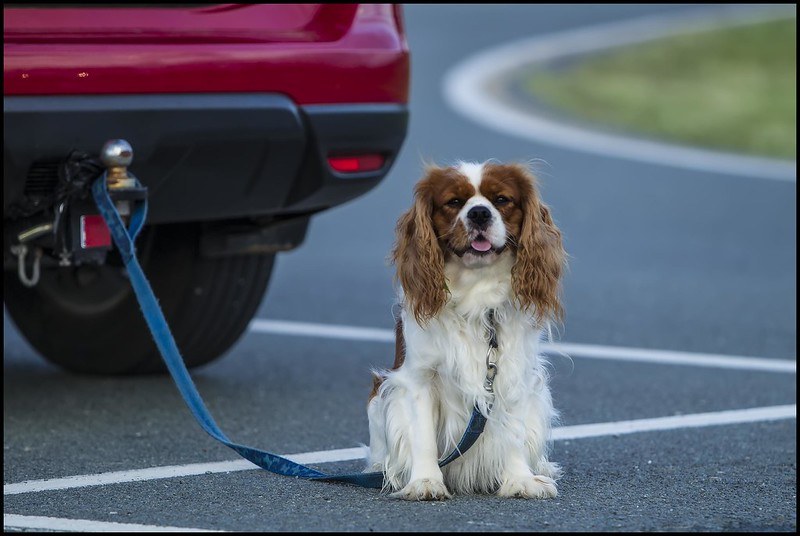
Microchipping May Come to The Rescue
While thinking of any Cross country road trip with a dog planner, it is essential to keep a space for emergency circumstances. There are possible chances while planning a cross-country road trip with your dog, that they might get separated from their owners. To avoid such bad events, microchip your pet . Veterinarians can easily find your lost dogs if they are microchipped before the trip.
Car trips with dogs have to keep under strict supervision , however, surprise accidents can be prevented with a microchip. Dogs get very excited outdoors and tend to wander off. Supervision and the presence of a microchip can avoid such unnecessary troubles. You may also like to know why your dog bites when excited .
Carrying Restraints for Your Dog
Car trips with dogs can be a memorable but also taxing experience if precaution is not taken correctly. They are to be secured carefully to avoid them fussing around in the back of the car due to the lack of activity. Using kennels or harnesses which is comfortable is exactly what to give a dog for a long road trip.
Many companies in the world specialize in the making of comfortable and easy-to-use safety gear for driving cross country with a dog . These gears give the owner relief that their pet is secured at the back while making any cross country road trips with dog .
Practice Car Rides are Important
Before thinking of any cross country road trips with dog, it is important to take your pets for small practice car rides. These experiments will give the dog owners a basic idea about the behavior during any long car ride with dog. Some dogs are fussier when their movement is restricted for longer periods. Before traveling cross country with a dog, or a long car ride with your puppy , understand how they can calm down and relax while you drive.
There are many ways the dog can be comforted while doing any pet friendly cross country travel ; those goods can be taken on the long car ride with dog for a better experience.

The Outside Environment Should be Kept Under Check
While planning any cross country road trips with dog , dog owners should keep in mind, the weather outside. Driving in extreme temperatures might not be a clever decision for a long car ride with dog. If you are taking dog on a road trip, careful and thorough research about the temperature while you drive and the temperature of your destination is important .
It is advisable to not undertake traveling cross country with a dog under such circumstances. Keeping them cozy will avoid them from getting heatstroke or hypothermia. Keep in mind that your dog has a different body temperature than yours.
Keeping an Eye on Your Dog
Car trips with dogs can be a fun-filled but exhausting experience. Even if you are tired, never forget to keep an eye on your dog. It is advisable to keep your dog and the road in focus while taking dog on a road trip. Some dogs can fall sick and their silence should not be taken lightly. There are many emergency vets available on different routes.
The availability of any pet friendly road trip planner makes the dog owners more secure about cross country trips with dog. Never should the dog be left unattended in a car. The best way to road trip with a dog is the one where they are happy and safe.

Do’ and Don’t in Cross Country Road Trips with Dogs
- Some dogs do take car rides excitingly and some don’t. Making a small trip with them before emerging on any cross country trips with dogis important.
- The destination should always be kept in the head while going on a long road trip with dog. Some hotels are not pet-friendly so dog owners should do their research well .
- Vaccinated dogs are safe for car trips. Make sure your Vet is on-board while planning a trip.
- For emergency purposes, make sure your luggage can be unpacked easily ; any cross country trips with dogcan be a hassle so luggage should be kept at arm’s length.
- Surprises are common in any cross country road trips with dog. Be ready for emergencies .
- Never leave the dog unattended or near the window.
- Do not let them chew on alien objects ; it might make them sick on the journey.
- Let them take maximum rest during the halts while any cross country trips with dog.
Car trips with dogs are the best way to spend quality time with your special friend. You get to know each other more and use it to get the much need vacation with your pet. It might prove one of the best experiences of your life.
Happy tripping everyone!
Read Next :
How Stressful is Flying for Dogs? Root Cause & Tips to Reduce
- How to Fly with Your Dog On A 10 Hour Flight?
- The Ultimate Guide for Hammock Camping with Dog
FAQ on Cross Country Road Trips with Dogs
1. is planning cross-country road trips with dogs good.
A : You and your dog will have the best time on the road. Go ahead!
2. How long can a dog be inside the car?
A : They can remain comfortable inside the car but breaks are necessary.
3. Can dog be good companions for road trips?
A : Yes, they are great fun for road trips.
4. Is supervision really important for cross-country trips with dogs?
A : Yes. Constant vigilance has to be kept for a safer journey.
5. How do you calm your dog during a long road trip?
A : Taking their favorite goodies and distracting them might help the case.
Similar Posts
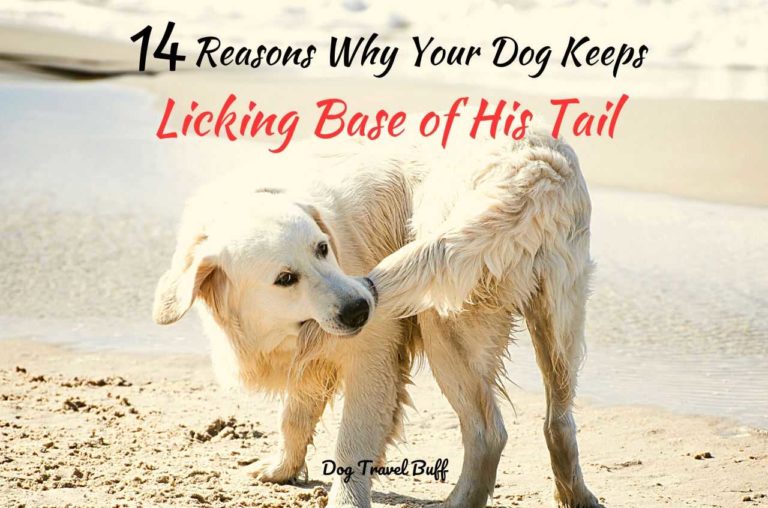
14 Reasons Why Your Dog Keeps Licking Base of His Tail? With Home Remedies
As a pet owner, you might have noticed that it licks under and around its tail. Have you ever wondered why my dog keeps licking the base of his tail? You might have thought about this thing or maybe ignored this. But, behind this behavior of your furry pal, many reasons can be hidden and…
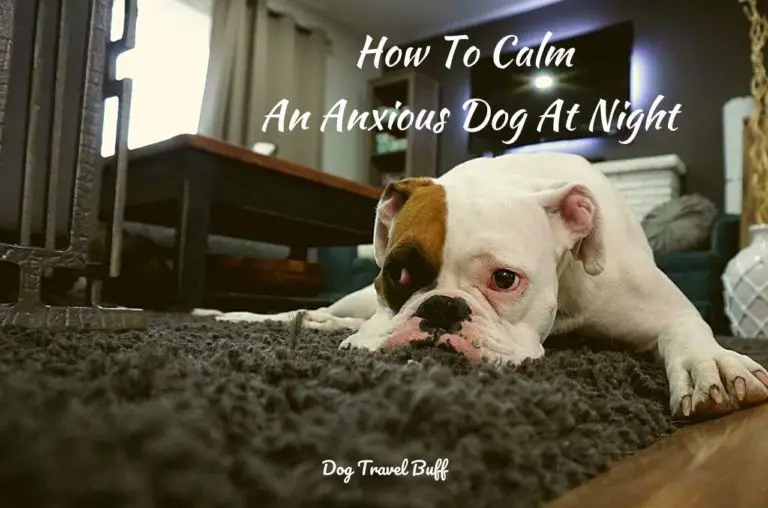
10 Tips On How To Calm An Anxious Dog At Night(With Video)
Just imagine a situation, you come back home, tired and struggle to focus. You decide to settle down, spend time and finally enjoy the peace. But what you hear, the sound of your dog whining, panting, barking and restlessly pacing. You love your dog, and you wonder how to calm an anxious dog at night?…
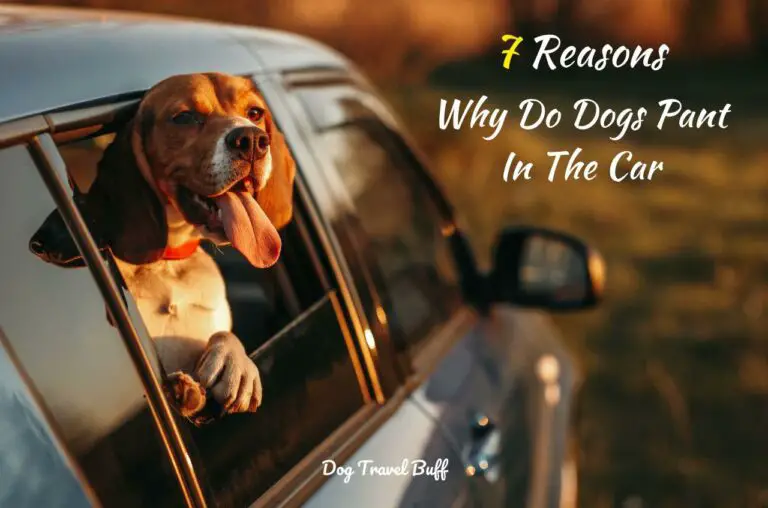
7 Reasons Why Do Dogs Pant In The Car (Causes And Solutions)
“My dog loves to play, run, and go outside. He is so energetic and lovely. But, I don’t understand what happens when he is inside the car. Why do my dogs pant in the car? This post may contain affiliate links. If you buy something through one of those links, you won’t pay any extra…

It is a known fact by everyone who is a pet dad/mom that the experience of a flight can be stress-giving for his/her dog. Travelers might face issues related to vertigo and a turbulent flight might also cause trauma in a few. So, just imagine how the pets might feel. They get the rush of…
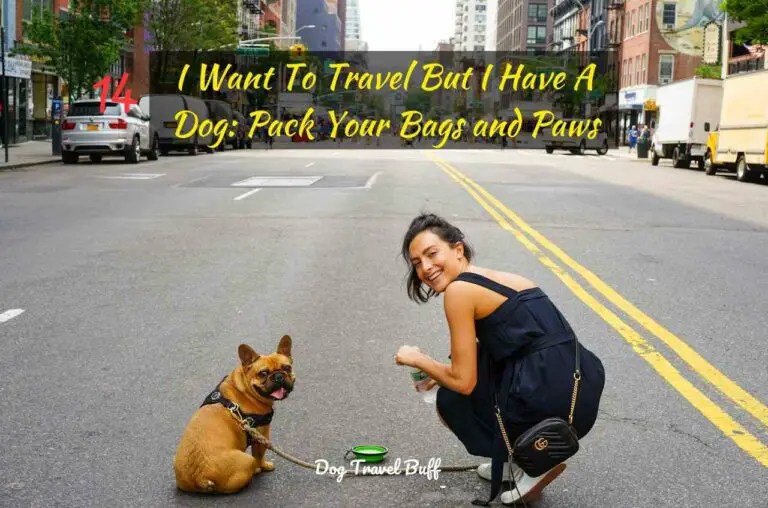
I Want To Travel But I Have A Dog: Pack Your Bags and Paws
Are you planning a trip with your dog but need to know how to schedule your trip with your pal? As pet parents, we got the same question when planning our journey with our pet, Jack! But we have learned to schedule a trip with our furry pal over time. This post may contain affiliate…
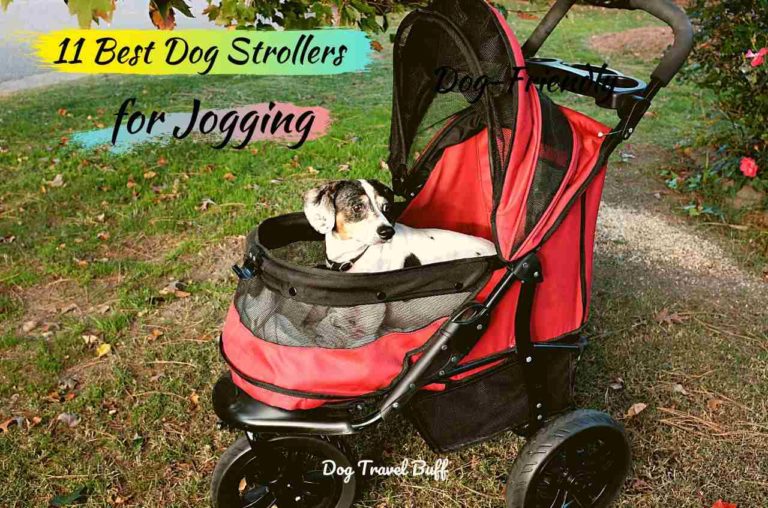
11 Best Dog Strollers for Jogging(Buying Guide+Review)
A dog stroller is useful gear if you have a small puppy or elder dog. Sometimes our small pups or senior dogs are not able to walk on their own to roam around and they get bored or grumpy sometimes. So, if you have a dog stroller then you can take your dog with you…
Cross country road trip with my dog was challenging and fun. My Bruno loved it and we are planning for our next trip.
Thank you Steven.
Leave a Reply Cancel reply
Your email address will not be published. Required fields are marked *
Save my name, email, and website in this browser for the next time I comment.

Traveling with Dogs Made Easy: 5 Tips for Road Trip Success [Large Dogs]
Some of the links below are affiliate links, meaning that at no additional cost to you, I will receive a commission if you click through and make a purchase. For more information, read my full affiliate disclosure here .
![Traveling with Dogs Made Easy: 5 Tips for Road Trip Success [Large Dogs] 1 Traveling With Large Dogs](https://bigdogmom.com/wp-content/uploads/2021/04/Traveling-with-Large-Dogs-Pin-2-683x1024.jpg)
Whether you are moving cross country or planning a dog-friendly vacation, traveling with dogs can be daunting. Here are my top 5 tips for an easier road trip with your large dog.
Whether you are looking for a dog-friendly vacation or are moving with a dog cross-country, the prospect of traveling with dogs can feel both daunting and crazy.
The hair flying. Slobber flinging. Panting hot breath on your children as they try desperately to keep their books from getting saturated with your dogs’ jowl juice.
Driving over 2000 miles under these conditions can bring even the most tenured big dog mom to her knees if she isn’t prepared.
![Traveling with Dogs Made Easy: 5 Tips for Road Trip Success [Large Dogs] 5 Traveling with Large Dogs](https://bigdogmom.com/wp-content/uploads/2021/04/Road-Trip-With-Large-Dogs-Pin-3-683x1024.jpg)
The following are 5 simple tips, from my recent personal experience, that will help you maintain your sanity should you be considering a road trip with dogs . As an added bonus, I’ve included a VIDEO summary of these 5 tips linked below. Check that out when you finish reading…
In this post you will learn:
- How to transport your dog safely in the car,
- The 5 most important keys to successful travel with your big dog,
- What you need to have on hand in the event of an emergency,
- A sample project plan (checklist) to prepare for your trip with ease,
- How to relieve stress and anxiety for dogs that fear car rides,
- The best pet-friendly hotels for large dogs,
- And some helpful advice for fellow raw feeders!
Let’s get going…
Did you know?
Click here for my FREE Pre-Travel Checklist for Big Dog Owners that you may find helpful as you plan for your road trip. It contains 24 suggested dog-related action items to assist in your planning and preparation with a notes section for you to jot down phone numbers or other key information for your trip.
Travel Safety for Dogs
Did you know in an accident that occurs at 25 mph, a dog can be thrown forward with a force 40 times greater than its weight, hitting objects and passengers with thousands of pounds of force? ( 1 )
Consider the impact of a 200-pound mastiff. That would be a force of 8,000 pounds flying through the cabin, and worse, crashing through the front windshield!!
![Traveling with Dogs Made Easy: 5 Tips for Road Trip Success [Large Dogs] 6 Traveling With Large Dogs](https://bigdogmom.com/wp-content/uploads/2021/04/Traveling-With-Large-Dogs-3.jpg)
Whether you are in the car for 5 minutes or 10 hours or more with your dog, it is critically important that you factor into the cost of big dog ownership , money for a seat belt , harness , gate , crate , or some way to safely transport your dog in a car.
The make and model of your vehicle and the size of your dog(s) will determine what safety gear makes the most sense for you.
Here are a few options for your consideration.
![Traveling with Dogs Made Easy: 5 Tips for Road Trip Success [Large Dogs] 7 Traveling with Dogs Made Easy: 5 Tips for Road Trip Success [Large Dogs] Whether you are moving cross country or planning a dog-friendly vacation, traveling with dogs can be daunting. 5 tips for an easier road trip with your large dog.](https://bigdogmom.com/wp-content/uploads/2021/04/Amazon-Shopping-Callout.png)
Note: I’ve compiled all of the products I mention in this post into a convenient one-stop-shop on Amazo n to save you time shopping, so check there when you finish reading.
Best Products for Car Safety for Large Dogs
Seat belt or seat belt tether.
These will usually attach directly to the seatbelt in the car. An example is the Kurgo Seatbelt Swivel Tether which hooks onto your dog’s harness.
Read The Best Dog Harness for Large Dogs [Definitive Buyers Guide] for more on how to select the best harness for your large dog. If you prefer a video, check out How to Choose a Dog Harness for Large Dogs [“NO PULL” Truth REVEALED!] .
Car Harness
These are harnesses made exclusively for car travel for dogs. They are different than regular dog harnesses.
Examples include the Impact Dog Car Harness by Kurgo (crash test rated up to 108 pounds) and the PetSafe Deluxe Car Harness (up to 120 pounds).
A gate is simply a barrier between you (the driver) and your big dog.
Examples include the Kurgo Backseat Barrier or the WeatherTech Pet Barrier , which is the one I have.
Unfortunately, I have yet to find the perfect barrier for our Navigator. I’m sure I did something wrong with the installation of our WeatherTech one, but, for some reason, the second the dogs lean on it, it slips out of place. I do think this product would work well for smaller vehicles, vehicles without a liner, and families with just one dog, however. For our vehicle, the Kurgo Backseat Barrier would work much better!
If you have just one large dog, a crate may be an option for you.
A good example of a quality crate you could fit in the cargo space of a large SUV is the Pet Gear 3 Door Portable Soft Crate which would be big enough for a Labrador retriever, Boxer, or Collie size big dog.
For families, like us, with giant breed dogs or multiple dogs, a crate may not work for you given the substantial space limitations in most vehicles.
How to Get a Large Dog Into and Out of a Car
Secondly, you will want to think about how you are going to effectively get your dog into and out of the car safely.
We use a Twistep and LOVE it! This product attaches directly to the hitch on the back of our Navigator. To use it you simply lift the lock and swivel it out from under the car and it locks in place. When your dogs step out, you lift the lock again and swivel it back under for storage. Easy peasy and oh, so convenient! The Twistep has been a Godsend for me! Check out the video below to see it in action!
Other big dog owners love using a dog ramp for their dogs. For dogs with mobility issues like Wobblers, hip dysplasia, CCL injuries, or senior dogs, a ramp will likely work better for you than the Twistep . For healthy adult dogs and puppies, however, either one can work for most vans, SUVs, or trucks.
Check out my video, Hitch Step or Dog Ramp: Which is BEST For You? A Mastiff Owner’s Journey With Both | PROS & CONS , for a more in-depth comparison.
That said, if your car is small enough, you may not need either one.
Now that you have the means to travel safely, let’s move on to HOW to successfully survive a long-distance road trip with your big dog.
5 Tips for Long-Distance Travel with a Large Dog
1. preparation.
Preparation can mean many different things depending on what type of travel you are doing with your large dog.
Let’s discuss some possible scenarios and I will give you a few tips for each.
Traveling For a Few Days to a Week
While the most simple of the three scenarios, traveling long distance, even for just a couple of days, with a big dog involves some planning and preparation.
Consider your destination, the routine needs of your dog such as food, medication, and behavior, weather, and how many hours you will be traveling each day.
You will need to prepare food and medication, make hotel arrangements, and pack your Essentials Bag (see point #2 below).
If your dog will be riding in the car for more than a few hours at a time on this road trip, consider conditioning them to long car rides ahead of time. More on that in a minute…
Long Distance Road Trip for 7+ Days
In addition to the points made above, longer road trips require a little more pre-planning.
Depending on how long you will be gone, you may want to arrange for a routine vet visit beforehand to discuss any needed immunizations or medications your dog will need.
Inform your veterinarian about where you are traveling as there may be geographical health considerations you need to be aware of like Lyme disease, valley fever, or canine influenza.
You will also want to plan to have more food on hand or the possibility of buying dog food at your destination.
Don’t be surprised if your dog’s appetite is thrown off or if he chooses to skip a meal here or there. In my experience, this is normal.
Moving Cross-Country
The prospect of moving to a new state can be daunting, to say the least, especially if you have children and/or big dogs.
![Traveling with Dogs Made Easy: 5 Tips for Road Trip Success [Large Dogs] 8 Moving with large dogs](https://bigdogmom.com/wp-content/uploads/2021/04/Moving-with-a-Dog-Pin-2-683x1024.jpg)
Don’t expect to get much sleep in the weeks leading up to your move. With so many competing priorities and action items, it’s easy to get lost or overwhelmed.
In addition to everything I’ve already mentioned above, you will want to provide a forwarding address to your vet, as well as contact your state or county where your dog is licensed to let them know you are moving.
I also recommend getting all of your pet medications refilled a few days before your departure to give you time to get established with a new vet and pharmacy.
I’ve created a Pre-Travel Checklist for Big Dog Owners that you may find helpful as you plan for your road trip. It contains 24 suggested dog-related action items to assist in your planning and preparation with a notes section for you to jot down phone numbers or other key information for your trip.
Click here to simplify your travel prep with this FREE comprehensive project plan checklist.
2. Easy Access to Travel Essentials
There is nothing worse than 5 minutes after leaving a rest stop being forced to pull over yet again to retrieve something stored overhead in the car carrier .
My best advice is to try and consider anything and everything you might possibly need access to and keep it in a bag or safely stored nearby.
Call it a Go Bag, an Essentials Bag, or Mom’s Bottomless Pit Bag. This is the bag that contains your most essential items you need to have on hand at all times whether for convenience or emergency.
💡BIG DOG MOM TIP: If you have children, consider empowering them to pack their own Go Bag as well so they can begin to be responsible for their own stuff.
My car travel bag contains only dog-related items as my (Bottomless Pit) purse stores my personal belongings.
Here are just a few of the items I don’t leave home without when I am traveling with big dogs:
- ✅ Leash
- ✅ Collar / Harness (see my buyers guide to harnesses for big dogs here)
- ✅ Vet Records including immunizations
- ✅ Dog bowls (one for each dog)
- ✅ Drool cloths, waste bags (you can never have too many!)
- ✅ Treats ( dehydrated liver , Real Dog Box , and Raw Paws treats work best)
- ✅ Clicker , squeaker
- ✅ Dremel and styptic powder or Kwik Stop (Yes, I am a nail fanatic!)
- ✅ A few toys or balls (here is a great toy guide for big dogs )
- ✅ Gas-X , Probiotic
- ✅ Bloat Kit (read more about bloat here )
- ✅ Prescription Medications (including allergy meds and Melatonin )
- ✅ Alcohol, hydrogen peroxide, betadine
![Traveling with Dogs Made Easy: 5 Tips for Road Trip Success [Large Dogs] 9 Custom Banner 10% Off Big Dog Mom](https://static.shareasale.com/image/63436/970x90-BDM.jpg)
3. Maintain Routine… and Patience
Consider that the longer your road trip, the more your dog will be out of his or her normal routine.
This can cause disruptions in appetite, gut and bowel issues, anxiety, and stress in some dogs.
To minimize potential behavior or health issues, I recommend starting a probiotic in advance, bringing water from home, and bringing some of the dog’s bedding or soft toys for comfort and familiarity.
Feed your dog as close to your normal schedule as possible while on the road.
If you have been wanting to “feed this new dog food” or “try this new treat,” right before or during your road trip is not the time for the switch.
Anything new that you buy for your trip or your move should be introduced BEFORE you leave – that includes any items that require conditioning such as a crate, harness, or seat belt, as well as anything edible.
And finally, be patient with your dog while you travel.
Every trip with my dogs is an imperfect adventure. When you react to this simple fact of life with a sense of humor and ease, your dog will as well.
4. Stop Frequently for Exercise
Plan your stops so that you are able to provide ample exercise and potty time at each one.
And, better yet, map your route to schedule in extended times when your dog can burn off energy through play, running, hiking, etc.
Find a local park, hiking trail, or open field where you can safely let your dog off-leash or on an extended (not-retractable) leash .
After all, a tired dog is a happy dog!!
The added advantage of doing this is that most dogs enjoy meeting and interacting with new people and new smells.
Allowing your dog this freedom to do what they do best as a social scent hound will ensure your dog is comfortable and content to sit or sleep quietly until your next stop.
5. Relieve Dog Stress & Dog Anxiety
My guess is some of you have read up to this point and are asking, “What do I do if my dog is afraid of riding in the car?”
![Traveling with Dogs Made Easy: 5 Tips for Road Trip Success [Large Dogs] 11 Traveling With Large Dogs](https://bigdogmom.com/wp-content/uploads/2021/04/Traveling-with-Large-Dogs-Pin-2-683x1024.jpg)
If you have a dog that is fearful of getting into the car or riding in the car, and you are wondering, “What can I give my dog to calm her down,” this is the section for you.
Here are a few resources I found particularly helpful on the topic of how to cure car anxiety in dogs.
I’ve broken them down into three categories:
- ✅ Behavioral Supplements
- ✅ Behavioral Modification
- ✅ Behavioral Management
1. Nutritional Supplements for Dog Anxiety
According to Bravo et. al. in their study published in 2011 titled, “Ingestion of Lactobacillus strain regulates emotional behavior and central GABA receptor expression in a mouse via the vagus nerve.” ( 2 )
In this study, the authors conclude that what they call the gut-brain-HPA axis pathway, in part mediated by the neurotransmitter GABA, is significantly affected by the bacteria in the gut, which can be altered by the addition of a particular strain of Lactobacillus.
More simply, what’s in the gut affects behavior, and modifying what’s in the gut can modify the behavior as well.
In a more recent literature review in 2017, researchers at NIH found that gut health in a variety of species, including humans, are affected by the microorganisms living in the gut, and that the administration of probiotics could significantly increase gut health , and accordingly decrease symptoms of anxiety and depression. ( 3 )
While it may not be a silver bullet for your dog’s fear, anxiety, or stress, the potential health benefits are proven. How the probiotic affects your dog’s behavior is something I would love to hear about in the comments below!
One great probiotic option for calming a reluctant traveler is Calming Care Canine by Purina .
This product contains a proprietary probiotic strain of Bifidobacterium longum BL999 to “help dogs maintain calm behavior, cope with external stressors like separation, unfamiliar visitors, novel sounds, or changes in routine and location.”
Keep in mind, you will want to start your dog on Calming Care 4-6 weeks before traveling.
For a more in-depth analysis of probiotics for dogs, read Probiotics for Dogs: The Facts and Strains that Matter Most .
In addition to Calming Care , you may consider keeping some Melatonin on hand as well. Melatonin for dogs is both safe and effective. While there aren’t many studies done on animals, there is anecdotal evidence that melatonin works to treat behavioral and sleep issues, as well as specific types of hair loss.
I started giving Junior Melatonin for his patchy hair loss (non-allergic alopecia) and noticed that when he took it, he became calmer and more sleepy than normal.
Melatonin is not going to drastically alter your dog’s behavior, but it may help take the edge off in a dog that suffers from stress or anxiety in the car.
Melatonin takes about 1-2 hours to take full effect so you will want to dose it accordingly.
*NOTE: Consult your veterinarian for specific dosing and health considerations for your dog before you give Melatonin . While it’s a safe, natural supplement, there are some dogs who should not take it.
2. Behavioral Modification – Conditioning
As I mentioned above, conditioning your dog to ride in the car safely is a core responsibility for any dog owner.
Ideally, this will start when your dog is a puppy.
Socialization both in and out of the car is vital for the health and wellbeing of your dog, so start early if you can.
Make every trip an amazing one with tons of treats, praise, and fun. Never force your puppy into situations or places he or she is fearful of.
[Read: Puppy Socialization: 5 Common Mistakes You Don’t Want to Make
[Watch: How to Socialize Your Puppy at Home While Social Distancing – 15 Creative Ways (THAT WORK!)]
For now, let’s assume you have an adult dog who just needs to get used to riding in the car for long hours at a time.
Conditioning in this situation is nothing more than increasing the duration of time in the car in the weeks leading up to your trip.
For example, start with a 45-60 minute drive to a dog-friendly place near you where your dog is rewarded with adventure, exercise, and lots of treats. Increase the drive time over a few months to 2-3 hour-long trips, where again, your dog is rewarded with fun and love at each stop.
After a few short day trips, your dog should be well familiar with what it means to be a good canine companion on the road and the joy of the adventure that awaits.
3. Behavioral Management for Car Anxiety – Avoidance of Stressors
For dogs with fear or anxiety, sometimes the best choice is to avoid the stressor altogether.
If riding in the car is not the problem, but interacting with other dogs is, select stops on your route that are less likely to involve other dogs.
In my experience with an aggressive mastiff , management is absolutely critical. My dream of traveling and camping with my handsome Linus was not to be. For us, riding in the car was limited to essential trips to the vet only.
Patricia McConnell has a terrific blog post about how to determine whether your dog is a good fit for a long distance road trip or not.
In this article she says, “Some dogs are neophobic (afraid of new things). Some dogs would love a week in a cabin in the woods but hate the city. Or vice versa. Some dogs can’t wait to play with your grandchildren; others, not so much.” ( 5 )
Best Hotels That Allow Large Dogs!
While this is not an all-inclusive list, here are a few of our favorite dog-friendly hotels for when we are road tripping with our mastiffs:
I like to use Bringfido.com to identify and filter for hotels at my destination that both allow 2+ large dogs and that has NO PET FEE. From there I filter on price to find just the right pet-friendly hotel for my needs and budget.
If you haven’t tried BringFido , definitely check it out.
![Traveling with Dogs Made Easy: 5 Tips for Road Trip Success [Large Dogs] 12 Traveling with Dogs Made Easy: 5 Tips for Road Trip Success [Large Dogs] Whether you are moving cross country or planning a dog-friendly vacation, traveling with dogs can be daunting. 5 tips for an easier road trip with your large dog.](https://media.bringfido.com/banners/1.jpg)
Below is my list of top pet-friendly hotels for big dog owners. I have listed them in order from the BEST to the least wonderful, but still acceptable.
Keep in mind, the quality of an individual hotel depends on the property owner, age of property, and its location, so please take this list as a guide to start from as you plan for a road trip with your large dog.
- ✳️ TOP CHOICE: La Quinta Inn & Suites
- ✳️ RUNNER UP: Hampton Inn & Suites
- ✳️ 2ND RUNNER UP: Homewood Suites
- ✳️ Extended Stay
- ✳️ Country Inn & Suites
- ✳️ Motel 6
- ✳️ Super 8
Tips for Raw Feeding on the Road
This is a really tough one, unfortunately, but I feel compelled to offer a bit of advice and insight as a fellow raw feeder.
First and foremost, do not beat yourself up if you need to switch to kibble for a short time during your travel or move.
![Traveling with Dogs Made Easy: 5 Tips for Road Trip Success [Large Dogs] 15 Traveling With Large Dogs](https://bigdogmom.com/wp-content/uploads/2021/04/Traveling-with-Large-Dogs-2.jpg)
We moved from Arizona to Michigan during the fall of the 2020-pocalypse and the supply of raw food for my dogs became more difficult both financially and logistically to obtain. This forced me to switch my mastiffs to kibble for a few months until we arrived at our destination and I could locate a new raw food co-op in our area.
Despite their icky coats and shedding, they survived.
It’s not ideal, but sometimes preserving your sanity is more important when faced with the insanity that was 2020.
That said, I have traveled long distances with my mastiffs while continuing to raw feed. It absolutely CAN be done, but it definitely takes planning and preparation.
Depending on how long you will be on the road, you will need one or more coolers and separate containers for each meal. I have traveled and tried to portion out large quantities of raw meat, but doing this out of your car or in a hotel is VERY difficult (and MESSY)!
I highly recommend scheduling a raw dog food prep day before you travel when you portion out whole meals into separate containers so that the only cleaning you need to do when raw feeding on the road is of that one container after your dog eats.
Be sure to pack plenty of Clorox or Lysol wipes or a bottle of vinegar (1:1 vinegar: water) to sanitize your dishes, sink, car, etc.
Lastly, if your budget allows, consider investing in pre-prepared raw dog food like Darwin’s , Raw Paws Pet Food , or Dr. Harvey’s .
I have reviews for all three linked below for you to see what will work best for you and your big dog. All have their pluses and minuses, but would be a headache-free way to continue to raw feed your big dog while you travel.
- Feeding the Way Nature Intended: A Review of Raw Paws Pet Food
- Top 5 Reasons Why Darwin’s Raw Dog Food is Great for Big Dogs
- My Honest Review of Dr. Harvey’s Raw Dog Food [for Big Dogs]
![Traveling with Dogs Made Easy: 5 Tips for Road Trip Success [Large Dogs] 16 Save 40% of $339 - use code RAWTODAY40](https://static.shareasale.com/image/63436/Save-40---728x90---Dog.jpg)
[VIDEO] Traveling With Large Dogs | Top 5 Tips for a Long-Distance Road Trip
The latest on Youtube:
Ditch the insanity and bring on the adventure.
I started this post with the title, Road Trip with Large Dogs – Are You Insane?!
Meeting new people on the road is one of the great highlights of any trip for me because they inevitably ask this question.
I will usually laugh and reply, “Traveling with big dogs is no crazier than living with them! All it takes is a sense of humor, patience, and a whole lot of preparation.”
Are you planning a road trip with your large dog? What concerns you most about traveling with them? Tell me all about it in the comments below.
And don’t forget to grab your FREE Pre-Travel Checklist before you go! I’ve compiled all of the products mentioned into a convenient one-stop-shop on Amazon for you. Check it out here …
Safe travels!
- Keeping Pets Safe In the Car
- Ingestion of Lactobacillus strain regulates emotional behavior and central GABA receptor expression in a mouse via the vagus nerve
- Gut microbiota’s effect on mental health: The gut-brain axis
- Teach Your Dog to Ride in the Car: Prevent Anxiety and Motion Sickness
- Traveling with Dogs–Should You?
Stephanie Seger is the owner and writer of the award-winning blog and purpose-driven brand Big Dog Mom™ and founder of the Dog Nailpro™ Method. She has decades of experience as a big dog owner, over 30 years of which has been devoted to health, nutrition, and behavior of large and giant breed dogs. With a BS in Microbiology, an MBA, and a passion for writing and big, slobbery dogs, Stephanie is committed to serving large and giant breed dogs by empowering, educating, and inspiring the people who love them. She shares her life with her husband, two children, and the inspiration for Big Dog Mom™, her two Mastiffs, Junior and Sulley.
Similar Posts

Selecting A Dog Breeder Made Easy With These 10 Questions

Every Great Dog Name Has A Story – The Top 5 Dog Naming Tips

Dremel or Clipper? The Best Tools for Large Dogs and Black Nails
![The BEST Dog Harness for Large Dogs [Definitive Buyers Guide] 20 The BEST Dog Harness for Large Dogs [Definitive Buyers Guide]](https://bigdogmom.com/wp-content/uploads/2020/05/Best-Dog-Harness-for-Large-Dogs-2.jpeg)
The BEST Dog Harness for Large Dogs [Definitive Buyers Guide]
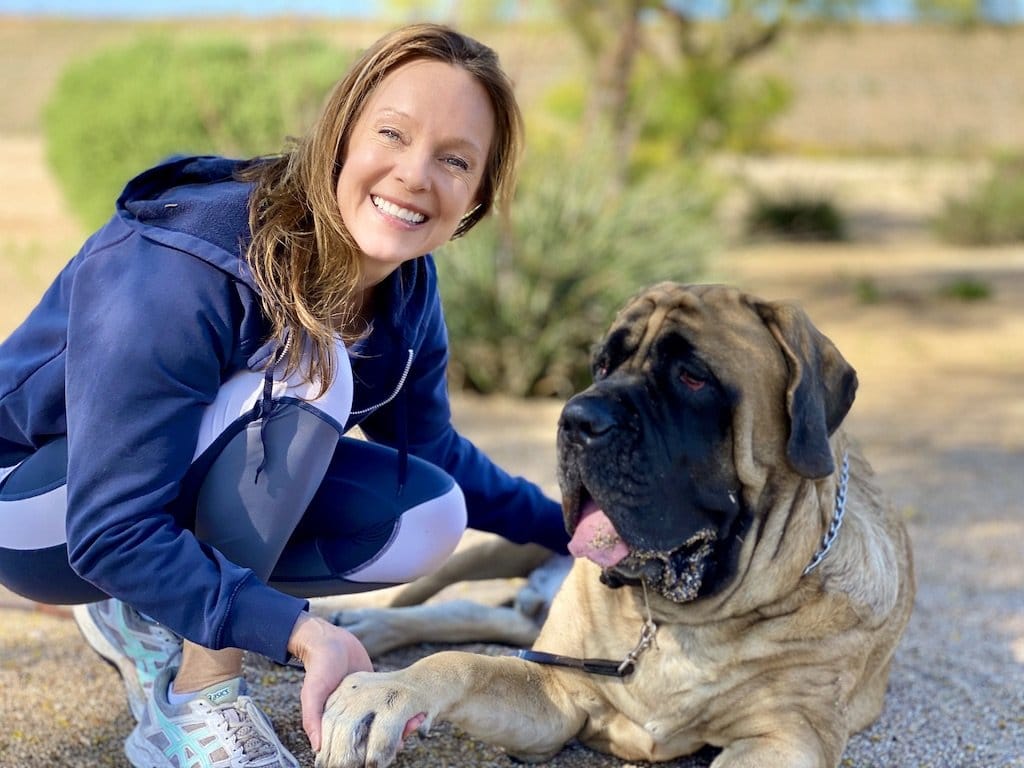
Dog Nails Too Long? The Truth About Why Length Matters

7 Most Common Mastiff Myths: Facts From Life With a Giant
We have done 2 long car trips with our 2 Spanish Mastiffs. San Diego to Seattle, Washington (and back home) and San Diego to Ft Collins, Colorado, then Ft Collins to New Mexico to San Diego. We chose to Air BnB on both of our trips, mainly because our Mastiffs are LGD (Livestock Guardian Dogs) and that comes with a LOT of barking. Since we are country dwellers to begin with, staying in a hotel was just out of the question. Ours dogs are used to quiet and we thought we would be disturbing to the other guests. (They bark at every car they hear drive by our home.)
My recommendation to anyone who chooses to Air BnB with a giant breed is to bring a lot of king sizes sheets. Go to your local thrift store and buy too sheets, if possible. We tossed them over all the furniture in the places we stayed to keep the items free from drool and hair. We made sure to inform our hosts that we were traveling with 2 large dogs. We kept our drive time to 6-8 hours a day, which enabled us to take our time in the morning and during the day, Reading the descriptions more than once of the places we wanted to stay at, taking a look at as many reviews as possible, studying the photos for breakables and going out of our way to clean up after ourselves made a pleasant stay for everyone. I hope in the future we will be able to try hotel stay with our dogs. But in the mean time I highly recommend Air BnB.
I love this article and it had so much good info. We’ve had newfs for years, but after the last one I said that I couldn’t deal with the hair anymore, so we’re on our first mastiff. And we LOVE him. He gets in the car and goes to sleep immediately, tho we haven’t traveled more that an 1 1/2 hour from home, yet.
But I just wanted to comment about the hotels you suggested. Our experience is that very few Hamptons allow pets but almost every Super 8 does. I prefer to stay at Hamptons–just a nicer, all around experience. Also, Super 8s really vary on quality (older or newer, mostly), every Super 8 we’ve stopped at took our dogs.
Leave a Reply Cancel reply
Your email address will not be published. Required fields are marked *
This site uses Akismet to reduce spam. Learn how your comment data is processed .

5 Tips for a Successful Road Trip With Your Dog
O ur family loves to travel. Whether you are traveling out of necessity or for pleasure you may need to take along your pet. Pets of all kinds can enjoy traveling with you, but there are some things you need to consider. Use these tips to make your next road trip with your dog safe and fun for everyone.
Tips for a Successful Road Trip With Your Dog
Acclimate pets to vehicle travel.
Not all pets are going to be eager to spend time in the car. Some dogs and other smaller animals can become very stressed and agitated while traveling in a vehicle.
Instead of surprising your pet with a long journey out of the blue, consider taking a few short trips each week with your pet. They may slowly become more comfortable and confident while traveling. If they don’t, you’ll know ahead of time.
And, if your pet does not take well to traveling, you may consider asking your vet for ways to make them more calm and comfortable when traveling is necessary!
Safety for Everyone
Articles may contain affiliate links. As an Amazon Associate, we earn from qualifying purchases (at no cost to you).
You wouldn’t jump in the car and take off without making sure your toddler was buckled into their car seat, and when traveling with pets you need to take similar precautions. Make sure that your pet is properly confined and strapped into the vehicle .
On short trips it may be tempting to let them run free in the car, but this can be dangerous for everyone. Unsecured pets can be severely injured in an accident, and they can also cause accidents by distracting the driver.
Another concern with smaller animals is that they may become trapped or injured while trying to move around while traveling. No matter how you travel, be sure that you have a safe and secure container suited for your pets size needs!
Potty Breaks
If you’re able to stop to let your pet out frequently to go to the bathroom that’s great! If not, make other arrangements. Make sure that you line their travel container with absorbent pads or other material should they soil it while traveling.
Another concern is that they have plenty of fresh water and food during long journeys. Try to keep them on the same schedule that they have at home to avoid any disruption internally.
Book Ahead of Time
If you’re taking a road trip with your dog that includes stays in hotels, motels, etc. make sure you book beforehand . You do not want to show up with a pet and have no options.
Some hotels will not allow pets of any kind even if they’re in a kennel. Consider calling ahead or booking online to avoid any late night issues or last-minute changes which can be costly and stressful.
The same goes for airline, bus, and train travel. You will most certainly have to make arrangements ahead of time, so plan early whenever possible.
Even when the situation warrants a “freak out” moment, try hard to remain calm. Your pet will feed off of your energy in any situation. If you are upset, chances are they will be too. Keep calm, and work through whatever issue may arise. This will truly make any trip much more manageable for both you and your pet.
Do you enjoy traveling with your pets ? How do you ensure a smooth trip? Leave me a comment below.
_____________________
Also read —
Check Out These Pet-Friendly Hotel Chains Before Your Next Vacation
Free Printable Travel Games for Kids
Get Free Admission to National Parks + Check Out Educational Programs
You can find MomsWhoSave on Facebook , Instagram , Pinterest , and Twitter . Join us for updates.
Don’t miss a thing! Subscribe to MomsWhoSave’s newsletter .
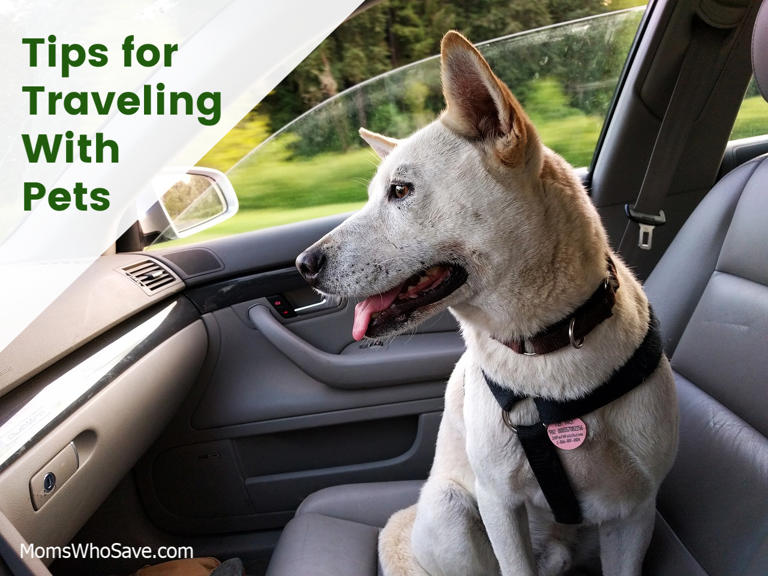
When you use links on our website, we may earn a fee.
Best Dog Crates for Car Travel of 2024
Taking your pup on a road trip can be a fun experience but only if you have one of the safest dog crates for car travel. Even if you’re not traveling cross-country, a crash-tested carrier is one of the most important purchases to keep them safe for long-haul car trips and even a quick jaunt to the vet.
We selected crates and carriers that are crash-tested and certified by the Center for Pet Safety (CPS), a nonprofit that evaluates the safety of pet travel products. To aid in our selection, we also enlisted the guidance of a dog trainer who helped inform us about the importance of pet safety when traveling in a vehicle. Our list of the best dog crates for car travel has something to make every dog’s next road trip a success.
Table of Contents
- Best Dog Crates for Car Travel
- Things To Consider When Buying
- How We Chose
Gunner G1 Kennel »

Crash-tested and certified by CPS
Double-walled
Available in four sizes
Proven to protect pets in serious accidents
Tie-down straps sold separately
Not chew-proof
When traveling with your pet, keeping them safe in the car is the biggest priority. While there are plenty of travel crates on the market, the most effective are crash-tested and certified by CPS. This nonprofit evaluates the safety claims of pet travel products. Passing crash tests is no small feat, and only a handful of products receive the CPS’s seal of approval. One of those products is the Gunner G1 Kennel.
Available in four sizes – though the large size hasn’t been tested and certified by CPS – for puppies to large breeds, the Gunner G1 Kennel has a double-walled design to keep pets safe in an accident. Its double walls also have the added benefit of providing temperature regulation, keeping your pup cool even in hot weather. The crate has built-in pins for tie-down straps to secure the crate in a vehicle, although customers must purchase the straps separately.
Crash-test certification is an excellent feature and something pet parents should prioritize when searching for a travel crate. However, it does come at a cost. The Gunner G1 Kennel is on the higher end of travel crates and one of the most expensive options. Aside from its cost, some users take issue with the crate’s weight, which ranges from 27 pounds for the small kennel to 72 pounds for the large kennel. Sturdiness and durability are important in a travel crate, so we don’t necessarily consider this to be a con. However, a heavy crate can be an inconvenience.
Sleepypod Atom »

More affordable option
Features top and side entries
Available in six colors
Not as much ventilation
Only suitable for pets up to 12 pounds
A budget dog crate for car travel is hard to come by, especially if you’re looking for a crash-tested and certified model, but the Sleepypod Atom is one of the safest options that doesn’t cost a few hundred dollars. This carrier features comfortable bedding for your pet to relax in, is suitable for the back seat of a car, and fits under the seats of most airplanes. The Atom also sports top and side entry points to make getting in and out a breeze for your pet. Plus, like all Sleepypod carriers, the Atom is available in various colors.
A downside of this crate is that it isn’t suitable for larger pets. With a weight limit of 12 pounds, only toy breeds can take advantage of this carrier. However, that doesn’t mean you can’t find a great car restraint for larger pets with a smaller budget. Sleepypod also makes one of the best car seat belts to keep large dogs safe and comfortable in a vehicle.
Sleepypod Mini »

Suitable for puppies and kittens up to 7 pounds
Doubles as a bed
Can fit under airplane seat
Available in nine colors
Some users had sizing issues
Zipper that connects cover to bed can be flimsy
The correct size of travel crate is essential for keeping your pet safe during transit, says Nicole Ellis, a professional dog trainer and pet lifestyle expert for rover.com. When traveling, a dog should touch three of the four walls of the crate or carrier to minimize the chance of movement during a collision. Getting a tiny crate that fits a puppy properly can be challenging, but the Sleepypod Mini is ideal for pint-sized pups with a weight capacity of 7 pounds. Beyond being crash-tested and certified by the CPS, this carrier can be used with cats and allows you to carry your furry friend with you on an airplane. (However, always check individual airline recommendations before flying with your pet.)
Regardless of how you’re traveling, this carrier will keep your pet cozy, comfortable, and safe. The included bed can be used as your pup’s primary sleeping place when not jet-setting around the world, which may help acclimate your puppy to being contained in a small carrier during travel times.
While the Sleepypod Mini suits most teacup pups, some users struggled to get the correct fit, as Sleepypod also makes the Mobile Pet Bed, a medium-sized equivalent of the Mini. We recommend measuring before purchasing to ensure you get the right fit for your four-legged friend.
Away The Pet Carrier »

Compact but safe for smaller pups
Clip to secure your pet within carrier
Airline-approved
Removable bedding
Only suitable for pets up to 18 pounds
Not as soft as some soft-sided carriers
Small breeds can be easier to travel with because they don’t take up as much space, but the travel is only simple if you have the right gear. The Pet Carrier by luggage brand Away is the ideal soft-sided crate for transporting small dogs in a car. Its features include top and side entry points for your animal, removable bedding for comfort, a retractable mesh privacy screen, and a collar clip to keep your pup from springing out of the carrier when opened. It also has a firm bottom, which stops the carrier from folding during transit – a feature Ellis says is important to prevent your dog from sliding around in the crate.
Car travel is a breeze with this carrier: Just secure it to your vehicle’s back seat via a belt around the headrest. Traveling by air with your pet? This carrier can sit snugly on top of your luggage , securing to the handle of any Away suitcase via a trolley sleeve. (For travelers who do take their pups on planes, note that while the material is soft, some users found it wasn't flexible enough to fit under every airline seat.) The downside of this carrier is that it’s only suitable for small breeds weighing less than 18 pounds, so medium and large pets are out of luck.
Lucky Duck Lucky Kennel »

Suitable for pets up to 110 pounds (large size)
Drainage holes for easy cleanup
Lightweight
Bed pad sold separately
Finding a dog crate for car travel that suits big breeds can be tough, but Lucky Duck makes one of our favorite kennels ideal for medium to large dogs. With a capacity to hold pups as big as 110 pounds, the large version of the Lucky Kennel can keep up with large dogs without weighing you down. Unlike most crash-tested travel crates, this kennel is lightweight at only 45 pounds, making it much more accessible to lift in and out of a vehicle. Another nice feature is its drainage and ventilation holes. The drainage holes are excellent to have in the event of a potty accident, as any liquid in the kennel is directed to the drainage holes via the slightly pitched floor of the crate .
The drain holes are a nice plus, but they make it difficult to place a bed within the crate. As such, Lucky Dog offers its own bed to fit inside – a nice-to-have feature to ensure your pup’s comfort during travel. However, if you want to purchase the bed pad for your dog, you’ll have to do so separately. Lucky Dog also requires the separate purchase of ratchet straps – a type of restraint that keeps the crate tied down to a vehicle – instead of providing them with the kennel. Remember this when purchasing this crate because Lucky Dog kennels are only crash-tested and certified by the CPS in combination with these tie-down straps.
Paravel Cabana Pet Carrier »

Smaller footprint than most carriers
Folds flat for easy storage
Made from recycled materials
Only fits pets up to 20 pounds
Some users found shoulder strap held up poorly
The best dog carriers for small cars won’t take up too much space in the back seat of a vehicle, and the Paravel Cabana Pet Carrier fits the bill. At just 11 inches long, this soft-sided carrier can easily fit within the back seat of any small car. It’s also less than 1 foot high, easily letting you see over the top of the carrier. However, the small footprint won’t squeeze your pet.
The Cabana Pet Carrier is more than 20 inches wide, which makes it easily able to hold pups up to 20 pounds. Another handy space-saving element of this carrier is its ability to fold completely flat so that when your pet isn’t in the vehicle with you, the back seat can be reclaimed for passengers or cargo.
While this crash-tested and certified carrier is a safe, space-saving option for small cars, a few users found it wasn’t the best option as a shoulder bag, as the shoulder strap broke for some buyers.
Cabela's GunDog Intermediate Dog Kennel »

Tie-down strap kit and safety bar included
Nonslip rubber feet
Only one size
No included crate pad
When using a crash-tested crate in a large vehicle such as an SUV, it’s important to tie it down using straps or bolts to ensure the kennel doesn’t shift during transit. However, most crate manufacturers don’t include these tie-down straps with the purchase of a kennel, and these can often pack on an additional hundred dollars to an already expensive purchase. The Cabela’s GunDog Intermediate Dog Kennel is an excellent option for those who want the tie-down straps included to keep their pup safe in the back seat or trunk of an extra-large vehicle. The included tie-down strap kit can secure this crash-tested crate to most large cars, and the rubber feet offer additional nonslip reinforcement for more stability.
The kennel allows users to choose on which side they want the door to open – a handy feature to ensure ease of use. The downside of this crate is that it’s only available in one size, leaving few options for dogs between a medium and large size. It also comes as is, meaning no crate pad or bedding is included for your pup.
The Bottom Line
Choosing the best dog crate for car travel is a weighty decision, and you should always keep your pet’s safety top of mind. The good news is there are many excellent crates and carriers available that are crash-tested and certified, providing your pup with a safe and comfortable place during a road trip.
Our best overall pick is the Gunner G1 Kennel, which has some of the best features we’ve seen on a travel crate. Its double-walled design reinforces the kennel's safety while keeping your dog cool on hot days. It also has one of the most diverse size ranges available for crash-tested crates, making it suitable for small pups and large breeds alike.
Things To Consider When Buying Dog Crates for Car Travel
Safety Certifications: The best dog crates for car travel are crash-tested by the CPS. The pet industry has few regulations for travel products, and some brands may make unjustified safety claims. Even with products certified by the CPS, remember that certifications vary, and a product may not be approved for use with dogs weighing more than a certain amount or without additions such as tie-down straps.
Size and Weight Capacity: Choosing the correct size kennel is vital for keeping your dog safe during travel, whether traveling with your pet in a car or on a plane. There’s no one-size-fits-all crate, so remember to measure your pet and follow the measurement and weight guidelines provided by the manufacturer to achieve a good fit.
Ellis says that while we might have an instinct to buy a bigger crate to give our pups more space to lounge, it’s important to hold off on this impulse. “[O]ur dogs should be snug. So when thinking of a [crash-tested crate], our dog should really be touching three of the four walls [when they] lay down,” she says. Ellis also encourages pet parents to avoid extra space within a crate because that’s where the dog will move during a collision.
Material: Each dog kennel is constructed differently, but there are some materials to look for when considering dog crates for travel. Ellis likes soft-sided carriers with a firm bottom that ensures a pet stays stable during transport. She also says that ballistic nylon – a material that’s resistant to water and chew damage – is great.
Hard crates tend to be made of materials like rubber or rotomolded walls. Rotomolding is a type of plastic construction, and its benefits include being durable and thick enough to withstand excessive force, such as the type that would be exerted in a car accident.
While crash-tested crates vary in material, Ellis notes that one material pet parents should avoid is wire, specifically in wire-style crates. These crates are acceptable for at-home use but not for travel. Ellis says a wire crate may break into small pieces and impale your pet in the event of a collision.
Vehicle Compatibility: Most crash-tested crates suitable for car travel can be used in any vehicle. However, measure the back seat of your car to ensure that the crate will fit. Some crates intended for larger dogs may not fit in the back seat as easily as smaller soft-sided carriers. These crates may instead be used in the trunk of a vehicle, although they usually require tie-down straps to keep them in place. Ellis says it’s important to check your specific vehicle’s attachment points if you opt for a crate that requires latching in that way.
It’s also vital to remember that while a crate may sit in a vehicle's back seat, trunk, or bed, it should never be placed in the front seat. Ellis says regardless of what crate or carrier your pup is in, your dog can still be injured by an airbag if traveling in the front seat of a car.
How We Chose the Best Dog Dog Crates for Car Travel
At U.S News 360 Reviews, our editors and contributing writers evaluate products based on research, expert guidance, and our own experience as professional product reviewers. Our contributing writer consulted the CPS’s list of crash-tested and certified dog crates and carriers to find the best options for dogs big and small. We also consulted Nicole Ellis , a certified professional dog trainer and pet lifestyle expert with rover.com to understand how to keep pets safe during car travel.
WHY SHOULD YOU TRUST US?
Sophia Carlisle , the author of this piece, has covered pet products for Business Insider as a fellow and, prior to that, fostered dogs and cats for years. She has tested dozens of dog products with her rescue pit mix Lyla, including harnesses, food, and leashes. For U.S. News 360 Reviews, Sophia has covered some of the best products for pups, such as the best dog harnesses and slow feeder dog bowls .
The most important safety feature of a dog crate for car travel is that it’s crash-tested and certified by the Center for Pet Safety (CPS). Other safety features to watch for include crates and carriers with tie-down straps. Some crates for large dogs are only certified by the CPS with tie-down straps, which help to keep a large crate stable during transit.
Regardless of which CPS-certified crate you choose, Ellis, a certified professional dog trainer, says it’s always essential to restrain your pet in a vehicle. Even the most well-trained dog can cause a distraction, leap out of an open window, or become a projectile in the event of an accident, so keeping them secure during travel is necessary.
If a crate or carrier passes crash safety standards set by the Center for Pet Safety (CPS), it receives a rating between 1 Star and 5 Star. The very best dog crates for car travel receive a 5 Star safety rating.
If a brand or product claims to be certified by the CPS, check directly on the website to ensure it has passed crash testing. Some products have undergone crash testing but have failed or had their certification revoked. If a crate or carrier isn’t crash-test certified by the CPS, it’s unsafe to use with your pet for car travel.
Finding the correct size crate for your dog can be tricky, so take careful measurements of your pup and compare them with the weight and length measurements provided by the brand. Ellis, a pet lifestyle expert with rover.com, says that dogs should fit snugly inside their crates, so avoid opting for a larger size than your dog needs.
Compatibility with your vehicle is also important to consider when selecting the best travel crate for your pup. Ellis says it’s best to place the crate in the trunk or back seat of the car. Ensure you check whether or not the crate requires tie-down straps and if those straps can be attached to the latch points in your vehicle.
About Our Team

Sophia Carlisle
Contributor

Kayla Randolph
Associate Editor
U.S. News 360 Reviews takes an unbiased approach to our recommendations. When you use our links to buy products, we may earn a commission but that in no way affects our editorial independence.

Road Trips and Car Travel With Cats
Author: LeeAnna Buis, CFTBS, FFCP
Published: April 17, 2024
Our mission is to help save dogs' and cats’ lives through our educational content. To support our efforts, this page may contain affiliate links . We earn a commission for qualifying purchases – at no cost to you.
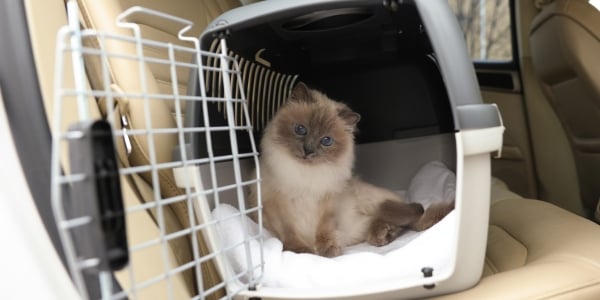
During the summer months and around the holidays, many of us head out on road trips and consider taking our feline family members along.
Summer is also a peak time for relocating across town or across country.
The problem is that most cats don’t feel safe in the car. They may cry or yowl, hide in their carrier, and even soil due to fear. That means an unpleasant trip for them and you.
It is possible to help your cat feel more secure in the car. Some may even learn to love it. We’re going to walk you through the steps to desensitize your cat to being in the car.
We’ll also recommend travel items to bring in the car and for a hotel stay so that you both have a safe and comfortable trip.
Skip to section:
- How to get your cat comfortable with car travel
- How to use a litter box when you travel – and will your cat use it?
- Where to stay when traveling with your cat and what to consider
- Special travel considerations for sick cats
- Be prepared for emergencies while traveling
Getting Your Cat Ready for a Road Trip
Step 1: get your kitty feeling comfortable in their carrier..
If they're going to ride in the car, like you, they’ll need to be safely “buckled up” to protect not just them but everyone in the car and on the road.
After all, unrestrained cats can be a distraction, interfering with your ability to steer or brake, and even become a dangerous projectile in the event of a crash or sudden stop.
What if your cat is wearing a harness and leash? If the car is moving, I still say keep them secure in a carrier. If you want to let them stretch their legs on the harness and leash while the car is stopped and windows are up, go for it. Just keep in mind that you’ve got to get them back in the carrier when you start moving again, and they may not love that.
It could be less stressful for everyone to stick with the carrier in the car and try the harness and leash INSIDE your hotel or destination. More on the dangers of letting your cat out of the car on their harness and leash later in the article.
So, your first step starts well before your trip. Spend some time training your cat to love their carrier – we have an article on that process – before the big travel day arrives.
Don't have a carrier for your cat yet? Check out our carrier recommendations, including carriers that are crash-test certified . If your cat is going to be spending a lot of long hours in the car, you may opt for a larger carrier than normal. We cover that, too. Just keep in mind you’ll want that carrier sooner rather than later, so you can use it during the pre-travel training.
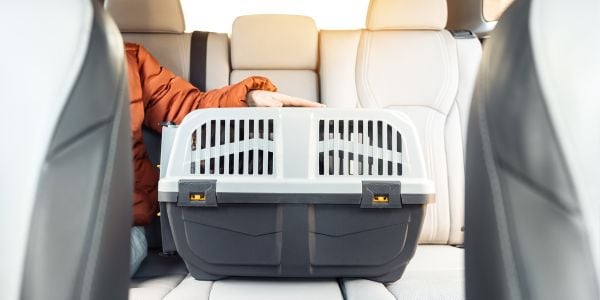
Step 2: Get your cat feeling comfortable in the car.
Now that your kitty feels better in their carrier, it’s time to help them feel comfortable in the car. Here are some steps to help you do that.
Pro Tip: Car acclimation is best done with two people … one to drive the car, the other to pet, praise, and treat kitty. It can be done with one person, too, but very carefully.
You’re going to do short sessions in the car – your cat dictates how long the sessions will be. The number of sessions depends on how quickly your cat gets comfortable. The main thing is that you don’t want to push your cat past their comfort zone. Your cat should always be calm.
You might be thinking that even if your cat is scared, leaving them in the car in spite of their fear will eventually show them they don’t have to be afraid. Nope! That’s not how cat brains work. Instead, think of it as starting at a really low intensity so your cat doesn’t have to be scared. As they’re ready, you slowly turn up the intensity.
If you turn it up too far and they get nervous, just end the session and lower the intensity for the next session.
Show them there’s no reason to be afraid because you’re not going to push them too far. And they’re getting good things through the entire process, so you’re actually turning a scary thing into a positive thing.
Take your cat out to the car in their carrier – covered on three sides with a towel or blanket for security.
With the car parked and not running and the doors and windows closed (weather permitting), sit in the back seat with your cat in their carrier. Partially open one of the carrier doors if you can do so without your cat trying to get out.
Then, make good things happen. Give treats (make sure it's a treat they love ), pets, praise, and show them this is a positive experience. Do this for just a few minutes (or longer if your cat is really enjoying it). Then, take them inside and end with treats and love. You’ll continue these sessions, gradually making them longer as your cat is comfortable, until your cat seems nice and calm, spending time in the car while in their carrier.
Next, you’ll turn up the intensity a bit by starting the car. Make sure the radio is off or very low (cats find classical music calming). And repeat the previous step.
Spend a few minutes in the back seat making good things happen for your cat while the car is running. If the engine really scares them, keep it short — just 1 minute with some treats. Again, you can gradually increase the length of time your cat is in the car, getting good things while the engine is on.
Caution: If your car is parked in your garage, either open your garage door or move your car out of the garage. Carbon monoxide is very dangerous for both of you!
Once your kitty is doing well with the car on, it’s time to turn the intensity up again. Time for a short drive.
Note: If they’re too nervous to eat treats, they’re probably not ready for this step. Back it up and spend more time on the previous steps.
It may just be pulling out of the driveway in the first couple of sessions. That’s just fine. You’ll work up to longer drives. And your cat will learn that being in the car doesn’t mean going to the vet. Never push these drives further than your cat is comfortable with. Also, be sure to drive calmly and go easy on the gas pedal and brakes.
Since each cat and each situation are different, it could take anywhere from a few sessions to several months for a cat to feel calm during car travel.
Car Travel Logistics With Cats
Will a cat use a litter box in a car.
Jumping right down to “business,” … depending on the duration of your travel adventures with kitty and where you’re winding up, you’re going to have to deal with litter box accommodations. This is the case both when you’re on the road and when you get to your hotel or destination.
Just because you give your cat access to a box doesn’t mean they’ll use it, especially if they’re nervous.
Cats don’t like to eliminate when they feel unsafe. They'll likely choose to do their business once you get to your destination. It’s nothing to worry about unless they go more than about 24 hours without peeing. At that point, call your vet and see what they suggest.
When I moved with my cats, and we had 8-hour days in the car, they held it all day and most of the night.
If they’re willing, you can help your cat take care of business on the road in a few different ways.
First, get them a good travel litter box. You’ll use the same litter they use at home, and (perhaps) even a litter attractant.
A good travel litter box will be large enough for your cat to fit in yet small enough to fit in their carrier. It will also be waterproof and sturdy. You can use a small plastic litter box or there are also disposable litter box options available.
We have travel litter box and large carrier recommendations here .
Set the travel box up in your home as an alternate option before your trip so your cat can get used to it. Don’t replace your regular boxes with the travel box, though. Have all options available.

If Your Carrier Can't Fit a Litter Box
Letting your cat out of a carrier to use a box placed in the car isn’t ideal. I actually rescued a kitten from the roadside once without a carrier. That kitten ended up inside my dashboard. So, if you think your cat can’t hide in dangerous places within the confines of your car, you’re wrong.
If your trip isn’t too long and their carrier isn’t large enough to fit a litter box, you can go with a larger litter box that they can use at the hotel or destination.
Note: If your cat uses the smaller travel litter box on the road, don’t consider replacing your larger boxes at home. Tiny boxes are not ideal and don’t fit your cat’s instinctual needs. They’re not a good long-term option. They’re the lesser of two evils when you’re traveling — the other evil being your cat peeing in the carrier.
Should You Let Your Cat Go Outside?
My vote is no unless you have a cat who is completely comfortable with travel, being in new places, and seeing and hearing strange people, pets, and sounds.
The first concern is that no harness is 100% escape-proof. If your cat gets scared, they can and will get out of that harness and take off.
Second, they’re going to be surrounded by newness — smells, sights, sounds, things you can’t control. Even if they don’t get scared, the idea that you’ll be able to get them to focus on peeing at that moment isn’t very likely. Cats don’t pee and poop on cue the way dogs can. It’s safer to keep them in the car.
What Do You Do With Your Cat When You Have to Go?
If the temperatures aren’t too hot or cold to leave your cat in the car, just leave them in their carrier and go about your business. Just make it quick!
Cover three sides of the carrier so they feel more secure and are less of a target for theft. Use a light cover (blanket) for warm days and a heavier cover for cooler days. Both should still allow for airflow.
It's usually safe between about 40–65 degrees F (4–18 degrees C), though every cat and every situation will be different, so use this as a rough guide.
Talk to your vet about more specific safe temperature ranges for your cat based their age, breed, and any chronic medical conditions they may have or medications they may be on. If the temperatures are outside of that range, you’re going to have to take some precautions when making your own pit stops that take you away from your car.
In some cases, it may be possible for you to bring your cat into the bathroom with you in their carrier.
Quick tips if you must leave your cat in the car
- Some cars now have pet mode , like Telsa, Chevrolet Bolt, Rivian, and other Form and BMW models. Caution: If you decide to leave your engine running in a gas-powered car, be aware that car engines and air conditioner compressors can and do fail, leading to excessively hot temperatures building up in the car quickly. Similar malfunctions can happen in EV cars, too, and if the battery dies, the cooling system will shut off.
- If leaving your car and running the A/C or heat isn’t possible or practical, pre-cool or pre-heat your car the best you can by running the system on high for several minutes before you get out. Then, be quick!
- Move their carrier from the back seat to the back floor. Since hot air rises, it should be a bit cooler on the floor. There are fans made for keeping pets cool in the car , but we really can't overstate this: pets should never be left in a closed car, even in the shade or with cooling devices. In this case, it's simply for a quick amount of time.
- Park in the most well-shaded spot you can find.
- Park with your front windshield facing the sun and put up a reflective windshield sun shade like this one .
- Cracking the windows doesn’t make a huge difference, but it also doesn’t hurt (so long as your cat is securely in their carrier and there’s no danger of someone reaching into your car and stealing them and your stuff).
- Make sure you leave your cat plenty of water.
- If it's cold outside, add a warm blanket or fleece to your cat's carrier for them to snuggle up. If it's sunny, move the carrier to a sunny spot in the car.
- Be as quick with your stop as possible. If it’s a food break, get it to go from a drive-thru and eat it in your car.

Where to Stay When Traveling With Your Cat
Road trips and long-distance moves with cats will often require hotel stays. But not all hotels, motels, or rentals are pet-friendly. And just because they say they’re “pet” friendly doesn’t mean they’re “cat” friendly. So, plan ahead. Call to confirm they take cats and reserve the room or rental in advance.
Pro Tip: “Pet-friendly” means other pets likely stayed in that room recently! Not everyone uses flea and other parasite protection on their cats and dogs. Make sure your cat is protected before heading out on the road! Learn more about safe and effective parasite prevention for your cat , and talk to your veterinarian.
What to Do With Your Cat in the Hotel or Rental
Once you’re out of the car, you’re faced with a question. Do you let your cat out in the hotel or rental to explore, or do you keep them confined? There’s a lot that goes into the answer. Here are some things to consider:
Is your cat relaxed in new places? Being in their carrier in the car is different than being in a completely new room with smells and places to hide.
Does your cat chew, climb, or otherwise destroy things? I couldn’t let my cat into a new space without putting cord protectors on every cord, or they’d be chewed in a matter of minutes.
Are there hiding places you can’t get to or unsafe spaces your cat can reach? The last thing you want is your cat stuck in the vents of a hotel or squeezing through that tiny hole in the wall behind the fridge in your rental. It happens.
Is it clean? Not to get gross, but you may not want your cat rolling around on a motel floor or getting under the bed.
Is it safe from toxins? There could be rodent traps or pest poison in the room that could be dangerous for your cat.
Is there any chance they’re going to pee on something? Yep, it happened to me on my road trip. My cat was stressed and peed all over the fabric carrier, and it soaked through to the bed. Talk about embarrassing. And there's sometimes an additional cleaning fee for mishaps like this.

Confinement for Safety
I like the idea of bringing along a much larger, collapsible pet pen for overnight use. They’re plenty big enough for a good-sized litter box and everything your cat needs. There’s even room to play. Just make sure you get one with a top, or your cat will jump right out.
If you want to let your cat out on a harness and leash or heavily supervised, you have the option. But you’ve got the pet pen as a backup just in case you need it. You never know how a cat is going to react in a new space, especially when you’re sleeping or in the shower and they’re unsupervised. Here are a few great options:
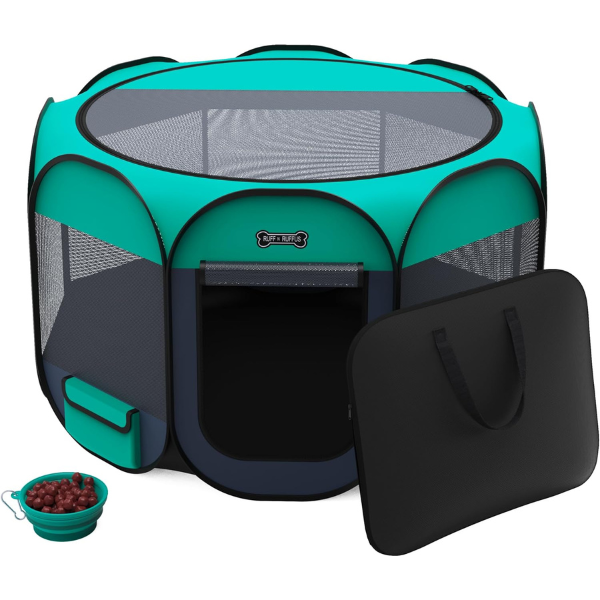
Available at:
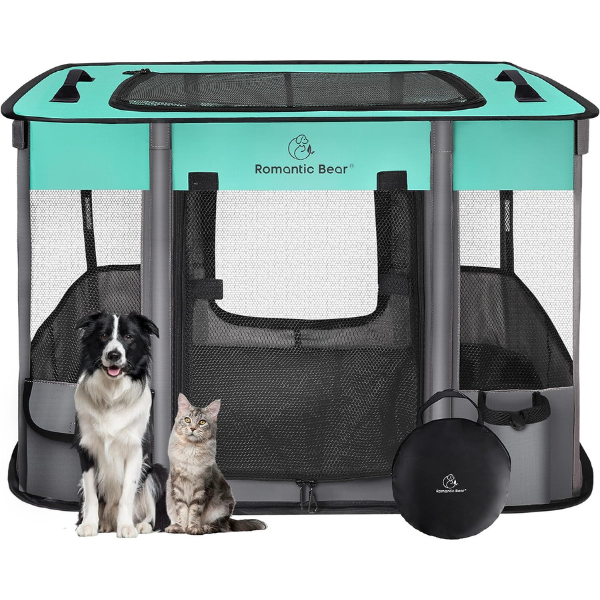
Travel Considerations for Cats With Chronic Health Issues
Before striking out on the road for a long trip or moving with a cat who has a chronic medical condition or is on long-term medications — like diabetes , hyperthyroidism , chronic kidney disease , or heart disease — there are a few precautions you should take.
- Make sure your cat had a recent (ideally within the past month or so) exam with their vet. You’ll have more peace of mind knowing that their condition is as well managed as possible and that they’re as healthy as can be before hitting the road with them. Your vet will also have recommendations for making their trip as comfortable and safe as possible.
- Bring a copy of your cat’s medical records with you! This should include recent exam notes, laboratory test results, and medication/supplement names and dosages. Your vet can often print these out (with enough notice), and they may even subscribe to an app or other service that allows you to keep updated copies of such records with you always on your phone. This will make visiting another vet on the road much easier.
- Especially for cats with known chronic health concerns, it’s a good idea to know about a few vet hospitals along your route and in the area of your destination before you head out. See the vet locator tools listed in the next emergency section to start searching.
- If your cat is on a special prescription diet, like for their kidneys, make sure to stock up on it from your vet before leaving. It’s not always easy to get prescription diet refills when you’re away from home. You should take enough with you to last for the duration of your trip PLUS an additional (at least) 2 weeks.
- Similarly, be sure to stock up on your pet’s medications and supplements, as well as any supplies you need for them. This would include needles and a travel-sized sharps container (or larger needle container ) for safely disposing of and storing used needles for diabetic cats, pills for blood pressure, overactive thyroid, and any other chronic medications. Again, you should take with you enough to last for the duration of your trip PLUS an additional (at least) 2 weeks.
- If your cat is diabetic and on insulin, don’t forget a cooler and ice packs to help keep it cool while in the car. You can also look into a cooler that plugs into your car’s cigarette lighter or USB, like these: Cooluli Mini , Wagan 14L , or the Wagan 24L (which could even store some of your food and drinks for the road). Pro Tip: Depending on the type of insulin your cat is on, you may be able to get an insulin “pen” that may be more stable outside of the fridge and easier to administer to your cat. It's still advisable to use a cooling case for the pens . Talk to your vet to see if an insulin pen is an option for your cat — it isn’t for all cats, but if it is for yours, it could be a great travel (and even long-term) solution for you.
Emergencies on the Road With Your Cat
It’s a good idea to plan ahead and map out a few 24-hour Emergency Clinics on your route, just in case. Try this vet emergency locator .
Have your hometown veterinary clinic number handy, too. For less serious issues, call them first. They may be able to give you advice or let you know if it’s a true emergency.
Make sure you have a card in your wallet or attached to your cat’s carrier with your cat’s name, the number where you can be reached during travel, and an emergency contact who is not traveling with you. If your cat has medical issues, you should list those as well or the contact info for your veterinary clinic. If there’s an accident, your car is stolen, or something happens where you’re separated from your cat, emergency services will have options.
I just got this great set for myself (featured below). The keychain says “pet home alone,” with instructions to look in your wallet for a card with emergency contact info. It’s meant to notify emergency services if you’re in an emergency situation and someone needs to care for your pet at home. In this case, you’d just include a note on the card that you’re traveling with your cat in the car.
It’s also vital to ensure your cat is microchipped and the contact information is up-to-date (including a way you can be reached on the road).
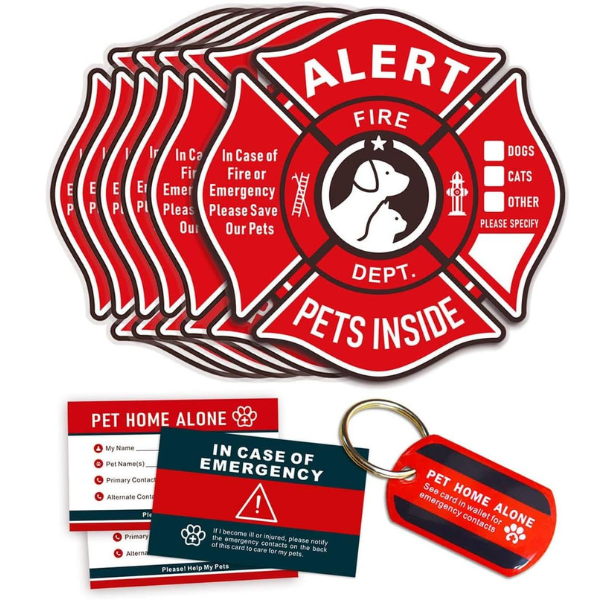
First Aid on the Road
Consider putting together a pet first-aid kit for your car. Here's a shopping list of first-aid essentials . Look for the icon of a little car 🚗, as it's these products that are the most essential in a smaller, travel-sized first-aid kit.
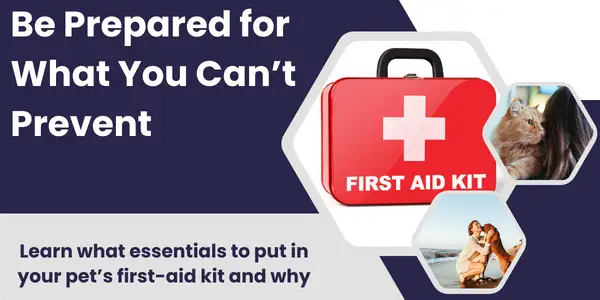
We encourage you to leave a comment below if you’ve got any tricks, tips, or products you’ve used that made car travel with your cats easier. Best of luck on your travels or your move. Have fun and be safe!
About the author

LeeAnna Buis, CFTBS, FFCP
LeeAnna Buis has adored cats her entire life and thought she knew them inside-out and sideways. But it wasn’t until she worked with a feline behavior consultant that she fully understood how incredible, complicated, and inspiring cats really are. Literally, that day, she made a career change knowing she wanted to give other cat parents the same experience of truly “seeing” and appreciating their cats. Now, she works virtually with cat parents all over the world through Feline Behavior Solutions and Preventive Vet.
LeeAnna earned her certification through Animal Behavior Institute, earning the CFTBS designation. She is a certified Fear Free® trainer (FFCP), a training professional member of the Pet Professional Guild (PPG), and a member of both the International Association of Animal Behavior Consultants (IAABC) and Cat Writer’s Association (CWA).
More about LeeAnna Buis, CFTBS, FFCP
Related Articles

7 Best Calming Treats for Dogs That Need Some Relaxation
Ease your pet's travel stress, separation anxiety and beyond.
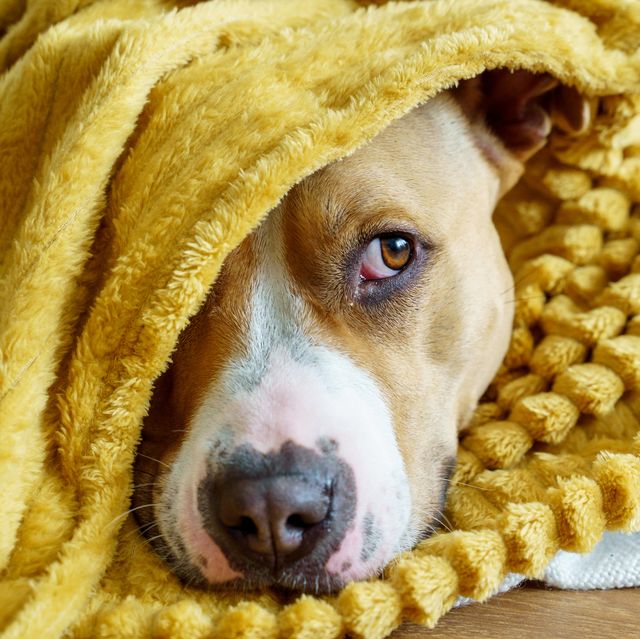
We've been independently researching and testing products for over 120 years. If you buy through our links, we may earn a commission. Learn more about our review process.
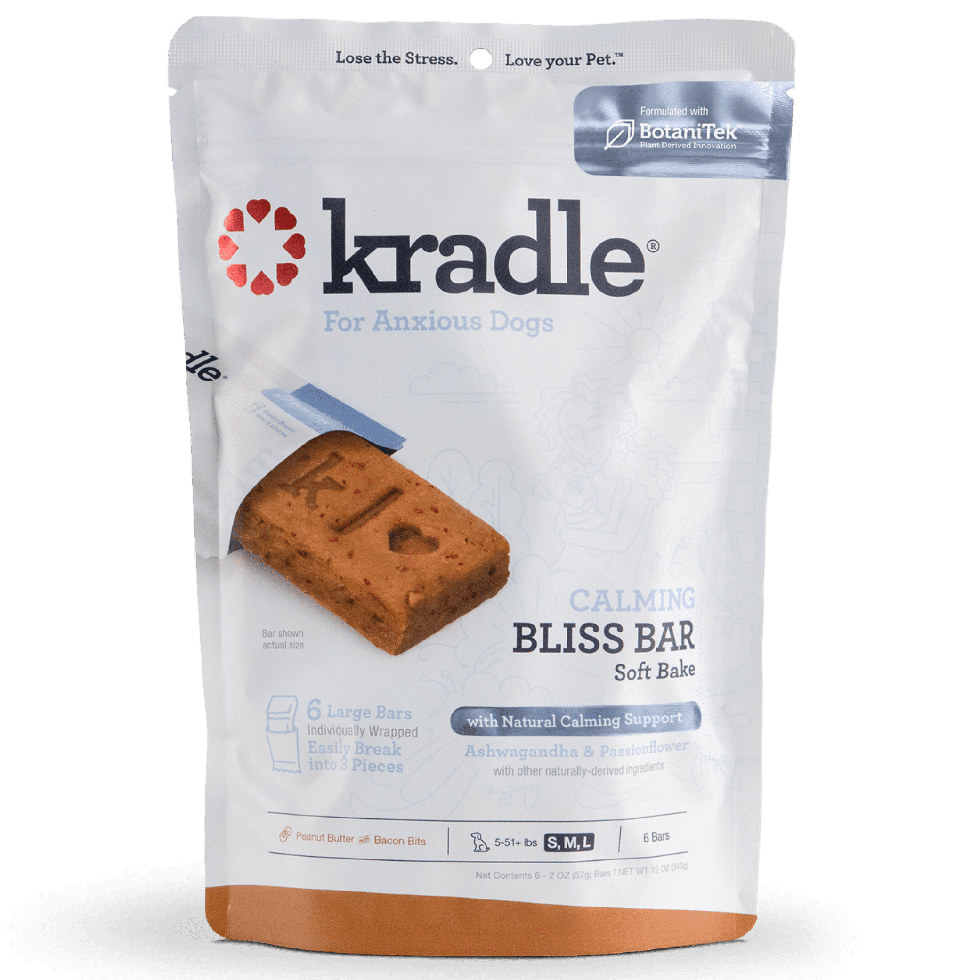
Best Overall
Kradle calming bliss bars.
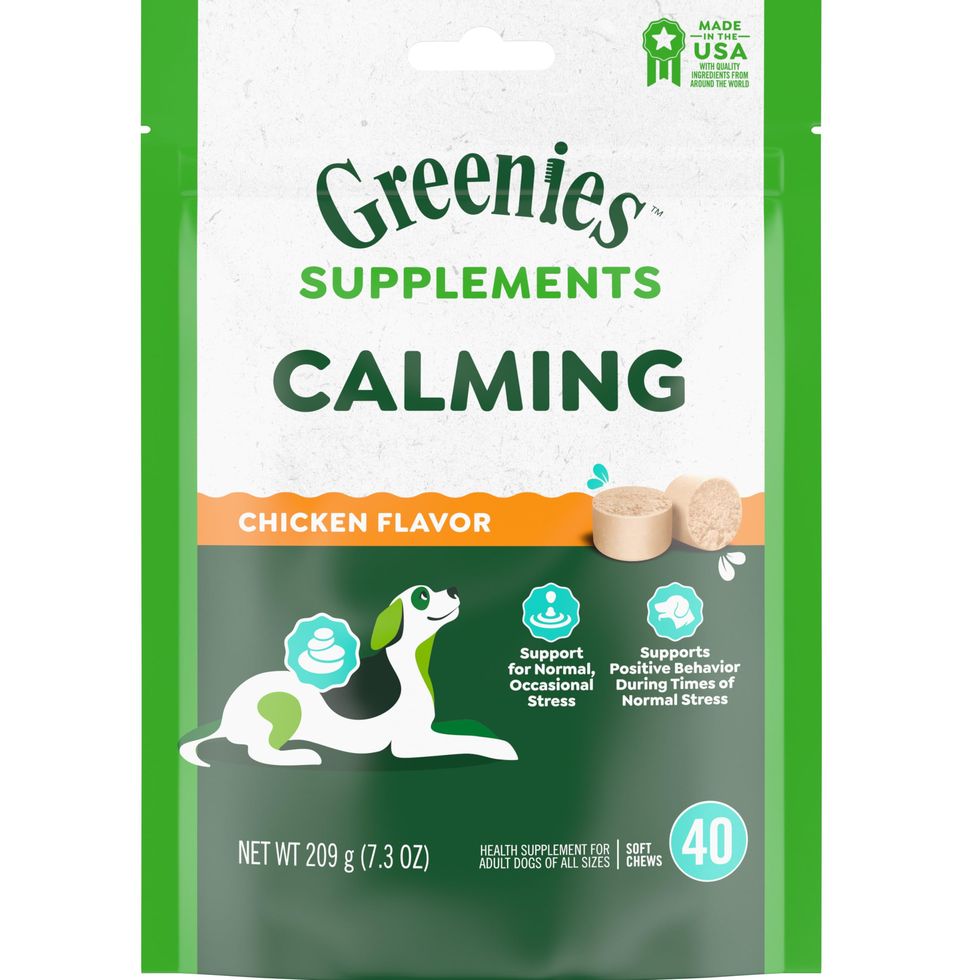
Greenies Calming Chews
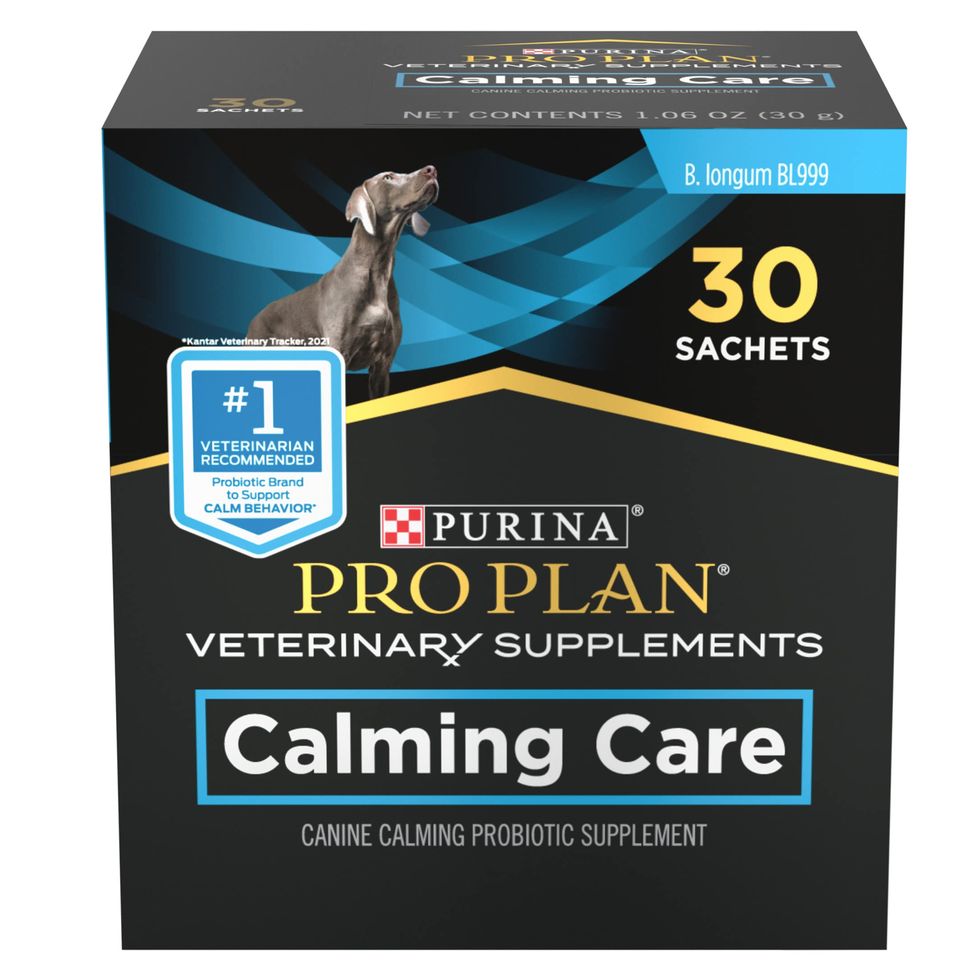
Best for General Anxiety
Purina pro plan calming care.

Best for a Stressful Event
Vetri science composure pro.
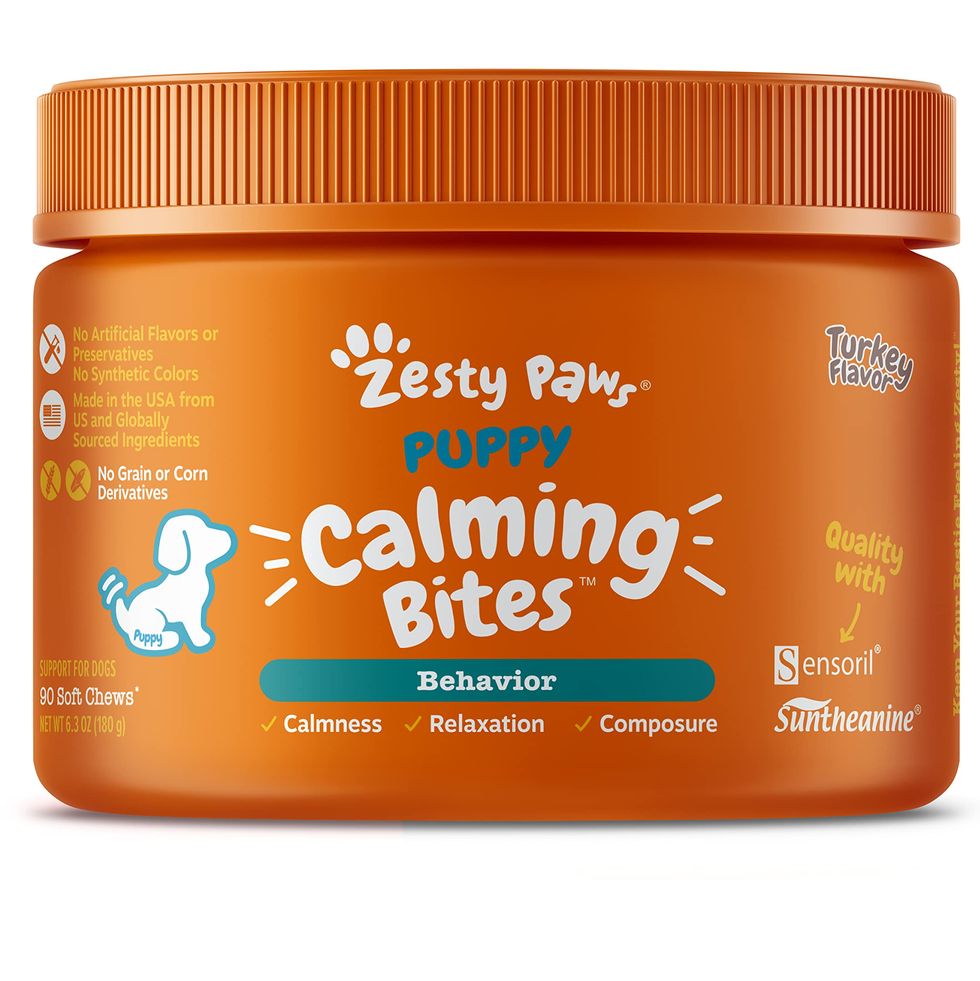
Best for Puppies
Zesty paws calming bites.
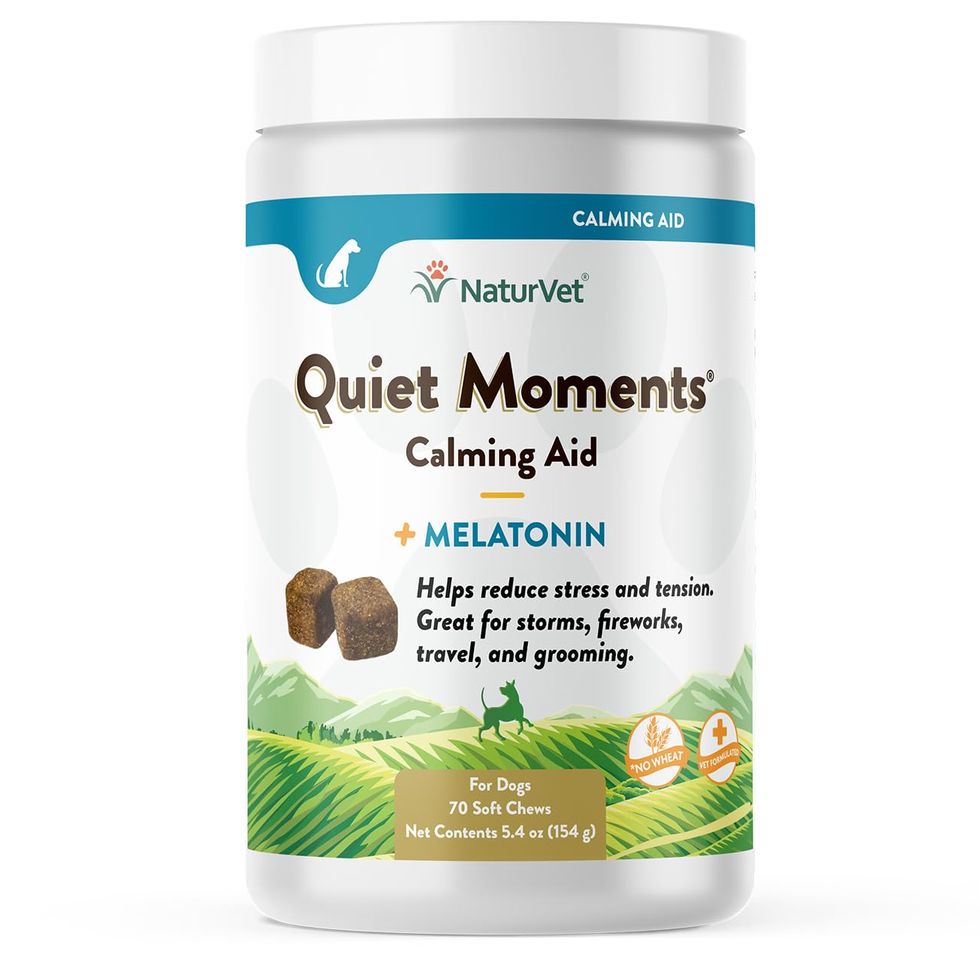
Best With Melatonin
Naturvet quiet moments.

Redbarn Bully Springs
To find the best calming treats for dogs, we sought the advice of Dr. Hammond and Lisa Lippman, D.V.M. , a veterinarian and director of virtual medicine for Bond Vet , asking them to weigh in on the ingredients they recommend for canine patients. Note that our list omits CBD and hemp dog treats , as our GH Institute nutrition experts don't yet believe there's enough clinical research to recommend them for dog anxiety. While there is some research showing CBD can help dogs with pain, Dr. Hammond says that she recommends using it "with caution and after consultation with a veterinarian." In general, it's good advice to speak to your veterinarian before feeding any dietary supplement to your dog .
Kradle is Dr. Hammond's top choice for calming dog treats. "It incorporates natural ingredients such as passionflower and L-tryptophan [an amino acid], which have been shown to have calming effects on dogs, " she said. The brand's soft Bliss Bars are in a dog-pleasing peanut butter-bacon flavor.
The brand suggests that you give a serving before a stressful event such as you leaving for work (separation anxiety is real!), a thunderstorm rolling in or a planned car ride. These can get pricey, especially if you have a big dog or intend to use these daily. For dogs who like to gnaw, the brand also makes hard chews .
Greenies chicken-flavored calming supplements has the only under-$20 pricetag on our list, and it's also an easy brand to find in many supermarkets, pet stores and mass merchants. The brand touts it for use in times of occasional (but normal) canine stress based on its lead ingredients, L-tryptophan and L-theanine (another amino acid), which may help reduce anxiety and stabilize mood , respectively.
These are relatively new for Greenies so there's not as many online reviews to read, but it's is a trusted brand that also makes some of our favorite cat treats .
Purina formulates this daily probiotic supplement for dogs that display general anxiety in the form of pacing, spinning, whining and/or barking. The brand says its proprietary strain of probiotics can help calm your dog, but there is no clinical study on it. We like that the powder is simple to sprinkle over your dog's regular food.
The brand cautions that it might take up to six weeks to see results, which can feel like a long stretch to dog owners, but some online reviewers report seeing much faster improvement. If you just want to calm your dog in a one-time stressful situation, such as a vet visit, you might want something more fast-acting.
Composure is a brand that Dr. Lippman trusts, and these chews are marketed as a way to calm a dog for a single stressful event that pops up from time to time, such as the need for a nail clipping or grooming session, fireworks or if you hear a thunderstorm rolling in.
Vetri Science says Composure will start working in a half hour, so you don't have to wait for weeks to see a behavior change — but these are not meant to be daily supplements, just as needed during stressful events. Like others, its powered by L-tryptophan and L-theanine, but the first ingredient is actually thiamine, a B vitamin, which, when deficient, can affect a dog's nervous system .
If you have a hyper or anxious puppy, this blend may be for them, made for a dog from 8 weeks to 12 months old . It uses chamomile and passionflower, two of the ingredients recommended by Dr. Hammond, plus other plant-based ingredients such as valerian and ginger. The small, soft bites are turkey flavored. Zesty Paws also makes a peanut butter flavor for fully grown dogs, and the supplements have more than 14,000 five-star Amazon reviews.
The right dose of melatonin can make an animal sleepy , so if that's what you're hoping to achieve — your dog napping in the car instead of whining at the window, or resting sleepily while visitors are over for dinner — this could be the calming dog treat for you. These chews also contain plenty of other calming ingredients such as chamomile, passionflower and L-tryptophan.
But note that an incorrect dose of melatonin can sometimes produce the opposite effect and increase a dog's heart rate or cause confusion , so dose carefully. If you want to further promote a calming atmosphere you might also try the brand's herbal calming room spray .
One pet owner with an anxious Spaniel swears these chews work wonders. "It's a vigorous chew experience, and he's always calm and happy afterward ," they said. So as an alternative to giving your dog a treat with calming ingredients, you can give your dog a long-lasting chew treat that will calm his troubles . It keeps a dog busy and distracted! And bully sticks are pricey, but made with just one single, natural ingredient.
RELATED: The Most Indestructible Dog Toys
How we chose the best calming dog treats

Two veterinary experts weighed in on this story: Sylvalyn Hammond , D.V.M., a general practice veterinarian in South Carolina, and Lisa Lippman , D.V.M., veterinarian and director of virtual medicine for Bond Vet , a chain of veterinary offices up and down the East Coast. We also checked in with Katie Brenner, a compliance officer with the National Animal Supplement Council .
On top of that, we consulted our in-house Good Housekeeping Institute experts on this guide, including Sabina Wizemann , a chemist who substantiates claims and evaluates products for the Good Housekeeping Seal , and Stefani Sassos , a registered dietitian who directs the Nutrition Lab. Last but not least, we interviewed real-life dog owners and sifted through online reviews for a full picture of real-life use of canine dietary supplements.
What to look for when shopping for calming dog treats

"Supplements are not tightly FDA-regulated , and different things may work for different pets," Dr. Lippman says. "So it's really about looking for trusted brands and trying them out to see what works for your pet."
Dr. Hammond agrees. "Every pet is unique, and individual factors such as age, breed, health status and concurrent medications must be considered before starting any new supplement regimen," which is why it's smart to first check in with your vet. Then, when shopping, consider:
✔️ Ingredients , including but not limited to:
- Chamomile: A medicinal herb with relaxing effects in dogs . (And humans, who enjoy chamomile tea.)
- Passionflower: Also a calming herb used for anxiety and sleep issues .
- Ashwagandha: Traditional, medicinal plant used to combat stress .
- L-theanine: A natural amino acid that can promote relaxation .
- L-tryptophan: An essential amino acid that works with serotonin and melatonin to help reduce anxiety . L-tryptophan is not made by a dog's body so it can only be consumed as food or treats.
- Ginger: There is some evidence that ginger can help with motion sickness and vomiting .
- Rosemary: This herb is thought to possibly enhance a dog's mood .
- Valerian: A flowering plant known for its sedative qualities .
- Melatonin: A sleep-regulating hormone that can help with stress .
✔️ Made in the U.S.: Dr. Hammond prefers treats that aren't imported, because the FDA has established Good Manufacturing Practices (GMPs) for American companies to follow that help ensure the safe composition of all dietary supplements, including ones for pets. All the treats on our list are made in the U.S., though some ingredients are globally sourced.
✔️ NASC-Certified: Both vets recommend looking for the NASC-Certified seal on dog supplements. Brands that are certified by the National Animal Supplement Council pay to be audited for quality so they can carry that third-party certification. Everything on our list is NASC-Certified except for the Bully Springs, which are not sold as supplements. (It's the action of chewing that is calming with those, not the ingredients.)
When to see a vet

If calming treats aren't helping, there is more to try. "There are non-treat products to help calm dogs, like ThunderShirts , which provide gentle pressure to help reduce anxiety," Dr. Hammond says. "There are calming sprays containing pheromones, plus environmental modifications such as creating a quiet, safe space for your dog during stressful events. Regular exercise, mental stimulation and positive reinforcement can also contribute to overall stress reduction in dogs."
Need more help? Consult your vet about a prescription. "When the anxiety is really bad, see your vet because oftentimes, drugs are really helpful," Dr. Lippman says. "Drugs are a big part of a vet practice in that we want to do things that take stress off of our animals. It's better living through chemistry."
Why trust Good Housekeeping?

For more than 120 years, the Good Housekeeping Institute has been dedicated to helping consumers make sound choices, and helping families with all things pet care is a part of that. Many of our Lab experts are dog and cat owners and we test things such as dog jackets and cat carriers in the Lab, in our own homes and in consumer-tester homes as well.
Journalist Jessica Hartshorn has owned pets all of her life, though admittedly now has two cats and no dogs. Fortunately she shares a home with her dog-owning cousin and has many dog parent friends who share their wisdom and are willing to test dog products. She also leans on the expertise of Good Housekeeping Lab experts and the brand's consumer testers.

@media(max-width: 64rem){.css-o9j0dn:before{margin-bottom:0.5rem;margin-right:0.625rem;color:#ffffff;width:1.25rem;bottom:-0.2rem;height:1.25rem;content:'_';display:inline-block;position:relative;line-height:1;background-repeat:no-repeat;}.loaded .css-o9j0dn:before{background-image:url(/_assets/design-tokens/goodhousekeeping/static/images/Clover.5c7a1a0.svg);}}@media(min-width: 48rem){.loaded .css-o9j0dn:before{background-image:url(/_assets/design-tokens/goodhousekeeping/static/images/Clover.5c7a1a0.svg);}} Product Reviews
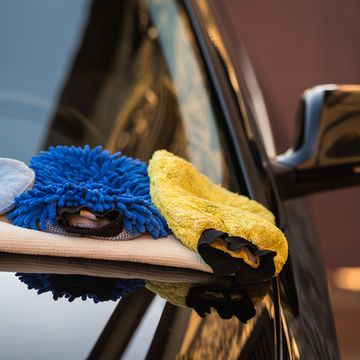
The Best Supplements for Menopause
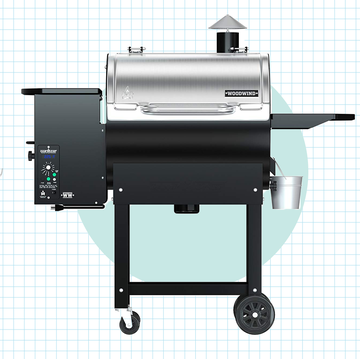
The 7 Best Pellet Grills

Best Garage Door Openers
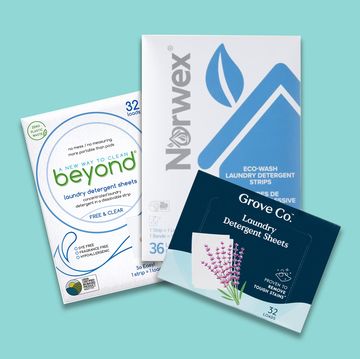
The Best Laundry Detergent Sheets
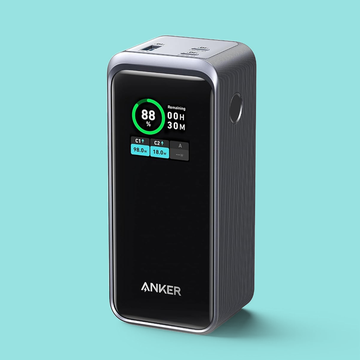
3 Best Portable Chargers

The 6 Best Smart Grills 2024

The Best Sleeper Sofas
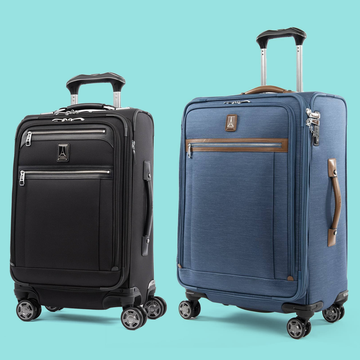
Travelpro Platinum Elite Luggage Review
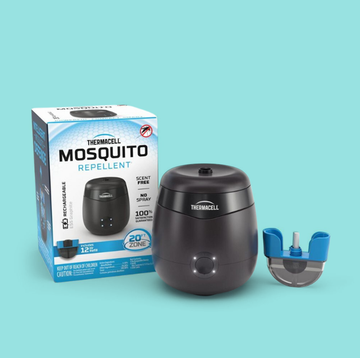
The Best Mosquito Repellents
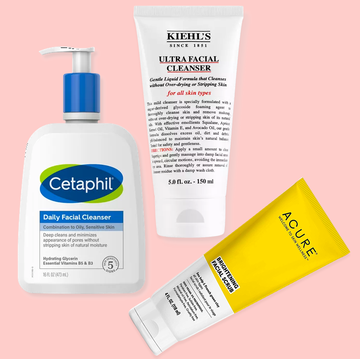
The 10 Best Face Washes for Men of 2024

The Best Toilet Bowl Cleaners
- Cat Behavior
- Health & Care
How to Travel With a Cat: 14 Vet Approved Tips & Tricks
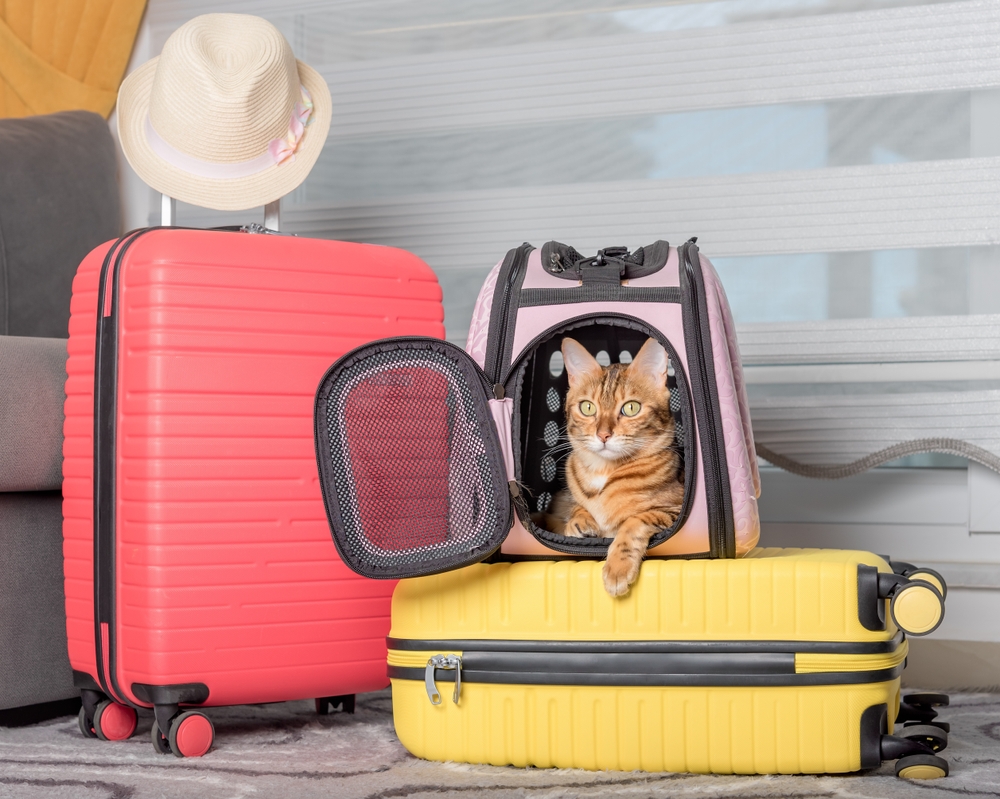
Image Credit: Svetlana Rey, Shutterstock
Last Updated on April 19, 2024 by Catster Editorial Team
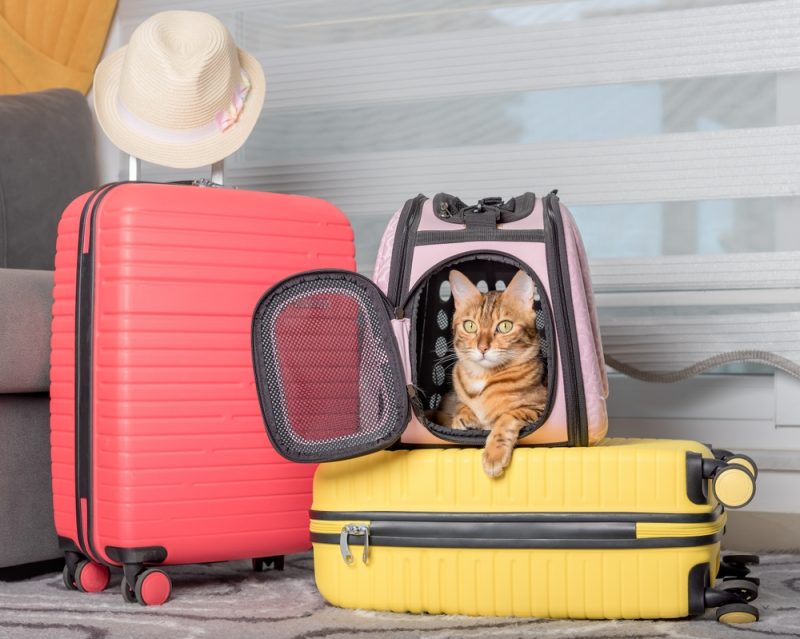
VET APPROVED
REVIEWED & FACT-CHECKED BY
Dr. Amanda Charles
BVSc GPCert (Derm) MRCVS (Veterinarian)
The information is current and up-to-date in accordance with the latest veterinarian research.
Traveling with a cat can be rewarding, but it requires thorough planning. Whether you’re getting ready to drive a short distance and hang out with family or fly somewhere for a relaxing vacation, there are a few factors to consider when traveling with your cat.
Make sure to start the planning process early, particularly if you’re traveling internationally or are going to stay in a hotel during any part of your journey. Below, you’ll find 14 tips and tricks to make your journey with your cat successful.

- The 14 Tips to Travel with a Cat
- 1. Invest in a Good Carrier
Cats should always be restrained when riding in cars, and airports require them to stay in their carriers at all times (except during the security screening process). Airlines have several rules and regulations regarding traveling with pets, including guidelines regarding the size of carriers.
Make sure the carrier you use meets the airline’s regulations and requirements. If you’re driving, the sky’s the limit when it comes to the size of your cat’s mobile palace. Carriers should be sturdy, well-ventilated, secure, and easy to clean. Plastic carriers are usually the best options.
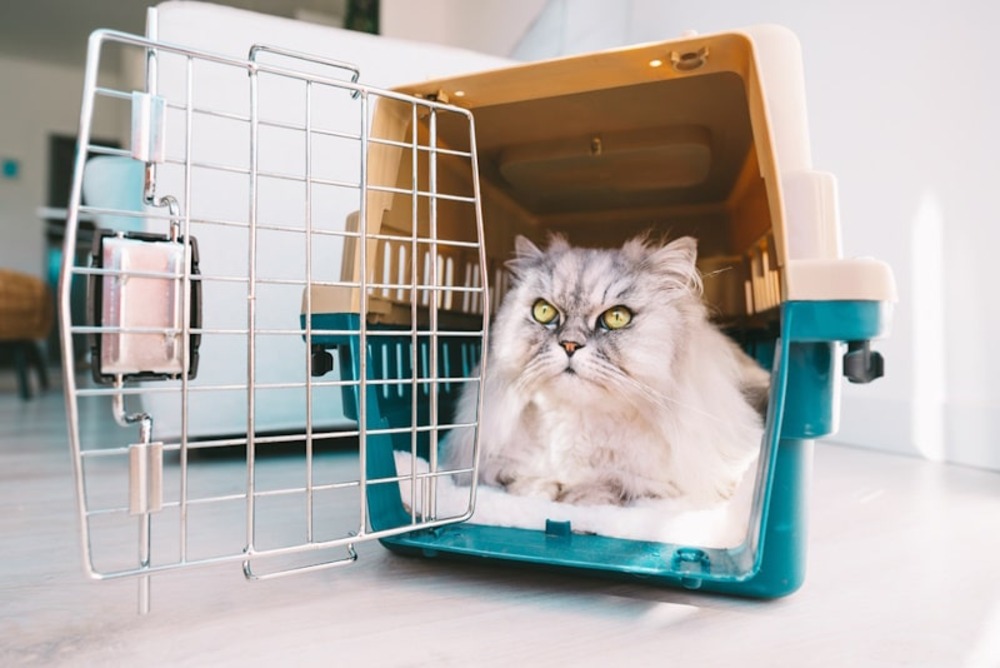
- 2. Give Your Cat Time to Get Used to Their Carrier
Because cats spend so much time in their carriers when traveling, they must feel comfortable in them. Consider leaving your cat’s carrier out so they can get used to it before your trip.
Letting your cat have dinner in their carrier a few times may encourage them to develop positive associations with their traveling home.
- 3. Invest in a Good Harness and Leash
If you visit a rest stop during a road trip, your cat should be harnessed and leashed when they’re away from their carrier to ensure they can’t run off and get lost if they become scared.
Make sure the harness you choose fits properly, and give your cat time to get used to wearing it so they’re ready to do so when you hit the road.
Are you looking for the perfect cat harness? We suggest Hepper's Cat Harness & Leash Set , which includes a nicely designed, machine-washable harness made from soft, sturdy velvet and mesh.

- Escape Proof - Cat leashes and harnesses for walking aren't all equally secure. Our double aluminium...
- Superior Comfort - Our cat harnesses are lightweight, made with premium velvet fabric, breathable...
- Free Extra Strength Leash - You don't need to worry about your cat escaping this harness. This cat...
This harness is easy to put on and take off and features reinforced stitching, reflective stripes, and quick-release buckles. This set also includes a great leash made from durable nylon climbing rope.
At Catster, we’ve admired Hepper for many years and decided to take a controlling ownership interest so that we could benefit from the outstanding designs of this cool cat company!
- 4. Practice Everything
No matter how you’re traveling, your cat must be comfortable entering and exiting the carrier. If you’re flying, you’ll need to take them out of their carrier during the security screening process in the airport.
You can practice taking your cat out of the carrier when you’re around other people to make them more comfortable during the security check. If you plan on driving, consider taking your cat for a few practice rides to get them used to spending time in the car. Make sure to reward them for their cooperation!
- 5. Ask Your Veterinarian for Advice
Some easily stressed cats may benefit from medication to help them stay mellow while traveling. However, sedation isn’t suitable for all cats, and most airlines won’t transport pets who have been tranquilized or sedated.
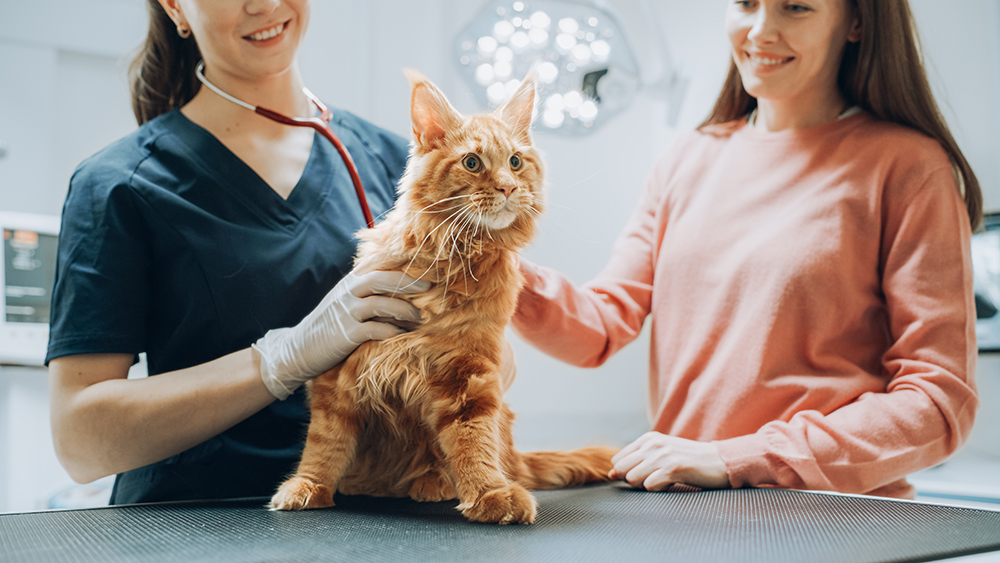
- 6. Have Cleaning Supplies on Hand
Pack a bag with cleaning supplies and plan to have it close at hand while you’re underway in case your cat has an accident and you need to do a bit of on-the-fly cleaning. It’s best to pack paper towels or cleaning wipes, gloves, and baggies for disposal.

- Gentle Care For All Pets - Infused with moisturizing hypoallergenic ingredients & enriched with...
- Deep Cleans From Head to Tail - Tackle the toughest dirt & messes with our extra strong pet wipes...
- Freshness On The Go - Each dog grooming wipes pack contains 30 counts of premium dog wipes that...
It's hard to beat the convenience of pet-safe wipes after a big adventure, between baths, or when cleaning sensitive areas. Our favorite option is Hepper's Wash Wipes, premium wipes designed to safely and gently remove grime from cats and dogs of all ages and sizes. These hypoallergenic wipes are made in the USA and feature moisturizing ingredients to soothe your pet's skin.
- 7. Pack Toys and Blankets
Take a few of your cat’s favorite toys and a well-loved blanket that smells like home to keep them comfortable while away from their territory. Putting a favorite blanket in your cat’s carrier may make being on the road less stressful.
A stuffed toy might look a little different than a traditional cat toy but many felines find them quite enticing. The Hepper Plush Whale serves a dual purpose, featuring a faux fur exterior that mimics prey and a soft interior for cuddling during long cat naps when playtime is over. The best part about it is it's an affordable option for ages, sizes, and conditions. Learn more about why your cat needs a plush here!

- Tailored size even for kittens - the compact size of the whale plush cat toy at 15cm long ensures...
- Catnip Free Cat Toys - Made with top quality plush exterior & cotton interior, it's perfect for cats...
- Peaceful Playtime - No more squeaky cat toys for indoor cats. This stuffed cat toy is perfect for...
At Catster, we've admired Hepper for many years, and decided to take a controlling ownership interest so that we could benefit from the outstanding designs of this cool cat company!
- 8. Consider Portable Litter Boxes
If you’re traveling by car , pack a litter box with some of your cat’s regular litter. Plastic poop bags and a scoop are also essential. If you’re staying at a hotel, check their pet policies thoroughly.
Most hotels that accept cats don’t provide litter boxes and litter. Collapsible litter boxes are ideal for shorter trips and can be folded down and packed.
- 9. Pack Food, Water, Treats, and Medication
If you’re traveling by car, bring enough of your cat’s regular food to keep them happy while you’re away from home. It’s also helpful (and usually mandatory) to pack food and water for your cat while flying, but some cats may be too nervous to eat until you land.
If your cat takes medication, pack enough to last them for your entire trip, and consider putting it in your carry-on luggage to ensure you have access to it even if your checked luggage takes a detour.
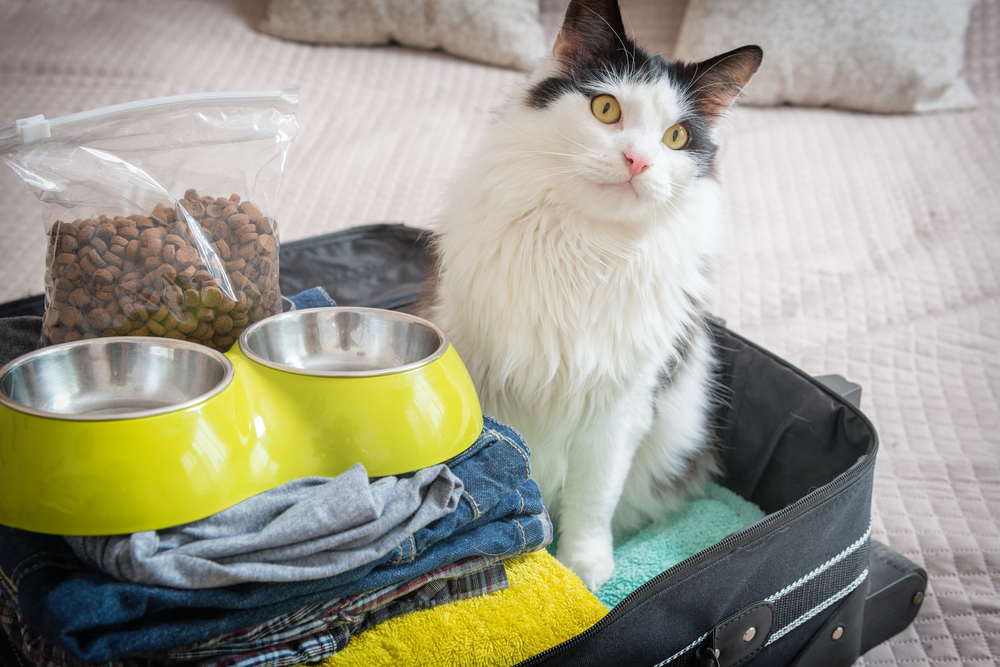
- 10. Consider Pheromones
Commercial synthetic feline pheromone products may help some cats stay calm while underway by reducing stress and creating a sense of safety and well-being. They’re available in sprays and wipes, so your cat can enjoy the benefits of calming pheromones while you’re on the road.
- 11. Check Your Cat’s Microchip Registration
Ensure that the registry where your cat’s microchip is registered has the right contact information. Losing your cat when you’re out of town is a nightmare, but an up-to-date microchip can significantly improve the chances of their return.
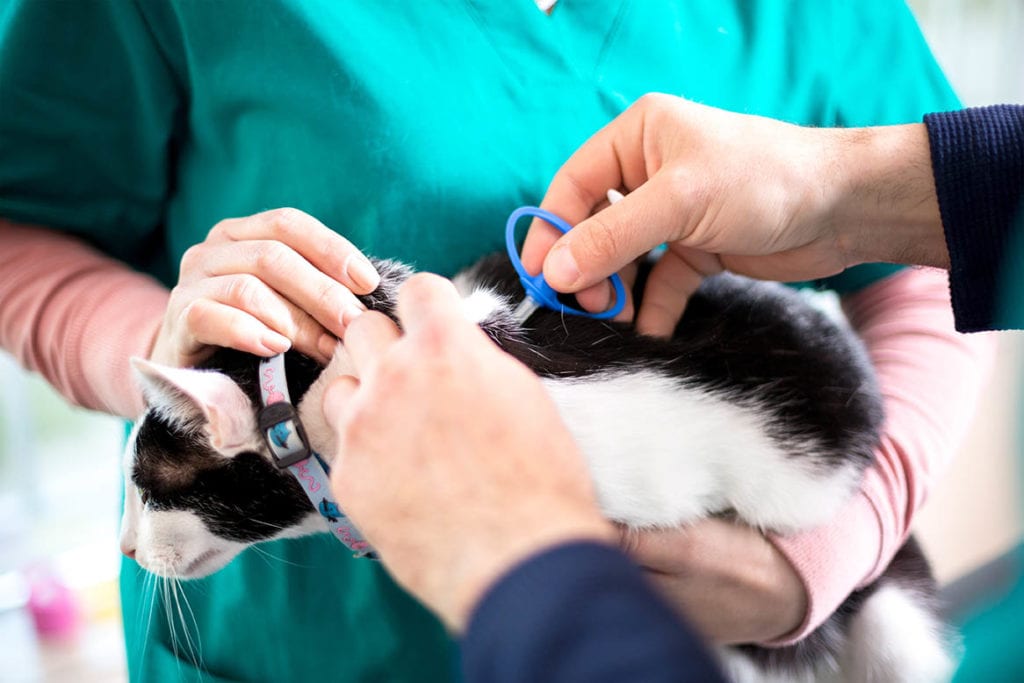
- 12. Collect Your Cat’s Medical Information
It’s vital to collect your cat’s medical information before you plan to leave and make sure you have a way to access it while you’re on the road in case they require veterinary care while you’re away from home.
Ensure you have all the documentation and certificates your cat needs to travel, including their vaccination status. Remember that the requirements vary based on where you’re headed and how you plan to travel.
- 13. Double Check Your Reservations
If you plan on staying in a hotel at your destination, contact the property ahead of time to ensure pets are permitted and get information about the rules and requirements that may apply. Don’t forget to inquire about the availability of litter boxes and food and water bowls.

- 14. Invest in Physical ID Tags
It’s best to attach an ID tag with your name and contact information to your cat’s collar. It will make it easy for people to reach out to you if your cat gets loose and makes a run for it.
Microchips are helpful , but lost cats need to be taken to shelters or veterinarians with scanners for their chips to be read. ID tags make the reunification process far more efficient; if your cat runs off, anyone who finds them can simply give you a call.

Traveling with cats can be stress-free with a bit of planning and preparation. Make sure to get started before you hit the road with your cat , particularly if you’re thinking about flying or staying in a hotel. Also, don’t forget to invest in an appropriate carrier and give your cat lots of time to get used to it.
- Hiking With a Cat: Is It Possible?
- Traveling With Kittens: Essential Tips
- https://vcahospitals.com/know-your-pet/flying-with-your-cat
- https://vcahospitals.com/know-your-pet/road-trips-and-car-travel-with-your-cat
- https://www.petmd.com/cat/care/8-tips-traveling-cat
- https://www.avma.org/resources-tools/pet-owners/petcare/traveling-your-pet-faq
- https://www.aa.com/i18n/travel-info/special-assistance/pets.jsp#:~:text=As%20recommended%20by%20the%20American,cardiovascular%20problems%20at%20high%20altitudes.
Featured Image Credit: Angels Relax CZ, Shutterstock
About the Author
Lorre Luther
Lorre Luther is a writer who is firmly convinced that cats are smarter than humans. She left her law career in the United States and moved to the Netherlands to follow her dream of becoming a writer. Lorre currently lives in Rotterdam, she enjoys traveling and greatly appreciates the beauty of nature. Lorre has a spot for animals and admires the intelligence of cats.

Zumalka Pet Supplement Review 2024: A Detailed Look

10 Pet-Friendly Hotels in St. George, Utah (2024 Update)

Does Health Monitoring Cat Litter Work? Vet Reviewed Facts & FAQ
Get catster in your inbox.

Strange Places That Cats Hide: Olga’s Preferred Spots

What’s That Sound? The Melodious Tones of the Feline Upchuck

Wee!!! More Things to Love About Cat Litter Boxes
© pangolia pte. ltd. all rights reserved..


IMAGES
VIDEO
COMMENTS
5. A crate, car seat, and/or seatbelt are necessary. Safety is important when you're on the road. If you stop short, slam on the brakes, or get into an accident, your dog can get seriously hurt. To protect your dog, make sure to secure them while in the vehicle. For medium to large dogs, try a crate or dog seatbelt.
Once on the road, try and plan mealtimes ahead of time. You'll want to have at least one hour for your dog's stomach to settle before driving again. These are just simple tips, but following ...
Take Frequent Breaks. If you are doing a long road trip with your dog, incorporate frequent breaks (every three to four hours) for pet relief, a short walk, and water. Puppies and senior pets need breaks more often. "I don't find exercise to be overly important, as the car ride is stimulating enough," says Belio.
Make sure the vehicle is cool with fresh air circulating. It also helps some dogs if they can see out of a window — for smaller dogs, consider a booster seat or dog pod. Most dogs travel best with a handful of dry biscuits in their stomach, given 1-2 hours beforehand, rather than traveling with a totally empty stomach.
According to Illinois-based veterinarian Dr. Allison Pepich, your dog needs a rough estimate of at least 1 ounce of water per 0.5-1 pound of body weight. For example, a 30-pound dog would need between 15-30 ounces of water per day at a minimum, but it could be more depending on their fluid losses throughout the day.
Keep your dog hydrated during the drive. Your pup should always have access to fresh water, even during road trips. "Collapsible bowls and a supply of fresh drinking water will help keep your pup hydrated on the road," Block said. Try the SLSON collapsible dog bowls from Amazon for $5.99.
Here are some helpful tips for stress-free car travel trips with your dog. Introduction to Traveling with Your Car Dog Traveling with your pup can be a fun and rewarding experience, but it's important to do your research and plan ahead to ensure your trip goes as smoothly as possible.
Bring a dog bed, a yoga mat, a blanket, or even a foam sleeping pad that you can fold in half. 4. Use positive reinforcement & reward your dog with treats. A well-trained dog is going to be easier to road trip with than a dog that is constantly misbehaving. We've trained our dogs using the positive reinforcement technique.
Take a look at the results of our best dog car seat belt round-up. 11. Hide his eyes or distract the nose. Some dogs simply prefer not to see where they're going. In such cases, it's best to get a ...
Any necessary medications (including monthly meds, such as heartworm or flea medicine) Dog bed. Two to three favorite toys. Dog-safe wet wipes (for messes) An old bath towel (for big messes) Any training tools (clickers, heel sticks, etc.) you plan on using during the trip. Emergency contact info and resources.
Car travel with dogs, especially long trips, requires some forethought. You can't just assume you'll be able to get everything you need for your pet during your trip. 10 Tips for Safe Car Travel.
6. We feed them on their normal schedule and then give them frozen kongs for the car ride. I mix some of their dog kibble with a carrot, some crushed treats with a bit of water. I then freeze the kongs over night. Most hotel rooms have refrigerators and freezers, the dogs love the kongs and it keeps them content. 7.
The owner of Dogletics, a dog training and walking company based in Chicago, is serious about her love of going on road trips with her dogs in tow.So much so, she named one of her two Australian shepherds Haven after her favorite road trip destination of South Haven, Mich., about a two-hour drive from home. On several occasions every year, Lehew loads up her car with 2-year-old Haven and 4 ...
If your dog isn't used to car travel, start with short jaunts to fun places—think a local park or a new hiking trail. It's about making the car a gateway to fun, not just a moving box that leads to the vet. ... Tips for Protecting Your Car on a Road Trip With a Dog. Taking your dog on a road trip can be a blast, but it can also be tough ...
California - Carmel's Dog Beach. Carmel's crowning glory is its magnificent beach. This mile-long stretch of sand begins just steps from downtown and runs to just below the 9th hole at Pebble Beach Golf Course. And it's all pet friendly! Dogs are welcome to romp off-leash on the beach.
2. Introduce your dog to the cage, if you are using one. Present the cage to your dog positively. Allow the dog to sniff the cage before it goes in the car. Once the cage is placed in the car, lock your dog in it. Continue your positive attitude about the cage and walk away from the dog in the cage for several minutes.
These dog-friendly road trip route suggestions are just a starting point, but the best road trips involve spontaneity, so grab your four-legged best friend, a handful of maps, and hit the road. Just be sure to plan the major points of your route ahead of time, stock up on supplies, and prepare to keep your dog safe in the car. Enjoy the ride!
Avoid carsickness by letting your dog travel on an empty stomach. However, make sure they have plenty of water at all times. Keep the car well-ventilated. If the dog is in a crate, make sure that ...
Before we dive into each tip, here's an overview of 7 dog road trip tips: Bring the necessities and essentials. Get their energy out. Provide them with mental stimulation. Take frequent breaks. Find a dog-friendly hotel to stay at. Stop for food/activities. Safety measures. Alright, now let's look at each idea in detail. 👇.
Tips for Leaving Your Dog in the Car (Travel Hack #3) At some point, you will need to leave your dog unattended in the vehicle. It is almost unavoidable, especially if you are traveling solo. There are a few things people do that can really help when you need to leave your dog in the car to use the bathroom, grab something to eat, etc. ...
Consult your veterinarian to create the best travel plan for your dog if he does not travel well. Strategies to de-stress dog road trips include: A Thundershirt® swaddles the dog like an infant is swaddled, and can reduce anxiety. A pheromone calming collar can help reduce anxiety. Medication prescribed by your veterinarian: trazodone (brand ...
Vaccinated dogs are safe for car trips. Make sure your Vet is on-board while planning a trip. For emergency purposes, make sure your luggage can be unpacked easily; any cross country trips with dogcan be a hassle so luggage should be kept at arm's length. Surprises are common in any cross country road trips with dog.
3. Bring Enough Food and Water. It's essential to bring enough food and water for your fur baby. Of course, you might not have to bring food if the trip is short and your dog ate before you left ...
3. Behavioral Management for Car Anxiety - Avoidance of Stressors. For dogs with fear or anxiety, sometimes the best choice is to avoid the stressor altogether. If riding in the car is not the problem, but interacting with other dogs is, select stops on your route that are less likely to involve other dogs.
Acclimate Pets to Vehicle Travel. Not all pets are going to be eager to spend time in the car. Some dogs and other smaller animals can become very stressed and agitated while traveling in a ...
Buy From Amazon. Finding a dog crate for car travel that suits big breeds can be tough, but Lucky Duck makes one of our favorite kennels ideal for medium to large dogs. With a capacity to hold ...
Source: Unsplash. Have a clean-up kit ready: Put together a clean-up kit for your car that includes paper towels, a carpet cleaner, wet wipes and plastic bags, just in case your pet gets car sick ...
Step 2: Get your cat feeling comfortable in the car. Now that your kitty feels better in their carrier, it's time to help them feel comfortable in the car. Here are some steps to help you do that. Pro Tip: Car acclimation is best done with two people … one to drive the car, the other to pet, praise, and treat kitty.
Chamomile: A medicinal herb with relaxing effects in dogs. (And humans, who enjoy chamomile tea.) Passionflower: Also a calming herb used for anxiety and sleep issues. Ashwagandha: Traditional ...
The 14 Tips to Travel with a Cat. 1. Invest in a Good Carrier. Cats should always be restrained when riding in cars, and airports require them to stay in their carriers at all times (except during ...